
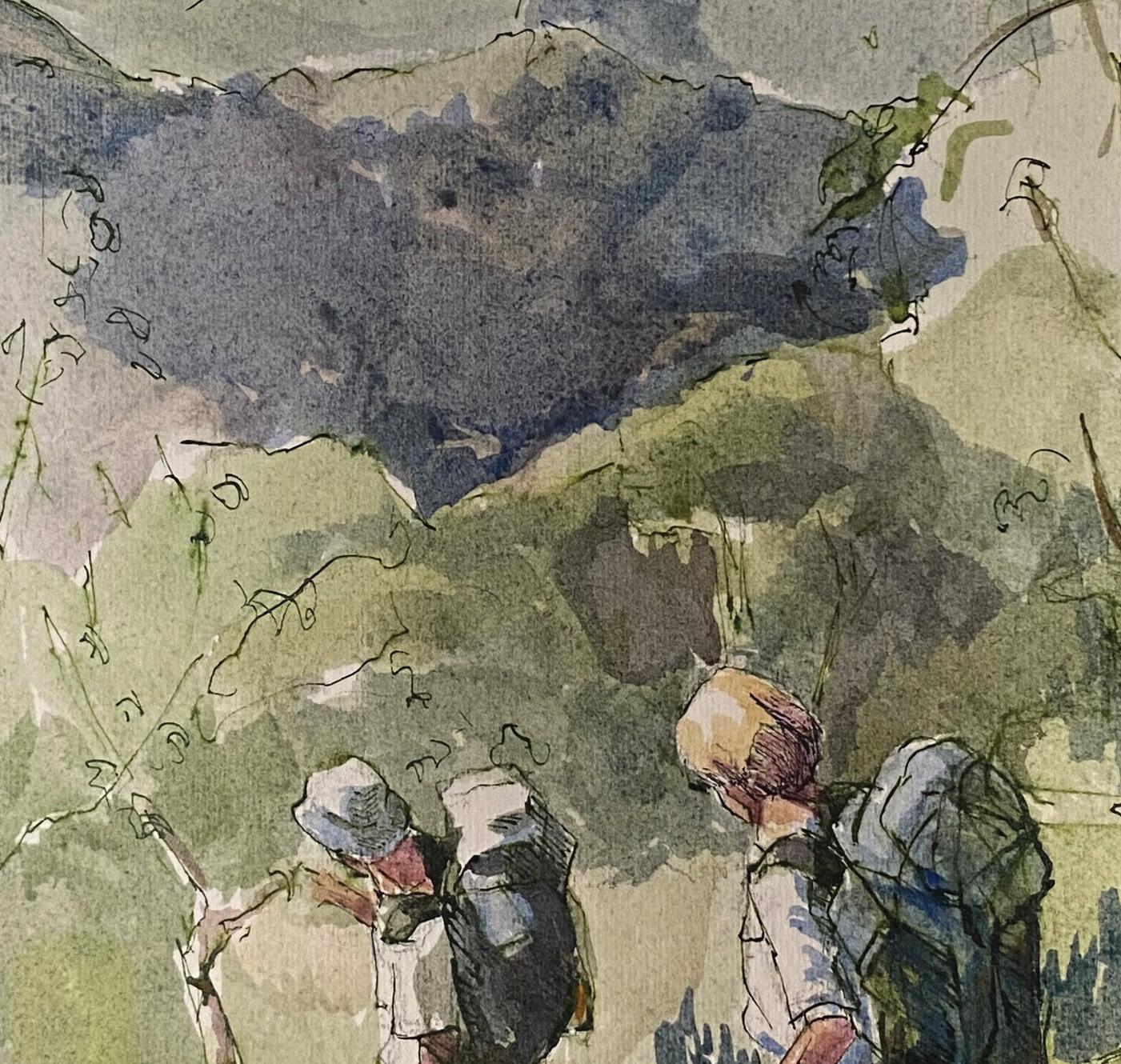
ISSUE 112 SEMESTER 1, 2023
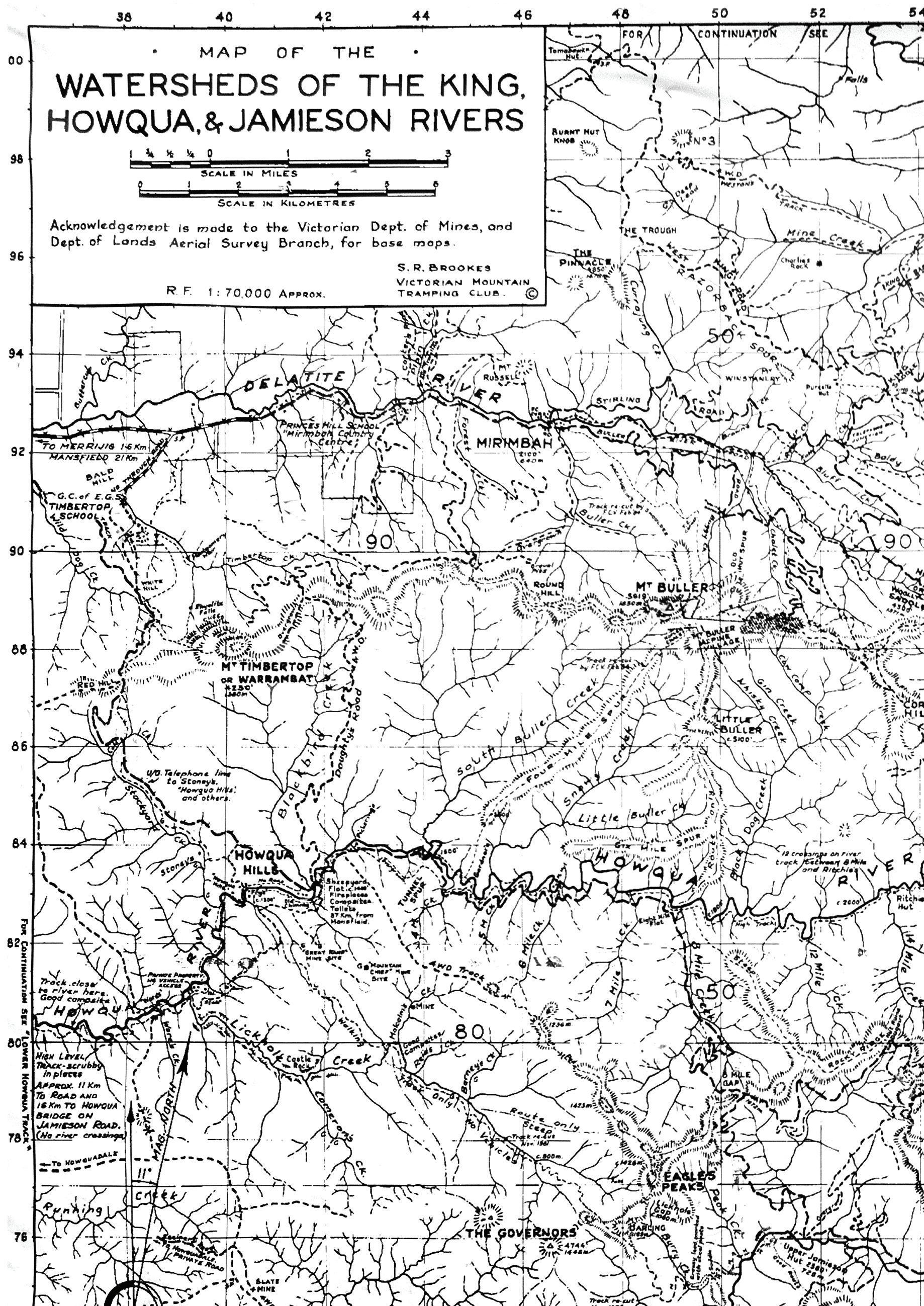
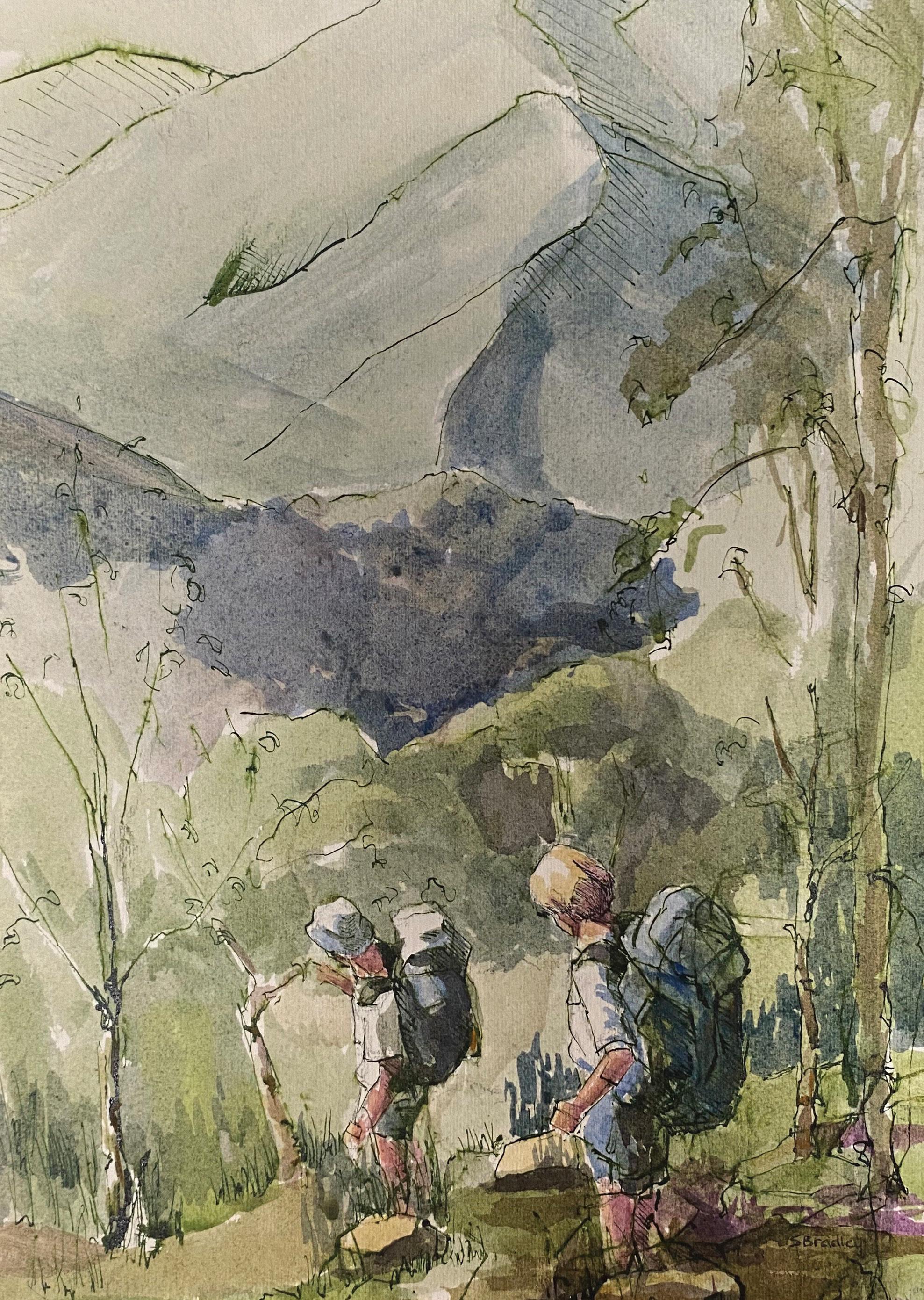
Members of the Geelong Grammar School community have faced significant challenges from the hurt of the past. In recent years, the School has been working to provide an authentic response to survivors of sexual abuse.
Principal, Rebecca Cody, has observed: “I have met with survivors and I am deeply sorry for their pain and suffering: to be sorry though, is not enough; complying with new legislation is not enough – we need to set an example and lead. We need to move forward by recognising the devastating impacts and effects of childhood sexual abuse and by never losing sight of the learnings from them”.
Rebecca said: “Whilst we cannot undo the failures of the past, together we can acknowledge the harm, recognise the pain caused and together, we can support and enable a culture which fortifies against such devastating harms and places child safety at its core. Together, we can make a positive difference towards shaping a better world”.
For survivors, for victims of trauma, for those struggling in challenging times – there are options for reaching out and finding support.
You are not alone – you are a valued member of the Geelong Grammar School community – we are thinking of you, and we care.
Survivor Liaison Coordinator
Renee Handsaker provides outreach and support for survivors of child sexual abuse at the School. Renee can be contacted by phone on 0414 299 142 or by email: renee@sustainingconversations.com
Independent Counsellor
The School continues to provide the services of an independent counsellor, Pauline Ryan. This service is available to those in our community wishing to access counselling or support regarding abuse. Pauline can be contacted directly during business hours by calling 1800 799 139.
Healing & Hope
Healing & Hope is a unique initiative which has been established to endeavour to relieve the suffering and to provide practical comfort, assistance and support to survivors of child sexual abuse and victims of trauma within our Geelong Grammar School community, both past and present. To find out more please visit www.healingandhope.org.au, call or text 0438 561 747 or email: contact@healingandhope.org.au
Editor
Brendan McAloon
Design

Chloe Flemming
Kate Noseda
Claire Robson
Photographers
Peter Dickson
Stef Driscoll
Mike Dugdale
Nick Fletcher
GM Photographics
Photographer London
Drew Ryan
Reg Ryan
Special thanks to past
Timbertop staff and students
Contributors
Sophie Church
Nick Sculley
Website www.ggs.vic.edu.au
Email lightblue@ggs.vic.edu.au



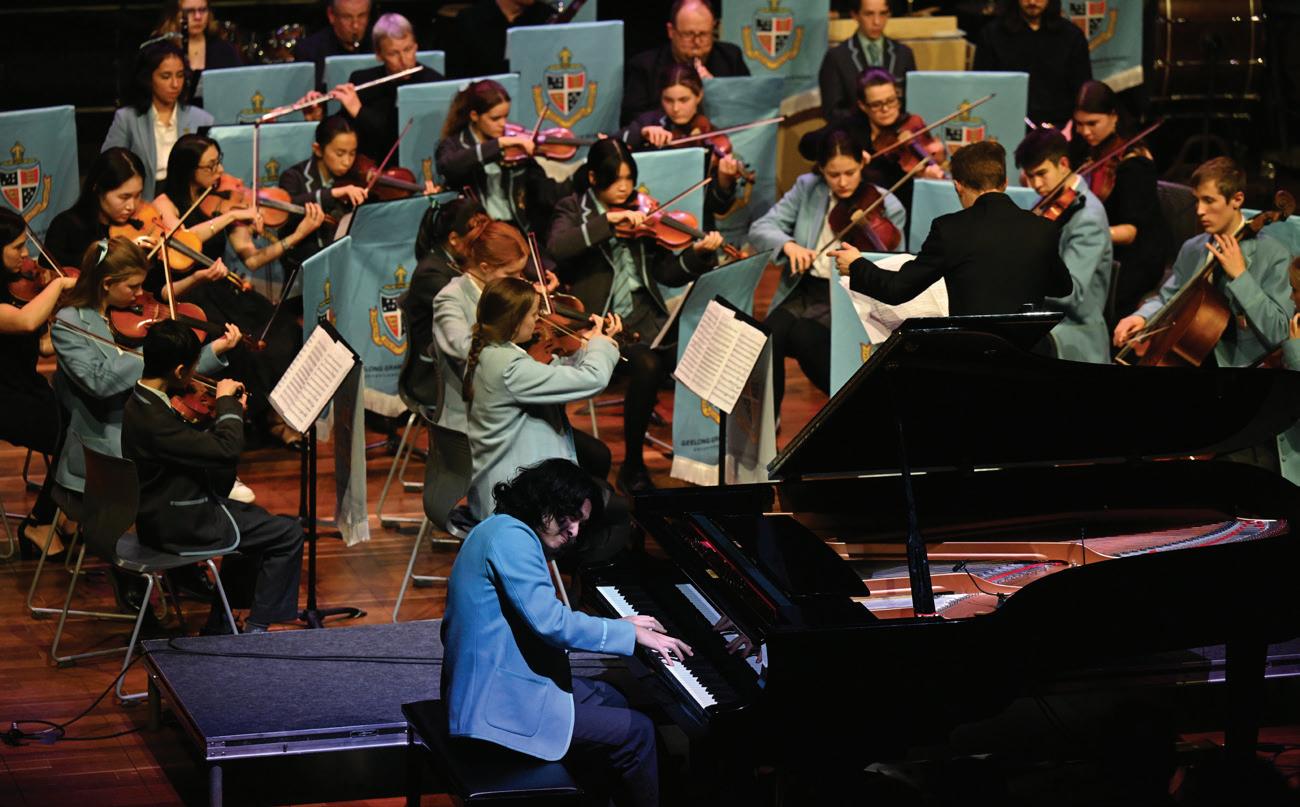
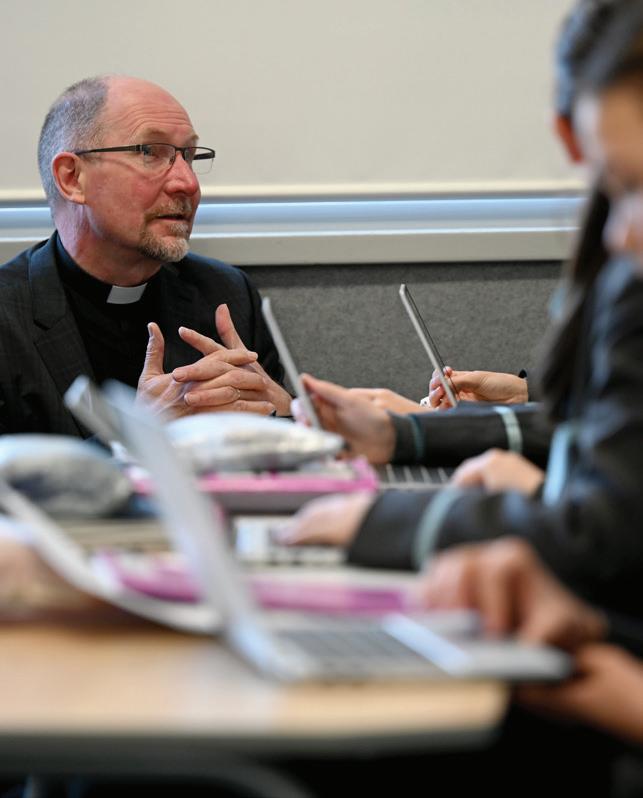


PRINCIPAL’S PERSPECTIVE CHAIR OF COUNCIL TIMBERTOP AT 70 TIMBERTOP THROUGH THE DECADES 32 SPORT: ROWING 34 SPORT: CRICKET 36 POSITIVE EDUCATION 38 BOSTOCK HOUSE 28 A SPORTING FAIRYTALE 29 TOORAK CAMPUS 30 MUSICAL EXPRESSION 40 TEN YEARS ON 42 FOUNDATION 48 MAILROOM 40 30 14 19
Est in Nobis
Through observing a handful of student experiences this Semester, a selection of childhood and adolescent memories stirred visceral responses within me. Wondering why these flashbacks were so poignant, the result was a surge of empathy for our young people and a fervour to support them. Strangely though, with these examples at least, there was not even a moment of temptation to protect our youth from the struggle.
Oftentimes, ‘struggle’ is associated with ‘pushing through’, and physical challenges are cited as ultimate examples of ‘breaking barriers’ or ‘stretching’ to develop. As Paul describes in his letter to the Corinthian Church:
We are afflicted in every way, but not crushed; perplexed, but not driven to despair; persecuted, but not forsaken; struck down, but not destroyed…
(2 Corinthians 4)
This is understandable: the satisfaction of climbing the mountain helps us recognise that we can overcome obstacles; this is a commendable feat. Whilst there is much to be celebrated about this kind of learning, sometimes the greatest mountains are within us. These mountains are not always visible.
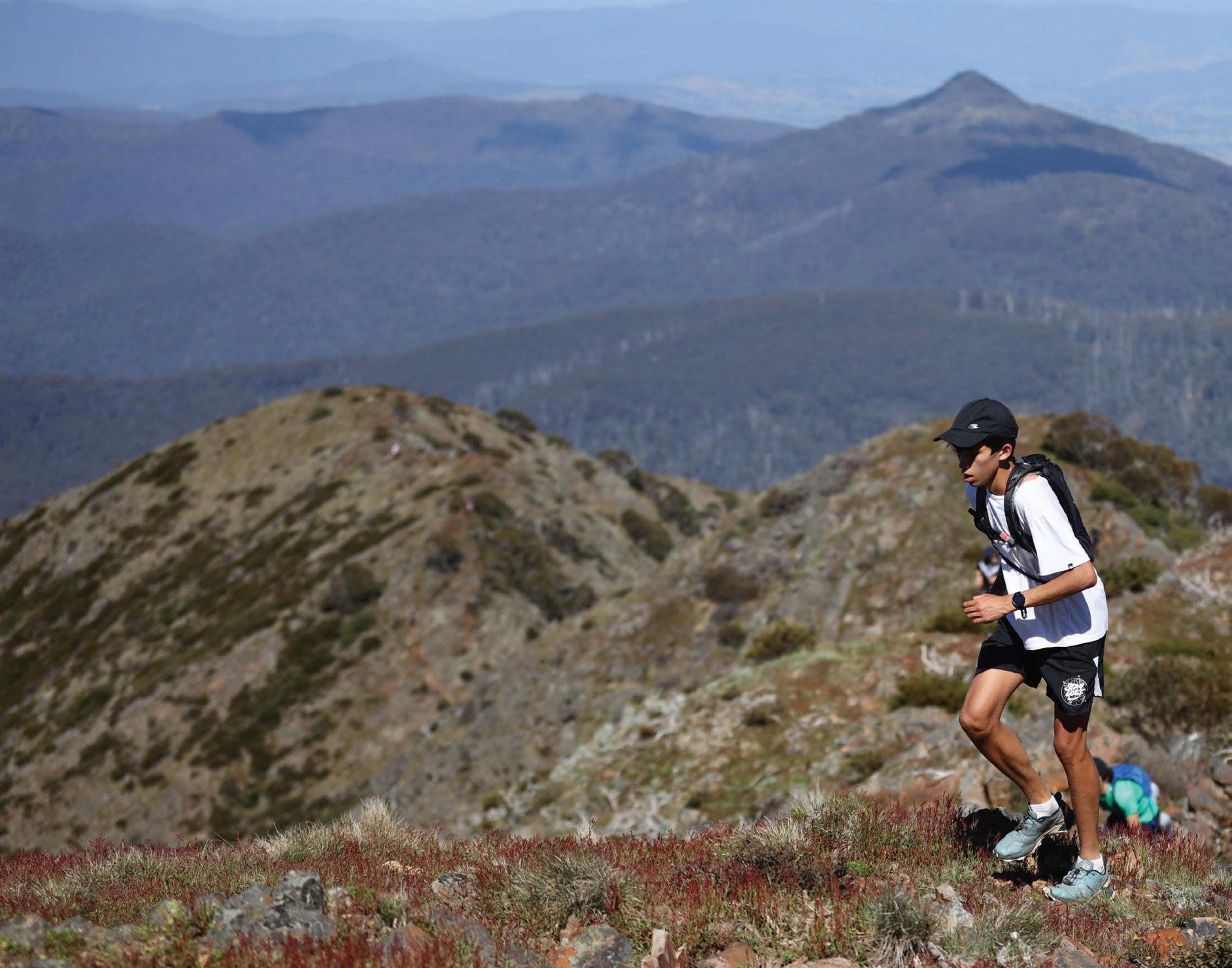
There are usually times across our formative years when it is a struggle to not lose heart. Disappointment can abound as we find our way –intellectually, physically, socially, emotionally, and morally. With the benefit of age and hindsight, there’s a clarity that this is all part of growing.
The etymology of ‘growing pains’ describes joint and limb aches experienced by youngsters who are changing rapidly. The now figurative usage of the term can be an apt commentary, especially as bodies, minds and hearts start to encounter shifts that may seem beyond an individual’s locus of control. Adapting can feel tender, with true transformation demanding courage.
Courage, dear heart. (C. S. Lewis)
In guiding transformational learning experiences, a great deal is asked of teachers in 2023. Whilst our classroom climates may appear radically different to the Geelong Grammar School of 168 years ago, I propose that much too remains the same. This is not a reference to facilities, desks in rows or the rituals of raising hands; rather, my reflection speaks to the heart of a teacher; a heart that is suitably fortified by courage.
It takes courage to set an example, and to consistently comfort and champion a young person along steep and rugged pathways. Exceptional teachers unearth strength in others, especially through periods of endeavour, failure, and danger. These are the adults who help us tread rejoicingly as we find our voice and agency, and who ultimately lead us towards wise choices.
SECTION 0 1 — INTRODUCTION 6 LIGHT BLUE - GEELONG GRAMMAR SCHOOL ↓
PERSPECTIVE PRINCIPAL’S
There is more in us Magis
The Timbertop Hymn
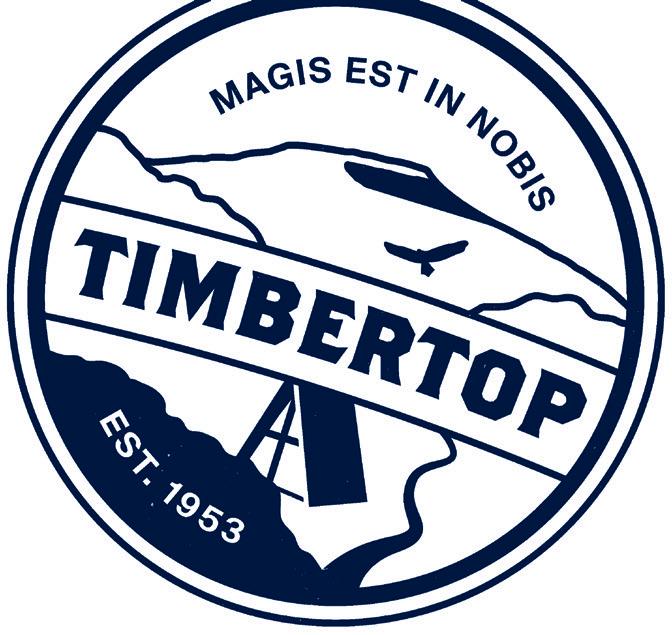

Father, hear the prayer we offer: not for ease that prayer shall be, but for strength that we may ever live our lives courageously.
Not for ever in green pastures do we ask our way to be; but the steep and rugged pathway may we tread rejoicingly.


Not for ever by still waters would we idly rest and stay; but would smite the living fountains from the rocks along the way.
Be our strength in hours of weakness, in our wanderings be our guide; through endeavour, failure, danger, Father, be thou at our side.
There is more in us than we know. If we could be made to see it, perhaps, for the rest of our lives we will be unwilling to settle for less. (Kurt Hahn)
Arguably, the quintessential outcome of an educator’s work is character development. This is uniquely complex labour that aspires to engage a young person’s head (thinking), heart (feeling) and hands (doing). Such experiences provide for skills to become part of more comprehensive capabilities, all within the context of a curriculum augmented by challenge and choice. The aspirations embedded within this outcome are responsive to the diverse and expansive needs of human beings; indeed, uplifting human capacity builds a stronger, more resourceful, and purposeful nation; it really does matter who guides us in our wanderings of youth. At Geelong Grammar School and beyond, we need people who can ‘teach’ that there is more in each of us that can be known –
Magis Est in Nobis
Rebecca Cody Principal
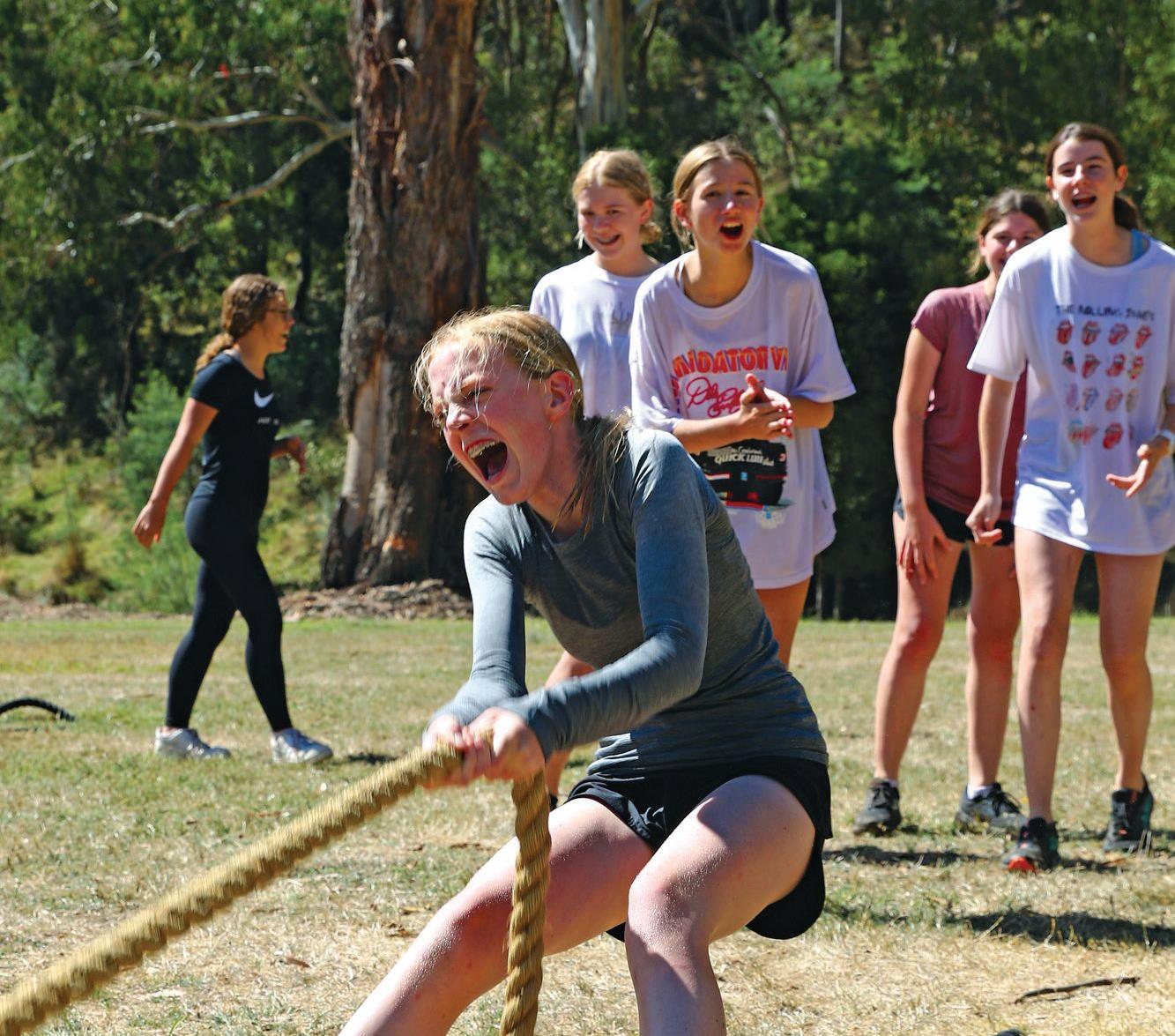
7 LIGHT BLUE - GEELONG GRAMMAR SCHOOL
CHAIR OF COUNCIL


Timbertop, 1970. Seared into my memory is the sight of my parents driving away in Dad’s beloved Holden Monaro in a swirl of dust. They had just left (or dumped, depending upon your perspective) their 15-year-old city boy in an isolated, fly-ridden site on the side of a mountain to live in the basic accommodation of a shared dorm with 13 other boys. My immediate thought was ‘how the heck am I going to get out of here and back to my comfortable existence in Melbourne?’.
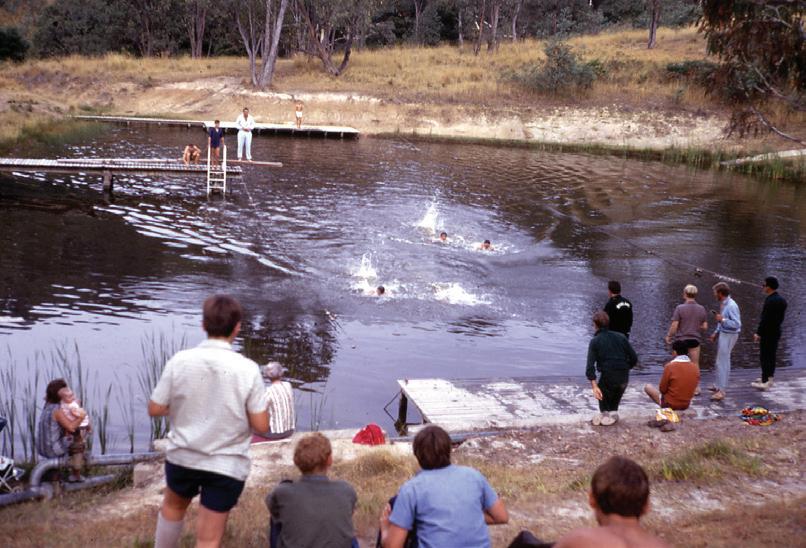

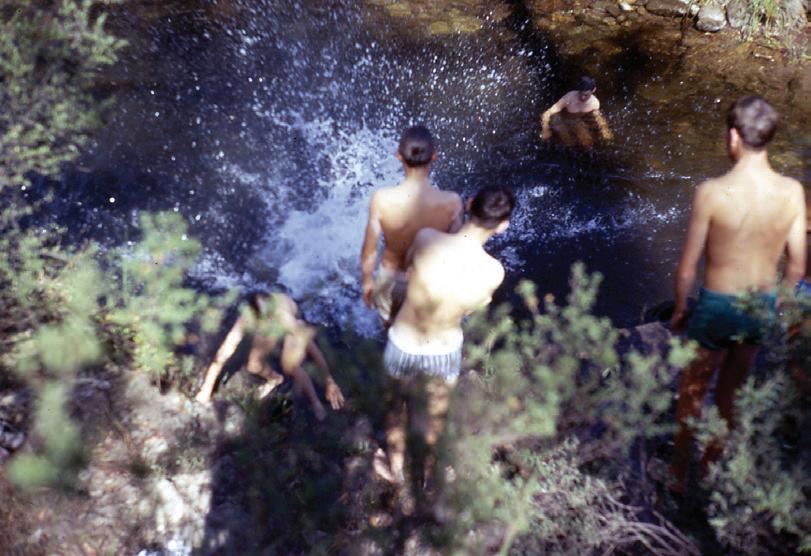
I’m unsure whether my parents pulled up along the drive, as many parents do, to chat about what they had just done and, perhaps, shed a tear. I think not; my parents were focused on what was best for their children in the long run and sending me to Timbertop was part of this plan. Once I had accepted that I wasn’t heading home anytime soon, I settled into making the best of what I saw as a bad lot. Somewhat foolishly, I still had an eye on the distant prize of returning to Melbourne.
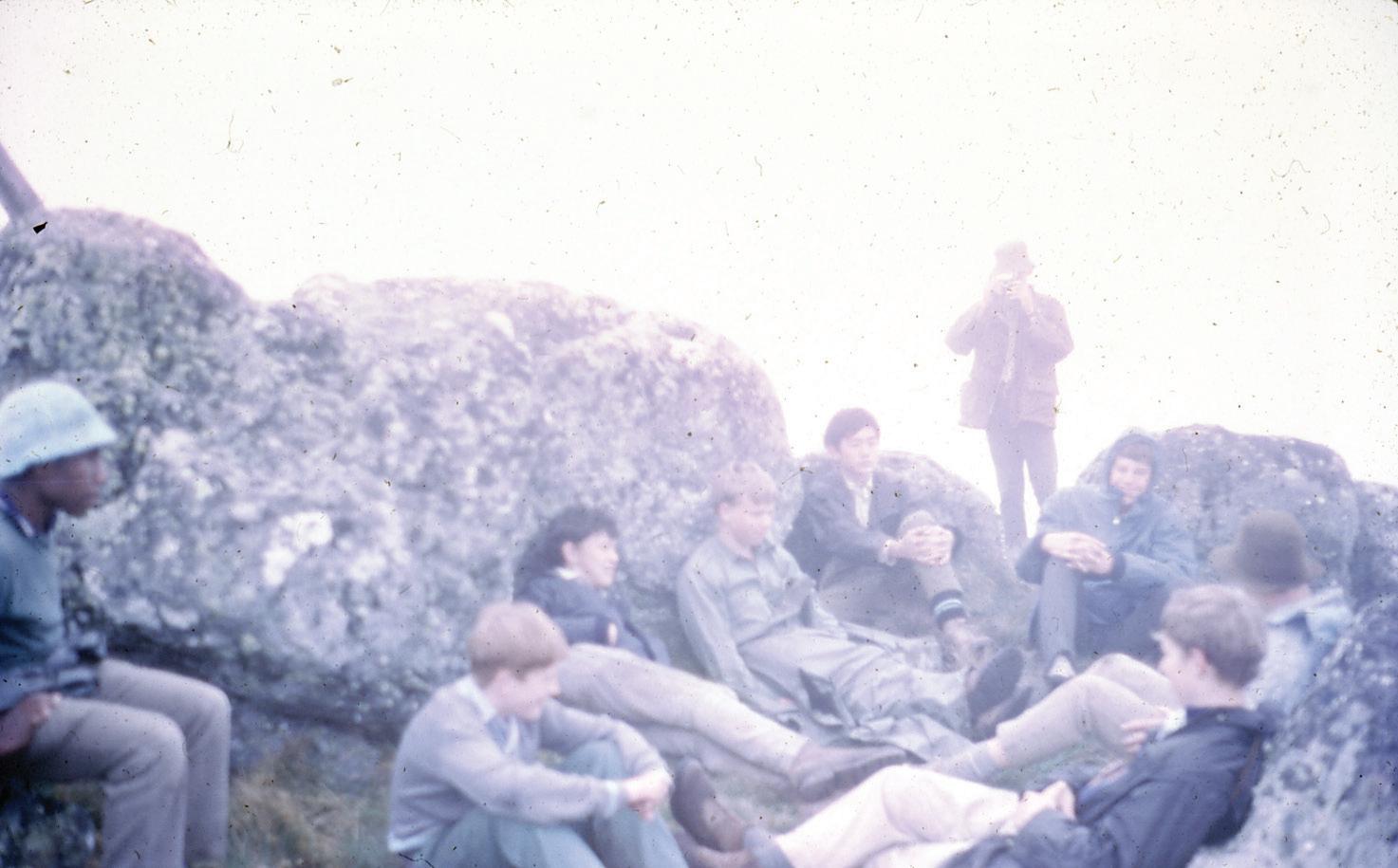
That year at Timbertop was fairly basic compared to the current activities. We hiked each and every weekend. It was as simple as letting the staff know of our intended hike route and we strode out into the bush on Friday afternoon, returning on Sunday afternoon. There were no check-in points. Understandably, this meant a few shortcuts were taken, often a lazy weekend
fishing by the Delatite River. The monotony of leaving the School via a couple of routes to get to our designated hiking goal was tiring and, unfortunately, some of those wonderfully adventurous further-out hikes were beyond me.
Nowadays, Timbertop has developed into an even more wonderful year with the exceptionally adventure-focused staff ensuring that each student gets the opportunity to make the most of the experience and to discover much about themselves. The use of 4WD vehicles to get students out to the further away hike routes, the ski season at nearby Mt Buller, winter expeditions to the Bogong High Plains, ski trips to Mt Stirling, and many other outdoor activities that are available take place while maintaining the basics at Timbertop –students still have to cut firewood, still have to keep the boiler going if they want hot water, and still have to clean their unit and take turns on ‘slush’.
I don’t recall ever hearing or reading the Timbertop motto, Magis est in Nobis, but it makes clear sense in so many different ways for all former Timbertoppers. For me, I never imagined that I could live in a dormitory with 13 others, share a communal shower, live away from home comforts, run up a mountain, complete a marathon, live without a nearby milk bar, and hike all weekend long. To my surprise and later, personal satisfaction, I did.
My immediate thought was ‘how the heck am I going to get out of here?’
The combined efforts that are required to achieve are an elemental part of Timbertop life: working together in the unit to ensure we had hot water, working as a team to ensure that all chores were completed quickly, that the unit was clean, and learning to work collaboratively on the hikes. I learned the hard way by being in a unit of only six other people (our lot for disciplinary reasons!), including having to compete in the unit challenge of a logcarrying cross-country race. For the record, we didn’t disgrace ourselves, but it was plain hard, grinding work.
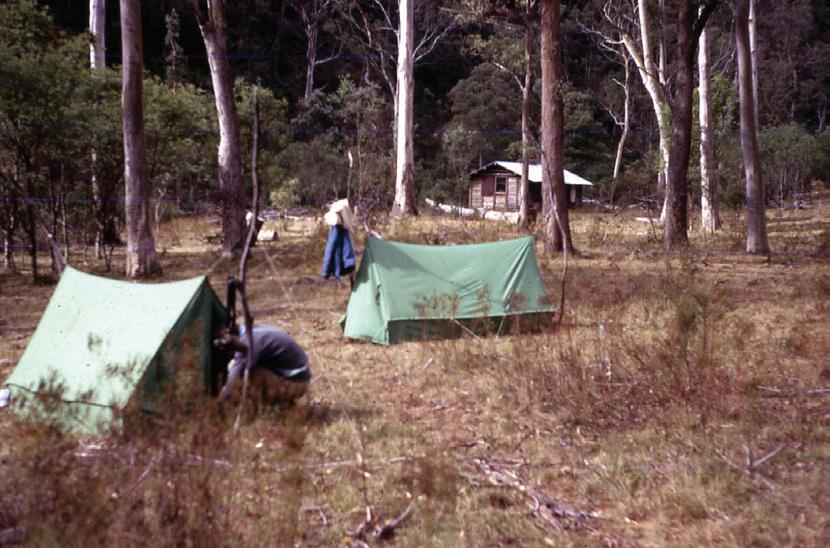
Some of us were drawn into all sorts of pranks along the way. These ranged from dead snakes being placed into beds, building taboo tree houses, signing other students’ cross-country record cards, taking short cuts on the runs (only to get lost and having to run even further to get back on track) and smoking cigarettes in the boiler room or showers thinking the staff would never find us out. There were many members in my Timbertop year who knew exactly what they had been
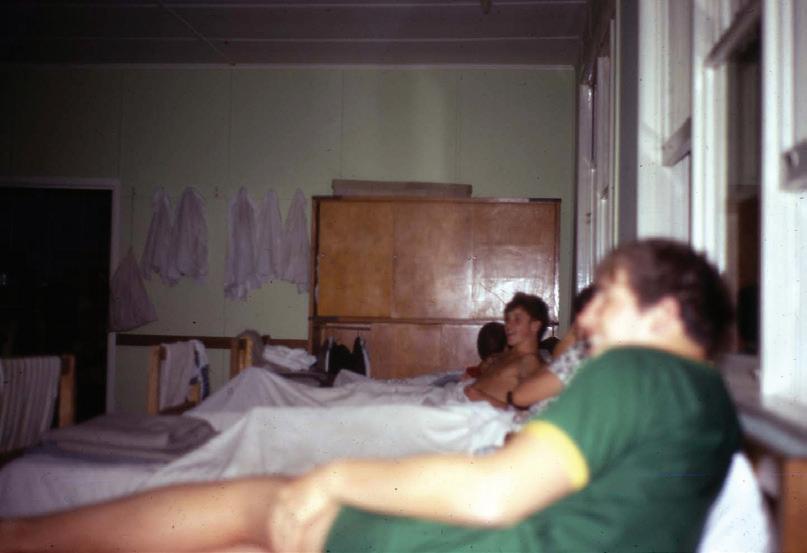
presented with. The grabbed it with both hands. They cherished every moment. I wasn’t often among them. But I now know that that the former stance is a strong feature of the Timbertop year.
Blissfully unaware at the time, we students were slowly being crafted into a resilient, determined, respectful, considerate and, I hope, compassionate group. Timbertop obviously didn’t do all the ‘crafting’ work, but it certainly helped to play a vital part in building on what our parents had already begun and achieved. For me it explains in part my determination to undertake ironman triathlon events, exerting myself for 11 hours non-stop to achieve a defined goal.

So, despite my ignorance at the time, I must have grown to believe in the concept of Timbertop and accept there is more in us than we know. While I didn’t overly enjoy my Timbertop year at the time, my wife Helen (Godfrey, The Hermitage ’73) and I agreed to send our four children to Timbertop when their time came, and


then on to Corio. They each had differing, positive and challenging experiences. But I remain sure that they, like me, will reflect over time and understand that Timbertop was a significant year in their lives and played a role in them becoming the able adults they are today.
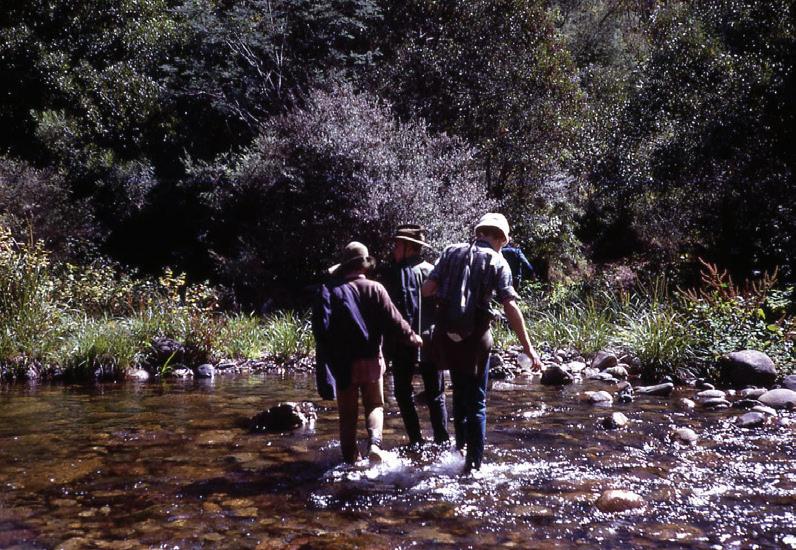


Importantly, as it was in my time, today’s students leave Timbertop having forged lifelong friendships established across all the campus activities on offer. For me, 53 years on, my friendships, too, remain. Many other 1970 Timbertoppers continue to push themselves with a determination to succeed, be it in physical endeavours, like hiking, running or rowing, in their work careers, in their relationships and more broadly in all aspects of a positive, meaningful life. Perhaps the lessons learned at Timbertop are not easily forgotten, and former and current leavers are still finding out that there is more in us than we know

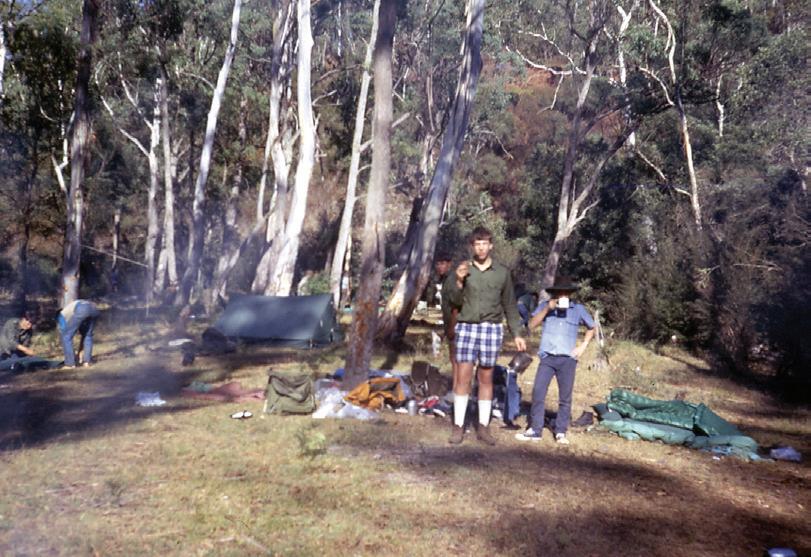
 Paddy Handbury (M’72) Chair of Council
Paddy Handbury (M’72) Chair of Council
Timbertop at 70

“On the way along the Buller road, Mr Ritchie said there was one more spot worth looking at. We drove up the old Howqua track, climbed through the fence near where the present back gate is, and immediately fell in love with the area. It was a beautiful valley full of trees that had been there for a long time, and at the bottom of the valley was the lovely, small, bubbling Timbertop Creek.”
Like Hugh Montgomery, first Head of Timbertop, most people do not forget the first time they set eyes on Timbertop. Montgomery’s description of finding the site in 1951 cannot be read without experiencing a tingle of anticipation for all that was to come in the seven decades ahead: tent classrooms, building the chapel, milk delivered in churns from Klingsporn’s farm, a flying fox across the Delatite, handmade skis bent into shape in the steam from the kitchen vent, a vast new dining room, the Darling Huts, new units among the old ones, the first girls, exhausted hikers, exhilarated runners, and so many final sunsets on top of Bald Hill.

The world has changed exponentially since Timbertop opened in 1953. In that year, Stalin died, Queen Elizabeth II was crowned, Edmund Hillary and Tenzing Norgay summited Everest, the Korean War ended, and Francis Crick and James Watson announced their discovery of DNA. In Australia, television had not yet arrived, Nat King Cole was top of the airwaves, and rock ’n’ roll was about to hit our shores. Far removed from these world events, in the foothills of the Victorian Alps, 35 boys, four teachers and two cooks formed the first cohort of Timbertoppers, and an extraordinary educational experiment began.
The plan for Timbertop was first announced to the school community on Speech Day, 1951. Geelong Grammar School was, at that time, weathering a perfect storm of post-war inflation, the lingering effect of fixed school fees under wartime controls, inadequate staff salaries, rising costs, and overdue maintenance of facilities. Boarding houses were overcrowded with the extra enrolments necessary to balance the books. In practical and economic terms, Headmaster James Darling’s idea to open a bush campus relieved some of the pressure at Corio but the idea itself was driven by altruism, not realism. “The theory of Timbertop was this: that adolescent boys could better develop by themselves, out of the usual school machine. Placed in a different and less clement environment, they should undertake responsibility for themselves and be given the challenges of something like a man’s life under conditions which they had to conquer,” explained Darling.
An adventurous spirit had long characterised Geelong Grammar School, reaching back to the nineteenth century days of ‘Saturday parties’ – when boys were encouraged to roam free in the bush – during the Headmastership of John Bracebridge Wilson. Under Darling, during the war years, the boys undertook national service, completing tasks such as constructing buildings within the local community and making furniture for the Red Cross. Darling encouraged the development of practical and useful skills, especially to give purpose to those who were neither scholars nor athletes. In conceiving Timbertop, Darling harnessed the mind-expanding stimulation of natural exploration and the dignity of manual labour, and delivered it to children at exactly the stage that he believed would be of most benefit: puberty. Kurt Hahn, the founder of the Outward Bound movement in the UK and of Gordonstoun School in Scotland, had written something that had set Darling thinking: “You can preserve a child’s strength, the undefeatable spirit, the power of compassion, the eager curiosity, the joy of movement – on one condition: that you kindle on the threshold of puberty, and subsequently sustain … the zest for building, the craving for great adventure, the joy of research, the love of painting, music or writing, the devotion to any skill demanding care and victorious patience.”

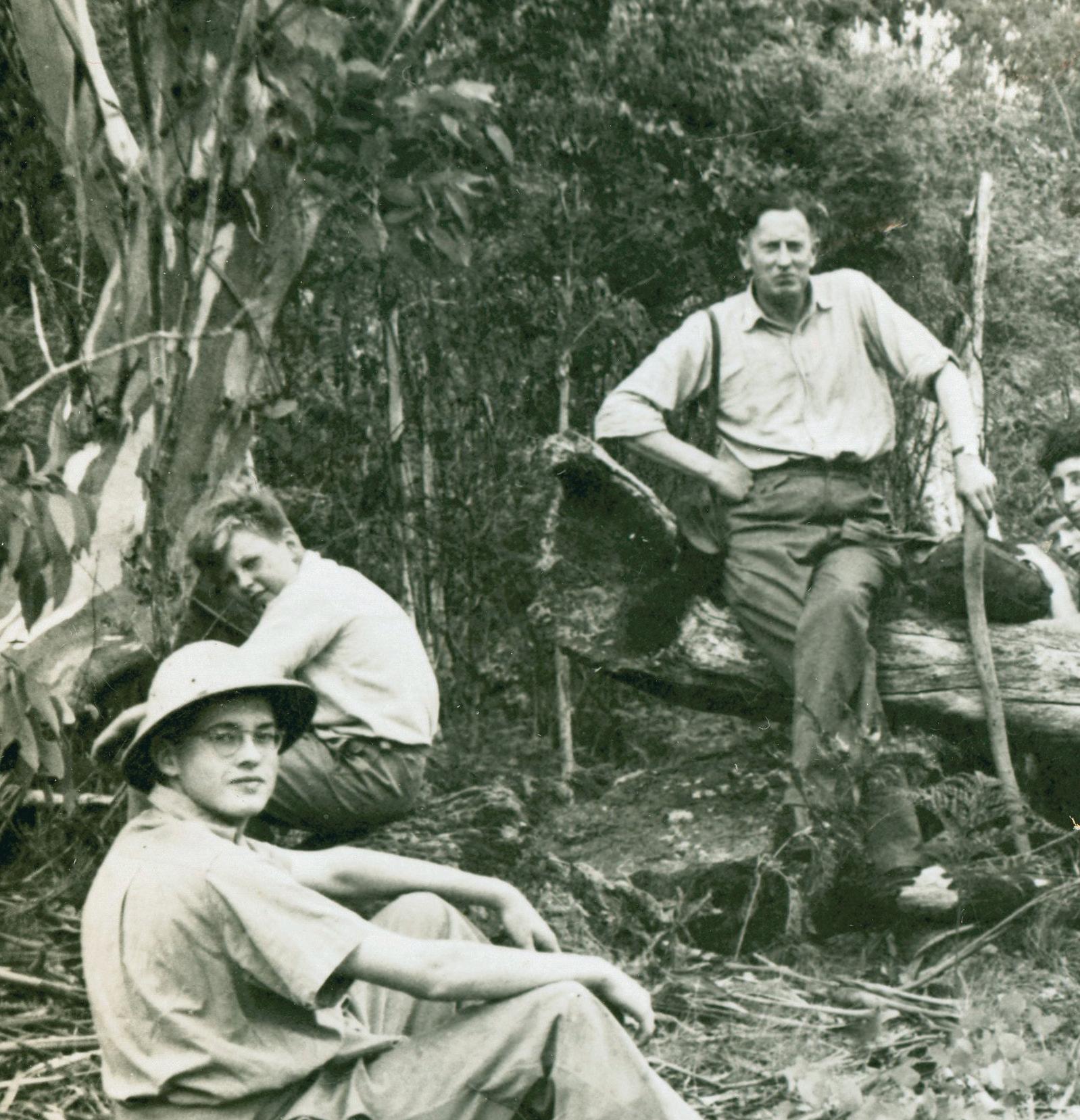
Darling could not possibly have envisaged that Timbertop in the twenty-first century would also offer adolescents something unique and valuable, the opportunity to live without digital technology. Having the freedom to find yourself in the mountains, without the pressures of social media, and the space to think creatively, without the lure of Netflix, is a precious commodity. In today’s world, Timbertop is a change of pace where face-to-face interactions are normalised, and endless scrolling is replaced by slow page turning. It is confronting to communicate with family and friends only by handwritten letters – something entirely normal to a student of the 1950s – and to deal with prolonged absence from home comforts.


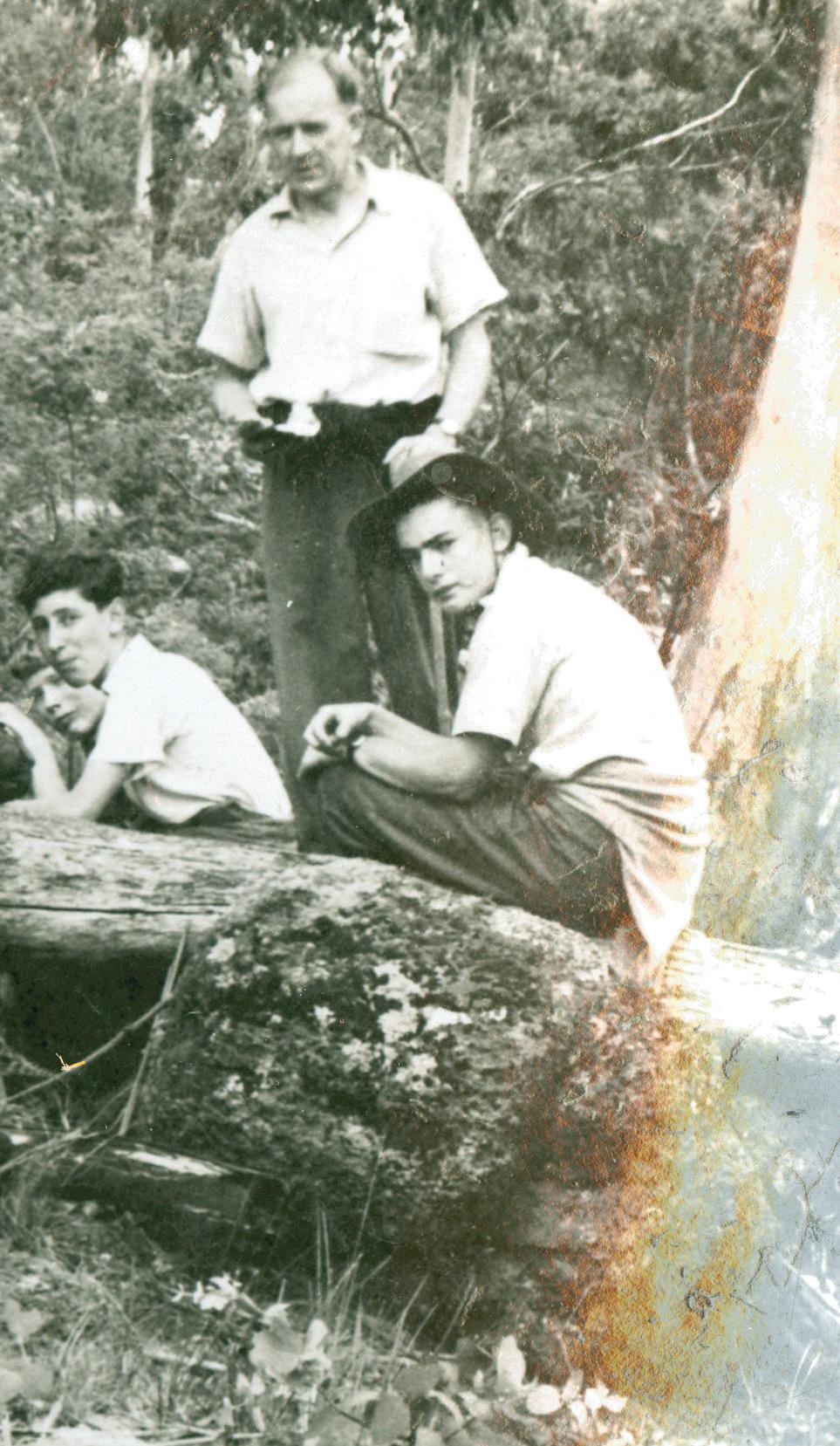
Timbertop’s timelessness is perhaps the secret to its success. Put a group of ex-Timbertop students from every decade in a room and they will soon be sharing stories of unit raids, hobbies, chapel dashes, slush, woodsheds, Buller Roads, hiking West Ridge, swimming in the dam, and running that end-of-year marathon. The experience of sharing a common life, even if not simultaneously, has forged a large and bonded community that transcends generations. For almost 50 of Timbertop’s 70 years, girls have shared in this bond. When the first girls arrived in 1976 it was thought that concessions must be made, and the girls’ units were
fitted with curtains and carpets, and gas-fuelled boilers. After the first few years, the girls insisted on equality, the basic premise on which Timbertop works. They showed that gender is irrelevant to the challenges of Timbertop: the lack of privacy, strenuous physical activity, short and sometimes cold showers, isolation from family and friends, regimented living, dangerous wildlife, and extreme climatic conditions. Timbertop is not for everyone.

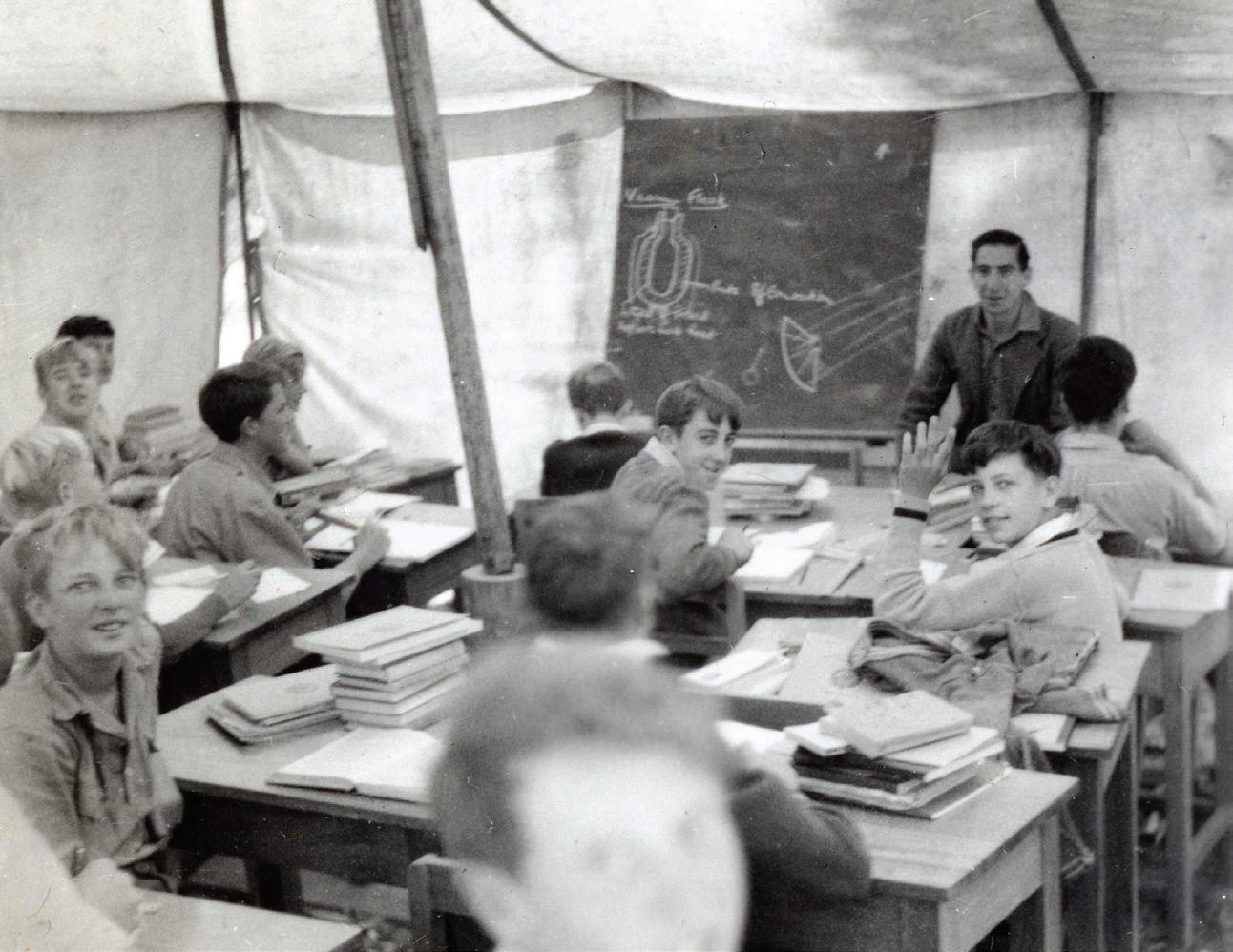
“To abandon Timbertop or to meddle too much with its character would already be to assault a much-loved tradition,” wrote Darling in 1967. But at Timbertop, for everything to stay the same, everything has to change. Risk compliance, pastoral care, meeting nutritional needs and educational benchmarks are all vastly more complicated than 70 years ago. Processes and infrastructure must be constantly assessed and adapted. Preserving Timbertop’s inherent and unique character over the next 70 years is the challenge for the staff and students who will tread the steep and rugged pathway, mostly rejoicingly, sometimes begrudgingly – but always memorably.
 Sophie Church School Historian
Main Photo: Sir James Darling (Headmaster 1930-61) and a small group climbed Mt Timbertop on Good Friday, 1952, including David Griffith (FB’52) in pith helmet (far left).
Photo: Peter Pockley (Ge’53)
Sophie Church School Historian
Main Photo: Sir James Darling (Headmaster 1930-61) and a small group climbed Mt Timbertop on Good Friday, 1952, including David Griffith (FB’52) in pith helmet (far left).
Photo: Peter Pockley (Ge’53)
Timbertop through the Decades s
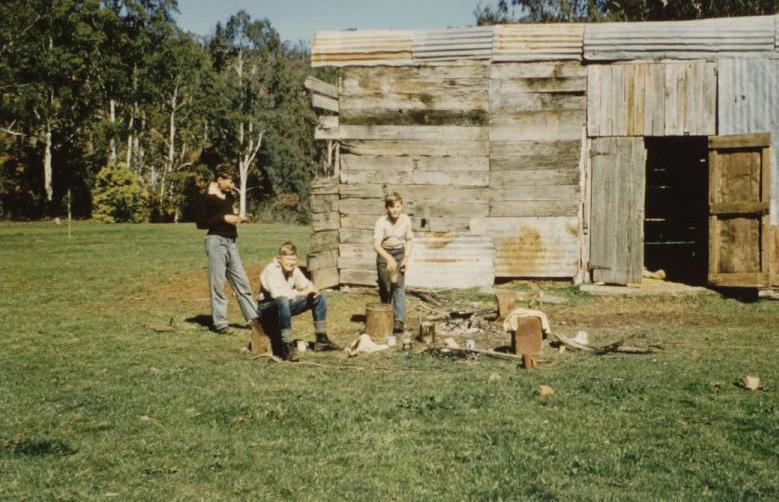
1950

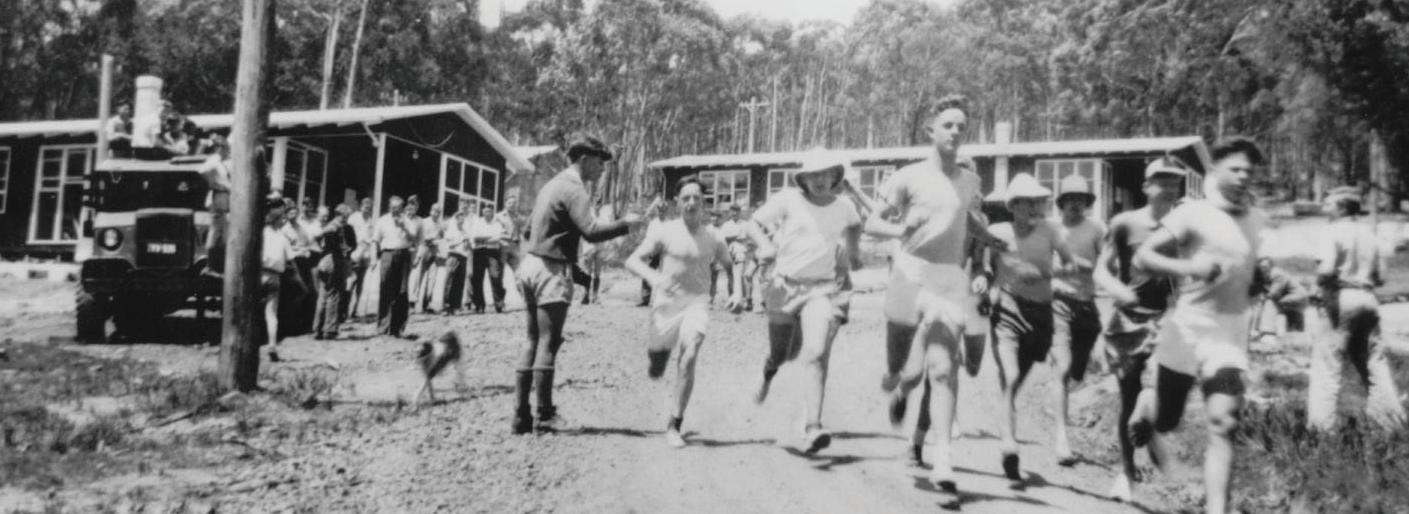
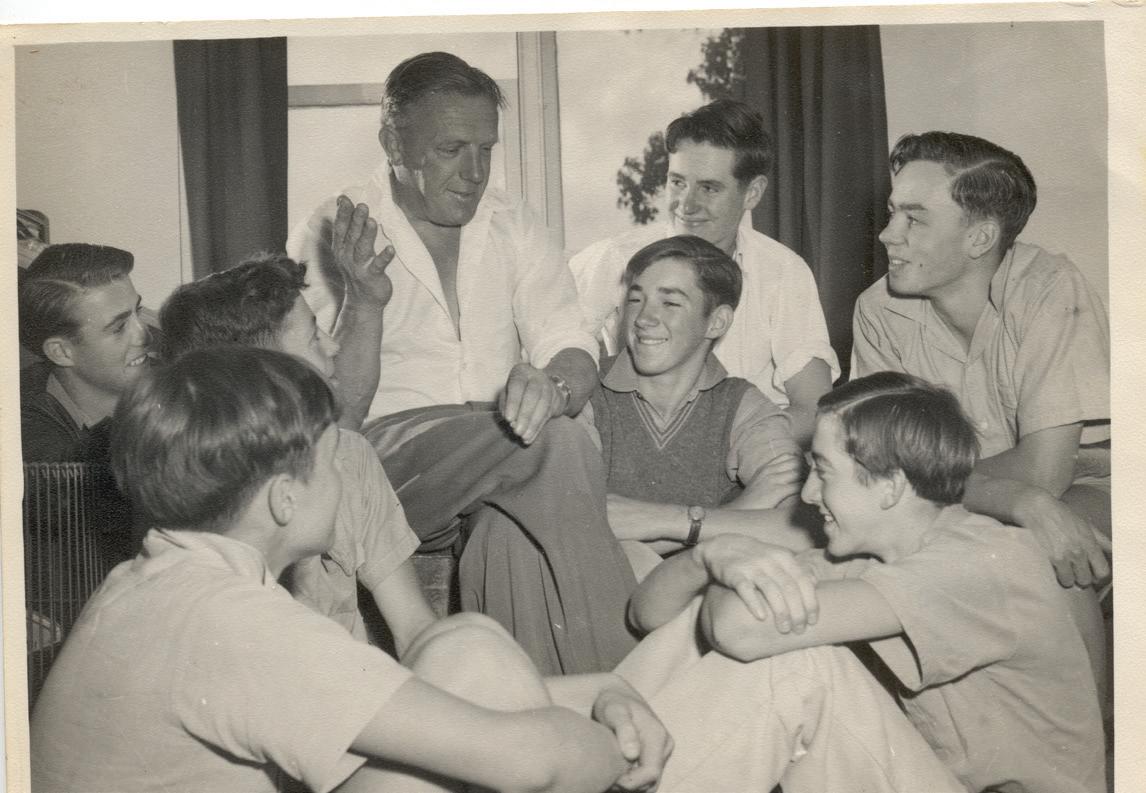

The most important thing was learning to cope, at an early age, with sometimes uncomfortable, unfamiliar, and difficult experiences, often alone. In addition, ‘nerds and jocks’ were on a level playing field when confronted with the natural elements and learnt to work together for the greater good.

– Deryk Stephens (A Unit, 1953)
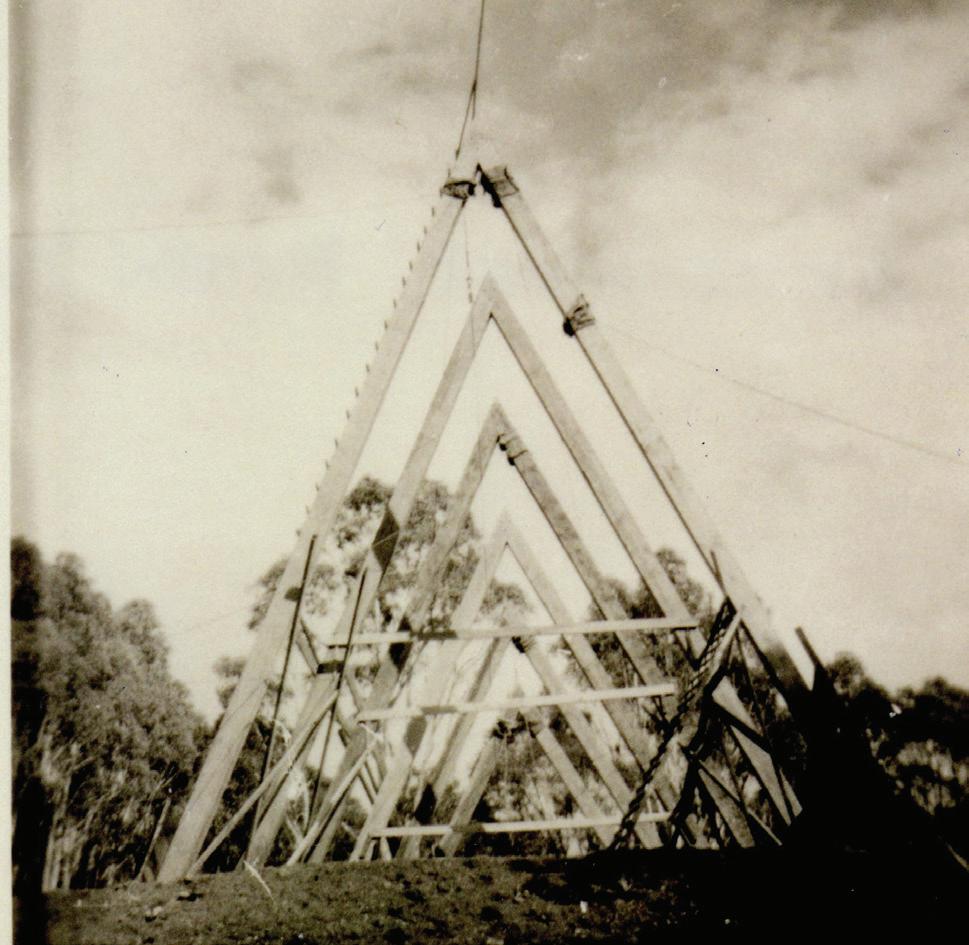


“Timbertop was a high-risk strategy in which the potential for things to go badly awry... was genuine.”
Setting off on the first Timbertop marathon in 1953
Building the Chapel in 1958
The inaugural Head of Timbertop, Hugh Montgomery
Chopping wood on the first work camp in 1952
Timbertop taught me that you can achieve most goals if you persevere. It taught me how much my body could endure and how to sleep in a tent in the snow with three others. It taught me to set goals and to enjoy them when achieved. I thank Sir James Darling for having the initiative to build Timbertop and giving us the invaluable experience of having a year there. I’m still in touch 67 years later with friends I made there and we often share our happy memories.
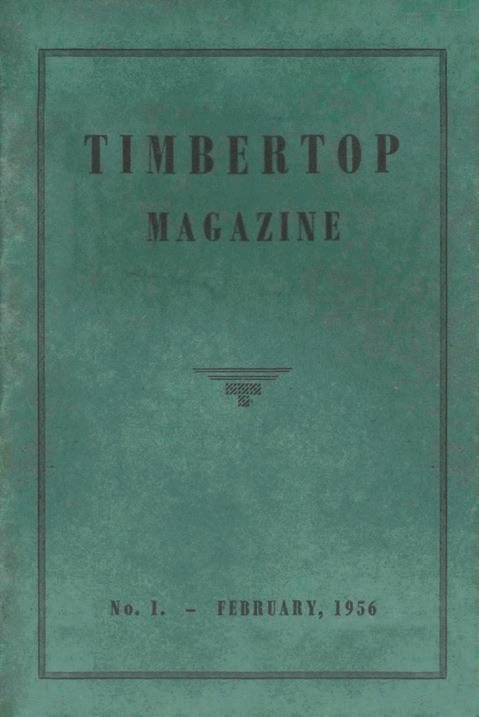
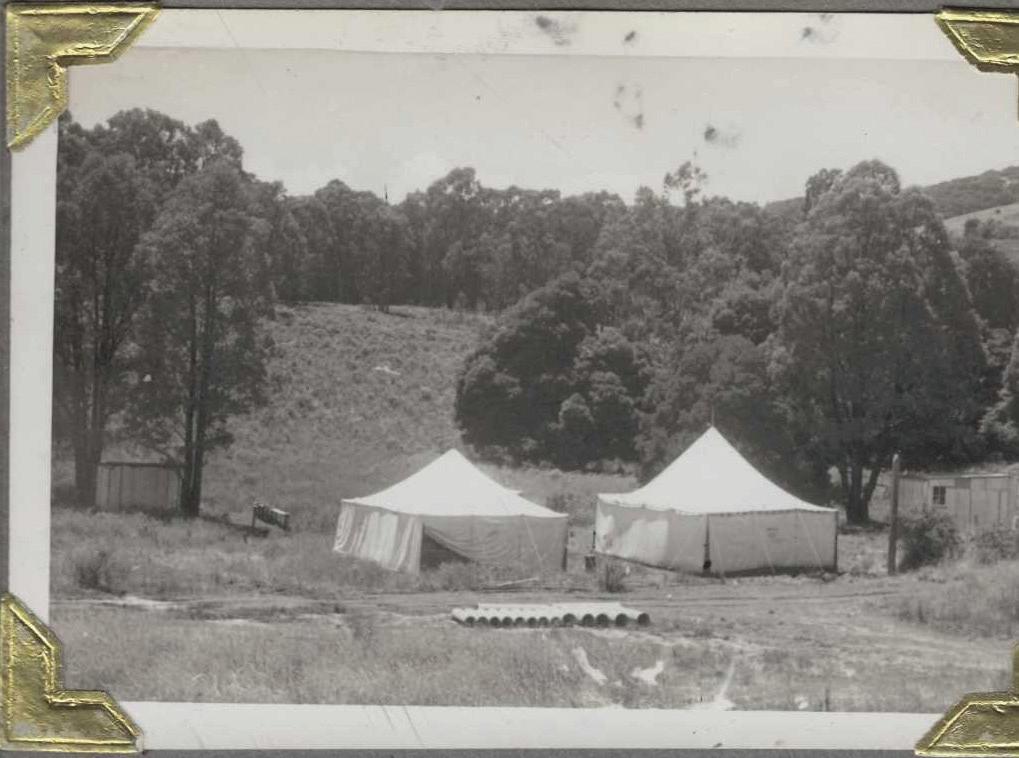
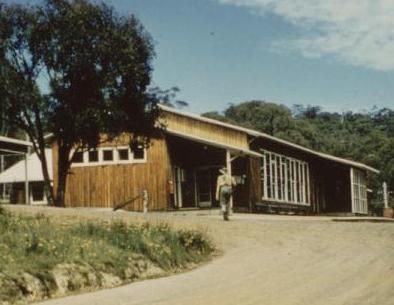 –
–
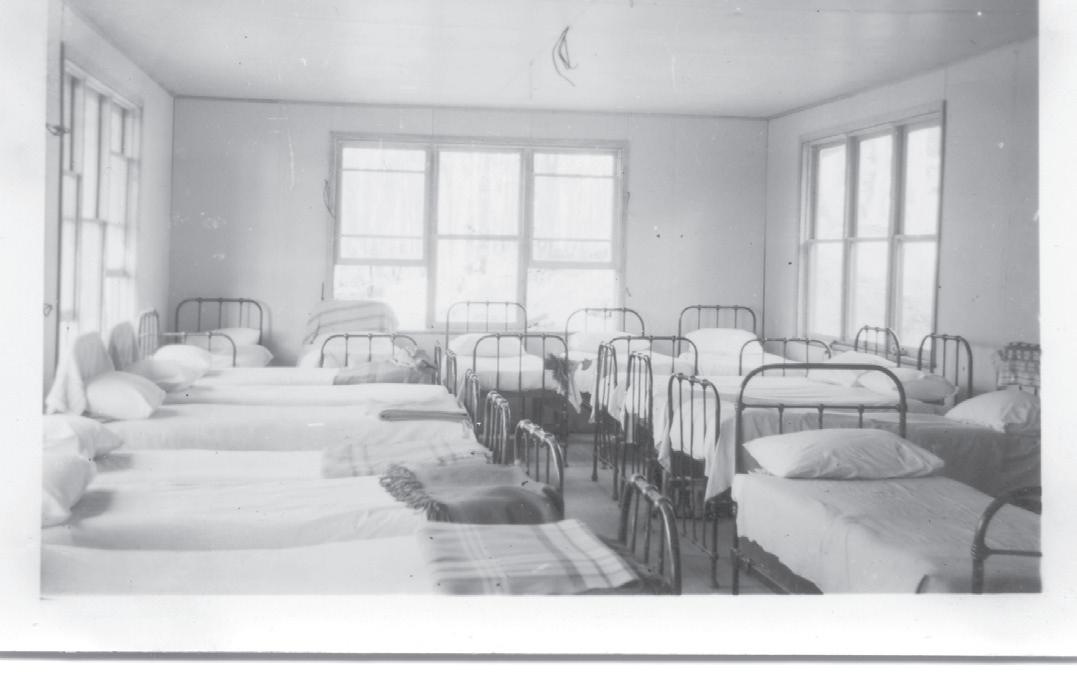
Hiking was an inspiration. Every hike is still etched in my memory. And the extraordinary comradeship, never to be forgotten and still to this day, 65 odd years on, superbly retained
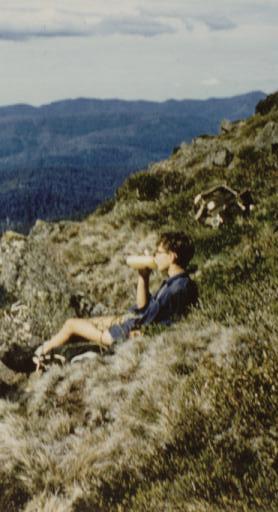
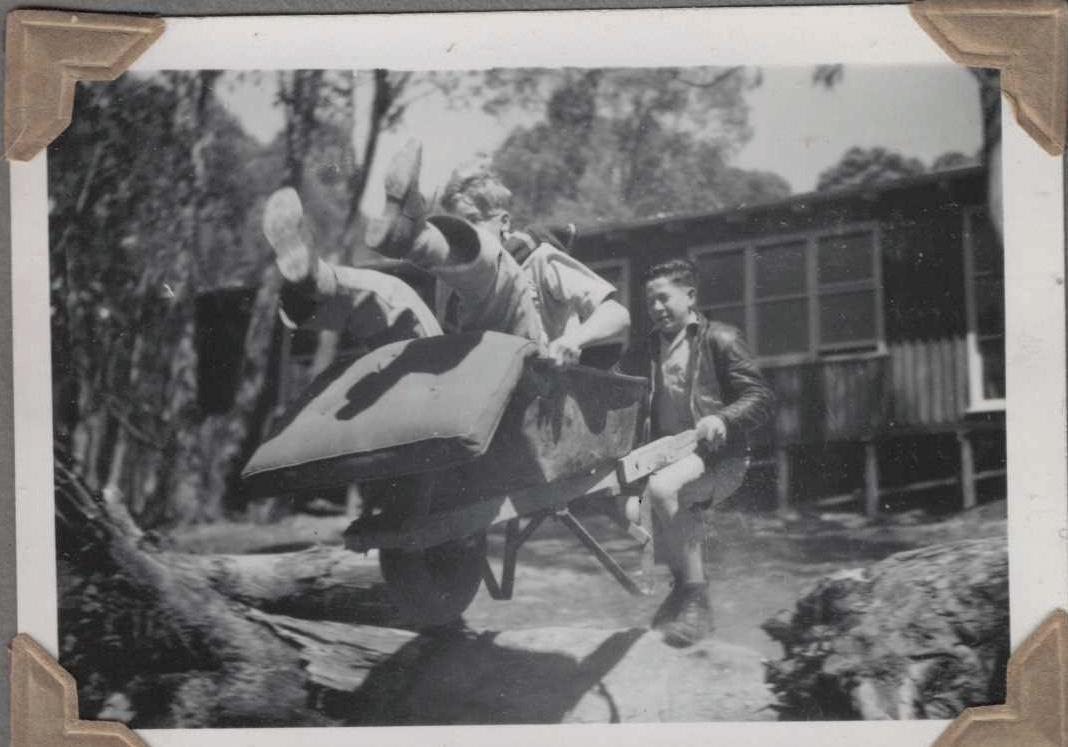
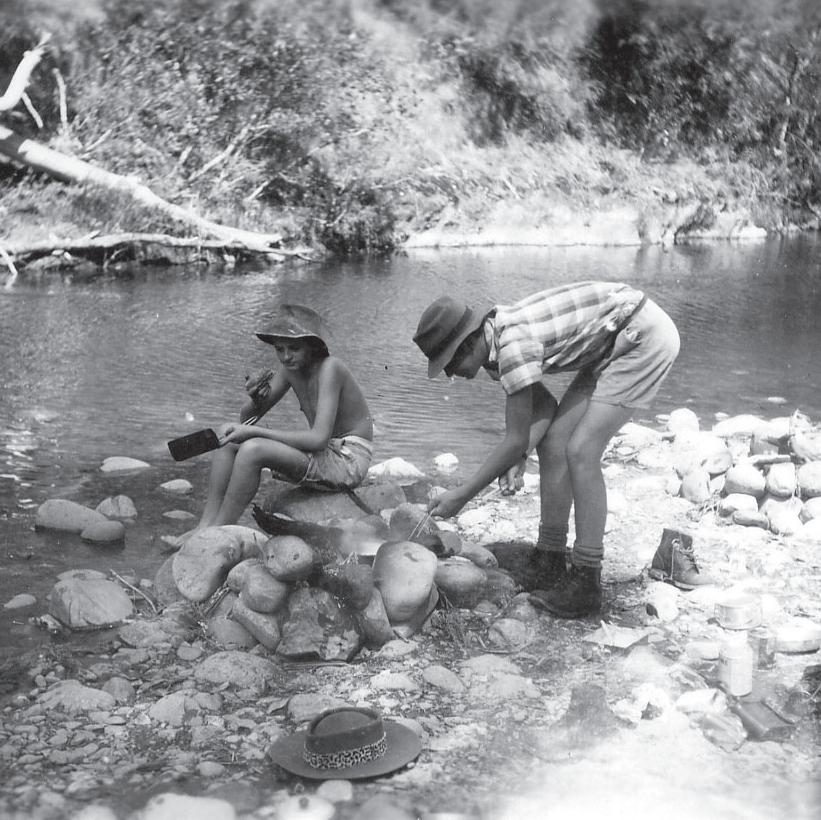
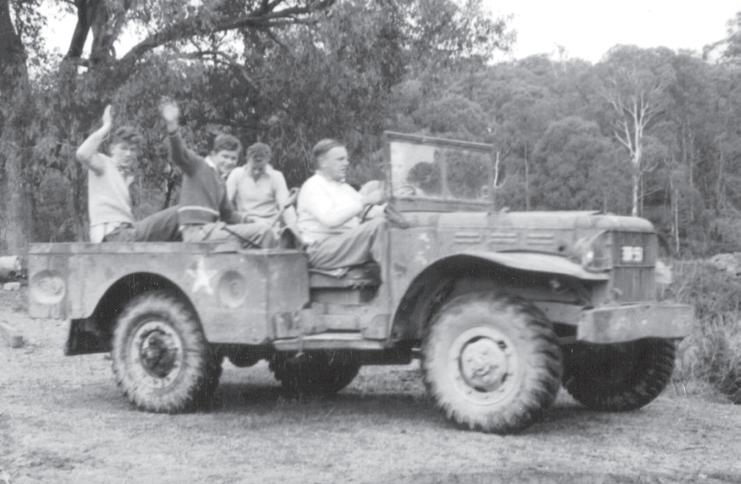

 – Rick Wraight (G Unit, 1958)
– Rick Wraight (G Unit, 1958)
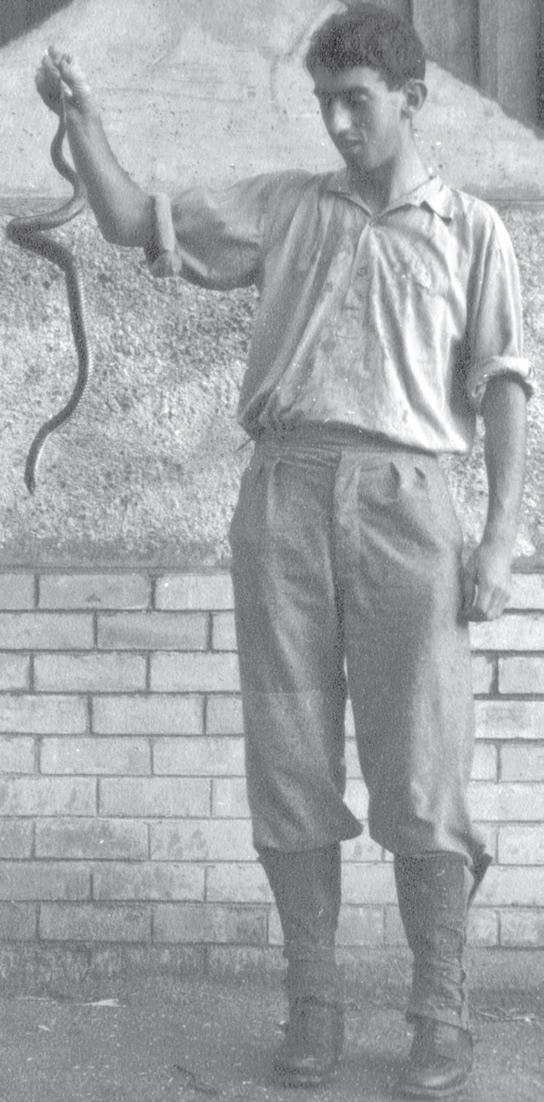



“It was all new, exciting, and a great adventure.”
Alan (Blinky Bill) Anderson (A Unit, 1956)
Timbertop working camp
Timbertop through the Decades s
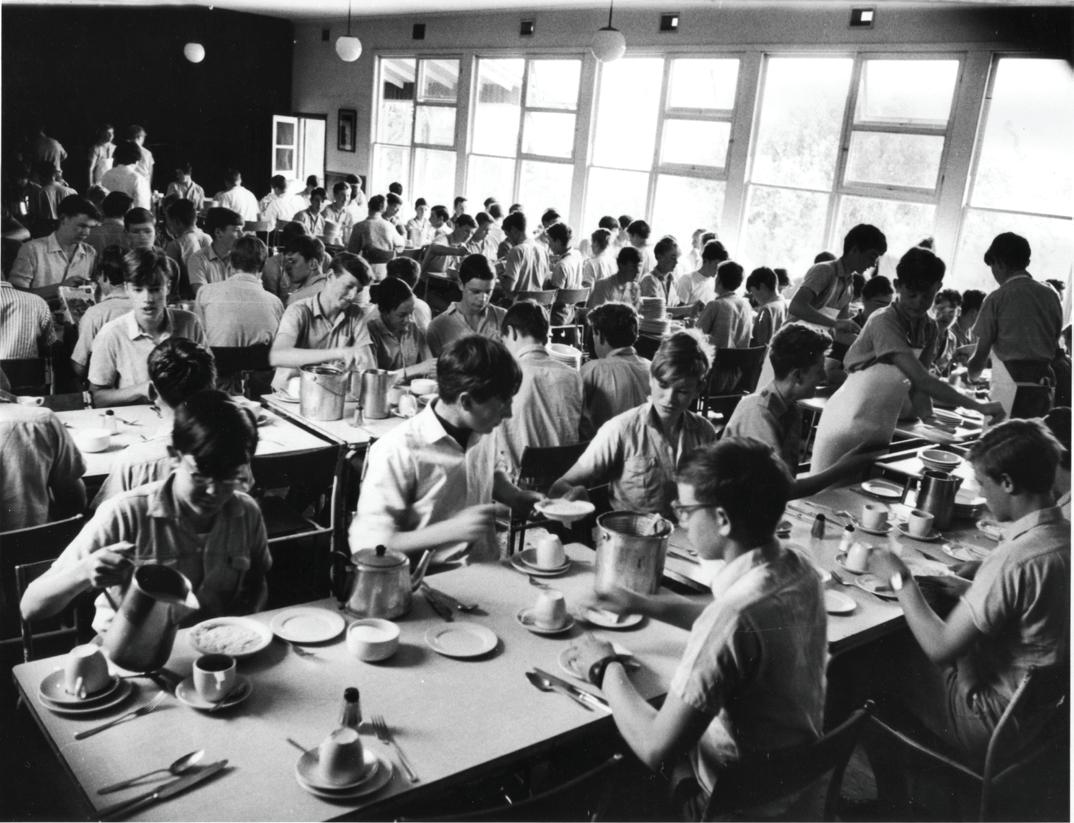
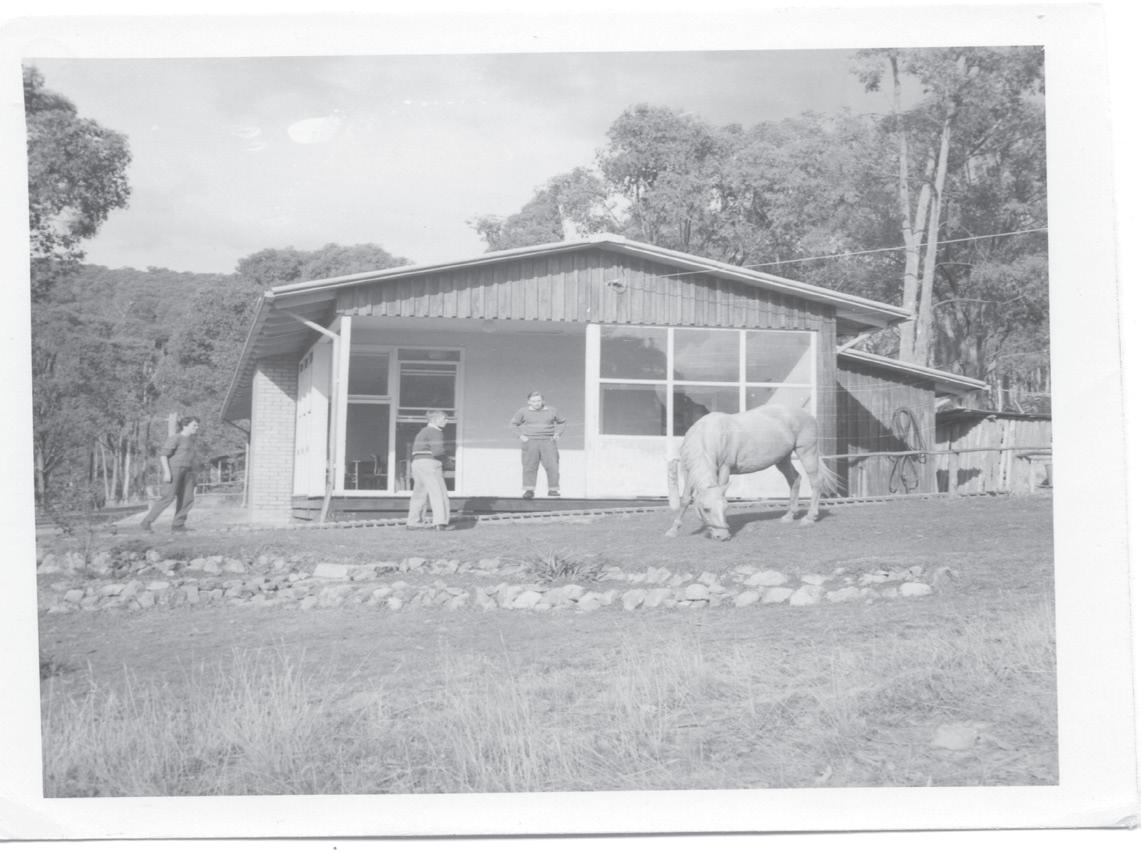


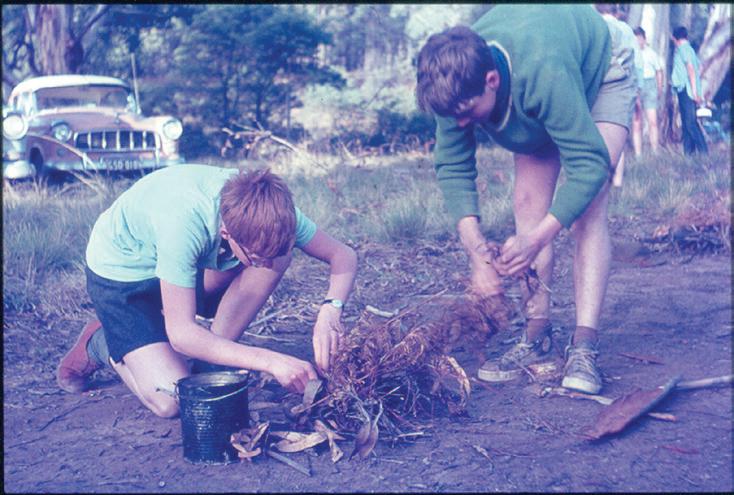
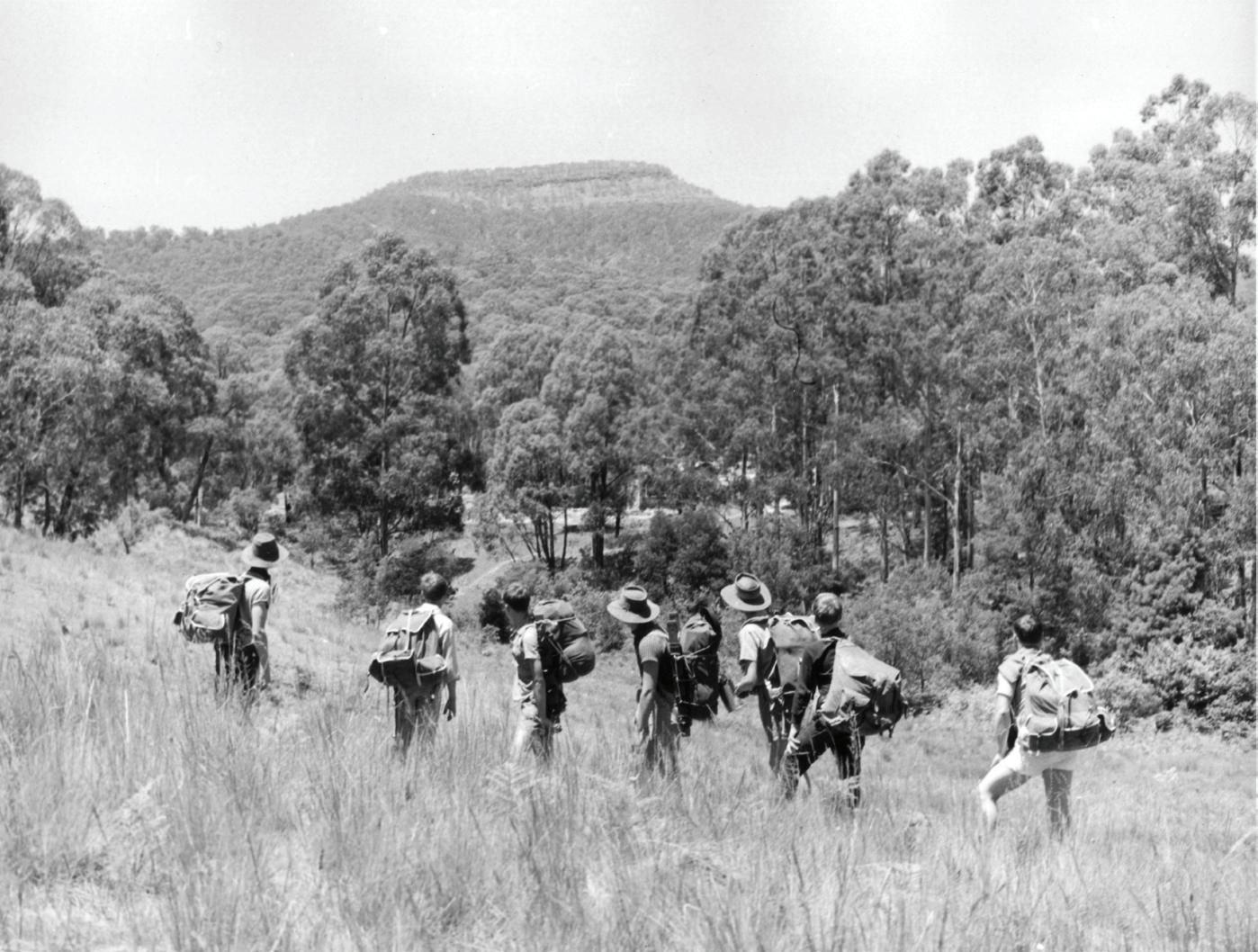
Some people have a defining moment in their lives, but I have a defining few kilometres – the top of Mt Howitt and over the Crosscut Saw. In circumstances that would generally be considered the most miserable of bushwalks, I discovered the beauty and magnificence of the weather and the mountains. It was awesome. I knew I was doing something truly extraordinary and was immensely satisfied by the achievement.
– Alan Kerr (D Unit, 1968)
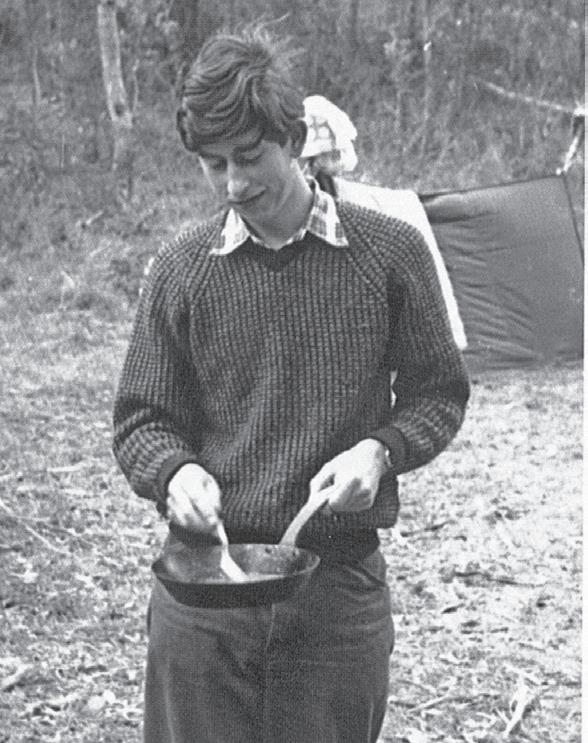



The skinks on the sunny river rocks became fascinating little fellows after learning about them in class. We became conscious of the different evolution and characteristics of dacite and granite breccia. My passion was fungi, and for me there were sudden moments of delight on hikes after spotting a Cortinarius Austro-Venetus or Cortinarius Cinnabarinus. Even our Latin studies were affected by phonetic connections with hiking. Ian Collier (Timbertop Staff 1959-65) had a cryptic line he tortured us with all year. Nobody could translate it, or even guess it, and we all should have been able to. The Latin was in omne volubilis aevom. It turned out to be the sound of small river rocks moving in the water at night. We had all heard it on our hikes.
– John Davies (H Unit, 1963)

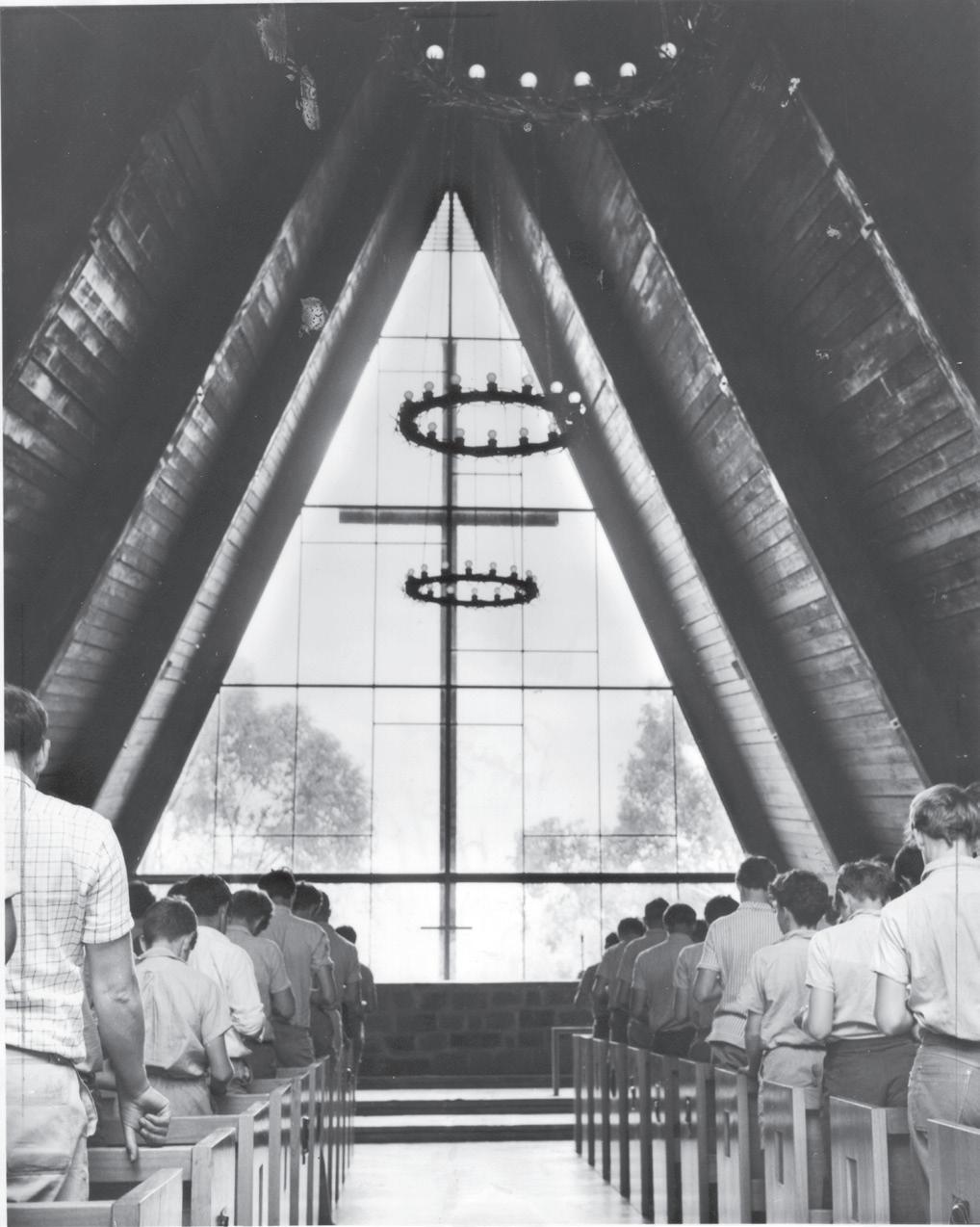
“By god, it was good for the character.”
1960
We had very basic gear, such as ex-Army disposal packs – very uncomfortable. I walked in school shoes. Others wore those Dunlop sandshoes with thick soles. We had A-shaped tents without floors, single sheet, no poles. We pitched them between two trees or sticks.
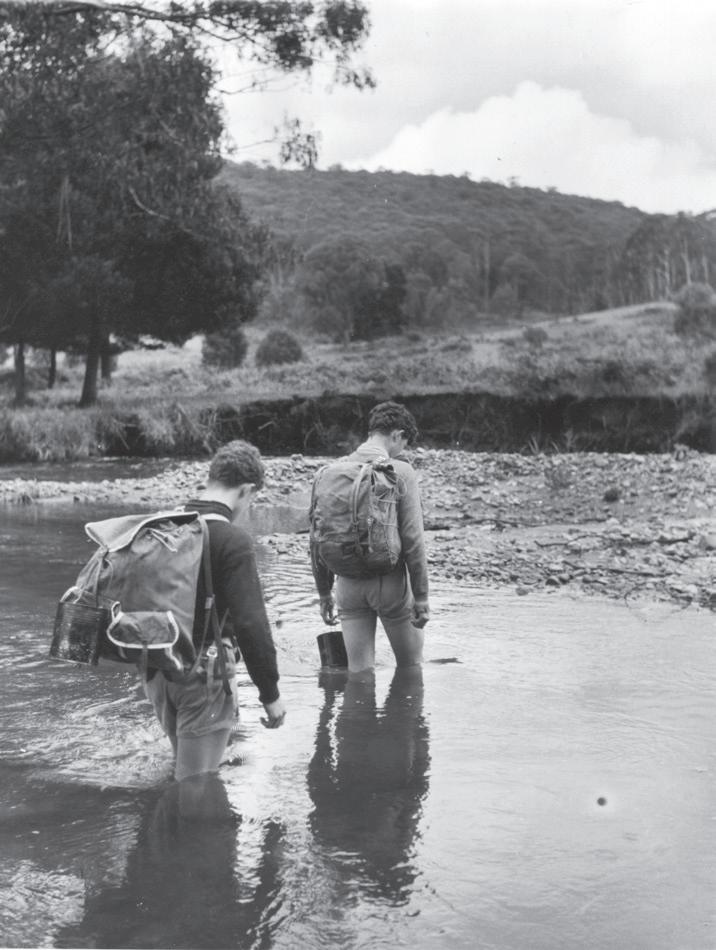
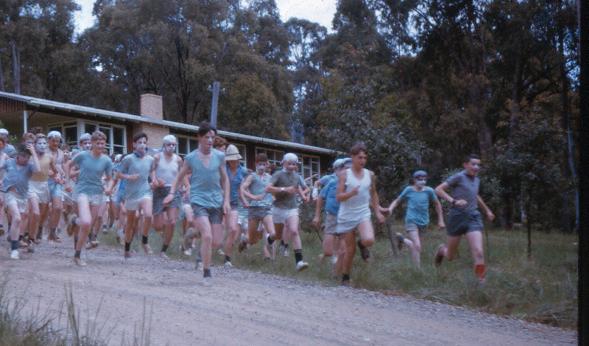
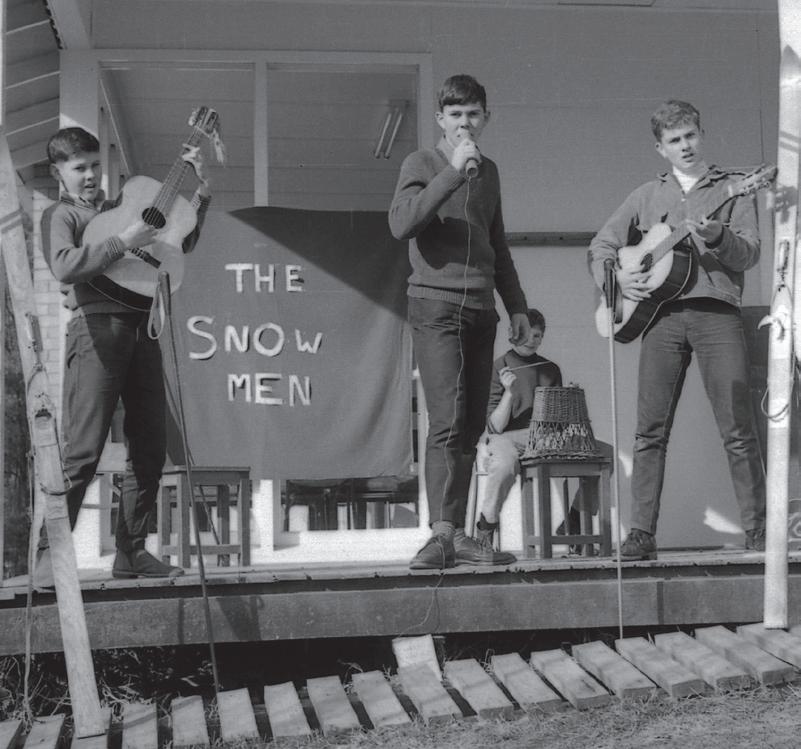
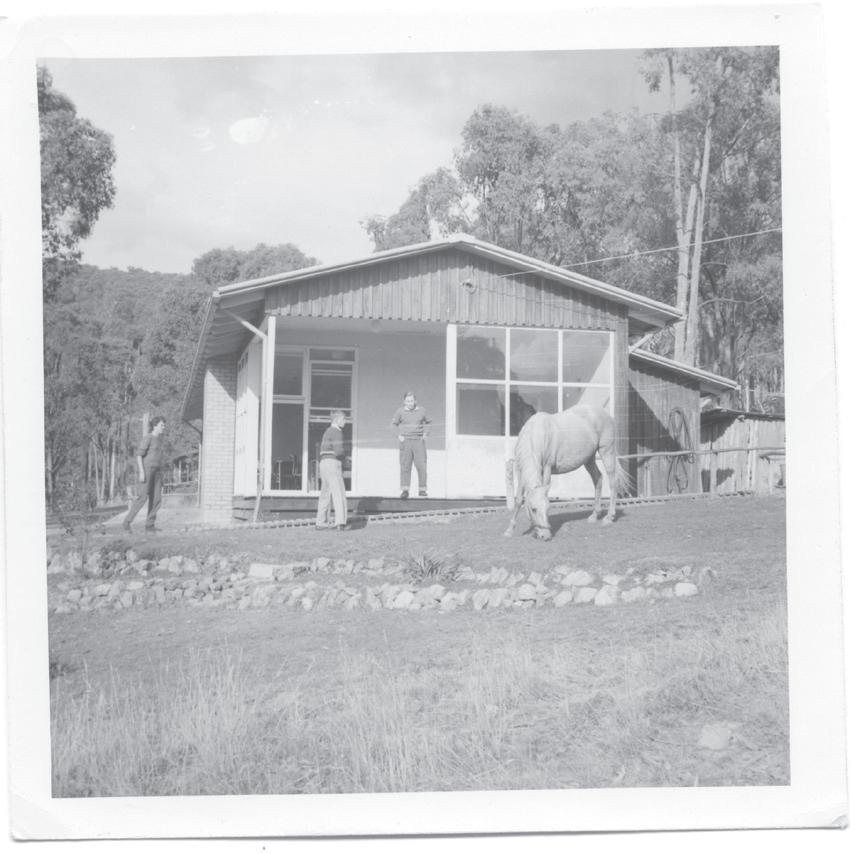
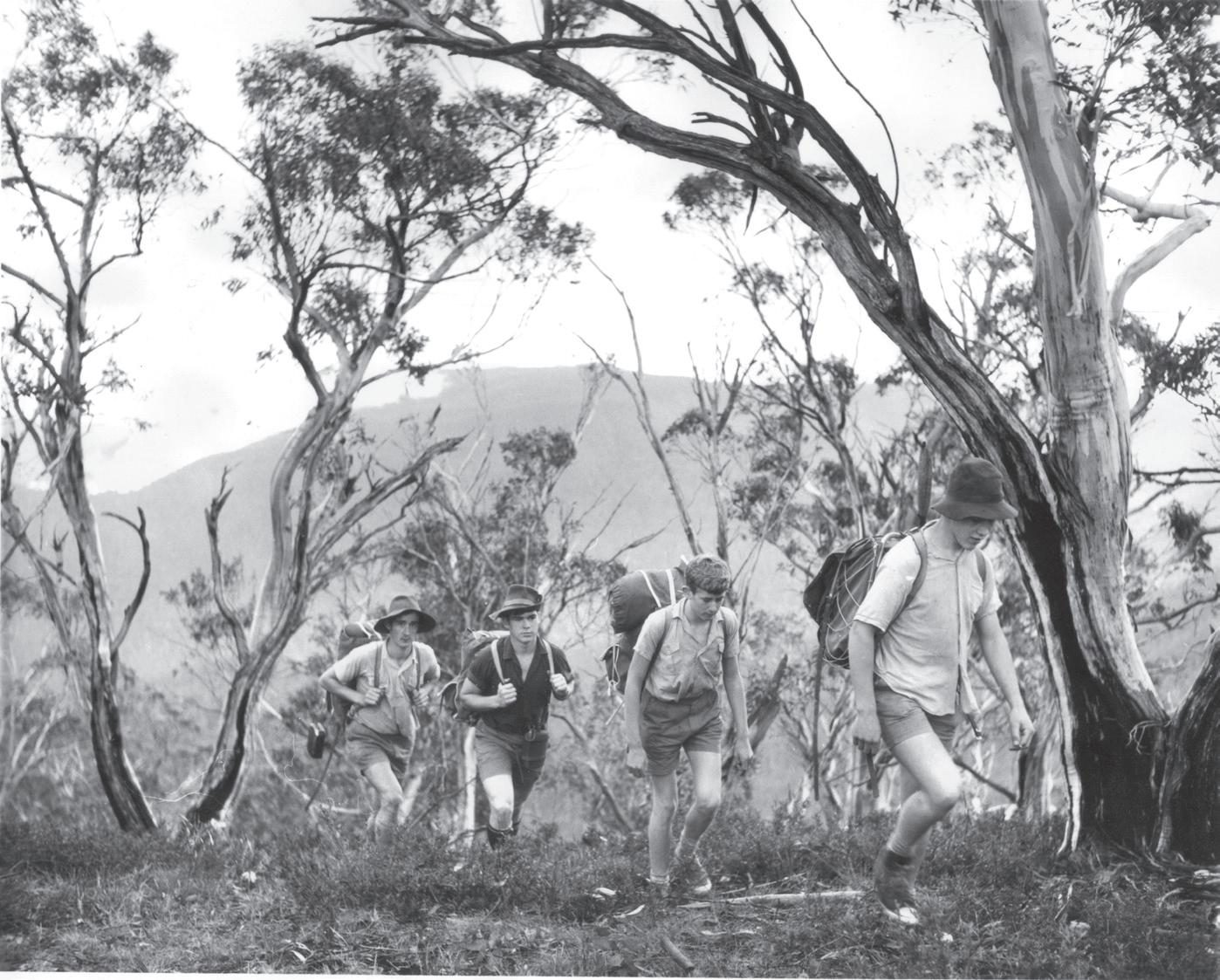
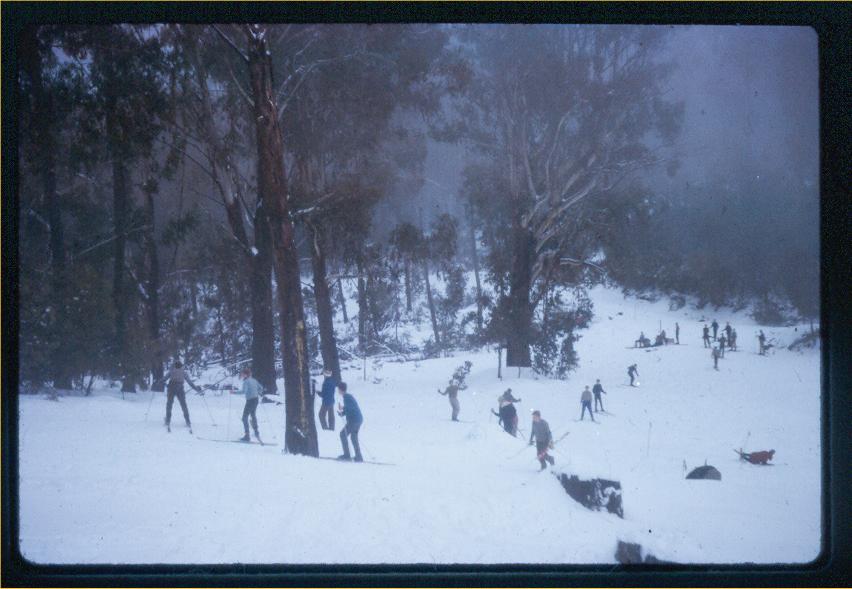
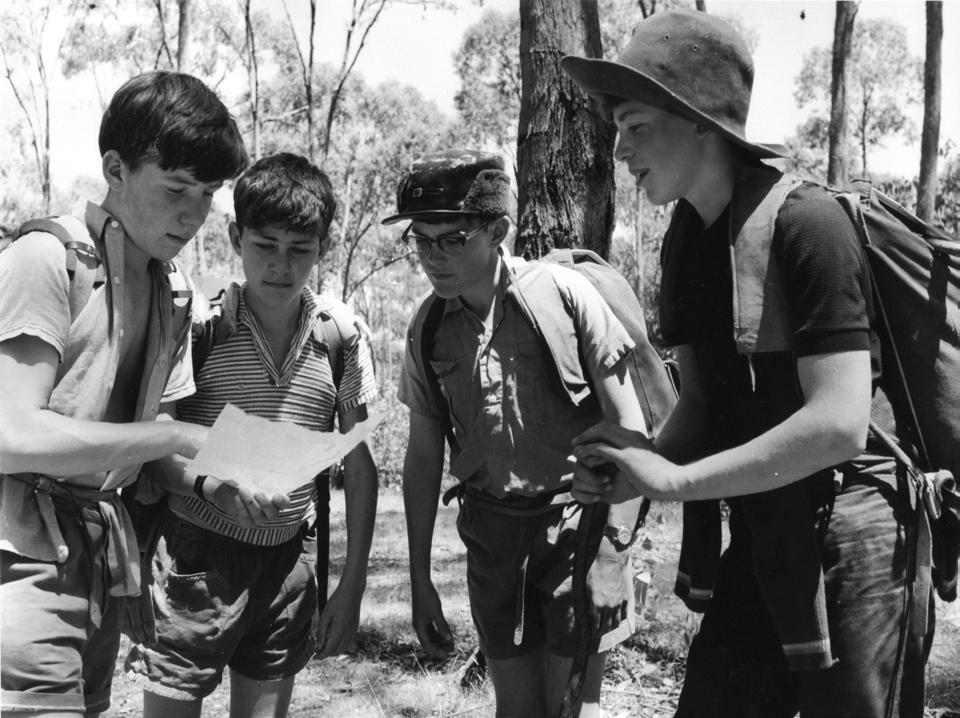

– Chris Baxter (A Unit, 1961)
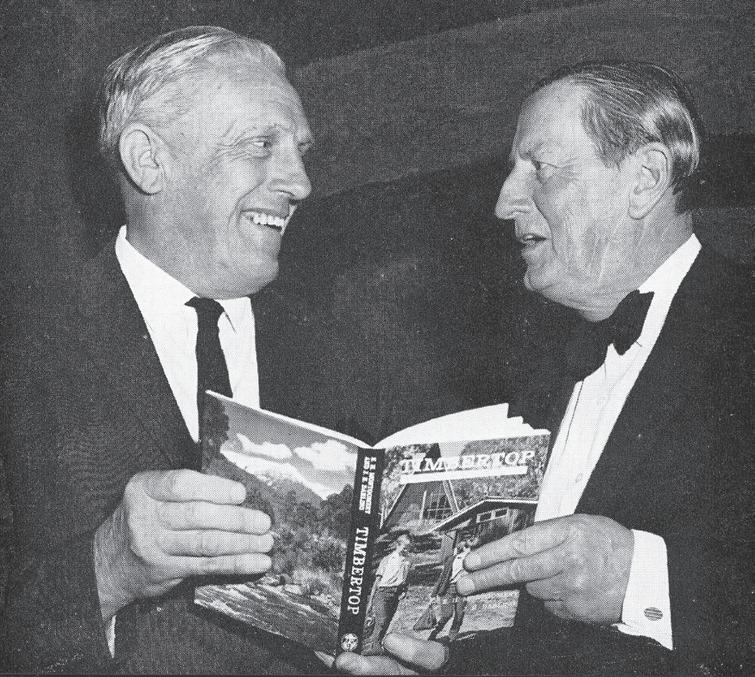


“There was no supervision. They were free to do what they wanted.”
Hugh Montgomery and Sir James Darling with their Timbertop book, published in 1967
Timbertop through the Decades s
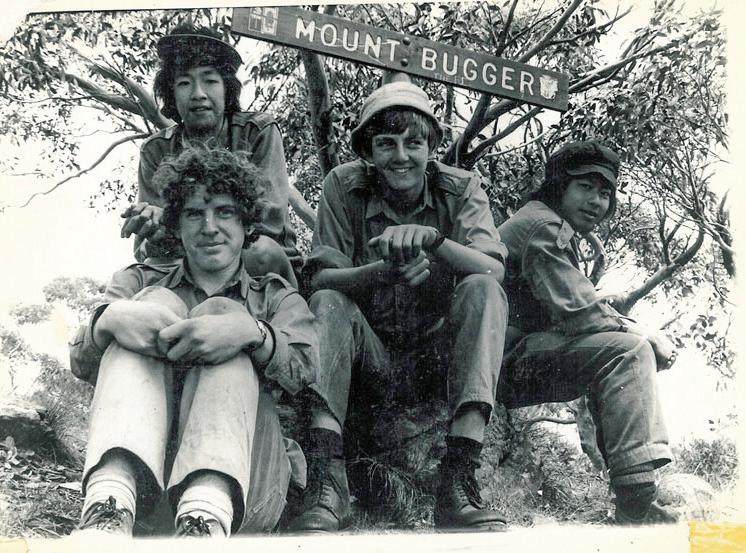

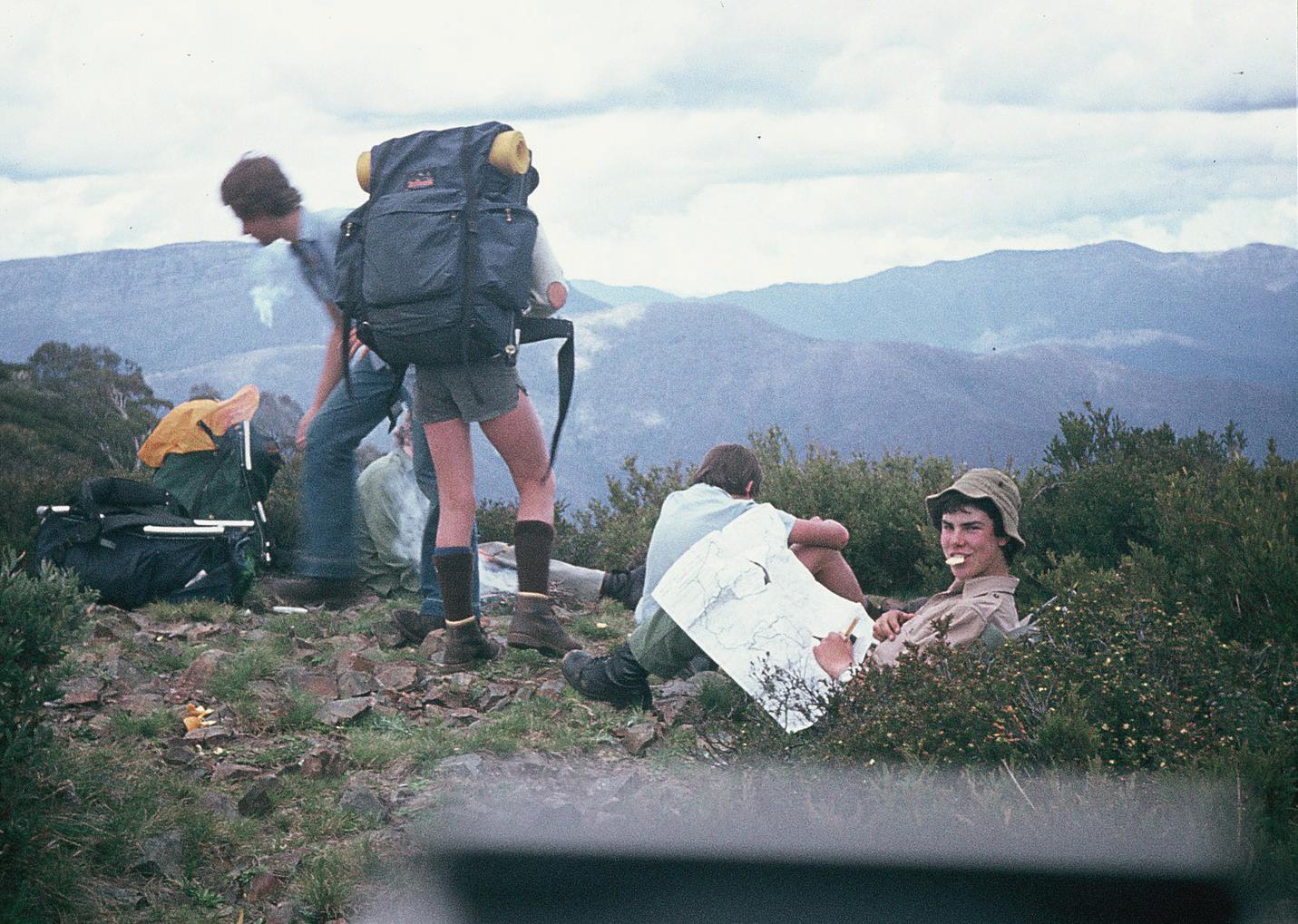
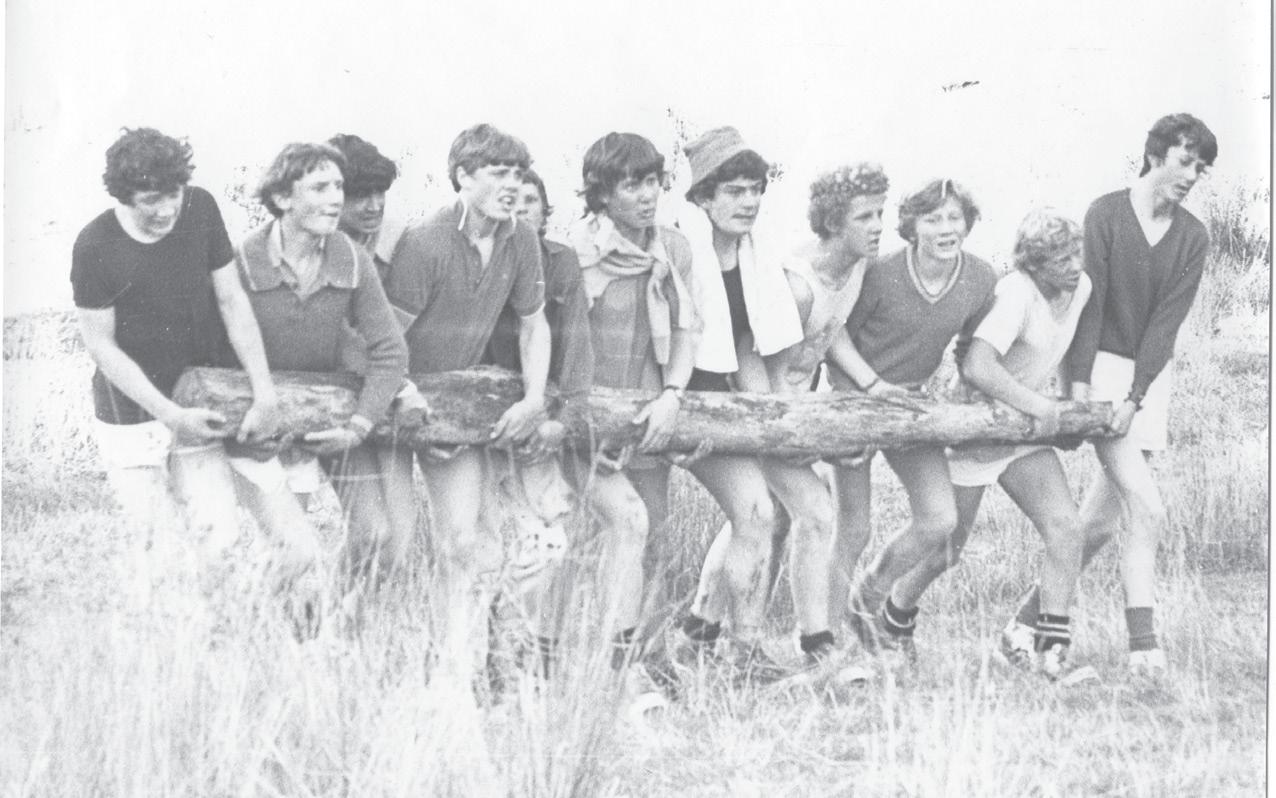

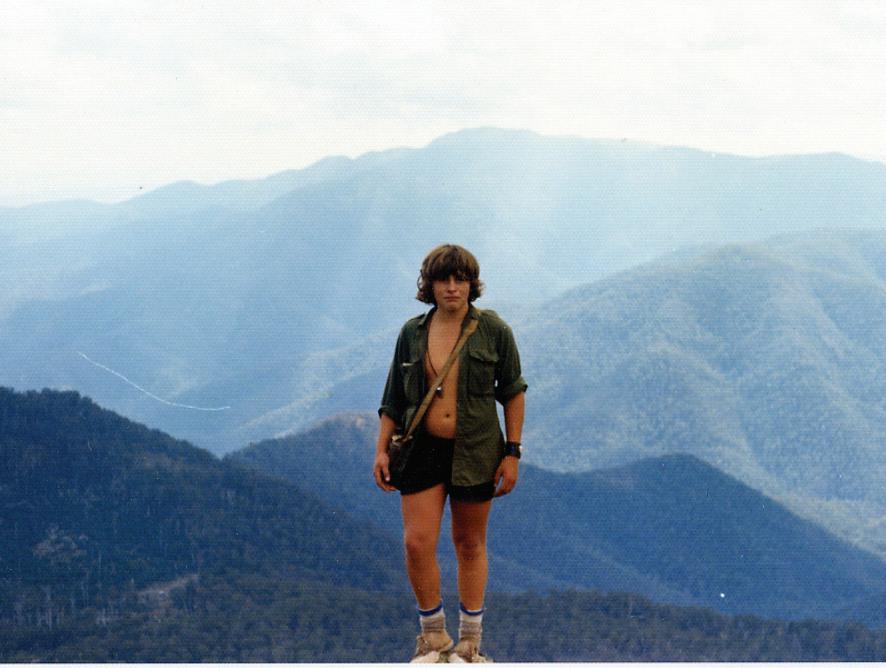

For me the Timbertop ideal was working out your own understanding of community. I thought it was very important that everyone was part of everything we did. For example, I wasn’t interested in how fast people could run but in everyone completing the course.
 –
–


Peter Thomson (Head of Timbertop, 1975-83)
“Going to Timbertop was scary and fantastic.”
“It gives kids a remarkable perspective.”
1970
Prince Charles (now King Charles III) revisited Timbertop with Princess Anne in 1970
One night I started a dorm raid because friends had short-sheeted my bed. All 30 girls eventually became involved and our screaming and running between rooms woke one of the female teachers, Sue Dennler (Pappas, Timbertop Staff 1976-78). She gave us all a Buller Road for 6.30am the next morning but then failed to show up as she was on duty. To this day, I don’t know whether her punishment was for us all to get up early or whether she had intended for us to do a Buller Road and just slept in.
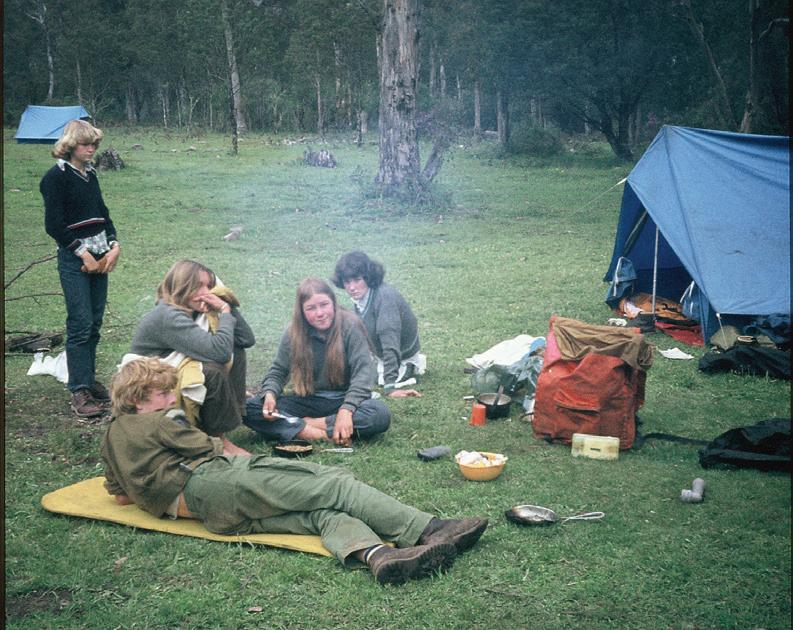
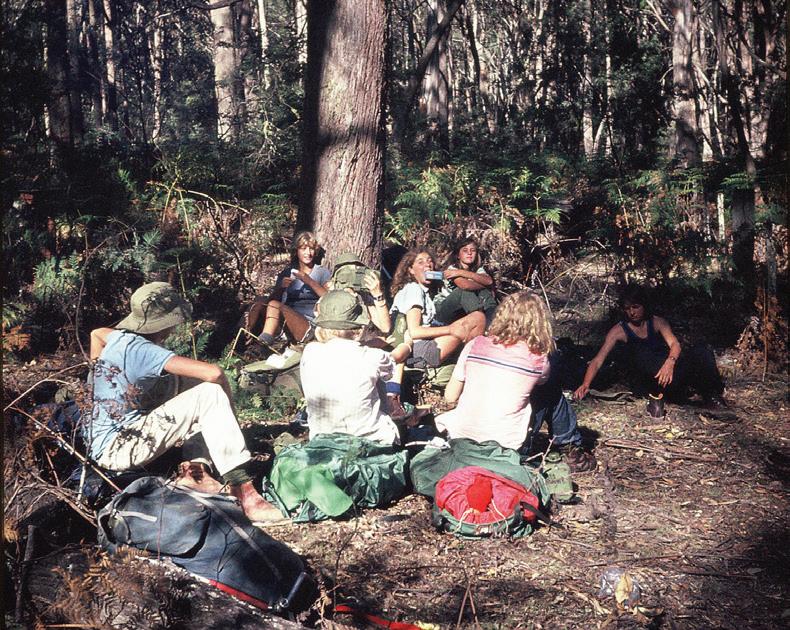
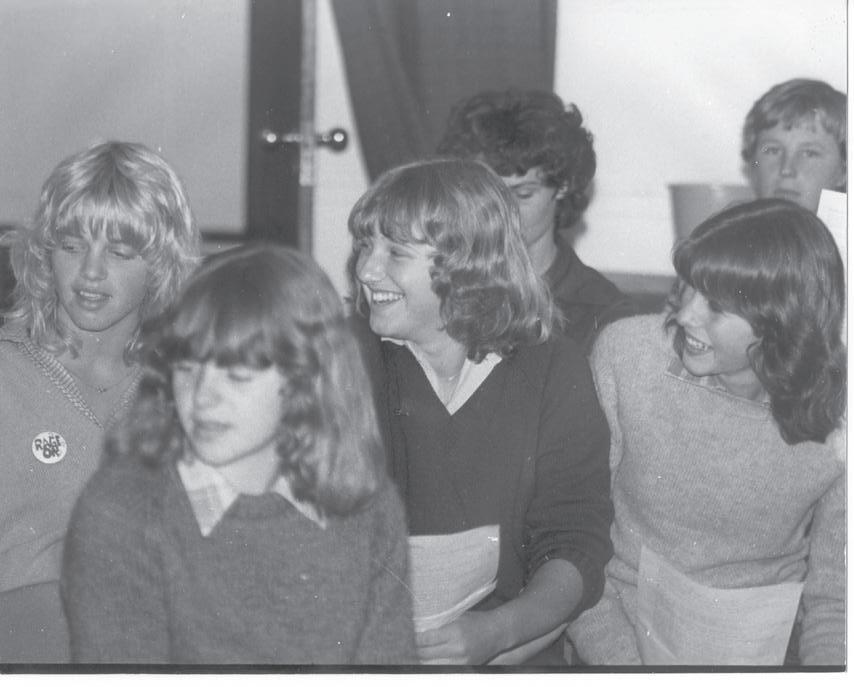
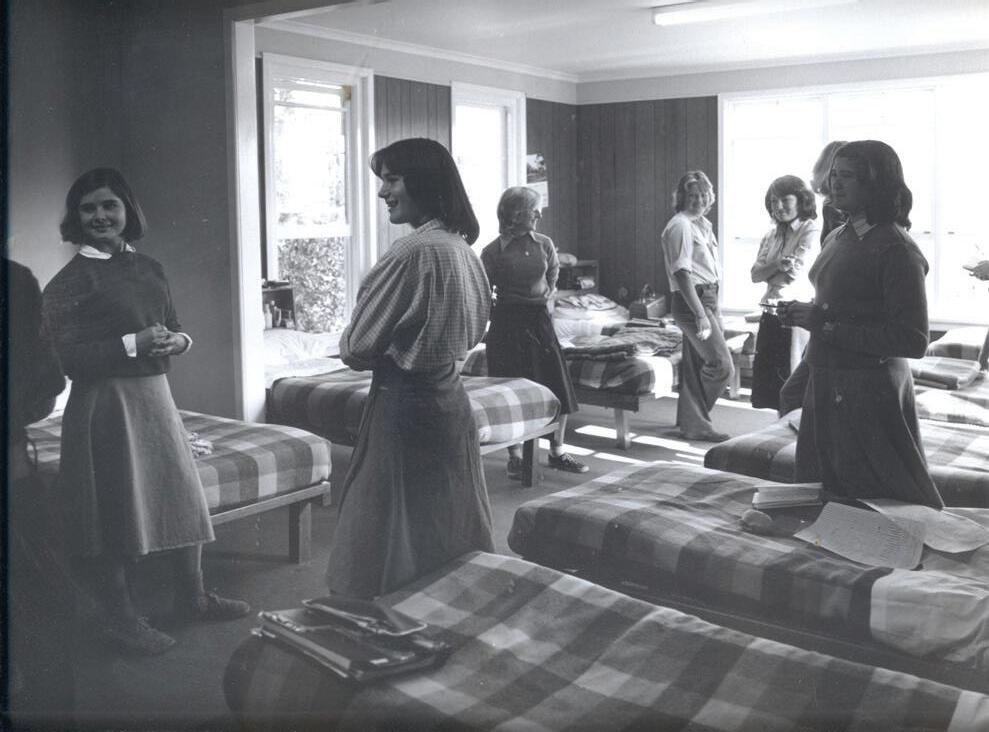

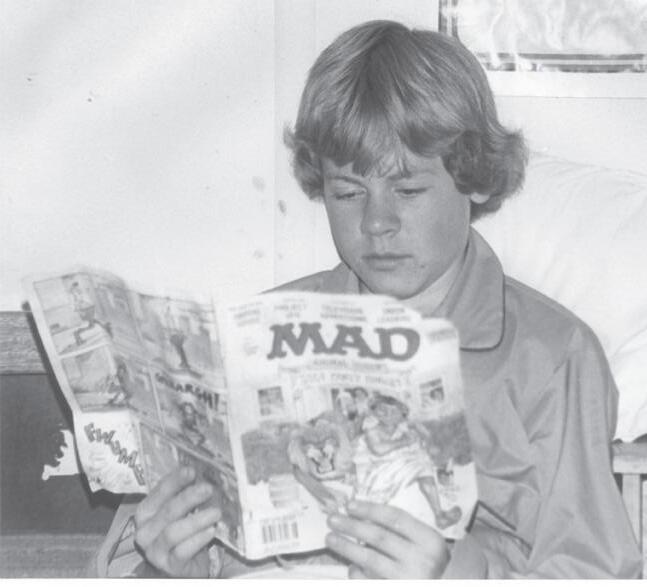
 – Jane Herbert (J Unit, 1977)
– Jane Herbert (J Unit, 1977)
I was unhappy at Corio because I felt my relationships with other boys were shallow; that we were a materialistic, affluent, even snooty bunch of kids. Timbertop had a great way of levelling all of us. Other qualities became more important. It gave us opportunities to be good and decent without being seen as a goody-goody; like helping someone on a hike or chopping wood. It brought out good things in people and we found ourselves a lot happier as a result.
– Rick Lindsay (H Unit, 1975)
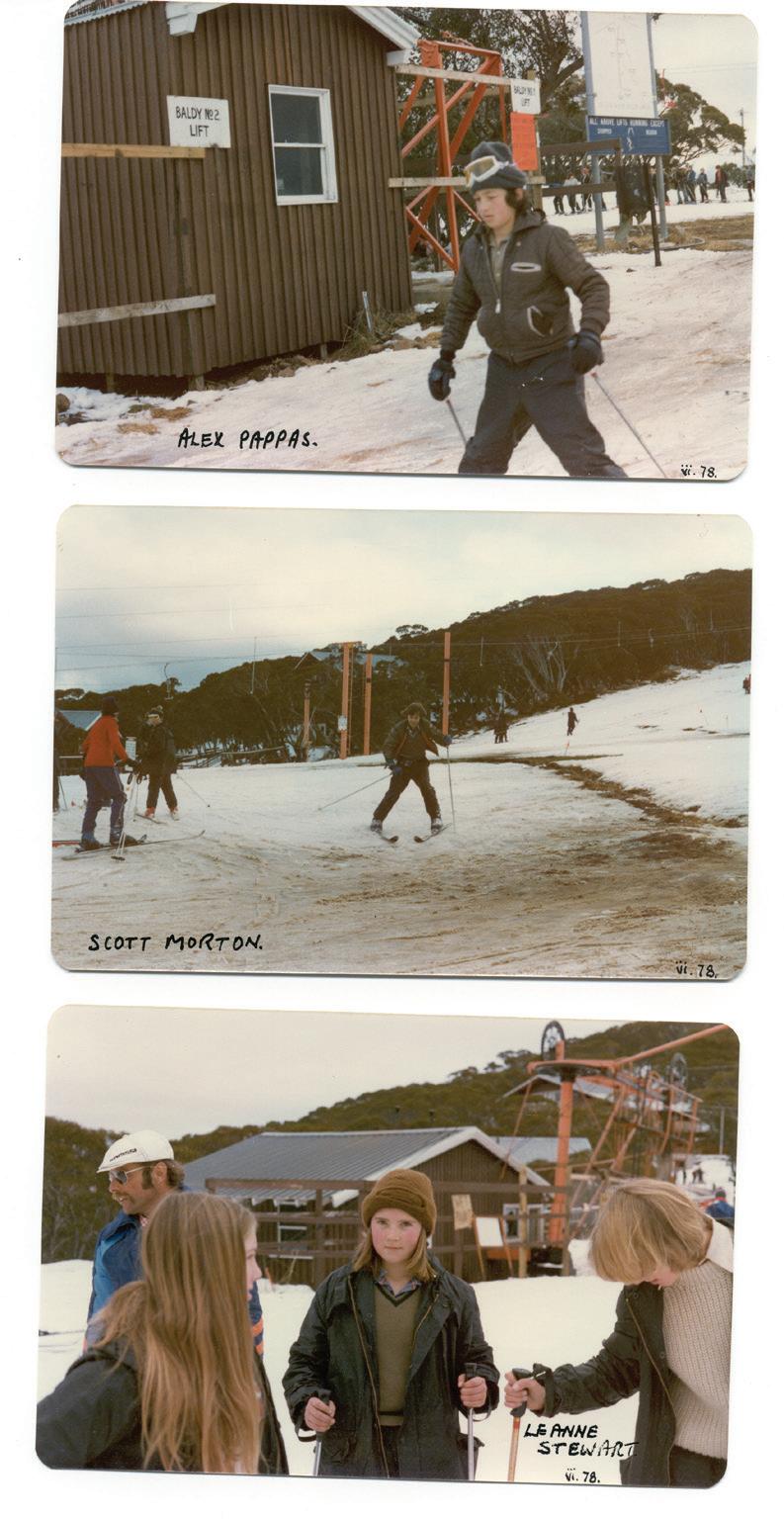

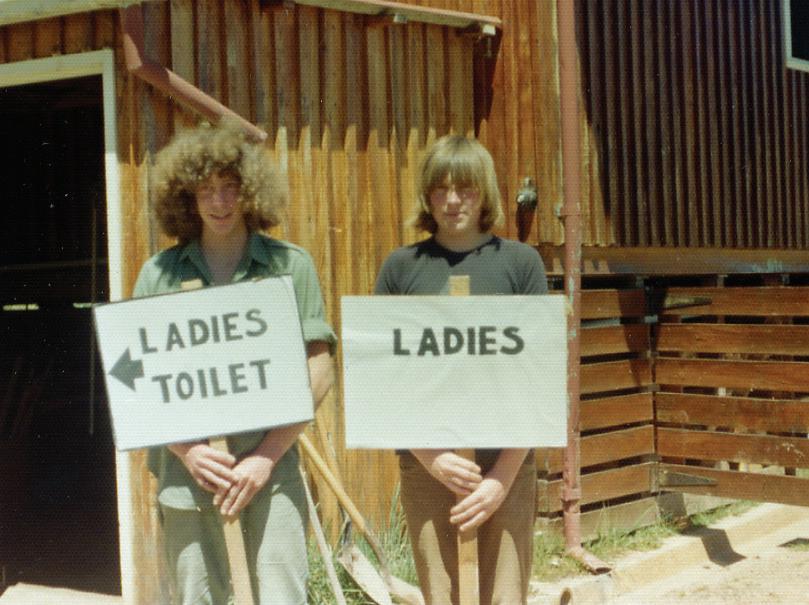


“They did everything the boys did and hated anything that made them different.”
The first girls arrived at Timbertop in the third term of 1975 (during Timbertop’s transition from Year 10 to Year 9)
Timbertop through the Decades
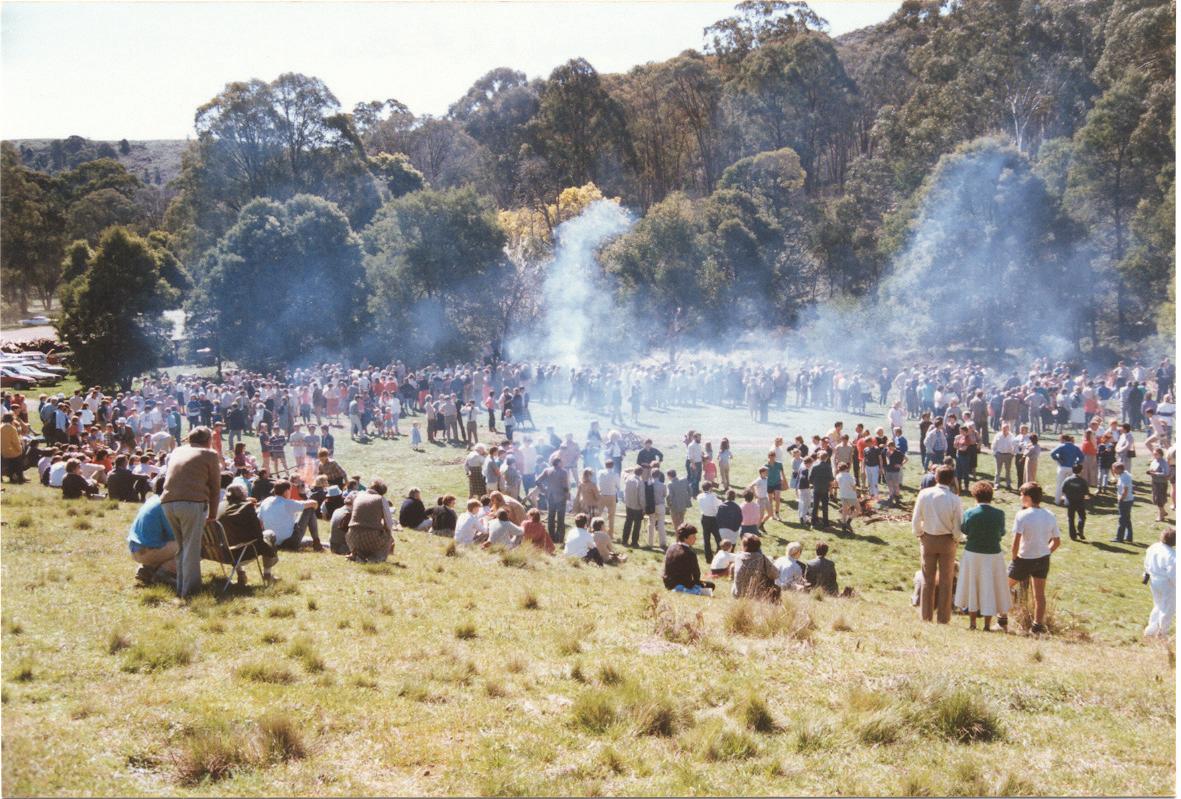
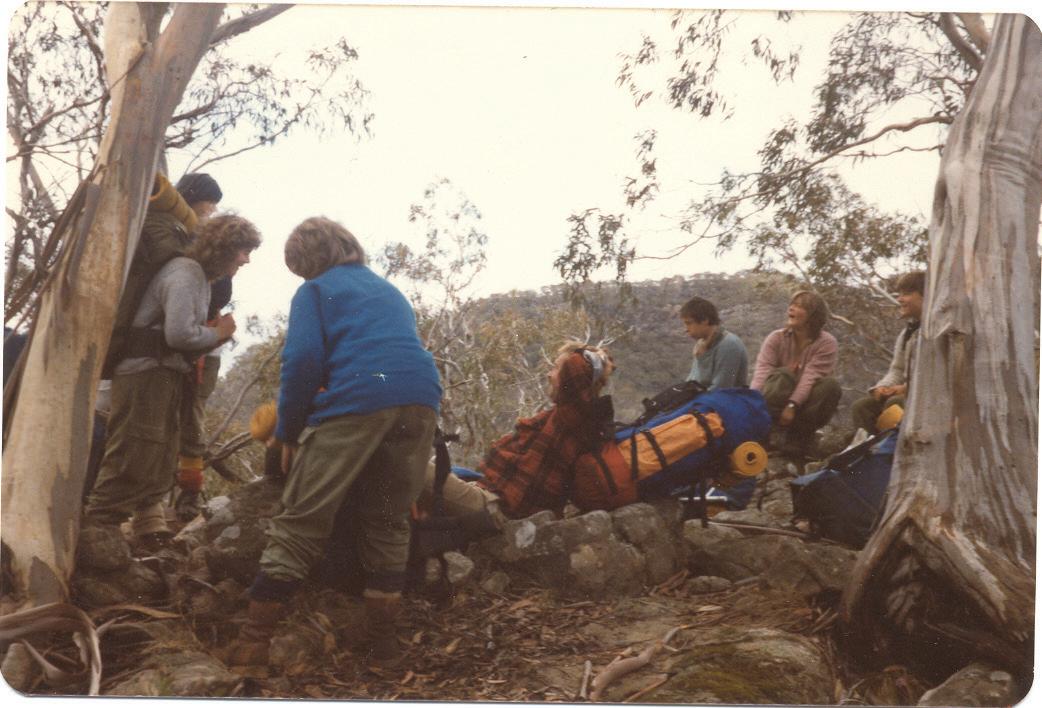
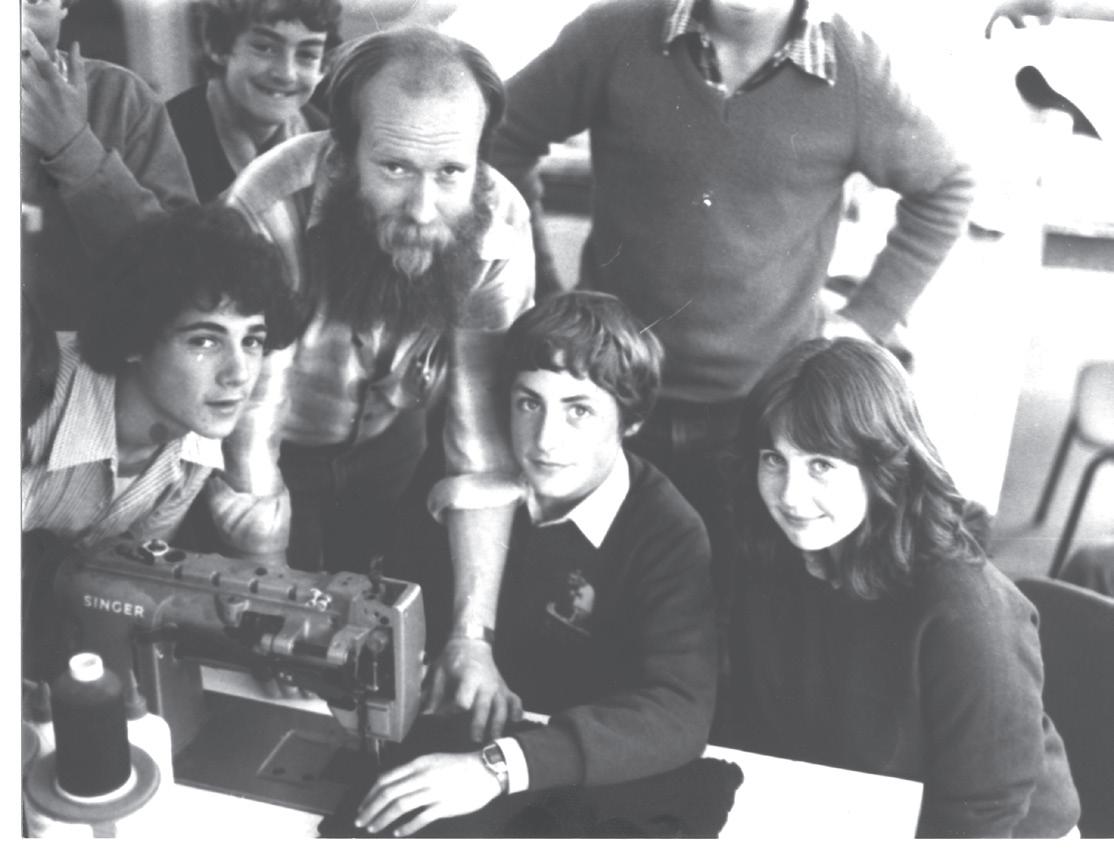
s


My strongest memory is of arriving in our Unit and realising that there was no hot water, and then finding the boiler and working out that we needed to keep the boiler fired to have hot water.

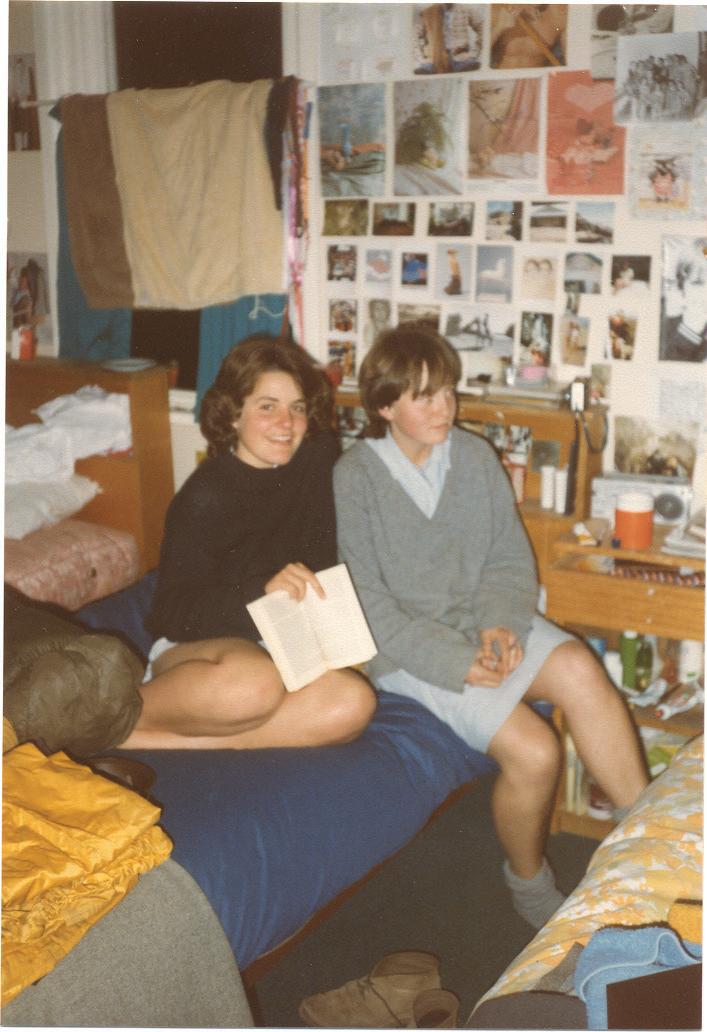
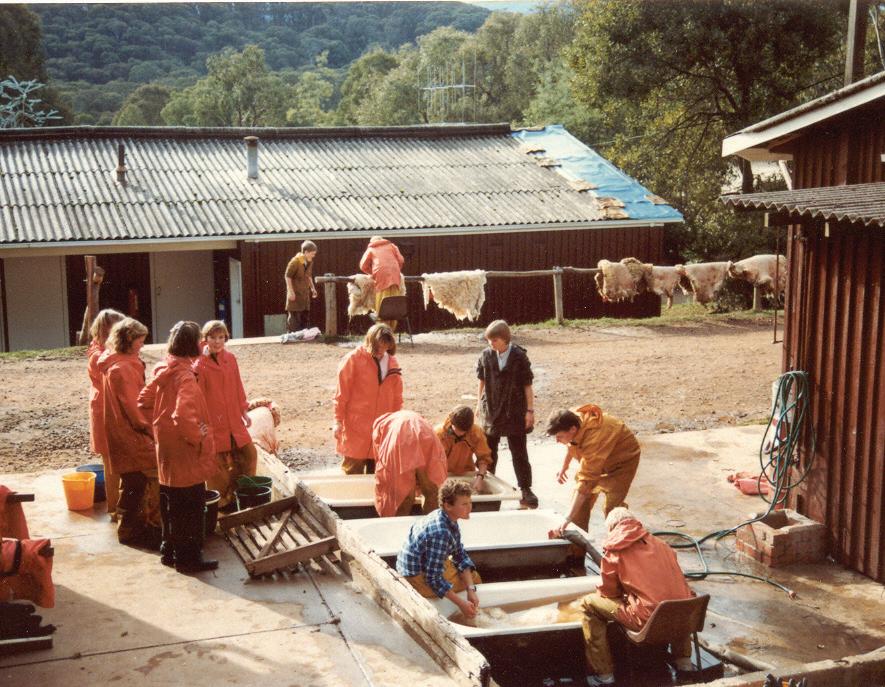


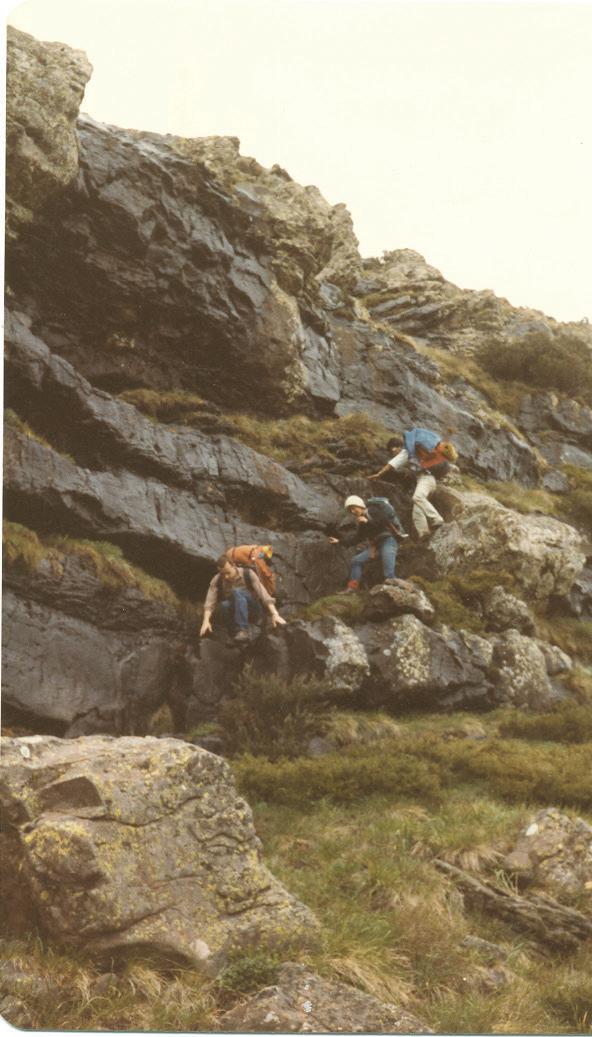
“Timbertop was transformative for me. It taught me resilience and teamwork.”
– Ian Waller (A Unit, 1982)
Paul Rice (Timbertop Staff 1977-87) teaching Art and Craft
1980
I remember getting hypothermia on the Mt Stirling ski trip after having to sleep in the GGS Hut. Snow came in through holes in the tin roof. My sleeping bag was wrapped inside an orange bivvy, akin to a heavy-duty garbage bag. In the morning there was a light layer of white covering the sea of orange that had been our unit the night before. I missed the summit the next morning whilst defrosting in front of the fire. My body temp was 1/2 degree off being air lifted from the mountain.

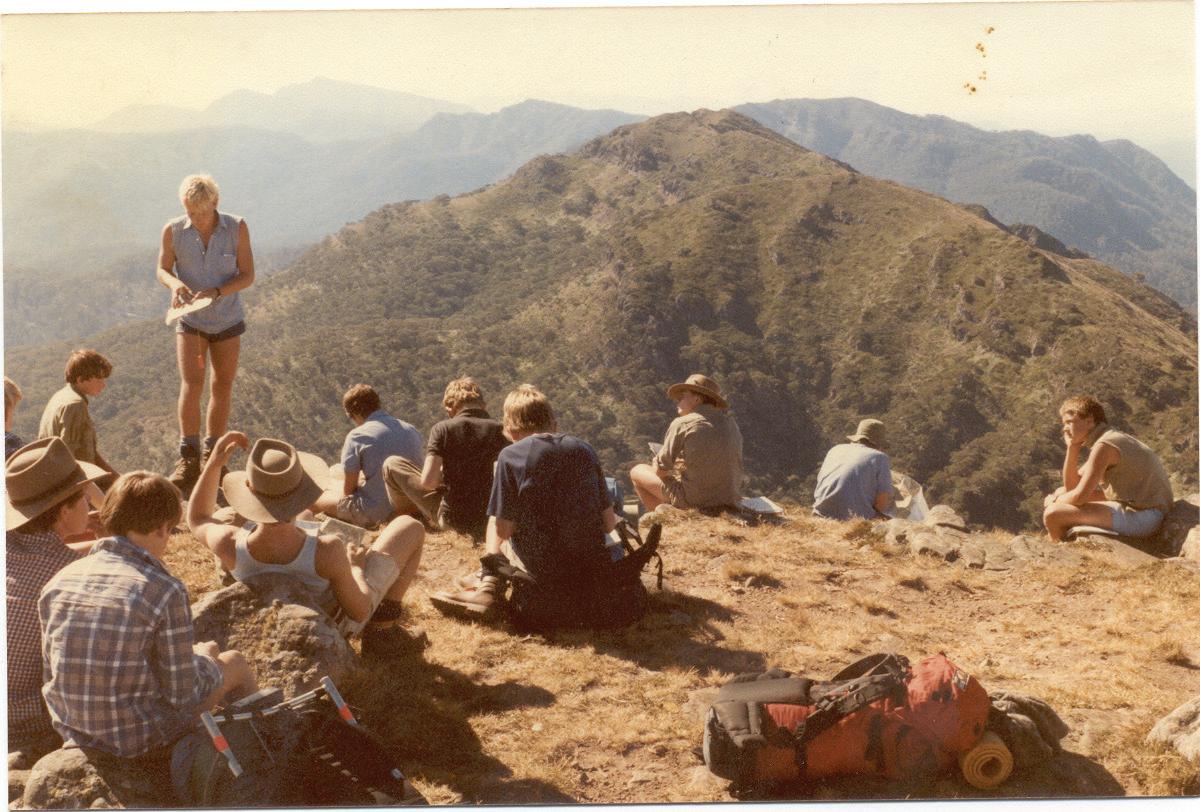

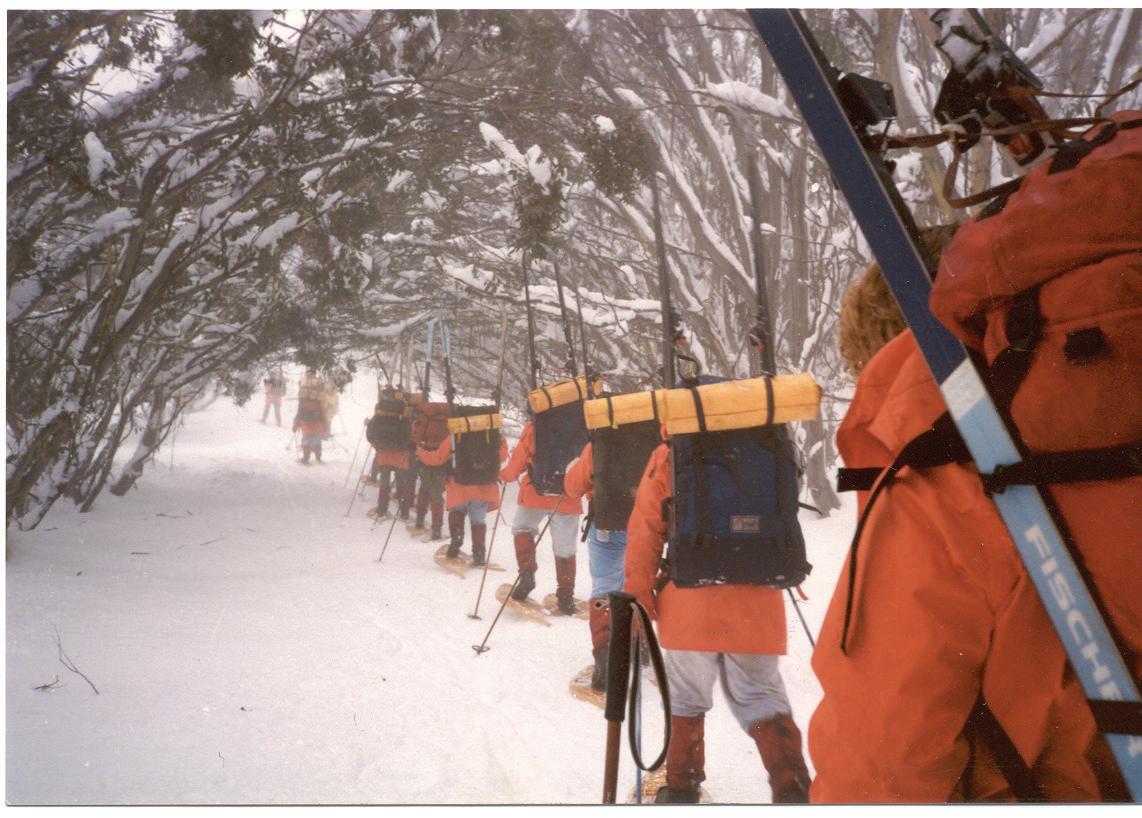

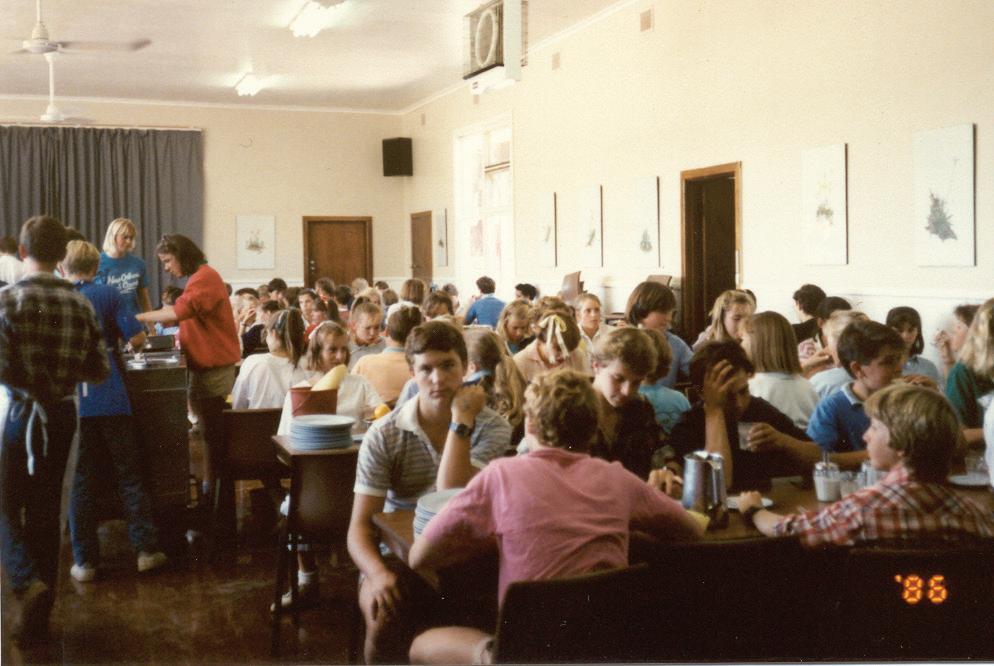
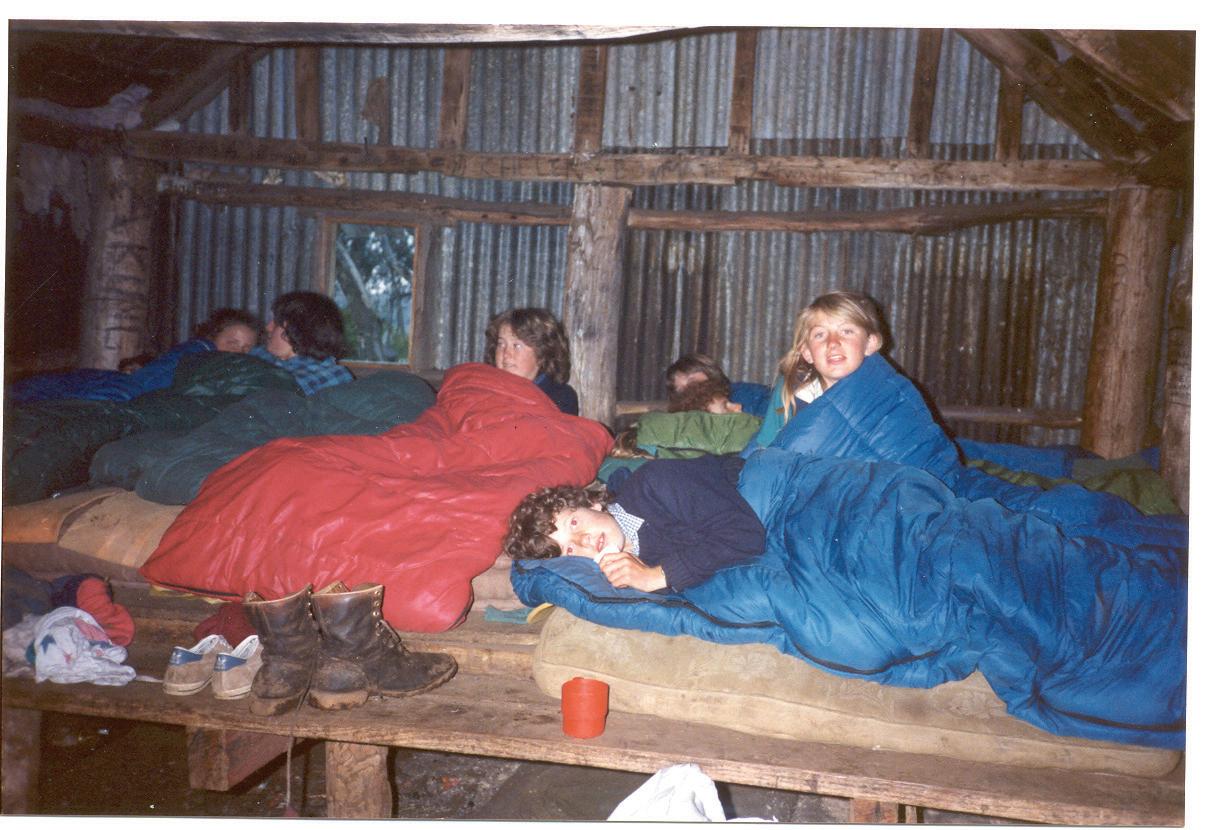
 – Catrina Collins (K Unit, 1982)
– Catrina Collins (K Unit, 1982)
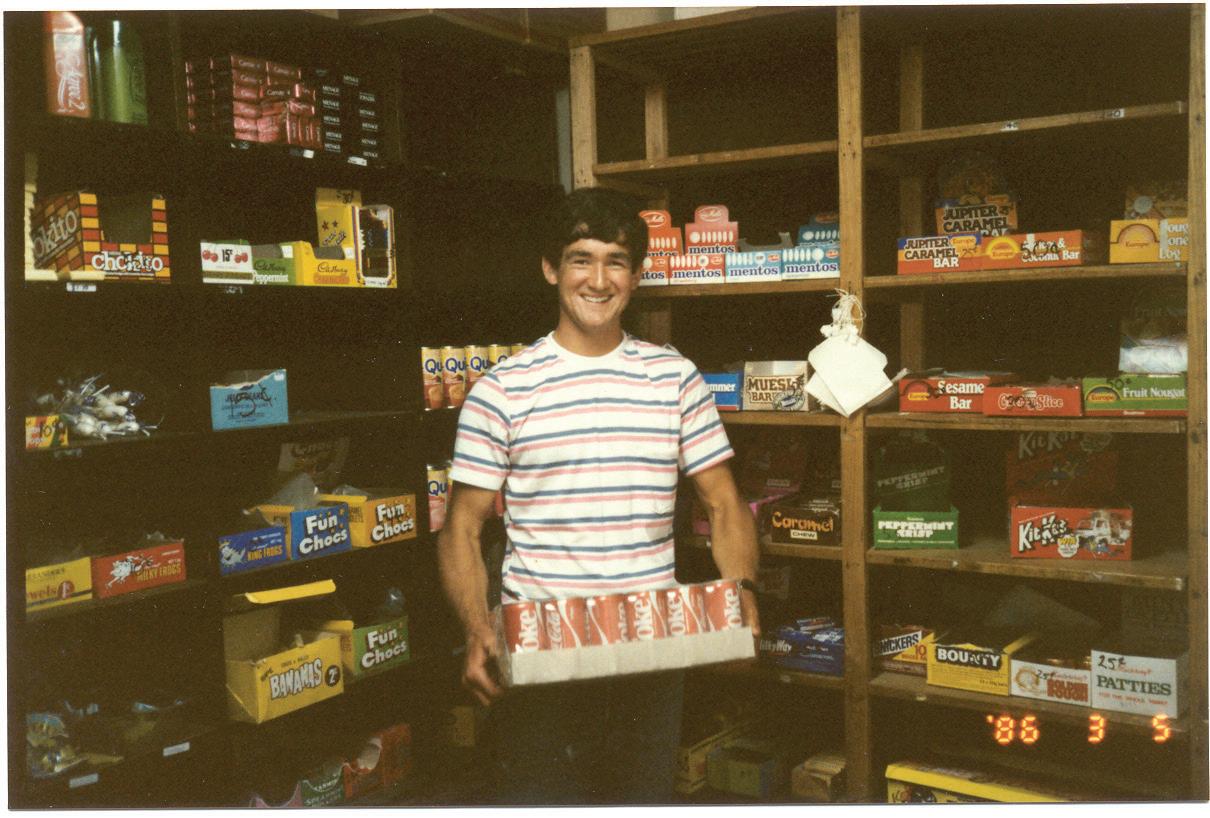
I wanted every child to feel that intense sense of mystery and excitement that I felt when I was there. We didn’t know what would be over the next ridge. Would we find a glacier dripping with icicles, the perfect corner for casting a fly for trout or strangers panning for gold in a creek? In spite of the pressure of liability, logging and tourism, I wanted to keep that feeling from the early days, of the sense of wilderness and of following your own dreams, because we are all dreamers at that age. You may be sitting under the stars around a campfire and swapping scandalous stories, but you are actually thinking to yourself, ‘what an unbelievable world we live in’.
– Jeremy Madin (D Unit, 1961; Head of Timbertop 1983-87)



“I could see the changes in them, especially in their self-esteem.”
Timbertop through the Decades

1990 s
For me there was more to Timbertop than the fabric of the buildings or the shape of the hills. My driving force stemmed from the kids; it was they who defined my time, who unknowingly shaped my experiences. As I pushed them, I was pushed. When I sought to inspire them, I was inspired; and so it was when I sought to humour, teach or to guide. Much pain, much hardship, a lot, because genuine reward, a reward of such magnitude, demands it.
– Barney Buntine (Timbertop Staff 1996-98)
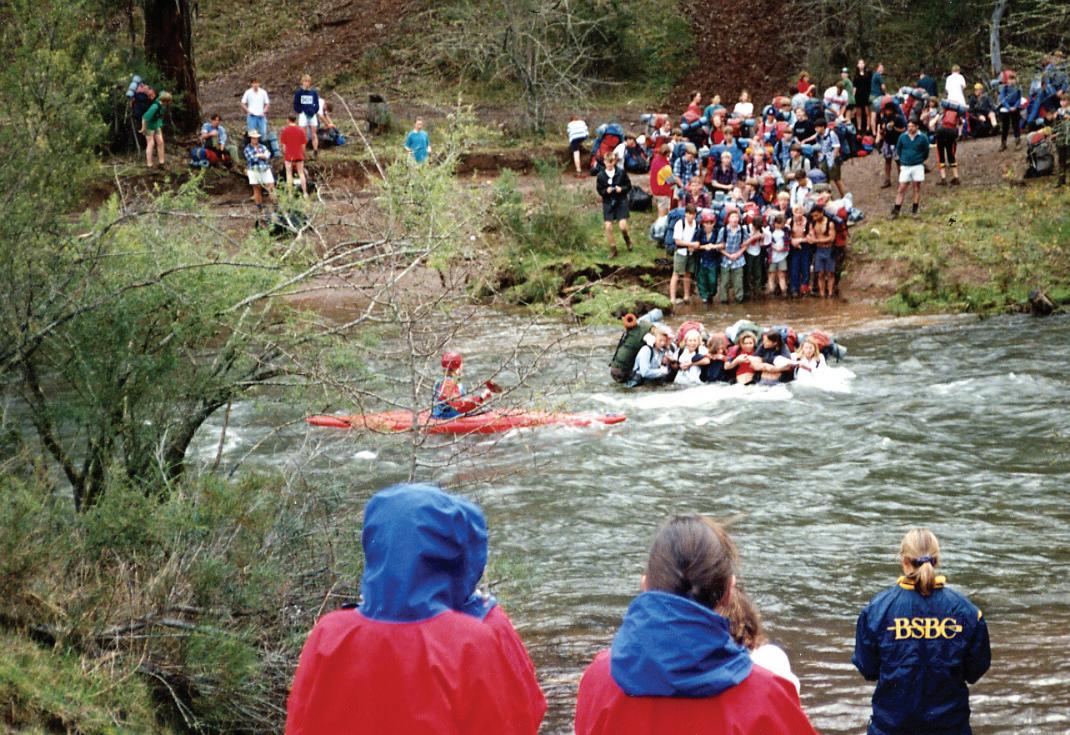

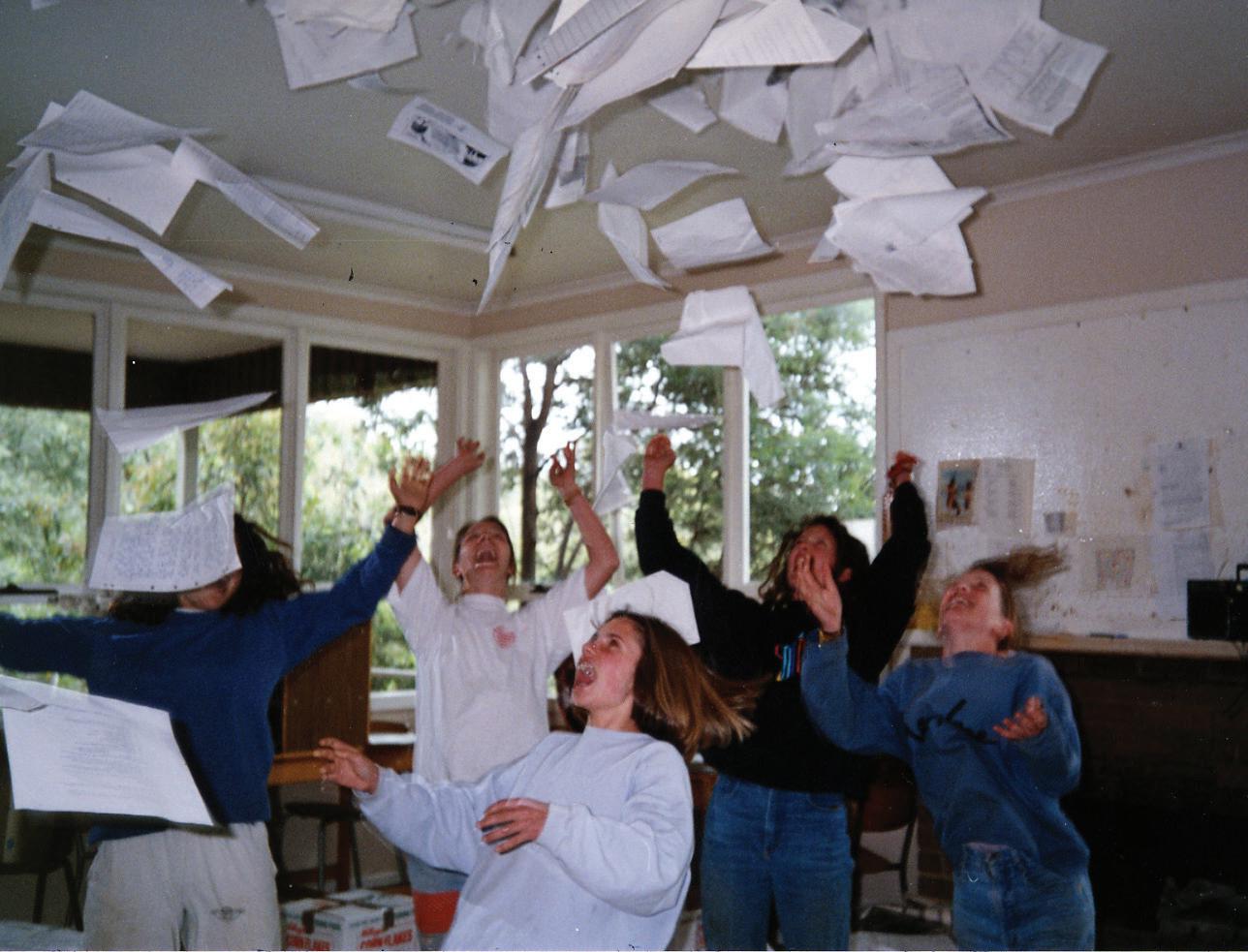
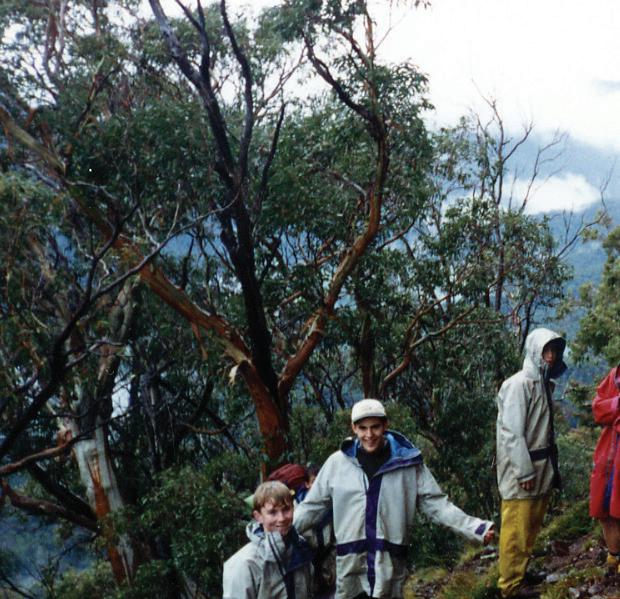
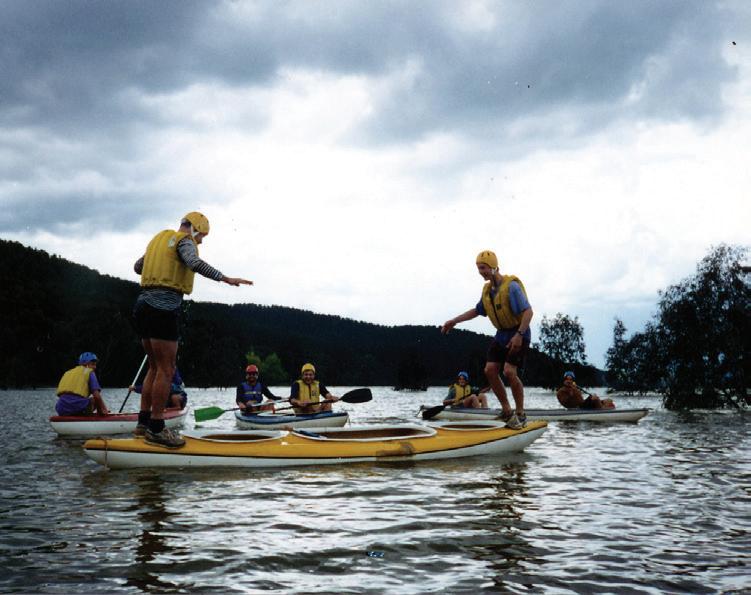




“Running, canoeing, skiing, chopping wood, and so many hikes in the surrounding hills.”
During the A Unit hike, we met heavy snow on the Bluff. Someone was unable to continue and began showing symptoms of hypothermia. Together as a group of boys who did not always get along, we managed to get him to shelter and into a sleeping bag and looked after him for two days while he warmed up again, before negotiating an alternate route back to our pickup location. It demonstrated to me that people can respect, emphathise and care for another human being in trouble, regardless of friendship.
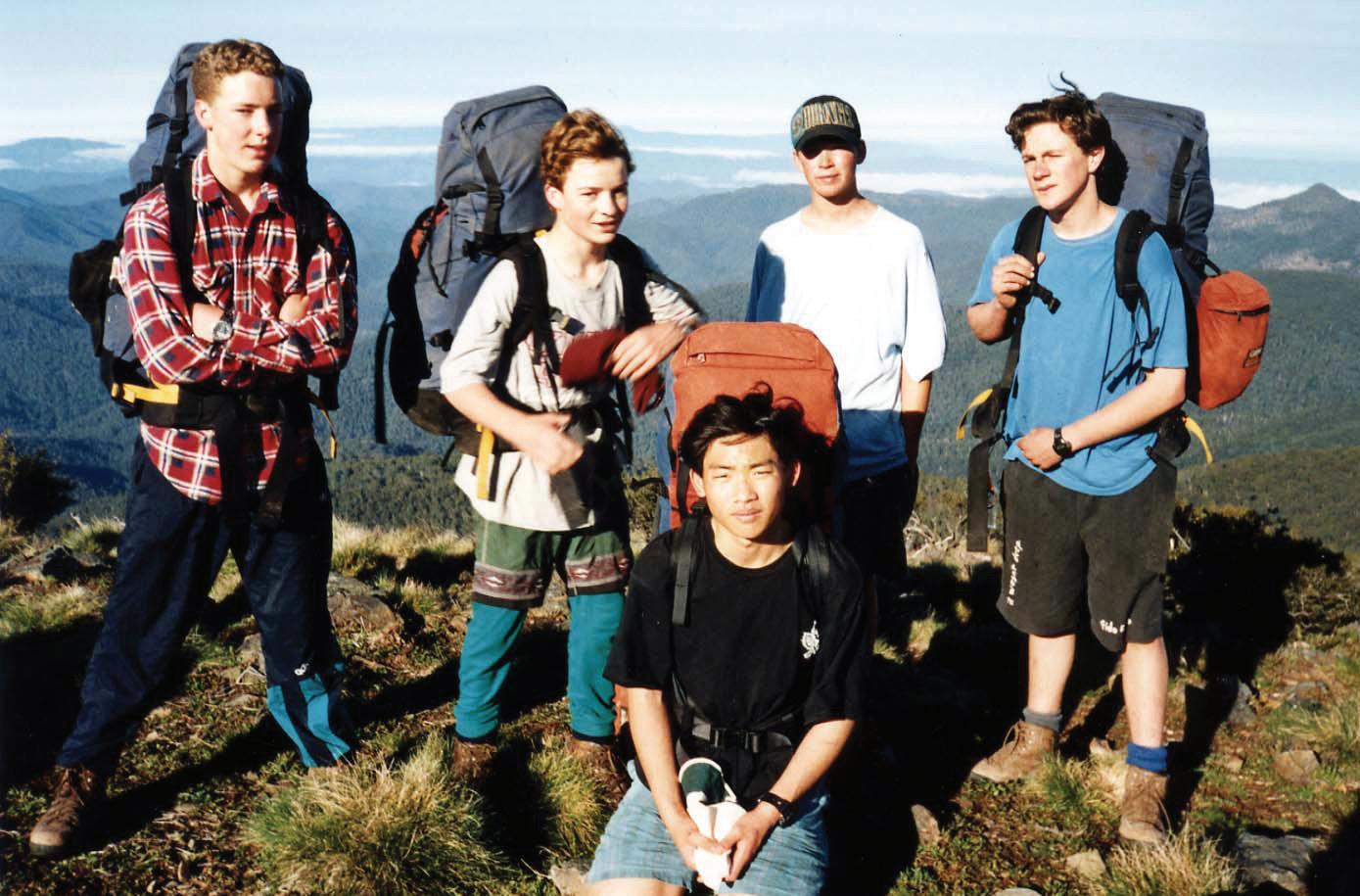
–
Tom Macknight (A Unit, 1995)
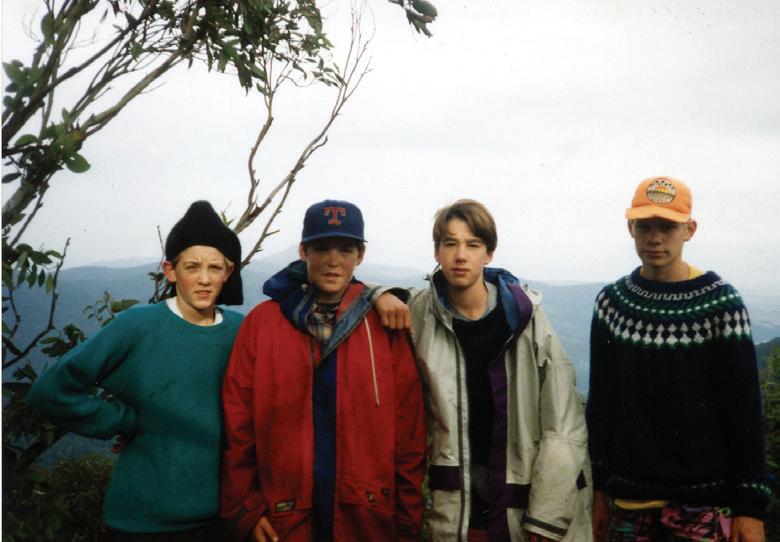
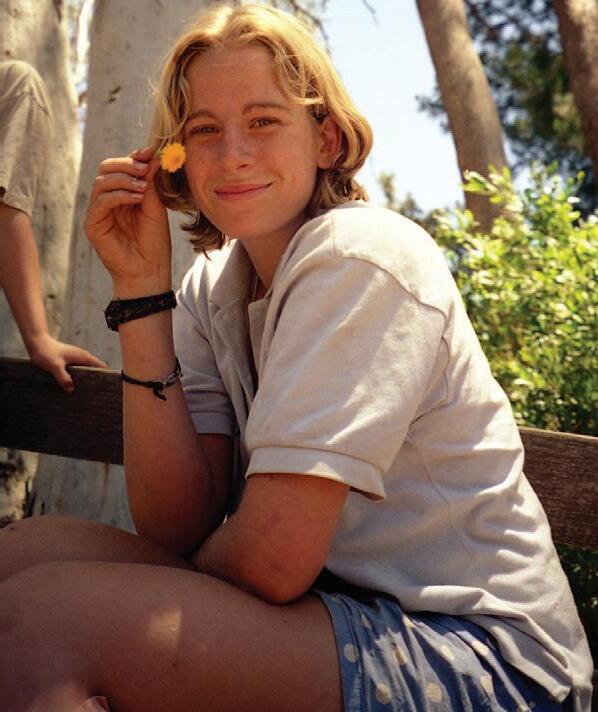
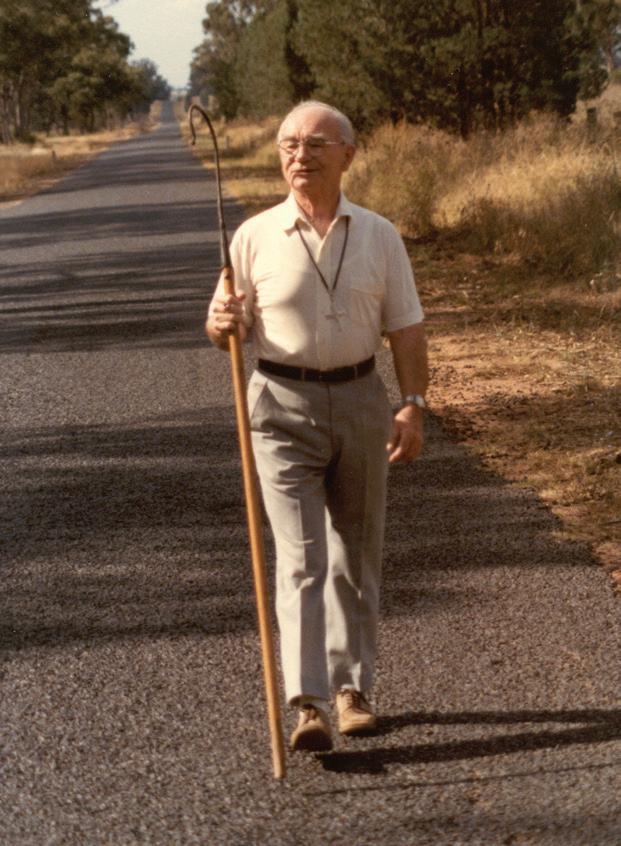



The thing that was so special about Timbertop was that all the staff and assistants did everything with us. The staff ran, hiked, skied, and did jobs with us as well as teaching us. Running was a nightmare for many of us. The best part of a run was the finish. Everyone shouted out encouraging words, cheered and clapped, and shared stories of triumphs and mishaps. We learned that we could often achieve far more than we thought we could.
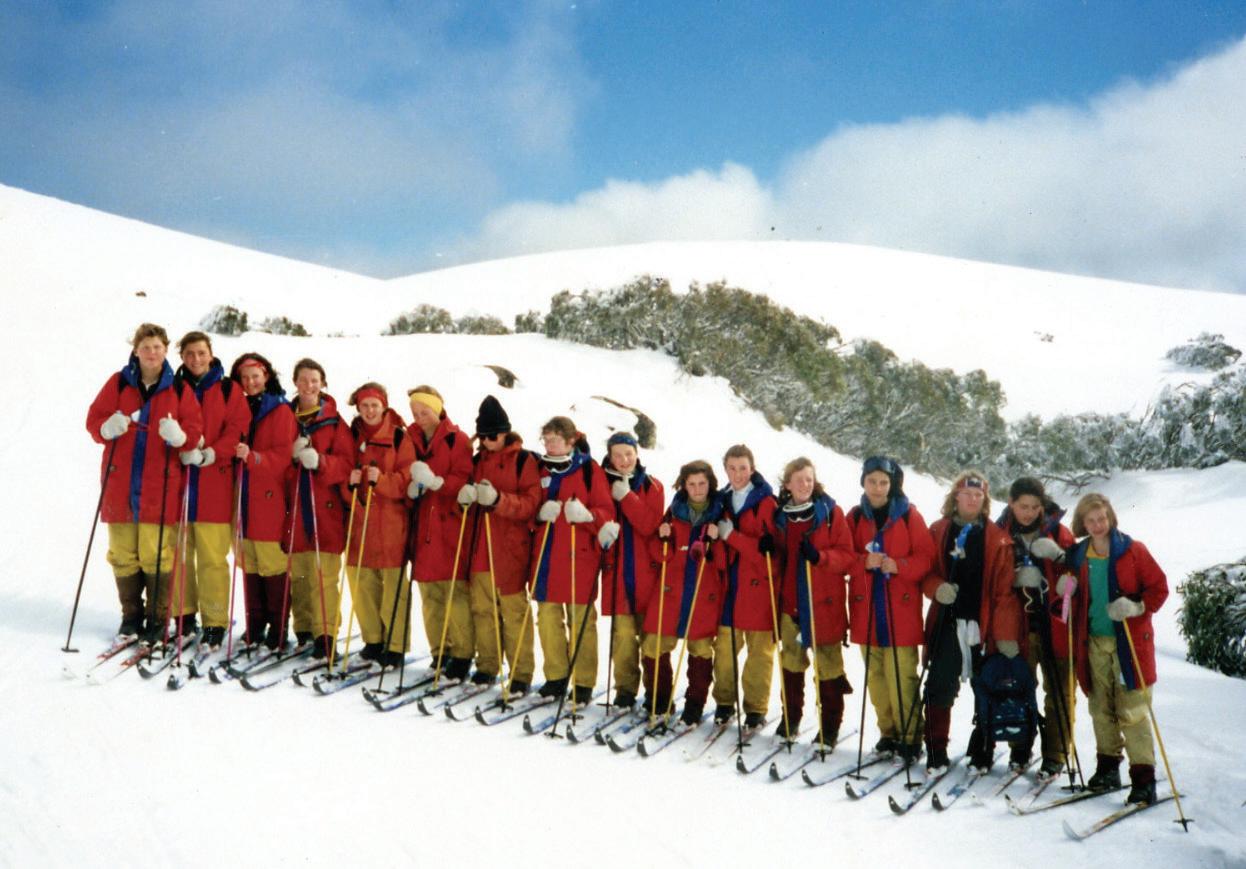

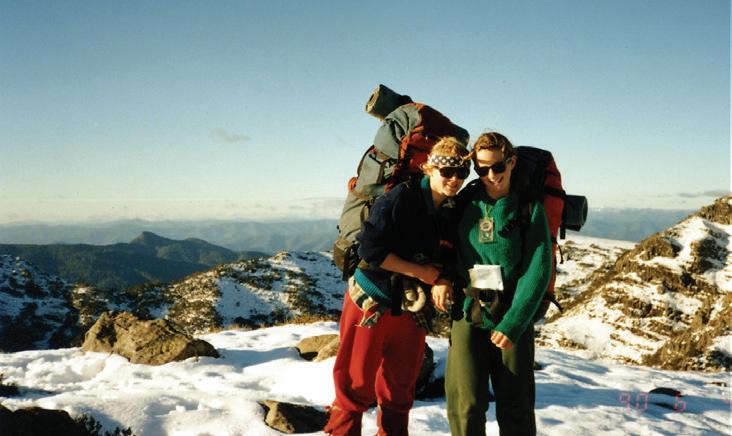 – Alisa Nana (J Unit, 1998)
– Alisa Nana (J Unit, 1998)



“The atmosphere amongst the students is very, very different from anywhere else.”
“It’s what you learn without knowing that you’re learning.”
Timbertop’s first Chaplain, Ken Leslie OBE (Timbertop Staff 1953-58) returned in 1992 to visit his son, Simon Leslie (Head of Timbertop 1988-94)
s
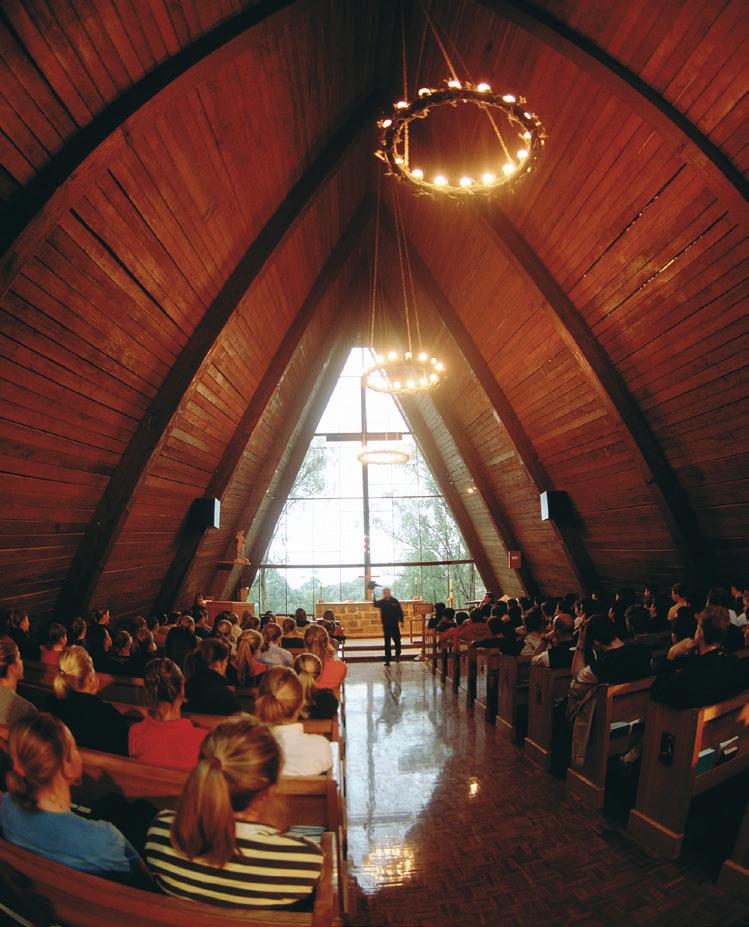
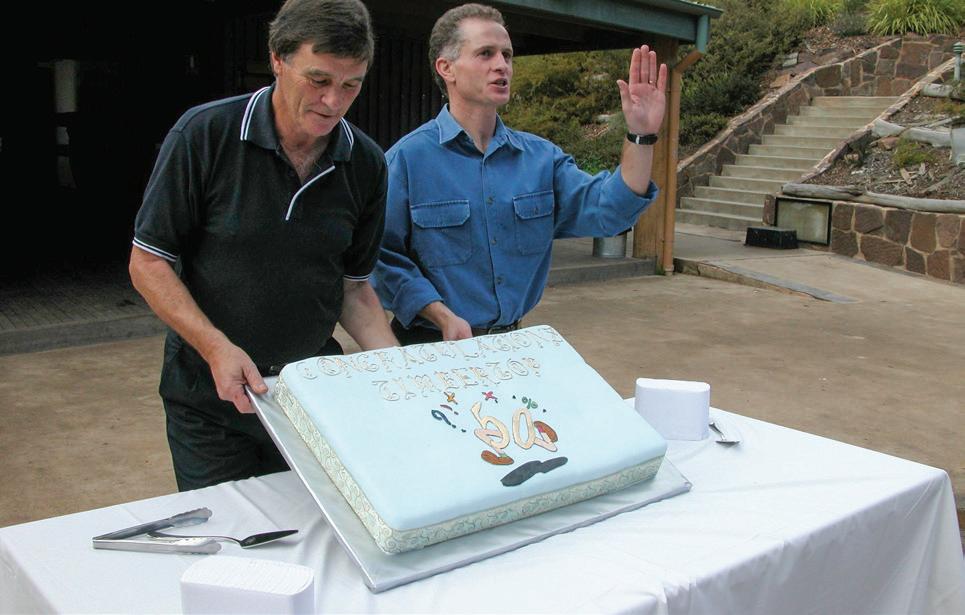

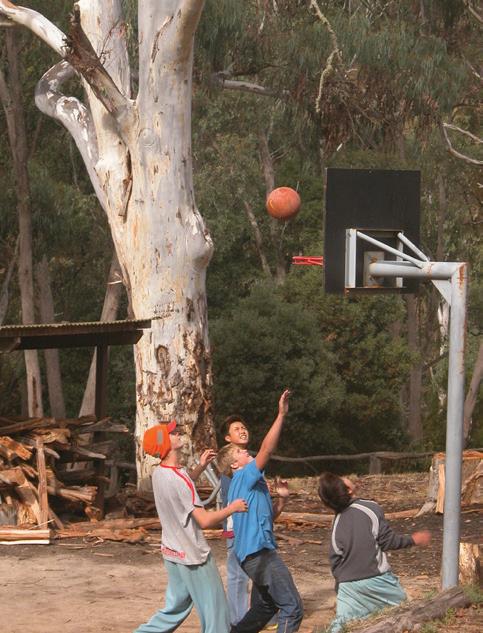
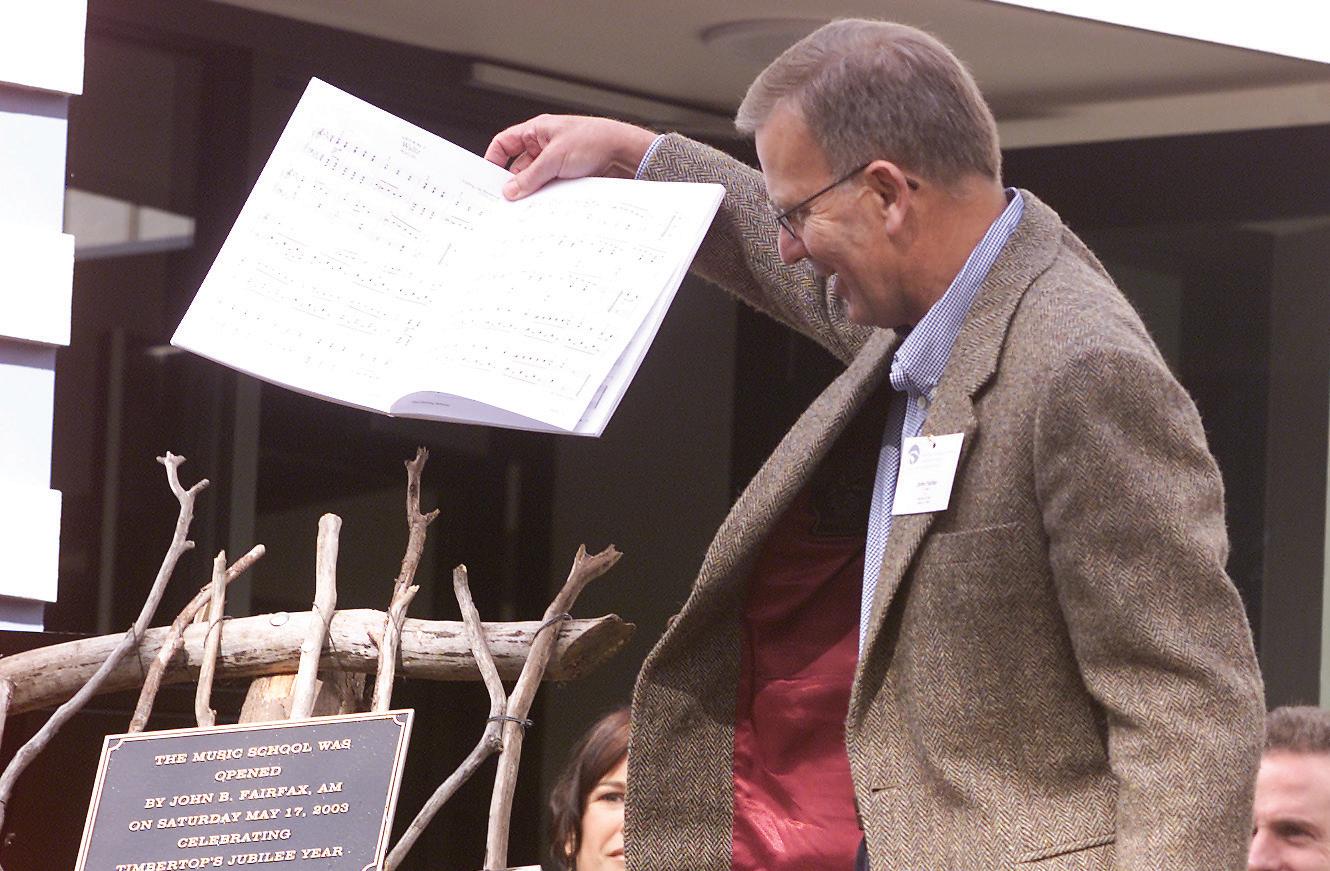


Unit life is something quite different, something quite unique and something quite special. Unit life is for life; you make great friends and memories for life.
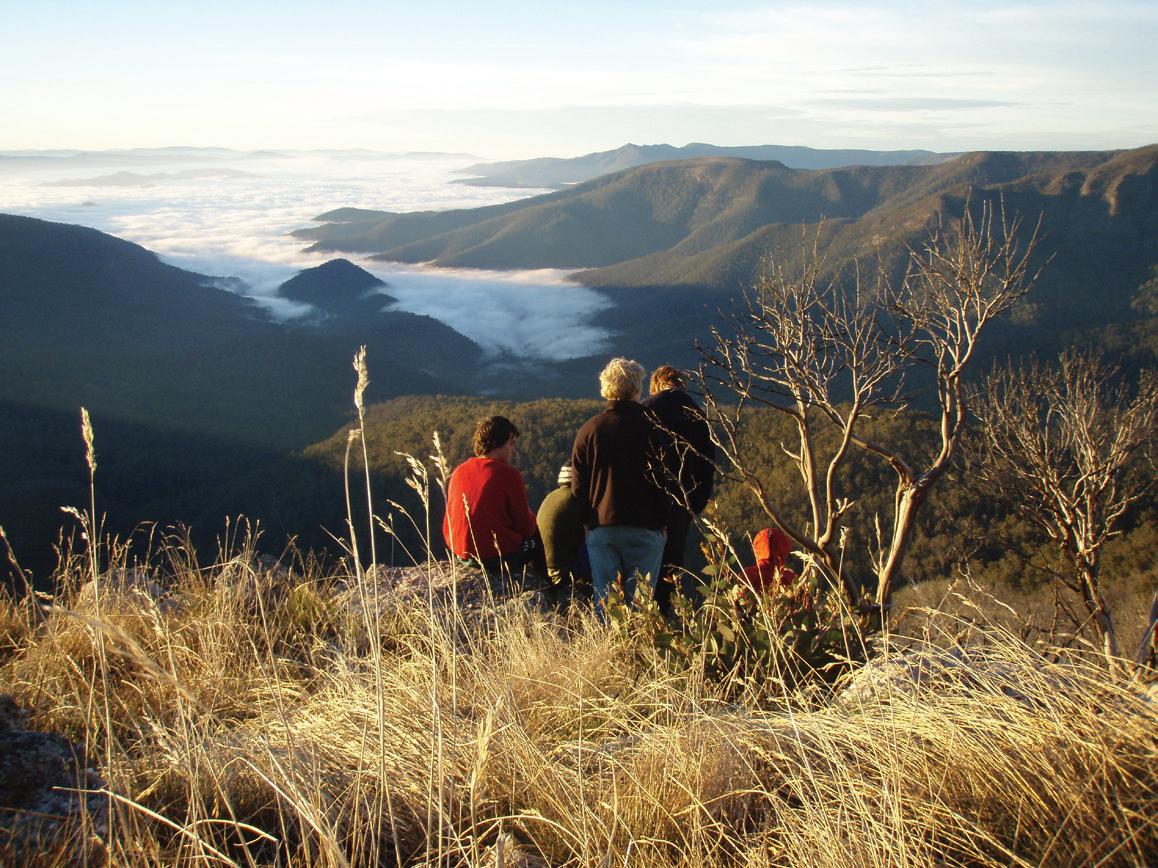

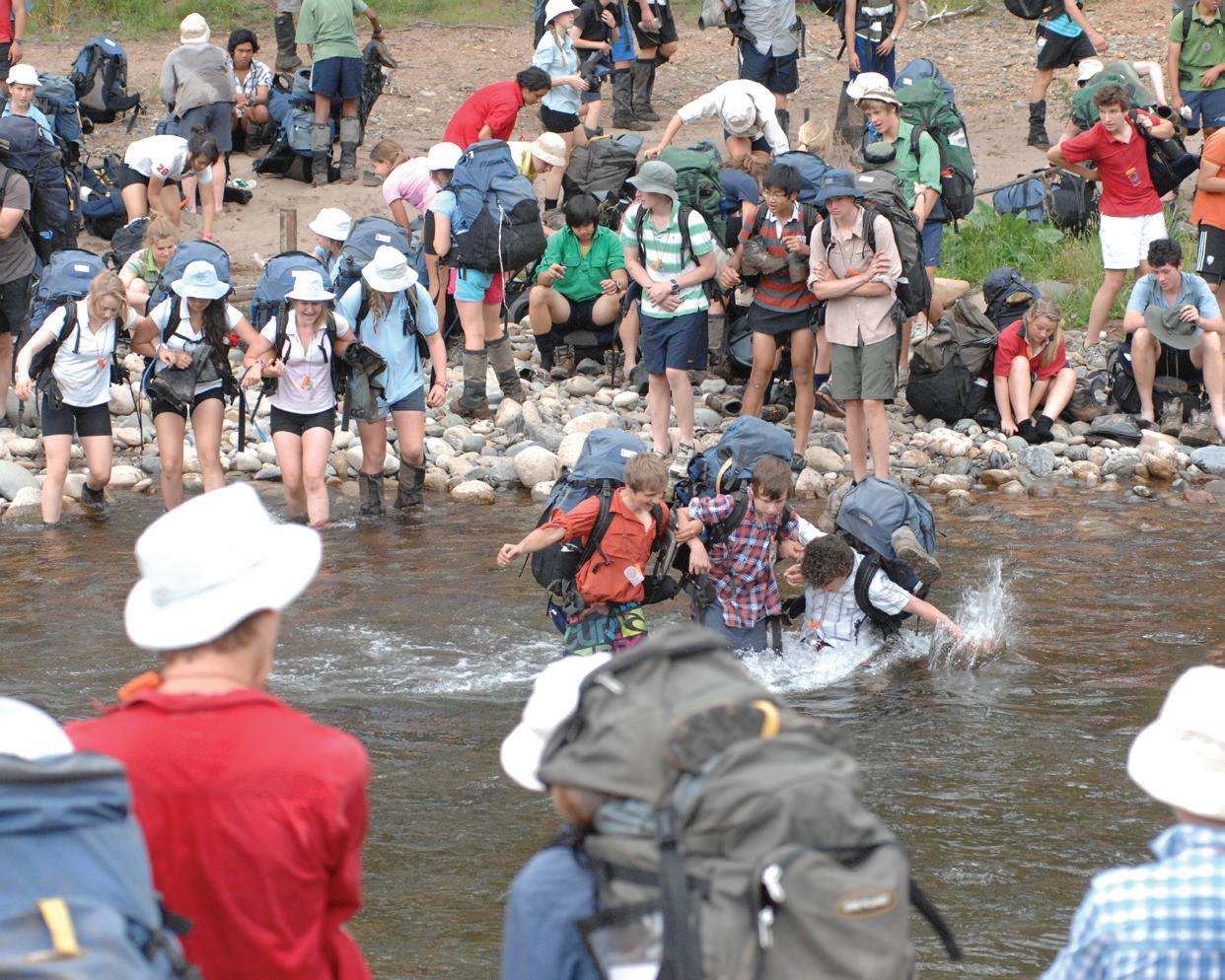
– Scott Miles (F Unit, 2003)
“It’s not just about ‘self-reliance’ and ‘initiative’ but a sudden experience of understanding oneself.”
Timbertop celebrated its 50-year golden jubilee in 2003 with the opening of the Music School
2000
Timbertop through the Decades
Timbertop has its own unique flavour of Outdoor Education. By spending so much time outdoors, students build skills, knowledge, and endurance. That is not to say that they don’t get lost, burn their dinner, get wet in their tents, forget to sign logbooks, or get blisters, but they learn from each experience. They also learn to appreciate magical sunrises and sunsets, beautiful views, ferocious weather, snow and snowball fights, rivers and rapids and big mountains.
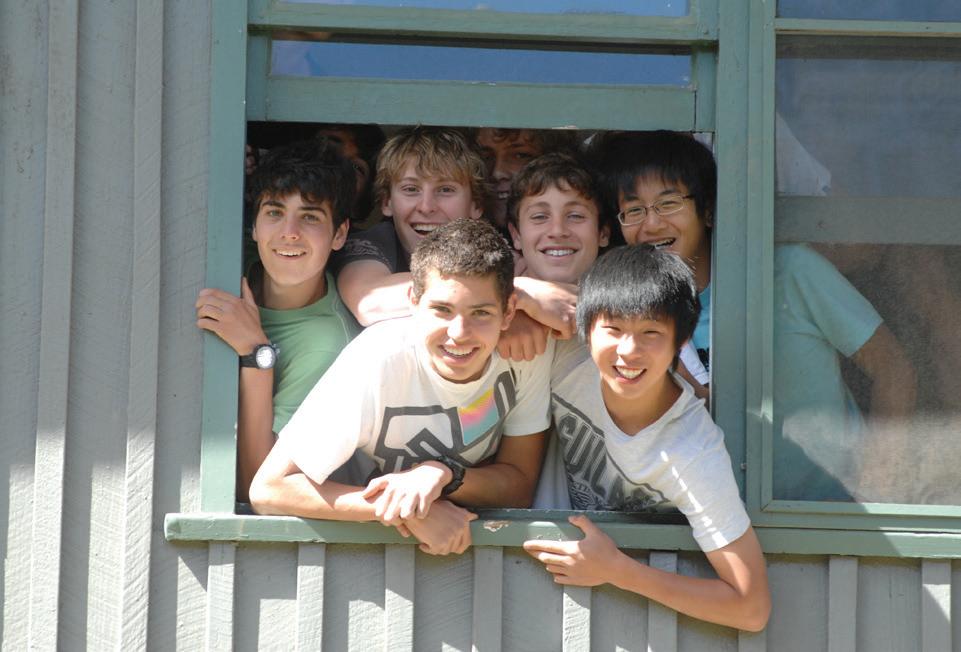 – Rachel Dobson (Head of Outdoor Education 2003-05)
– Rachel Dobson (Head of Outdoor Education 2003-05)
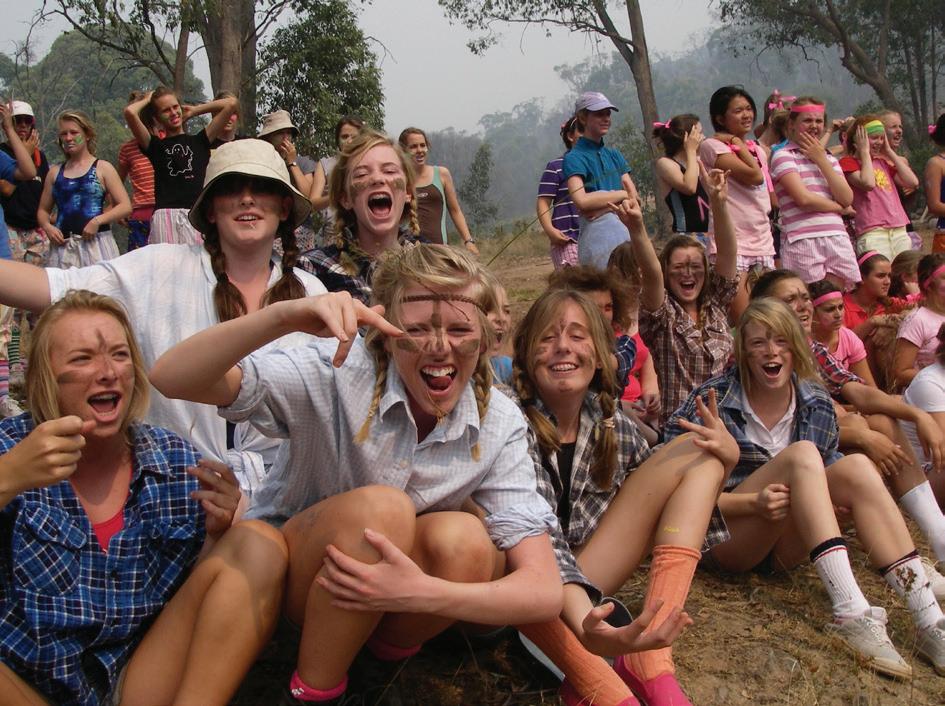
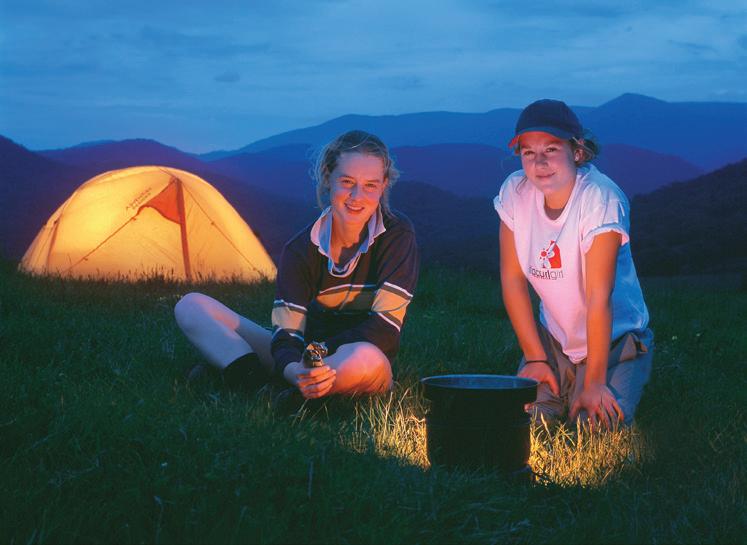
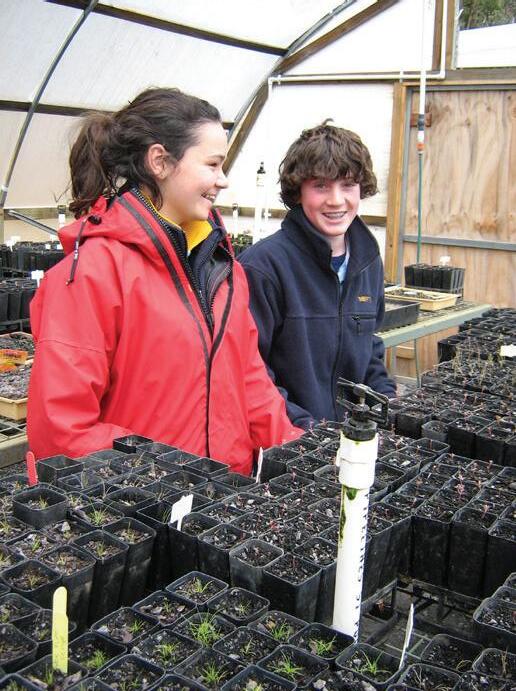
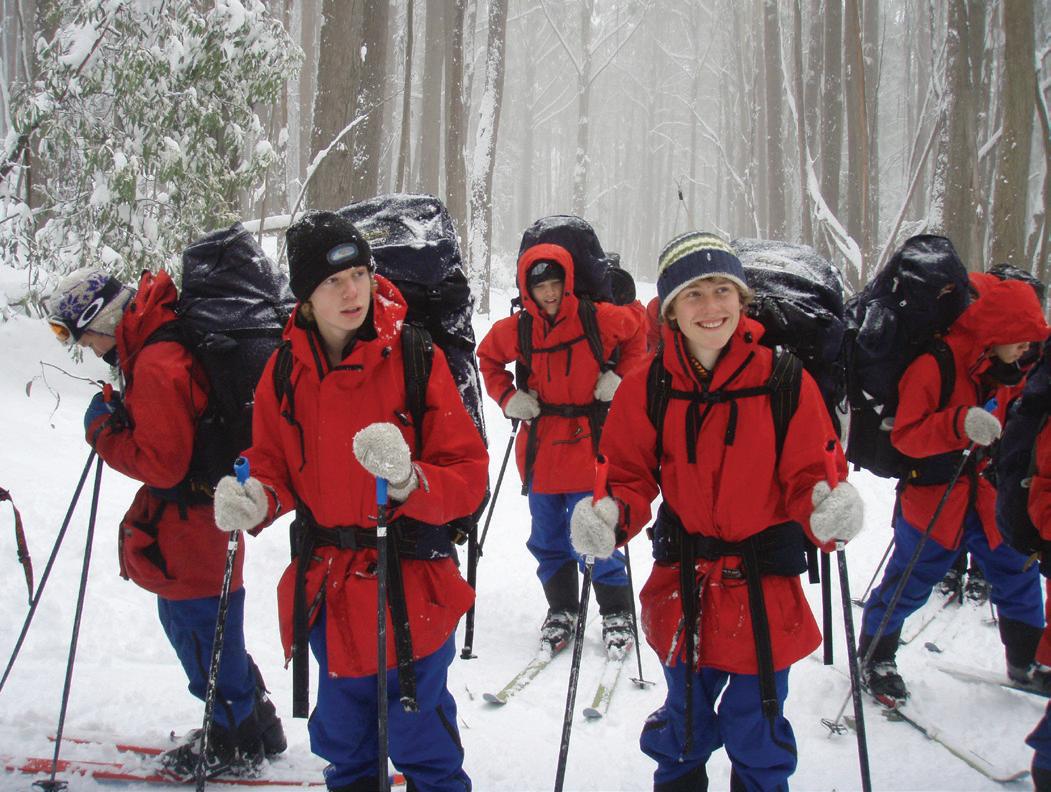
Having had the privilege of contributing in a small way, I can honestly say that Timbertop is more important than ever for future generations of young students. The concepts of co-operation, teamwork and community are crucial. The building of considerable layers of resilience as protection from the ebb-and-flow of life is still vital. The ability to bounce back in the face of adversity is essential. These skills are necessary for us all to operate in an empathetic, caring and just world. Young people need Timbertop or institutions like Timbertop.

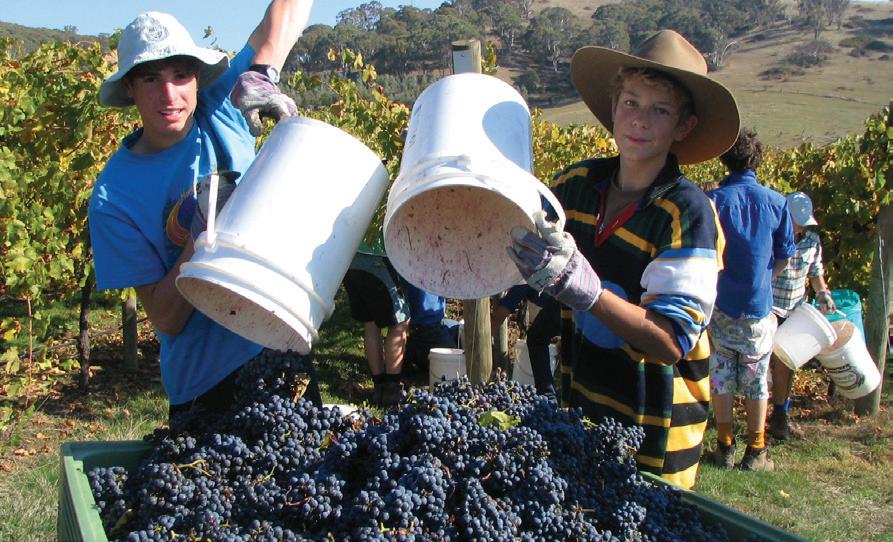
– Roger Herbert (Head of Timbertop 2006-16)
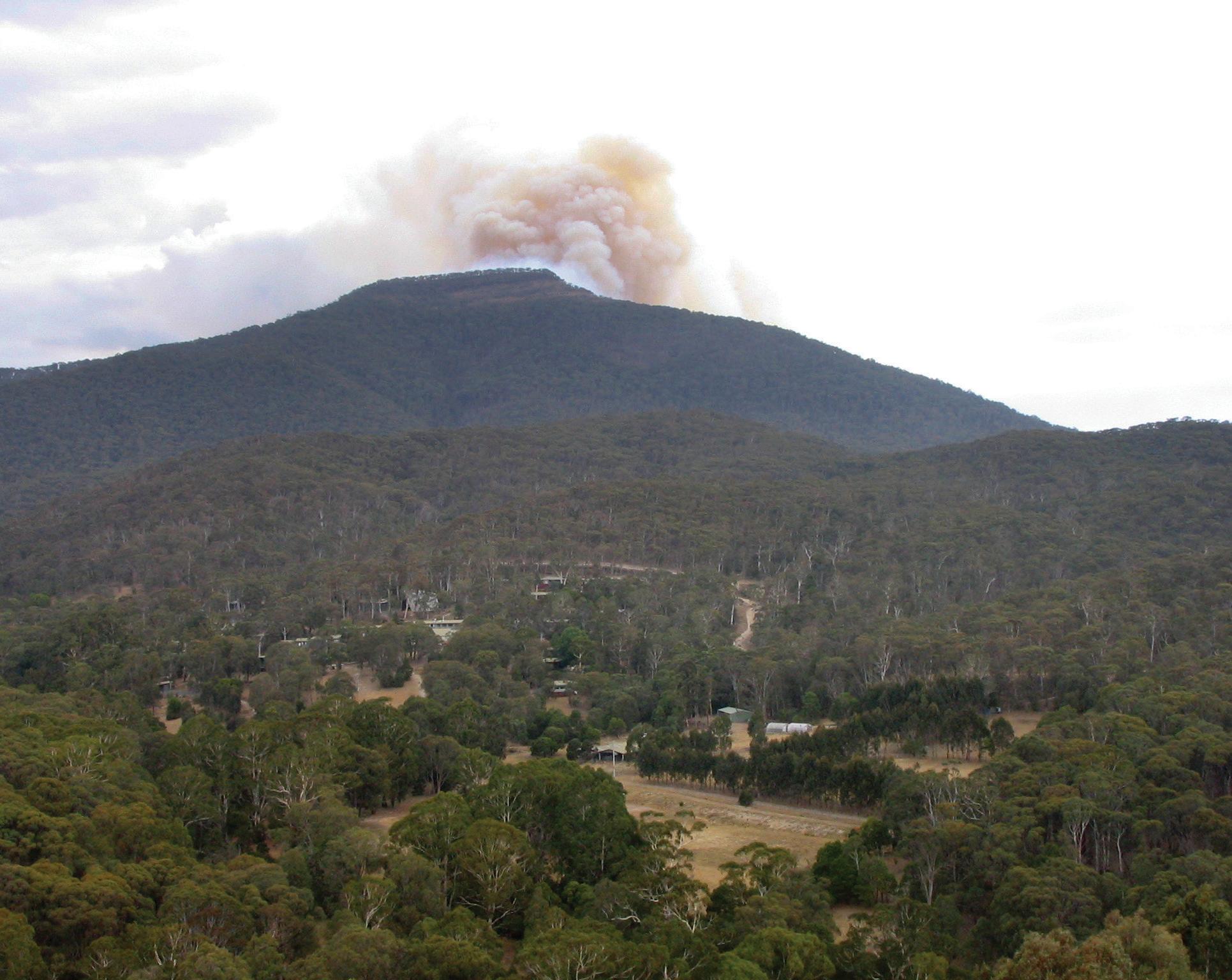


“What was most rewarding was the feeling of accomplishment.”
Bushfires swept through Victoria’s high country in the summer of 2006/07
The first Timbertop Merlot was produced in 2001
Timbertop through the Decades
Timbertop is a truly amazing place with an outstanding programme to encourage students to give everything a shot. But without the strong community that exists at Timbertop, it would not function properly. Relationships are so important at Timbertop. From day one, I always had a sense of belonging and felt as accepted in O Unit as I do in my own family. When you are living, eating, running, working, hiking, breathing and sharing similar experiences to 14 other girls your age, a really meaningful connection is made.
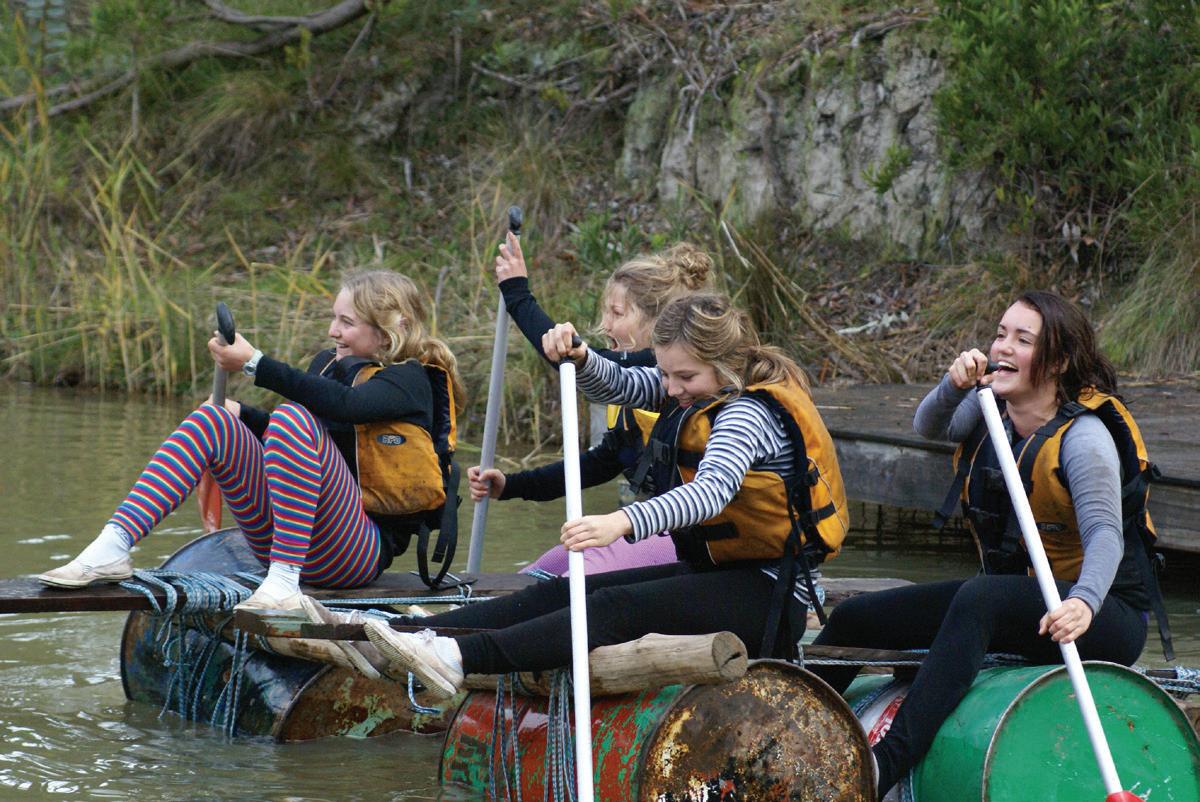
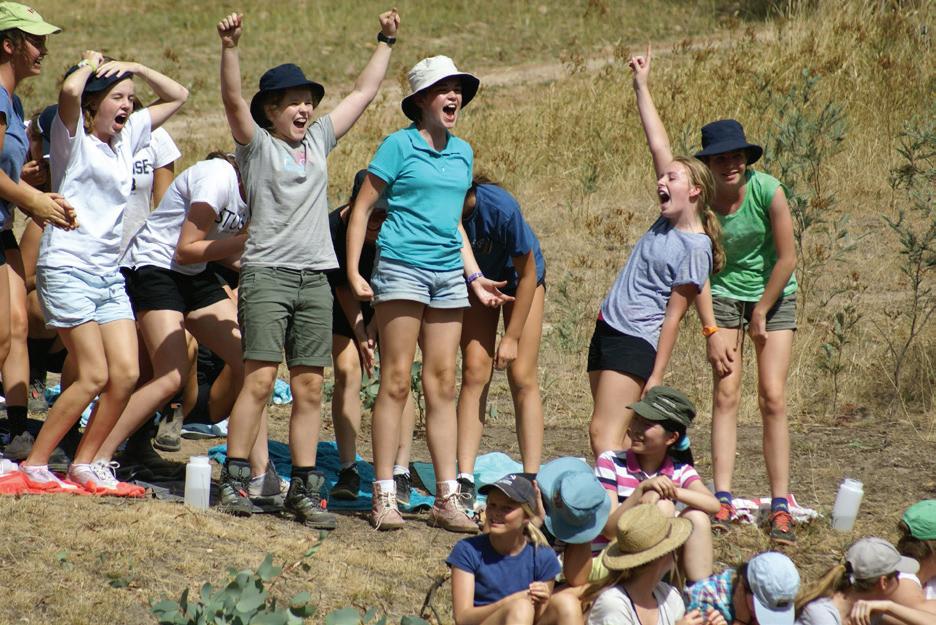
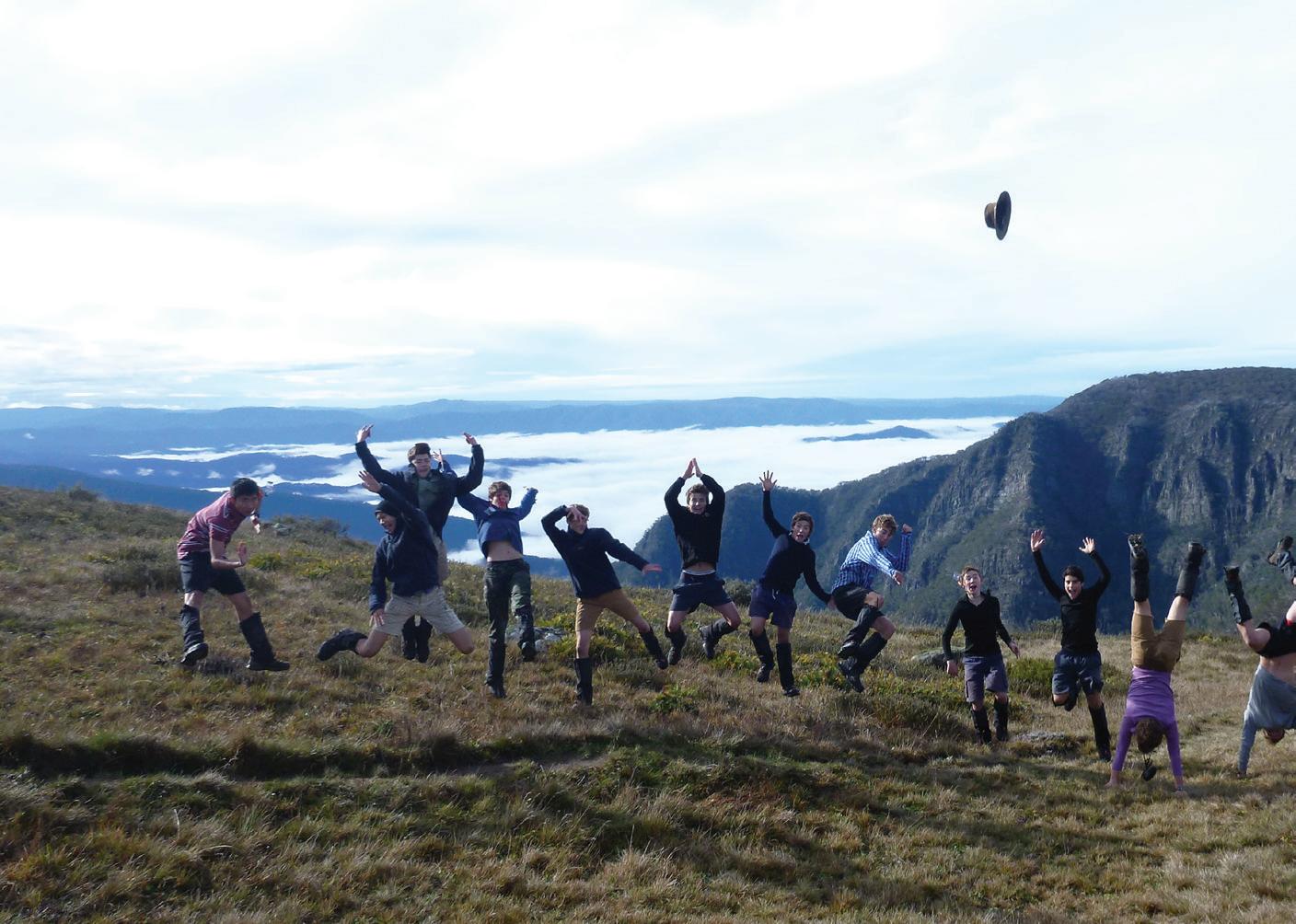
 – Coco Hynes (O Unit, 2013)
– Coco Hynes (O Unit, 2013)
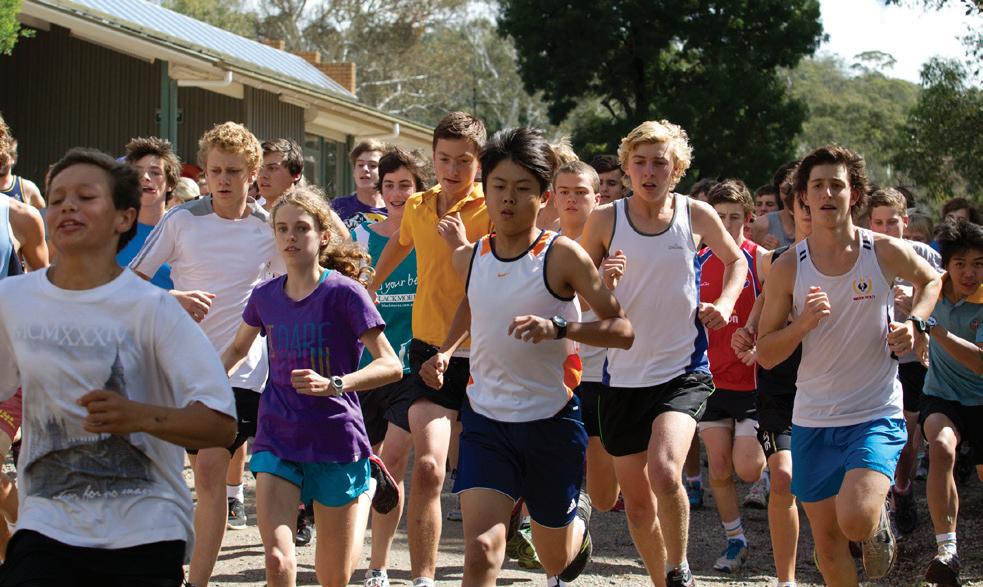
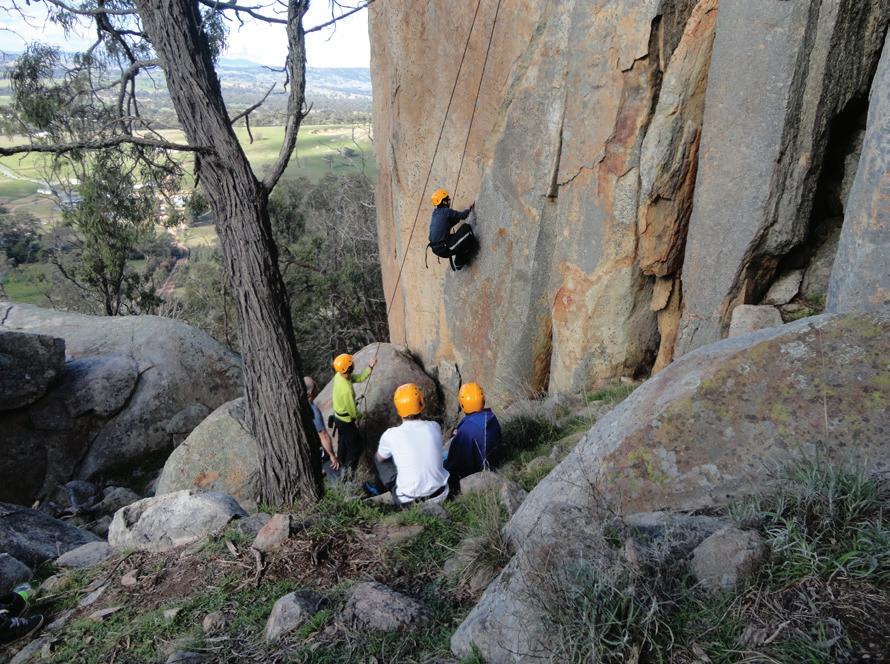
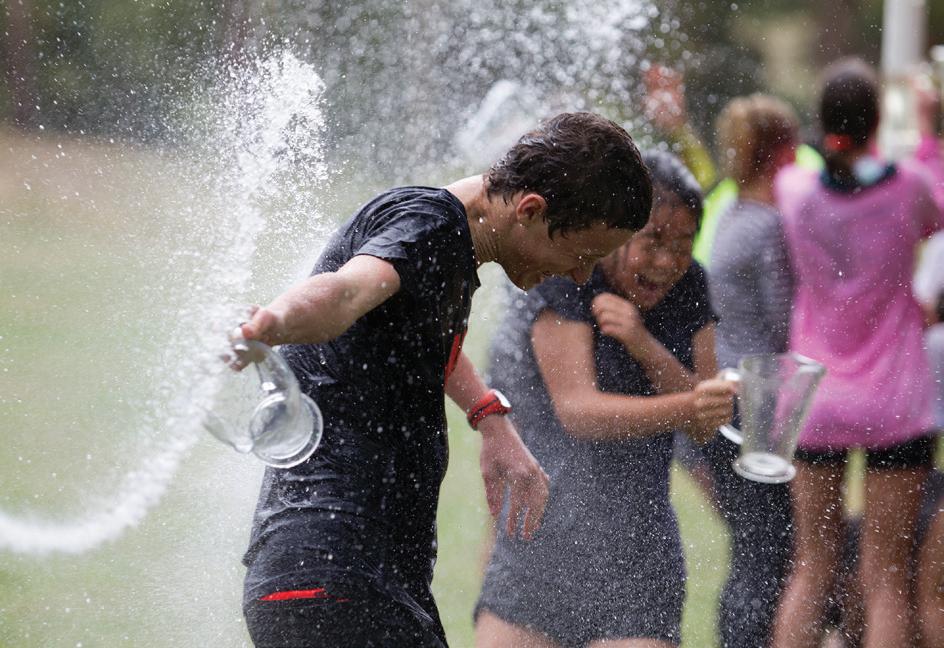


2010
s“Whenever I am presented with a situation that seems tough, I think back to Timbertop.”
There is an insistence about the pace, energy and excitement of the place that is impossible to ignore. It comes from a communal awareness that our time here is fleeting. There is much to do, much to be achieved and only so long in which to achieve it. Students and staff feel the weight of living up to their potential as much as they feel the weight of their pack-straps. Seeing young people rise to these challenges in the face of self-doubt is what has kept the wheels turning in this programme for 70 years.
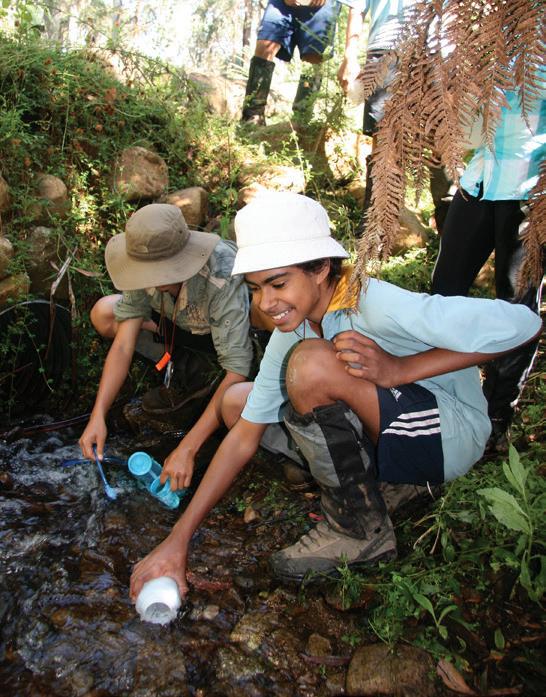
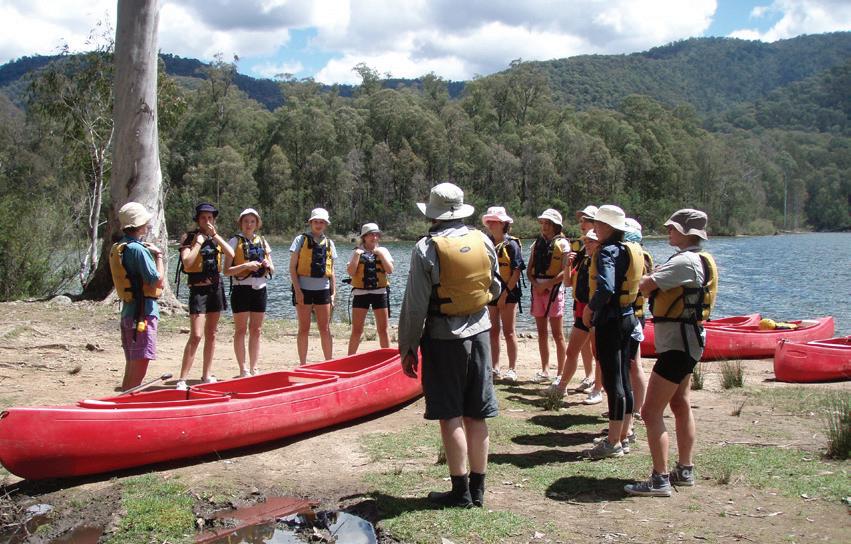
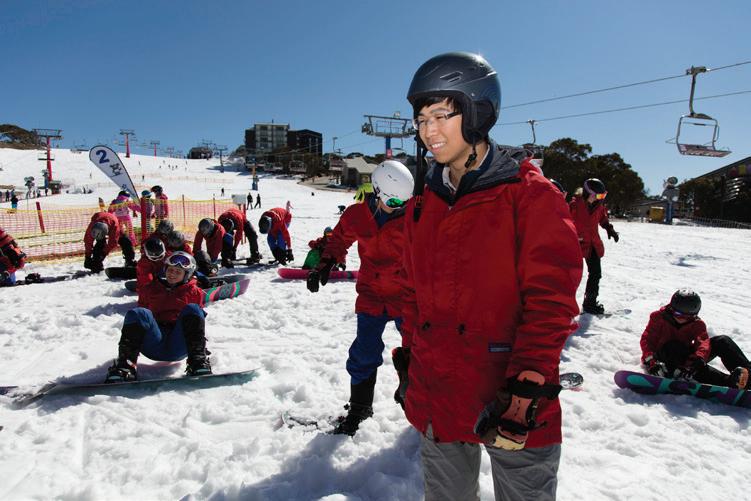
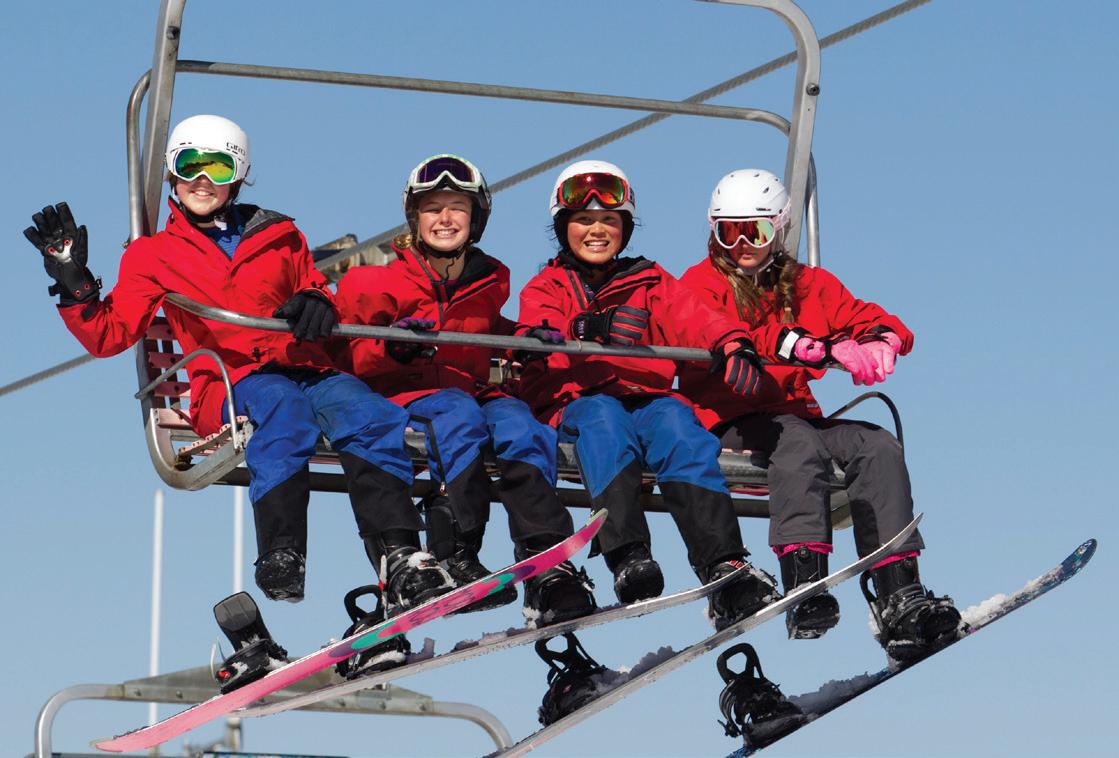
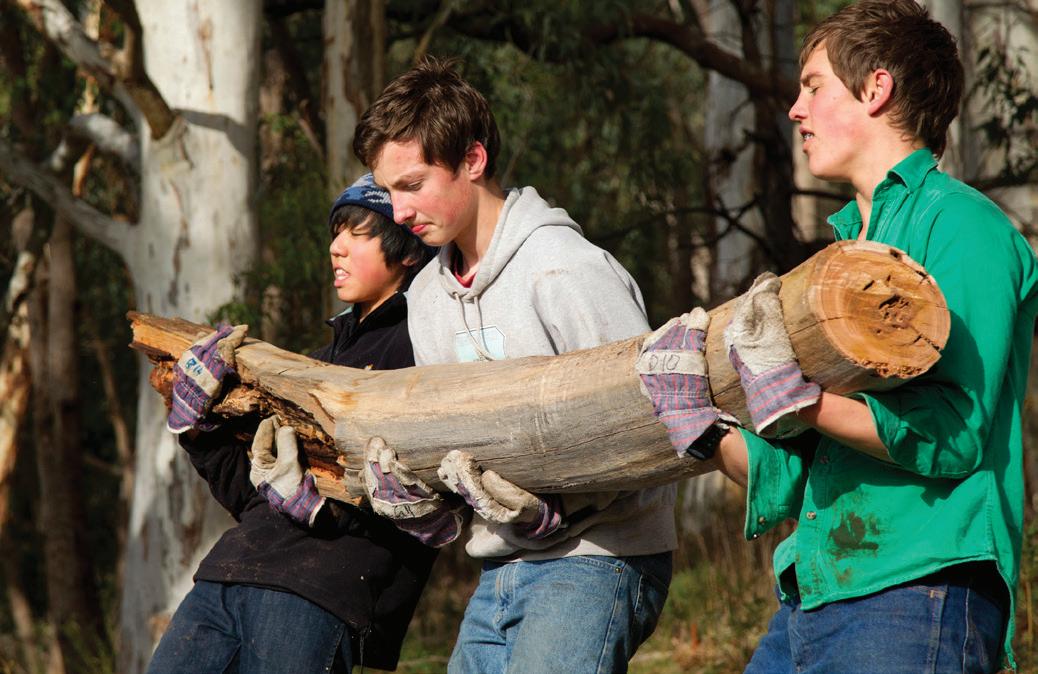


I grew up looking at Mt. Timbertop out of my bedroom window, so I can’t remember a time I didn’t want to go there. My grandfather (Robert Ritchie, P’49) laid the foundations of the first units and I ended up sleeping in the same bed in B Unit as my father (David Ritchie, P’80). I loved every moment of my Timbertop year: the hiking, the running, unit life. I thrived in an environment where I could push myself.
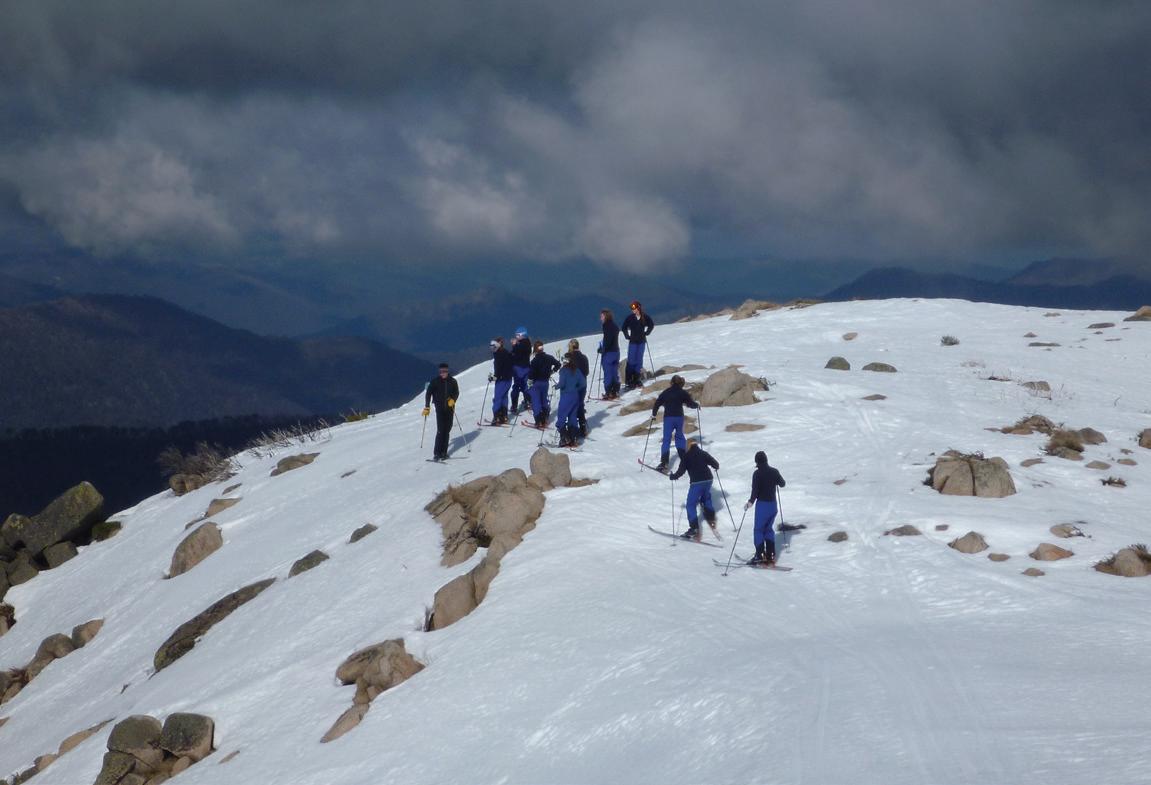

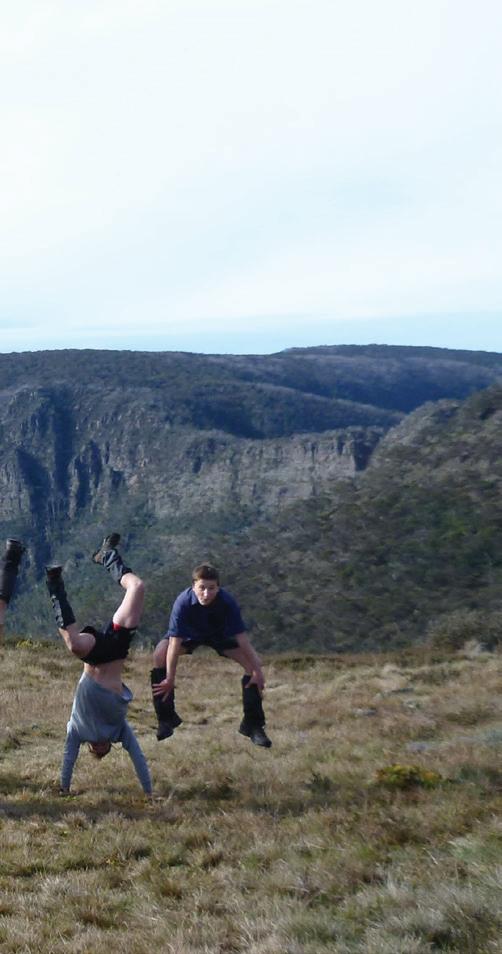
“Adventure lights something in all of us... there is an instinctive response to facing and overcoming challenges in nature.”
“The challenges at Timbertop are authentic, unique and non-negotiable.”
– Tom Hall (Head of Timbertop 2016-22)
– Don Ritchie (B Unit, 2012)
The Timbertop Fire Bunker was opened in 2011
Timbertop through the Decades s
2020

Timbertop is complex. There are layers and lots of different ingredients. There is a really rich culture and community. You immediately feel like you’re part of something much bigger than yourself. That is the overwhelming sentiment –that you are contributing to something unique and special. That is really humbling and rewarding.

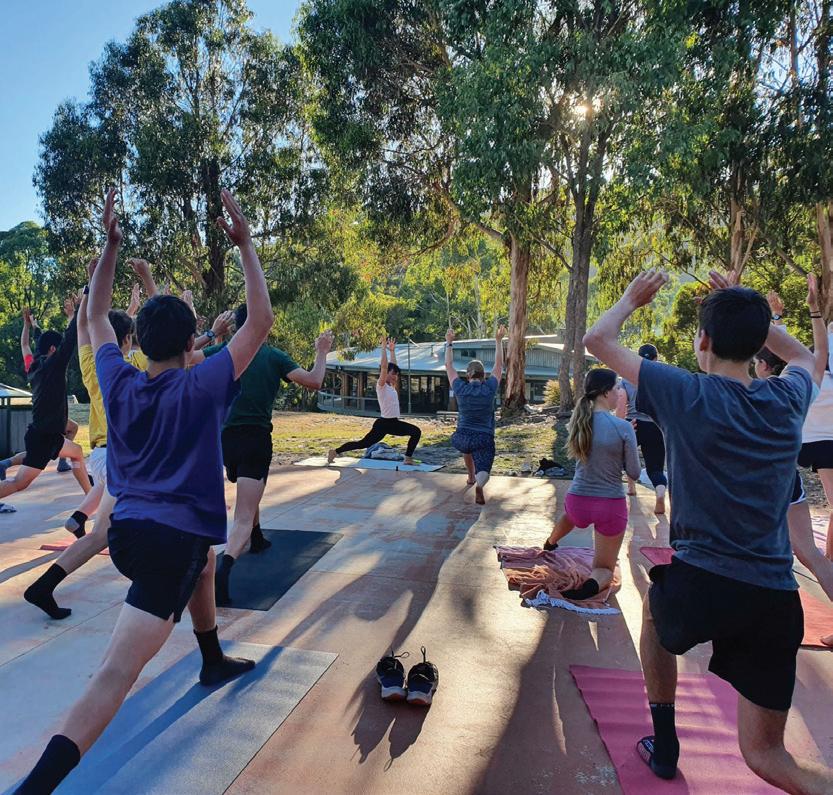


– Ross Hopkins (Head of Timbertop 2022-)

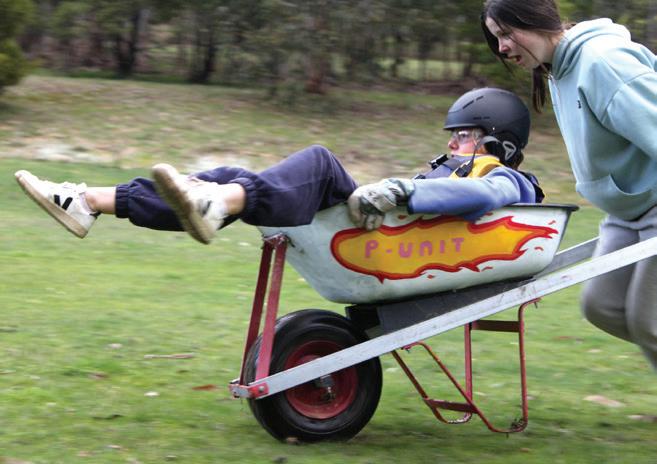
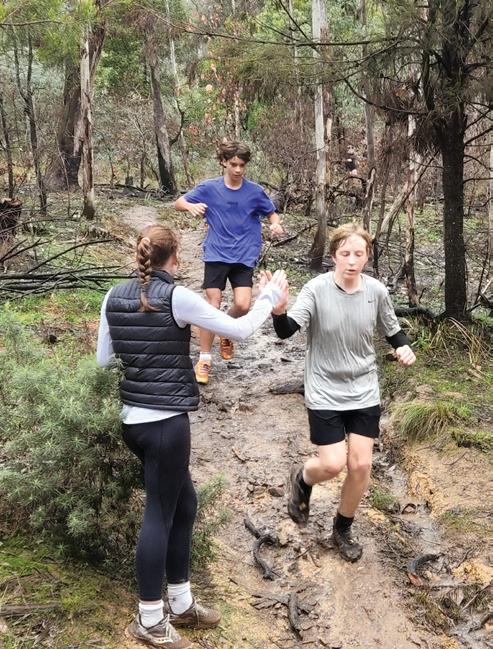

The serenity of being in a tent with just you and your thoughts is something everyone looks forward to. You’re able to relax and not stress about hiking, running, and living with 14 other people. Looking outside your tent and not seeing another person in sight has a particular tranquility that allows you to soak up the beaming sunset in the background.
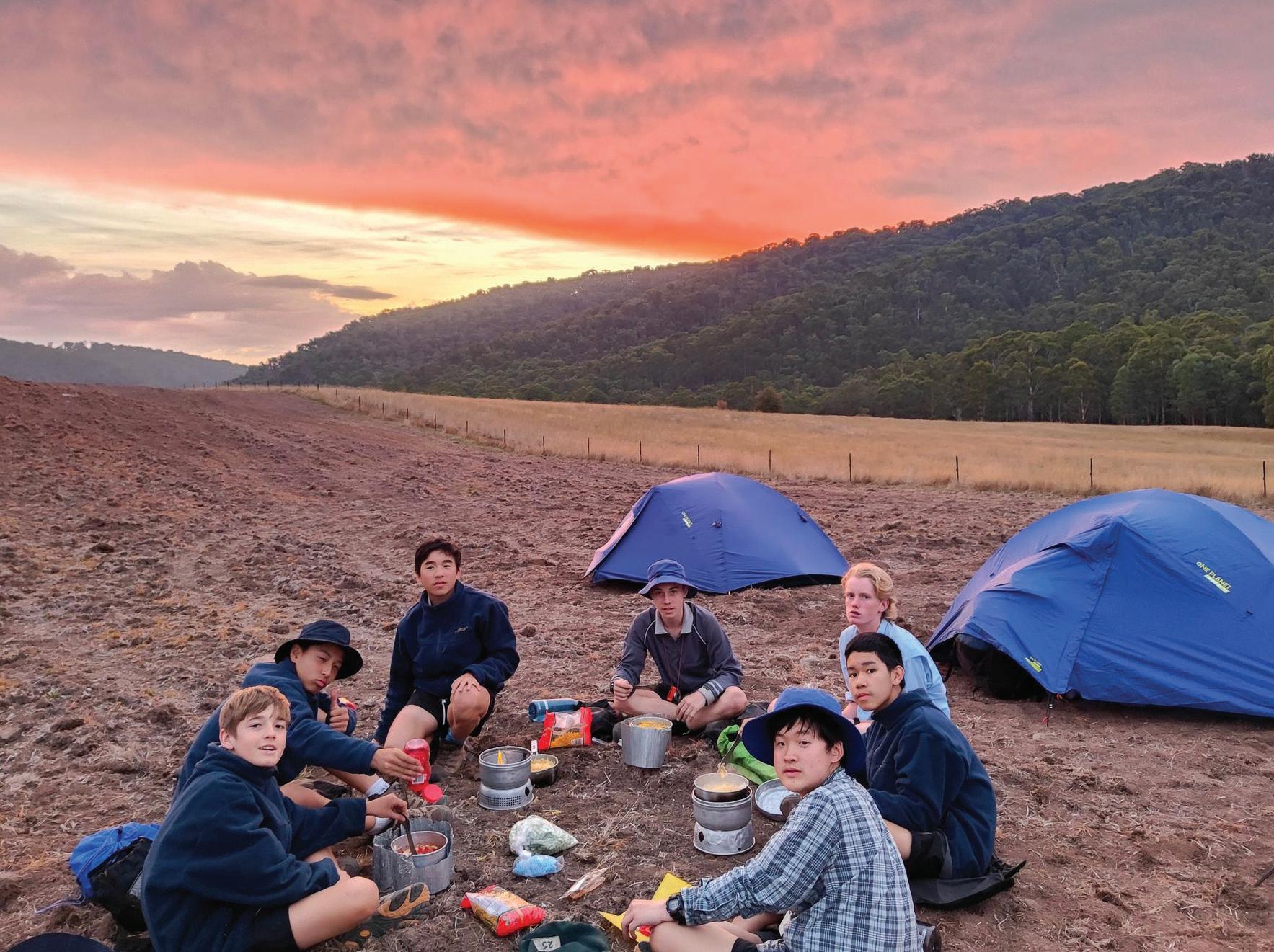

– Charlotte Andrews (L Unit, 2021) and Tilly Barnes (P Unit, 2021)
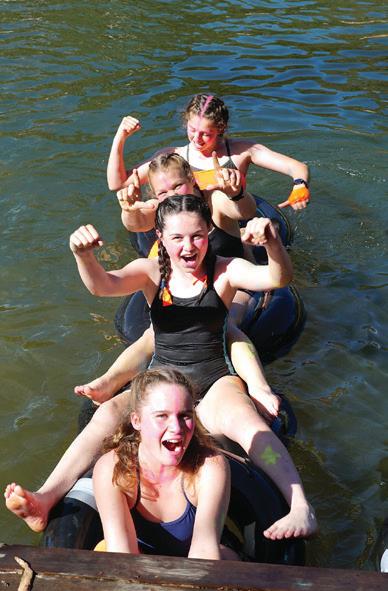
“The hardest part of Timbertop wasn’t the running or the hiking. The hardest part was to say good-bye.”
Timbertop is specifically designed to challenge students. Sometimes we get suggestions that if the hikes were easier, the kids would enjoy hiking more. But that’s not the purpose. The students are very purposefully pushed outside their comfort zone; socially, mentally and physically.
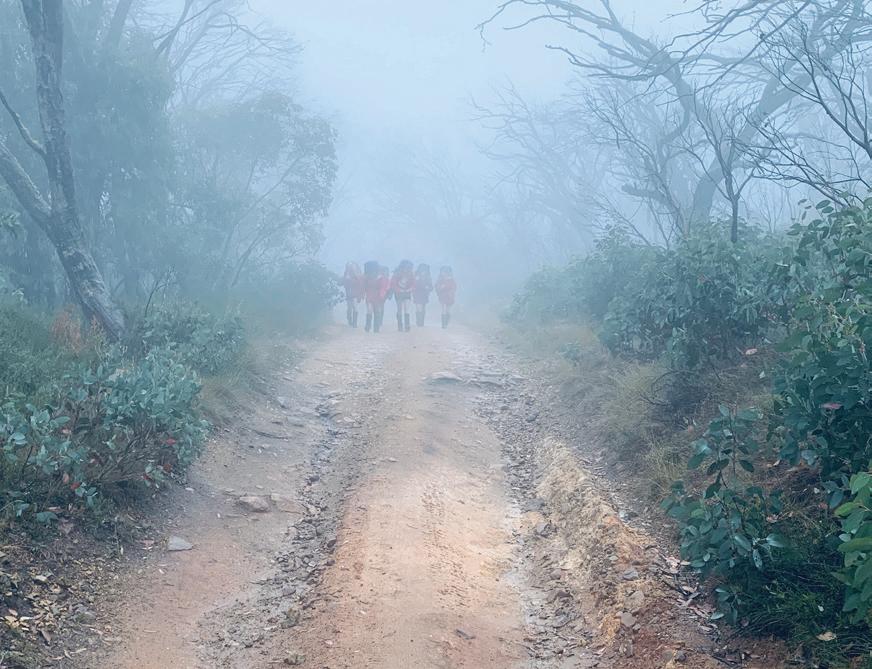
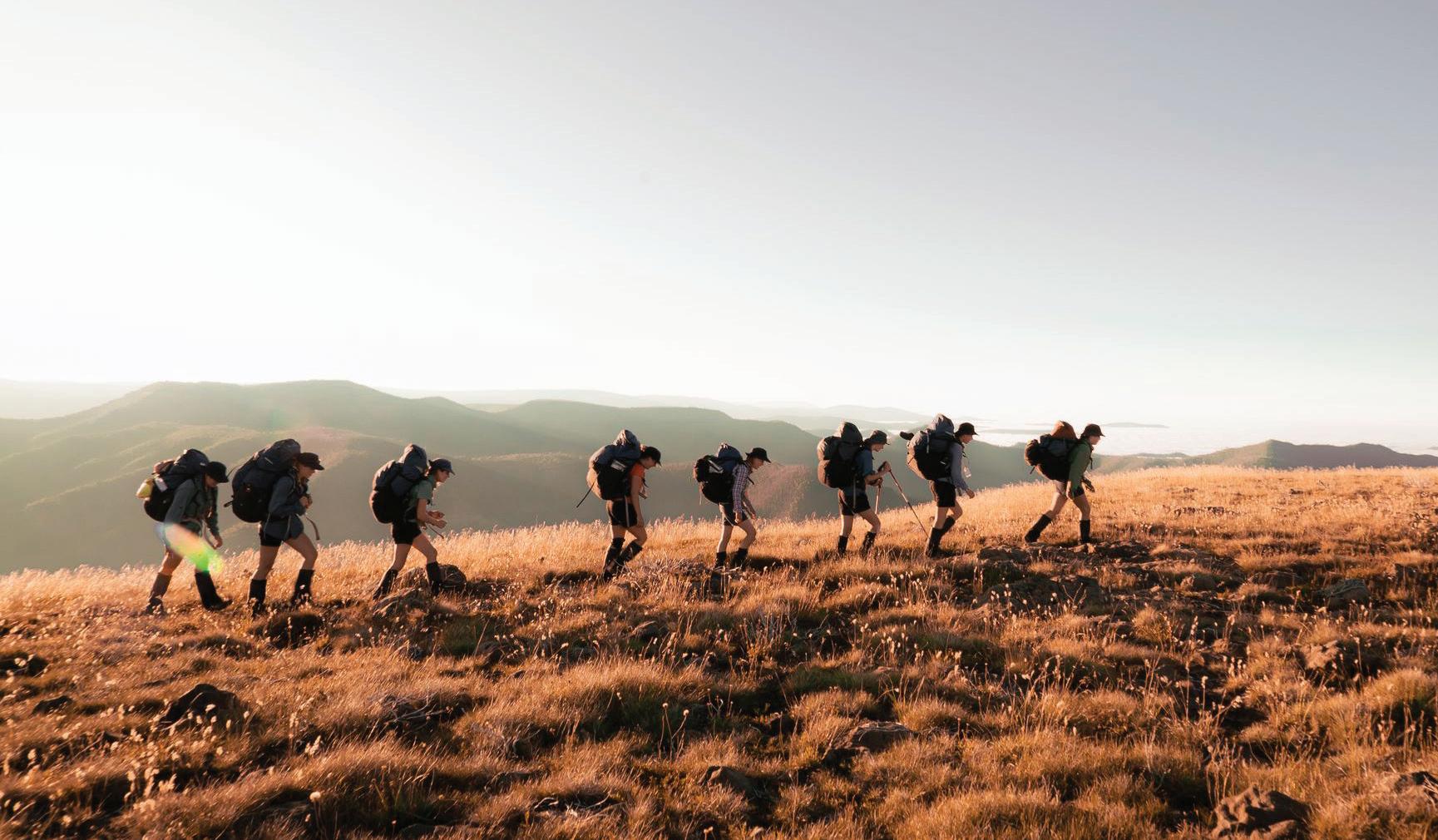

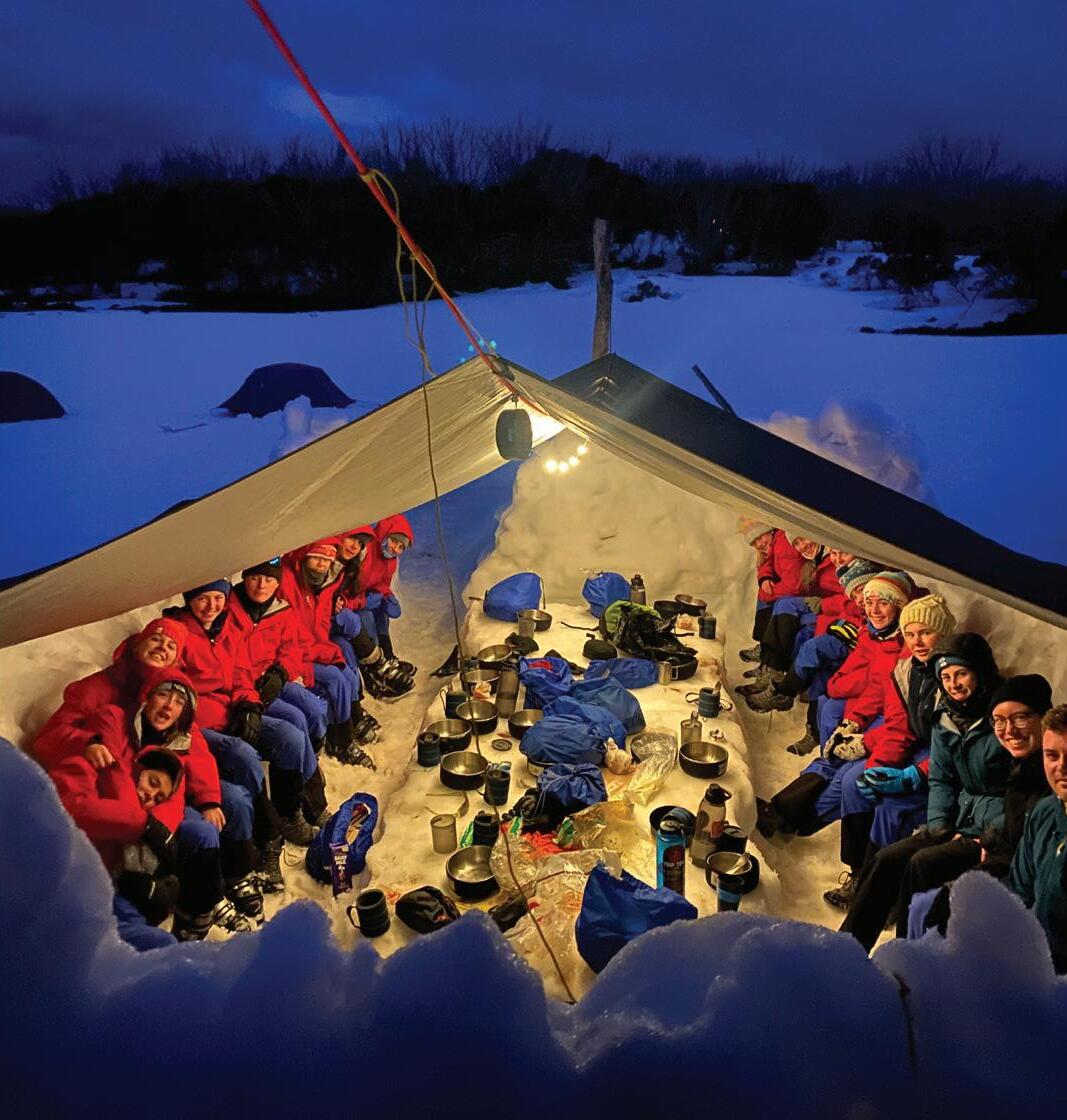
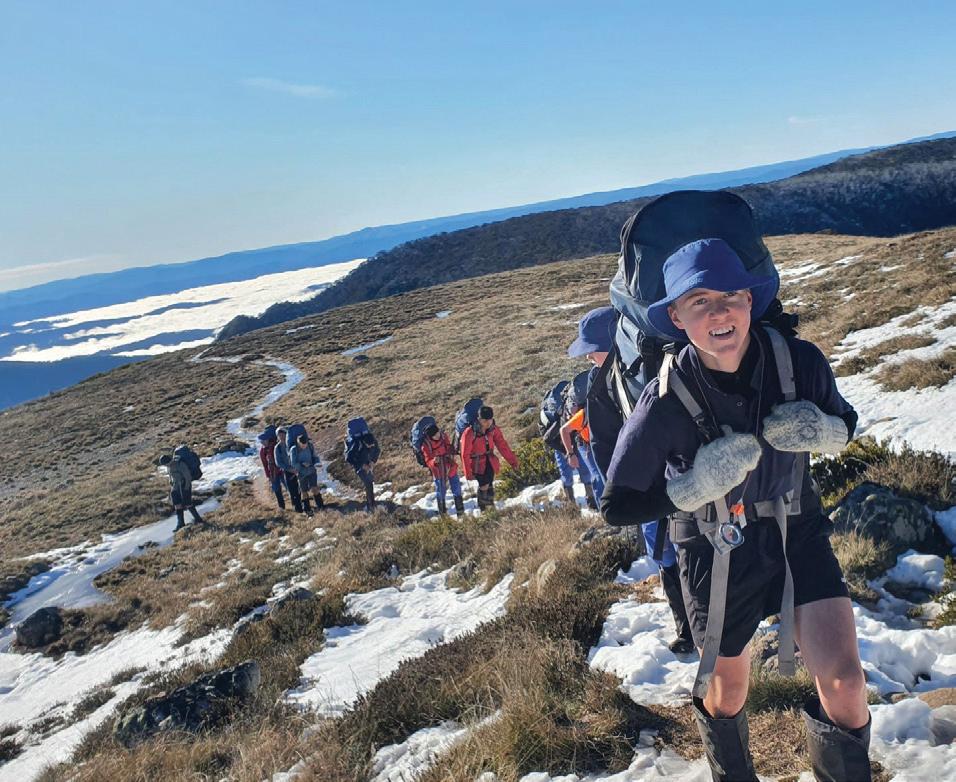
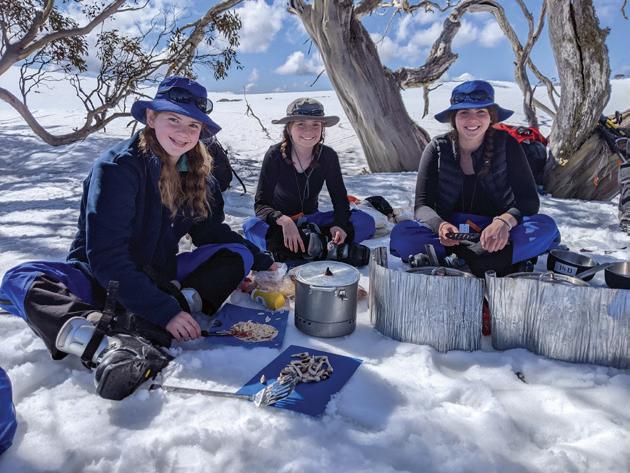
–


 Annabel
Annabel
Bainger (Southey, M Unit, 1999; Timbertop Staff 2011-)
Timbertop Social History Project
To celebrate 70 years of Timbertop, we are asking our community to share their stories, experiences and images of the campus. Timbertop can be an incredibly powerful and formative experience, but there is no unified “Timbertop experience”. We want to hear what Timbertop means to you; whether your were at Timbertop in 1952 (involved with the “builders” work camps) or 2022. Our ambition is share the “lived experience” on the Timbertop history page of the School website.
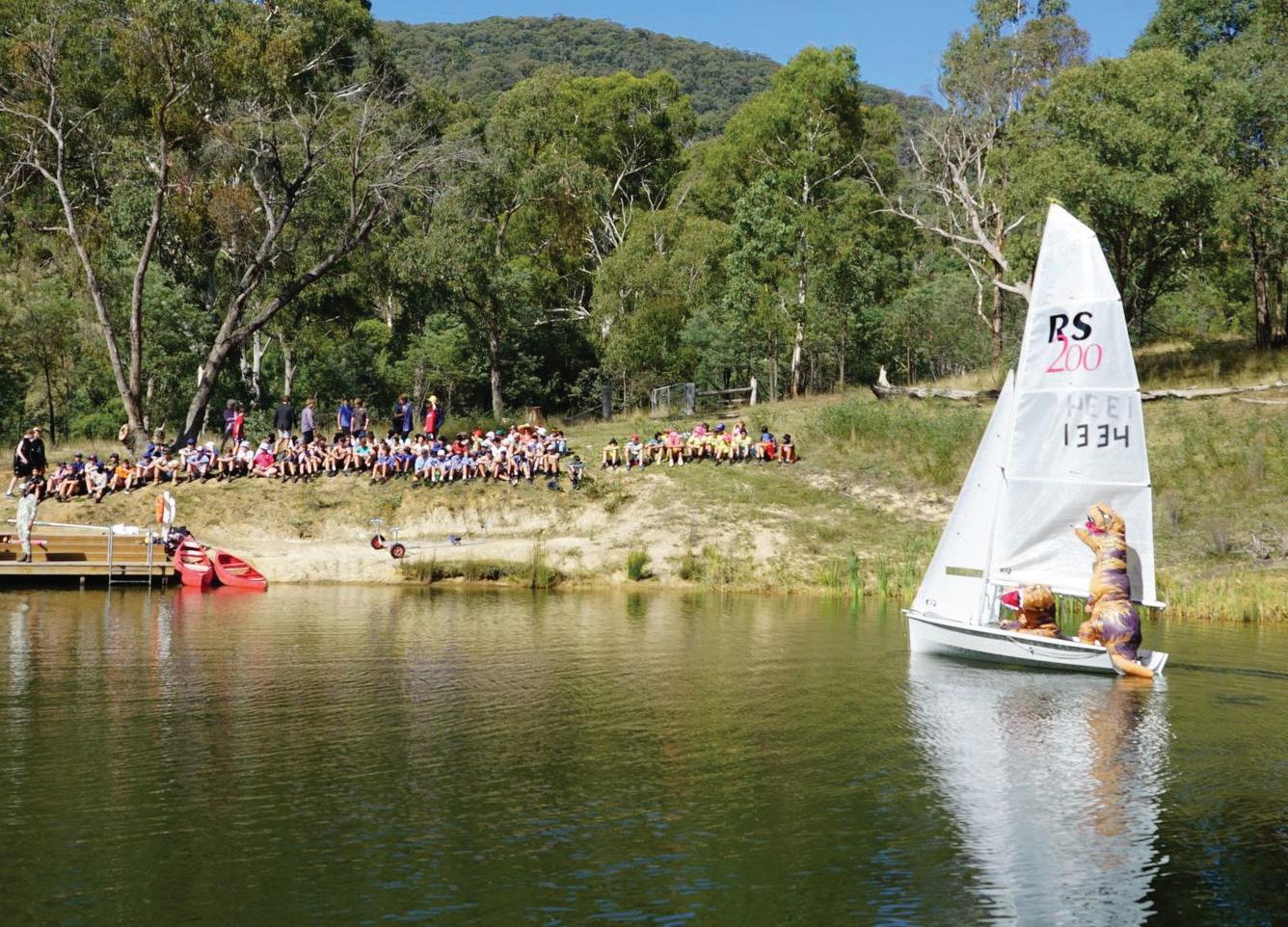
“Timbertop provides a deep well of experiences on which to draw for the rest of one’s life.”
“It is an incredibly special place: a time of self-discovery, pain and discomfort, achievement and joy.”
Winter expeditions to the Bogong High Plains began in 2014
A Sporting Fairytale
One of the highlights of the year so far for me reads like a sporting fairytale. My football team is Sheffield Wednesday, so called because they met to train on a Wednesday some 156 years ago. Once a high-flying club, at the time of the story I’m about to tell you, they were in the third division of the English Football League (somewhat confusingly called League One). By the end of the 2022/23 season, they had achieved 96 points, which would usually be enough to gain automatic promotion to the next division (the second division, called the Championship, and the division below the top-tier Premier League). But two other teams had amassed more points than Sheffield Wednesday, so they achieved the record of the most points for a team not automatically promoted.
Instead, they had to endure the playoffs.
The team they were to play in the semi-final (over two legs), Peterborough United, were 19 points behind them at the end of the season. Surely, the result was a foregone conclusion. Wednesday was sure to win, weren’t they? Not so… game one at Peterborough’s home ground ended in disaster for Wednesday (nicknamed The Owls), who lost 4-0. Calamity!
The second leg would certainly be a dead rubber. No-one had come back from a 2-0 defeat in a playoff, let alone a 4-0 defeat. But (as you have probably guessed), The Owls did, inspired by their coach, who asked them to ignore the score and to dig deep. After all, if the other team could score 4 goals, couldn’t they do the same? Indeed, they did, scoring a fourth goal with the last kick of the game to win 4-0 and tie the playoff aggregate at 4-4. Extra time was required to decide who would progress to the playoff final. Peterborough scored first, but Wednesday thrillingly pulled level again. Penalties were required to separate the teams. Finally, a Peterborough player hit the crossbar with the only miss of the shootout, and The Owls were into the playoff final at Wembley.

The final was another gripping game, which went to extra time locked at 0-0, before Wednesday scored in the 123rd minute, with 30 seconds left on the clock. It was a very sweet moment and the South Yorkshire city of Sheffield turned up in their thousands to celebrate the homecoming team.
Why do I tell you this story?
To simply make this point: that it is never over until it’s over. That there’s more in us than we realise. That selfbelief is incredibly powerful. That somewhere over the rainbow bluebirds fly (cheesy I know, but perhaps we need a good dollop of cheesy sometimes). That… well you get the message. But in addition to this message is one that reminds us not to underestimate the value of an inspirational talk by a coach who has a different perspective on things. A friend who offers comfort. A mother or father who brings wisdom. Teachers who motivate. Partners who have deep belief in us. Inevitably, the place to find the most precious of resources that we need to achieve the goals we aim to kick are found within.

“The battles that count aren’t the ones for gold medals. The struggles within yourself – the invisible, inevitable battles inside all of us – that’s where it’s at.”
– Jesse Owens
On a mountain not too far away, our Year 9 students of the present will testify to the truth of this statement, alongside a knowing nod from the alumni of the past. A growing band of brothers and sisters who know from experience that there is much, much more in us than we know.
Magis
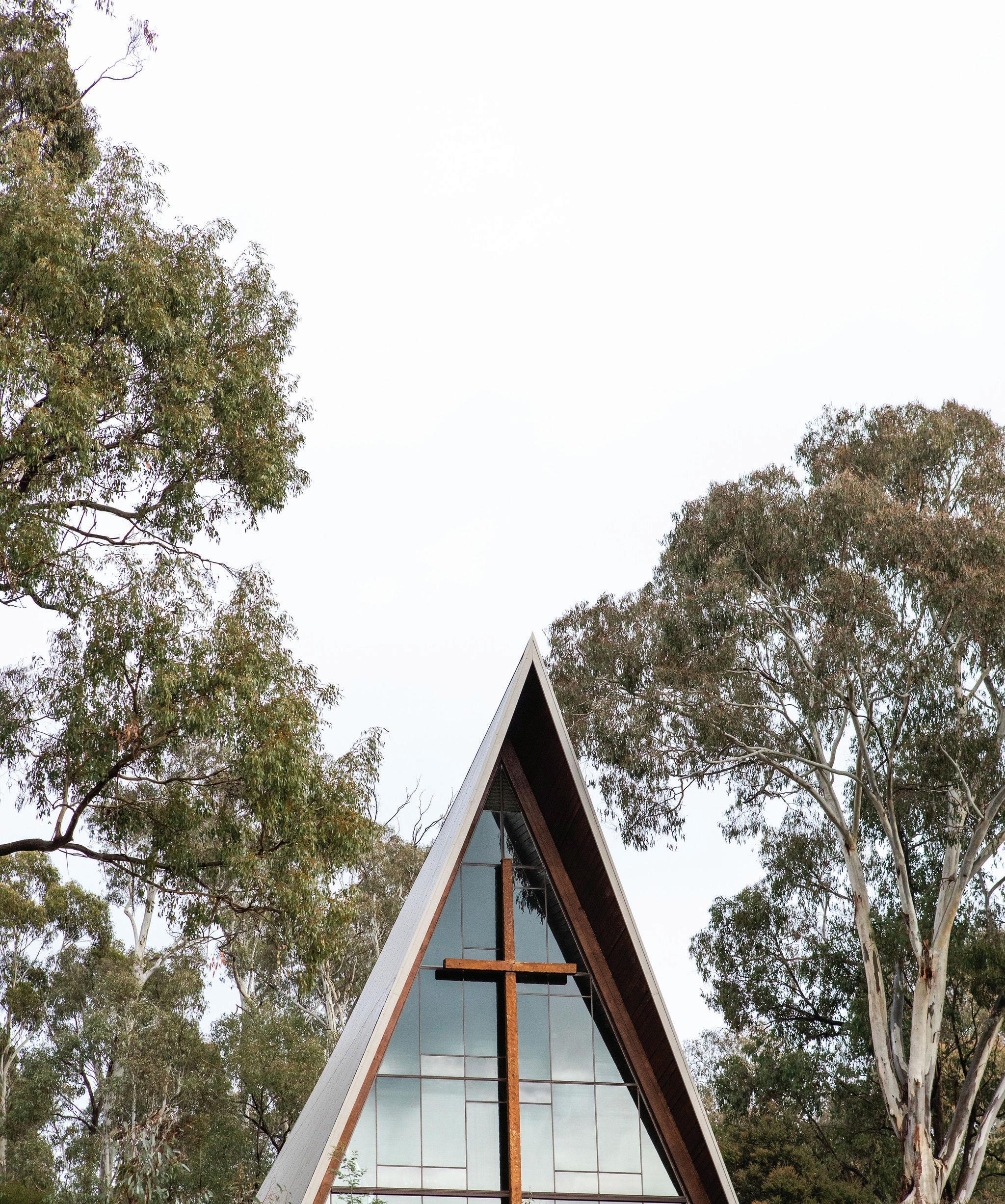 Est in Nobis.
Rev Gordon Lingard Senior Chaplain
Est in Nobis.
Rev Gordon Lingard Senior Chaplain
SECTION 0 2 — SCHOOL ↓
TRIUMPH AT TOORAK

The Tempest took to the Toorak Campus stage in Term 2, with our Year 6 students performing what is widely considered to be Shakespeare’s final play for their families and school mates. Our Year 6 classes have taken to Shakespeare in recent years, studying and performing A Midsummer Night’s Dream and Romeo and Juliet in 2022. A Shakespeare play presents unique and varied challenges and we were thrilled to see our students thrive throughout rehearsals and on opening night.
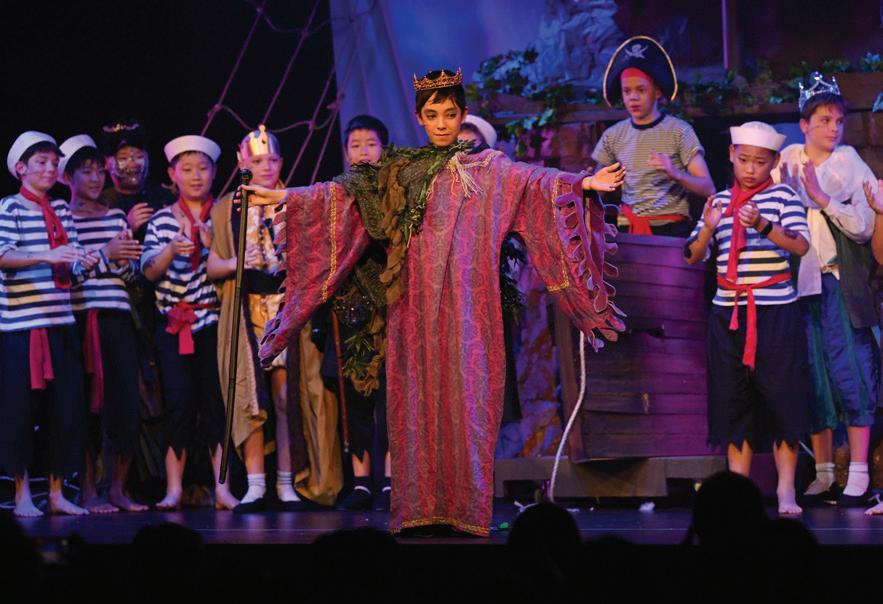

The Tempest seemed a poignant choice, in response to world events, a focus at Toorak Campus on Belonging and the Year 6 Unit of Inquiry ‘How we organise ourselves’. The students developed their knowledge of leadership and political structures, and The Tempest is a timely and relevant narrative relating to power, nature, change, resilience, and reconciliation.
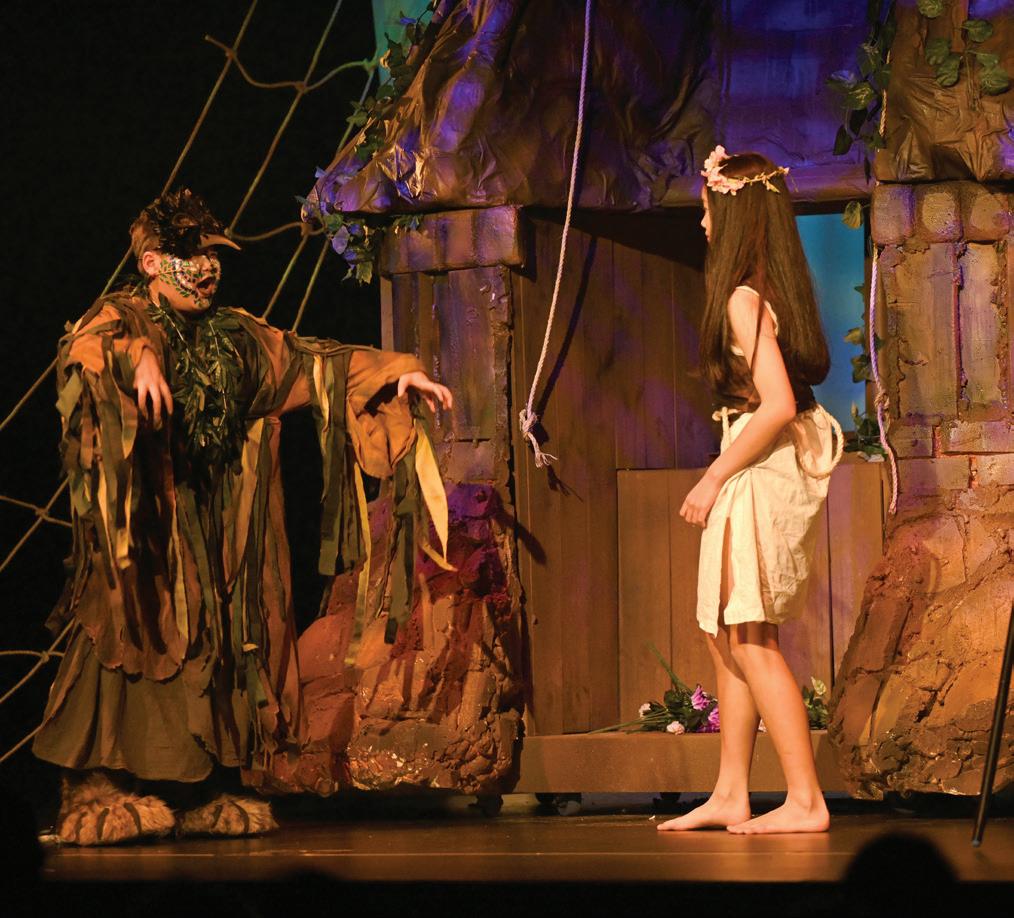

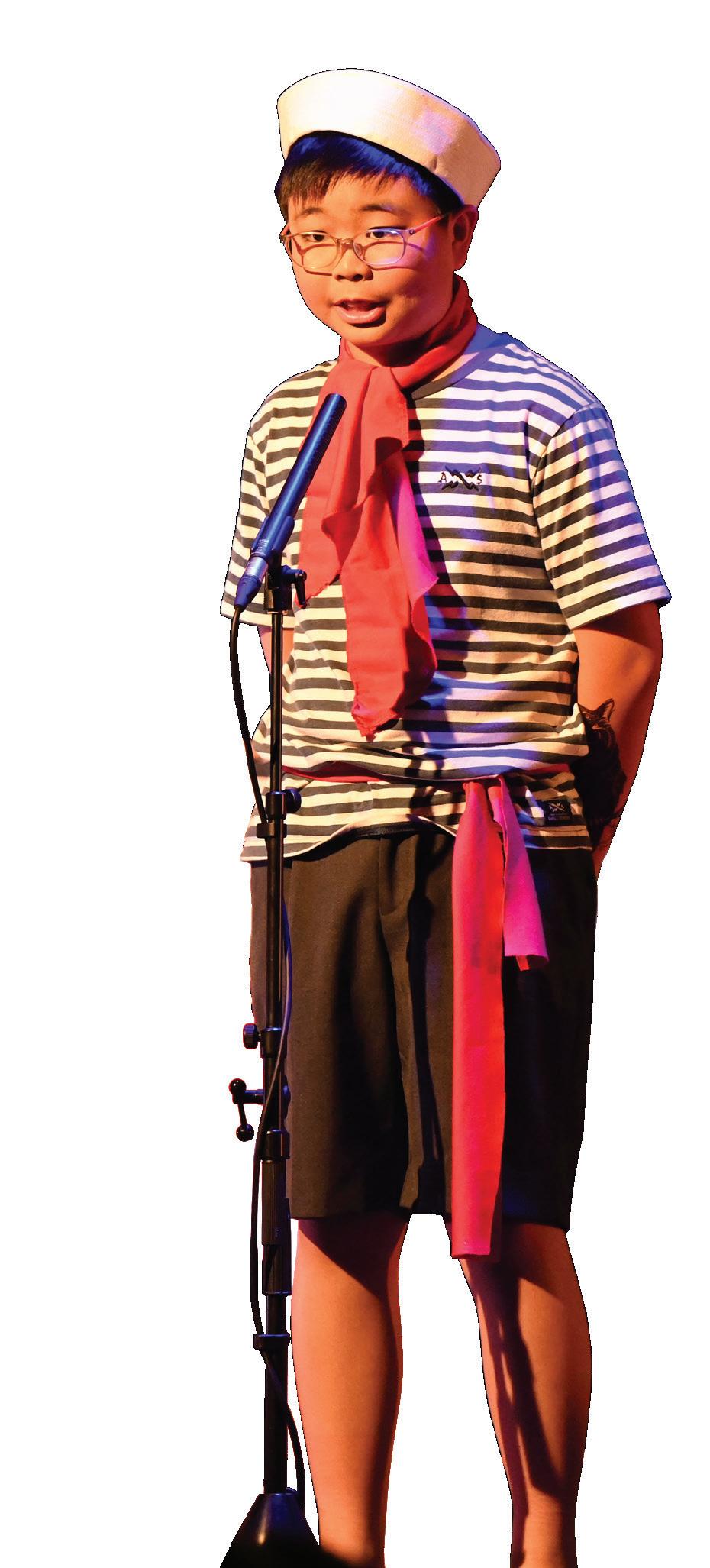



LIGHT BLUE - GEELONG GRAMMAR SCHOOL
MUSICAL EXPRESSION

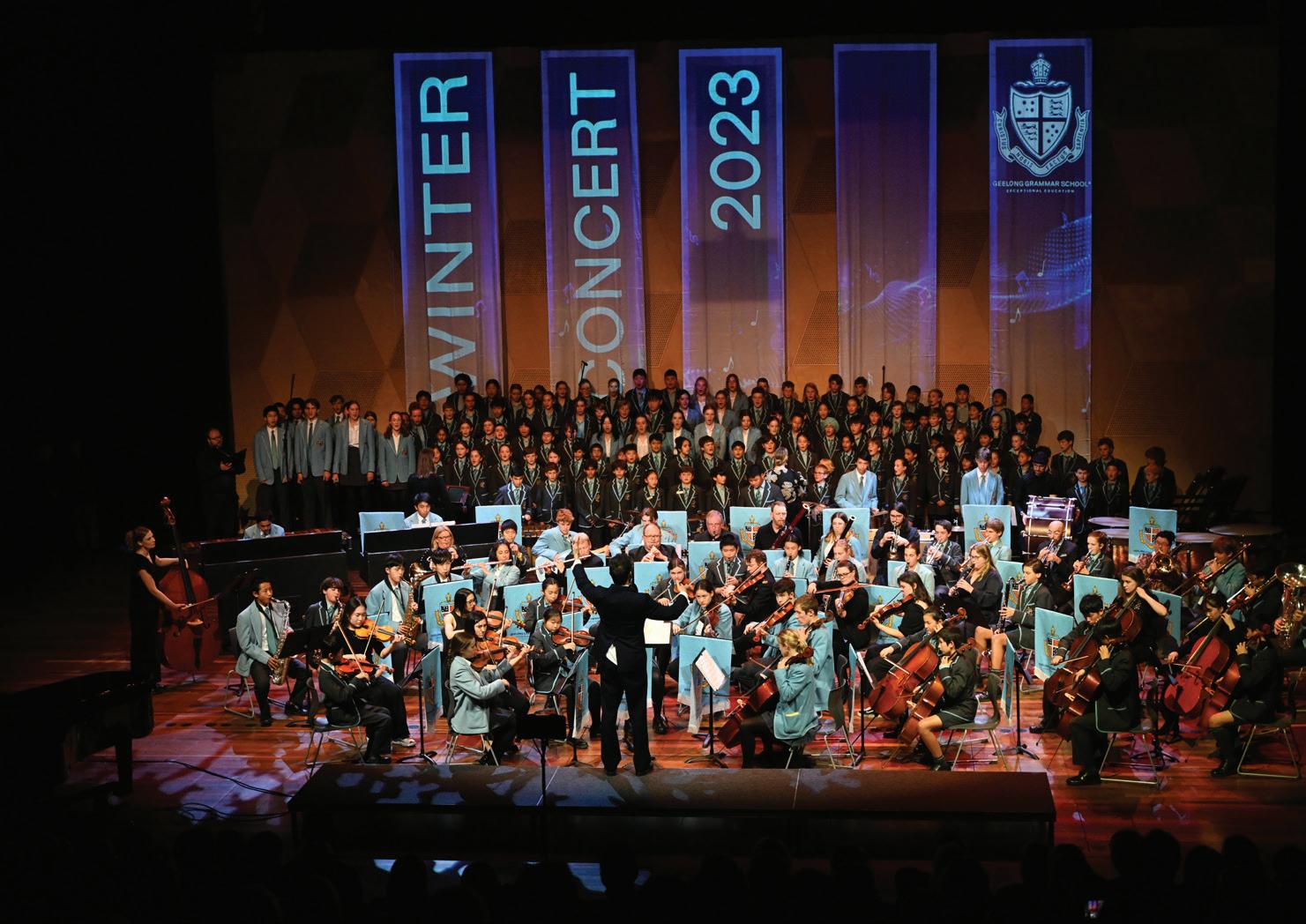
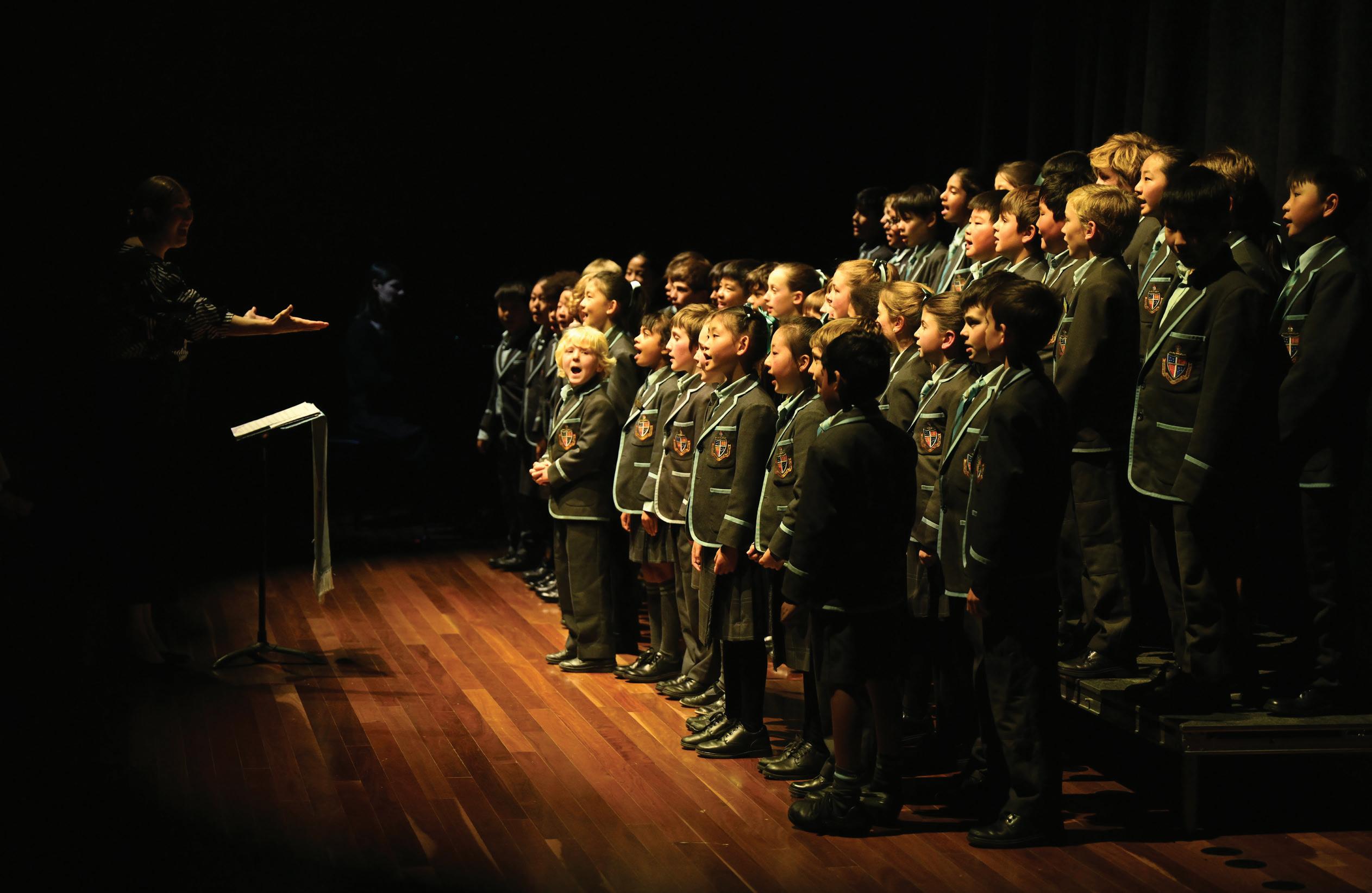
Music is at the heart of the cocurricular programme at Corio during Semester 1, with House Music competitions – both Middle and Senior School – in Term 1, before Battle of the Bands to kick-off Term 2 and the Winter Concert to warm the soul at the beginning of June highlighting a hectic few months for the music school. These events provide our musicians with invaluable opportunities to showcase and hone their talents, while also acting as an outlet for each of our students to step out of their comfort zone and express themselves through music. Beyond the campus gates, our students competed in a variety of external competitions, highlighted by the Generations in Jazz festival in Mount Gambier and the Australian Youth Classical Music Competition. The Bluebirds ensemble placed third in the Division 1 small group vocal category at Generations in Jazz, competing against schools from across the country, while pianist Jingyang Huang (Yr11 A) won the regional round of the Australian Youth Classical Music Competition. Jingyang performed Beethoven’s Piano Concert no. 3 in C Minor, Op. 37, accompanied by the combined orchestra, at the Winter Concert to rapturous applause; a fitting way to conclude a magnificent evening (and Semester) of music.
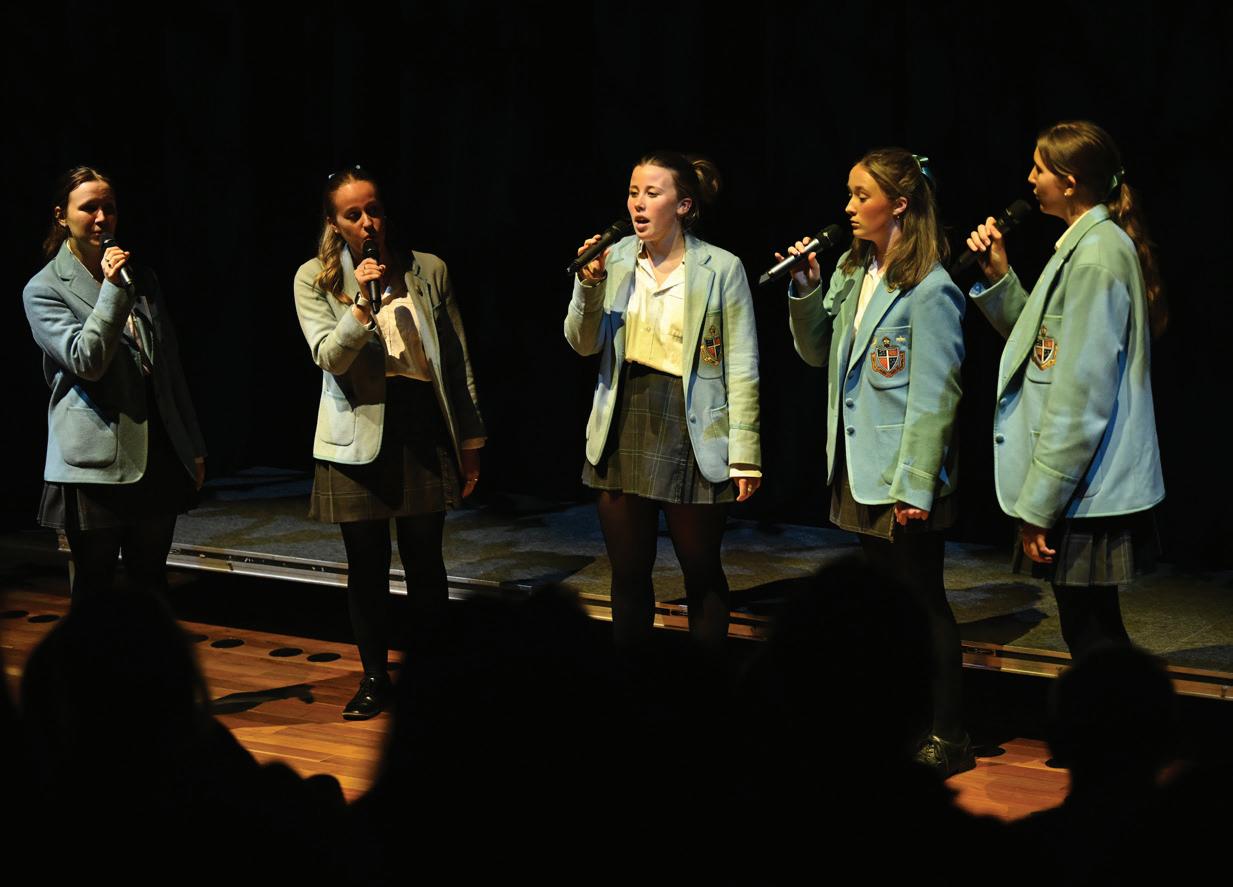
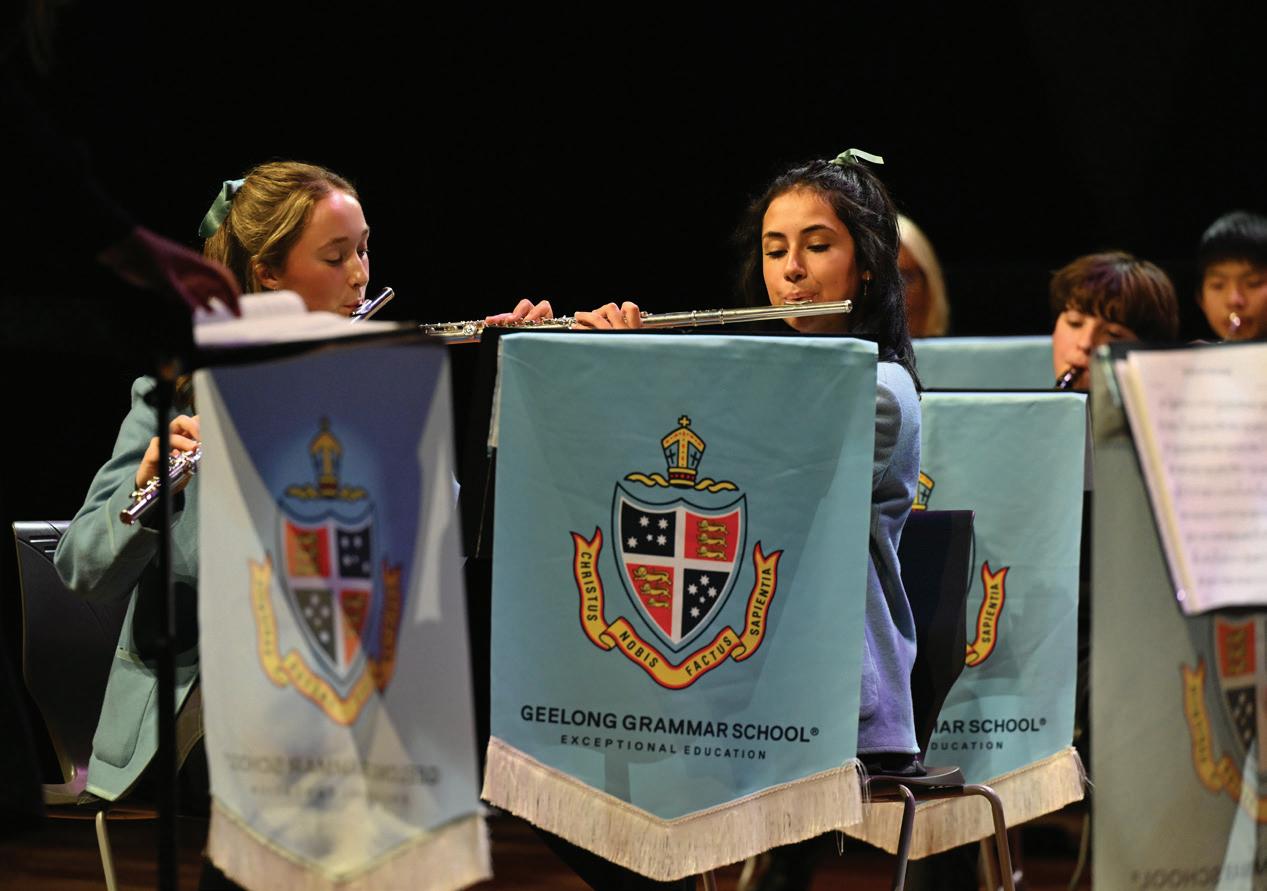
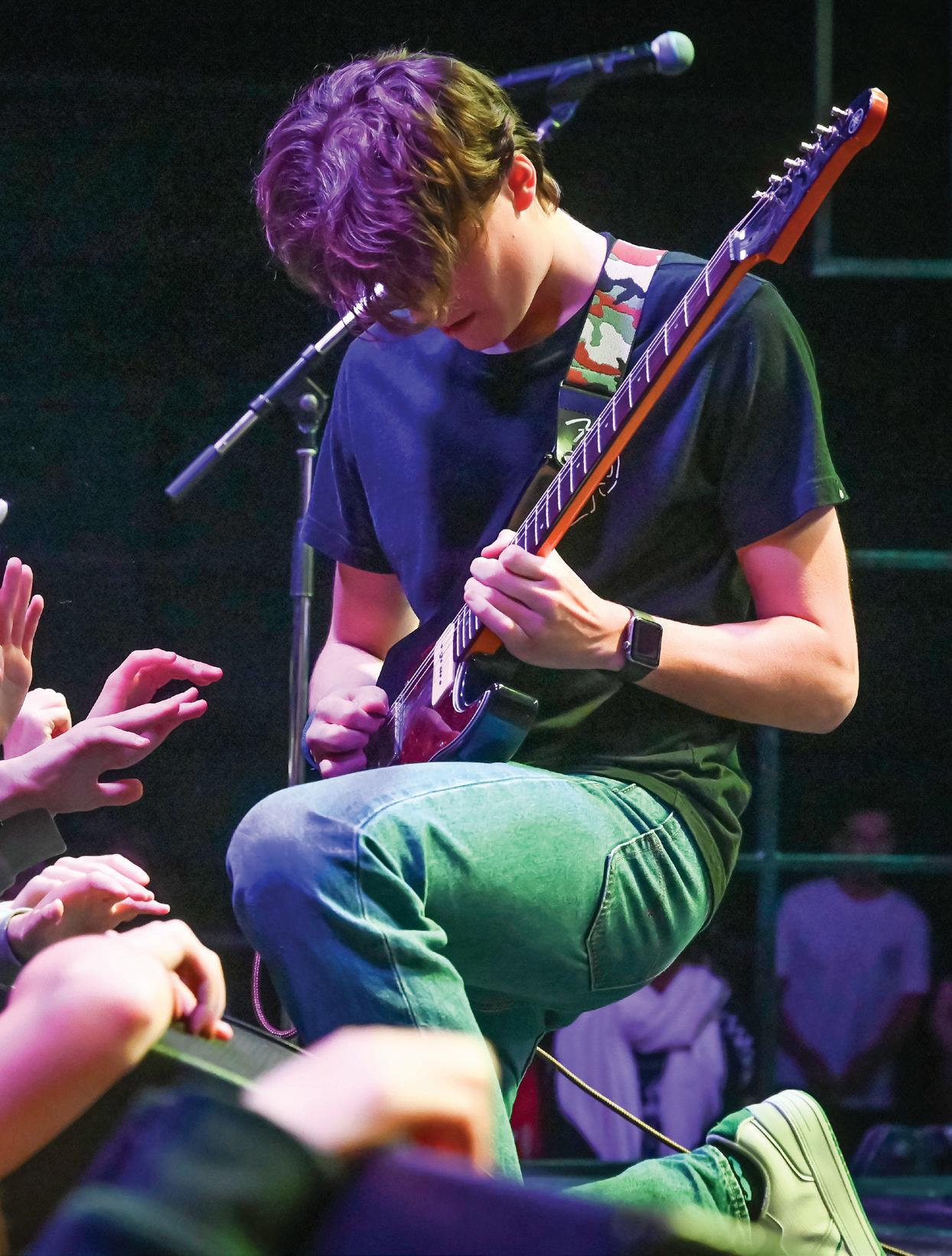

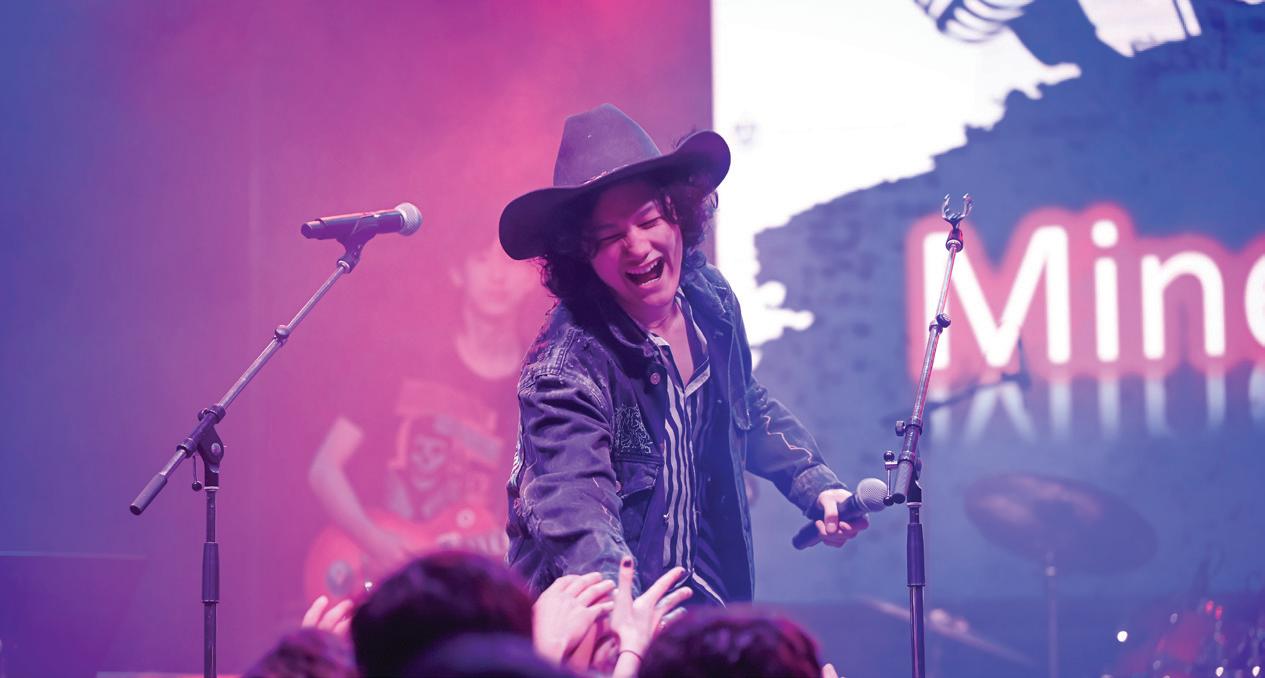

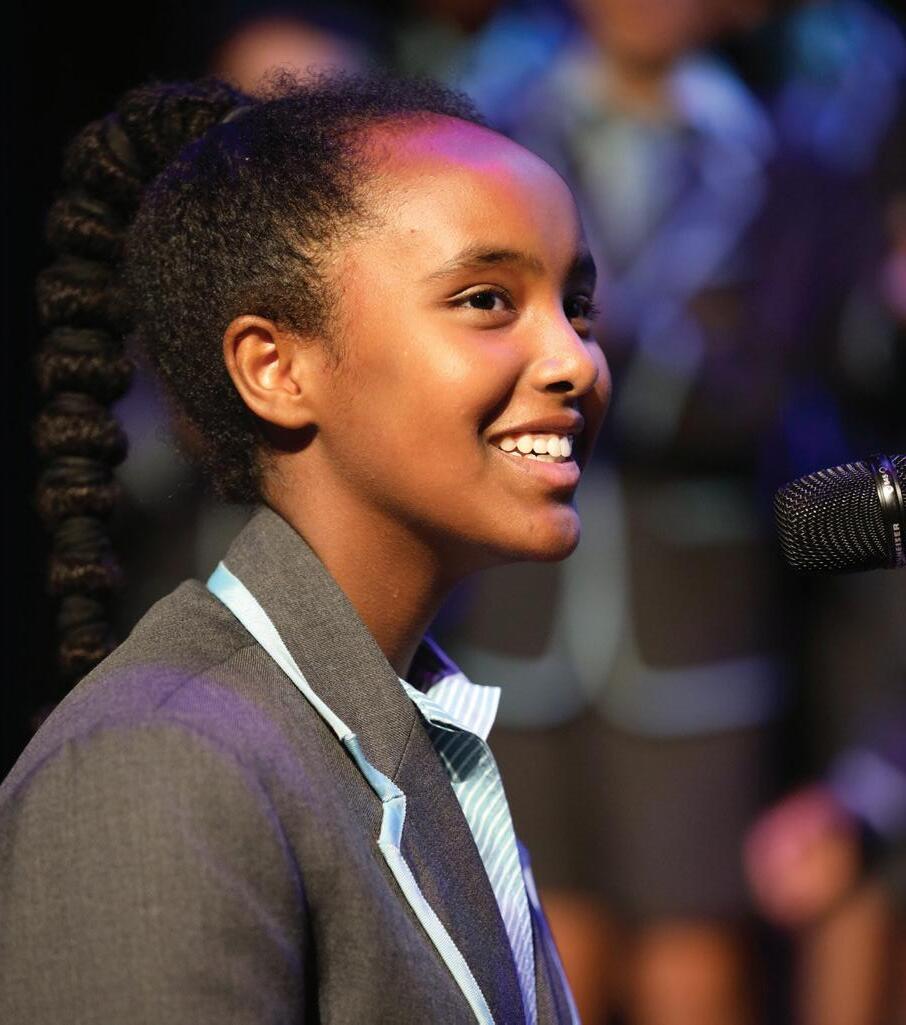
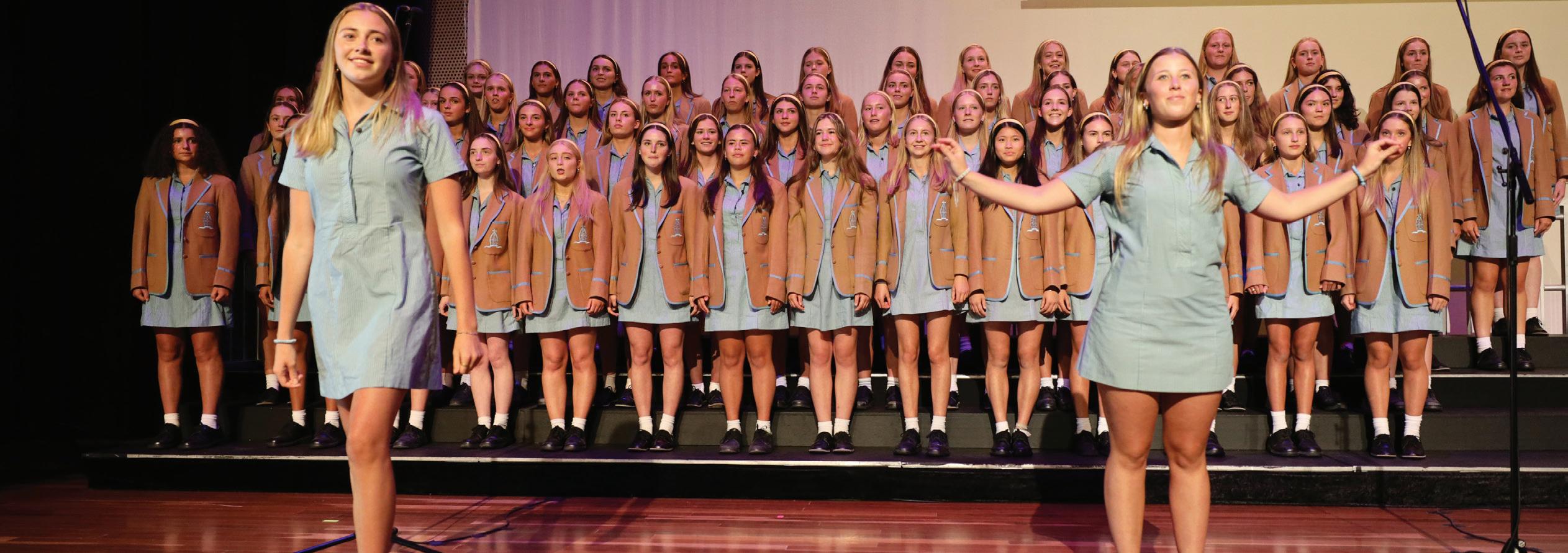


Our Girls’ 1st VIII peaked in their final race of the season, recording a dominant win on Lake Nagambie at the Heads of the River (HotR) regatta. The crew of Eve Grylewicz (Yr12 Ga), Claire Hamilton (Yr12 He), Tilly Hunt (Yr12 Cl), Sienna Huon (Yr12 Ga), Kitty Kisvarda (Yr11 Fr), Olivia Mann (Yr11 Cl), Em Pincott (Yr12 He), Aisha Yates (Yr11 Cl) and Quimby Yates (Yr12 Cl) rebounded from a fourth-place finish in the B final at the Head of the Schoolgirls regatta the week prior to finish six-and-a-half seconds clear of their nearest rivals. It was the School’s first HotR win since 2019 — the last in a six-year winning streak — and the win capped an exciting rowing season which also saw the Boys’ 1st VIII win the Scotch Mercantile regatta for the first time in decades.

PERFECT 10
In the space of 12 months, the term ‘Bazball’ has reached saturation point. Cricket commentators and journalists are loath to use the phrase as it has become something of a catch-all for anything relating to attacking, expressive and, at the heart of it, enjoyable cricket. Stemming from the England Test team under their new coach Brendon ‘Baz’ McCullum, Bazball is the term used to describe the team’s style of play and mentality. One of the main tenets of Bazball – no fear of failure – is manifested in the way that England have regularly chased huge fourth-innings totals at close to a-run-a-ball pace; not going into their shells when the game was on the line, but playing their natural game and trusting the result will come.
The School’s 1st XI Cricket team secured its tenth APS Cricket premiership earlier this year, showcasing an uncanny ability to chase down any total that was set for them; their record of seven wins and one draw (which came when chasing 387 in the final round, after the premiership was secured) when batting second was pivotal securing the premiership.
ROUND 1: GGS 7-225 DEF SKC 9-224
The first match of the season set the tone for what was to come. Batting second with a sizeable total to chase, GGS recovered from 28-2 on the back of a 124-run partnership between Ollie Peake (84) and Marley McCombe (54). After a slight wobble – falling from 152-2 to 187-6 - Jack Headon (27) and Ned Cole (15 not out) guided the team to a threewicket victory. This was the first of many vital middle-order contributions from Jack. “He stood up numerous times when we found ourselves in a position where the opposition thought they were going to roll over the top of us,” Ollie said.
ROUND 3: GGS 1-160 DEF MGS 10-159
After a Round 2 bye, Ollie put his stamp on the APS season in Round 3, dismissing five of Melbourne Grammar’s top seven batters, finishing with figures of 5-15 from his 10 overs, before contributing 67 not out in an unbeaten 141-run partnership with Henry Melville (70).
ROUND 4: GGS 2-194 DEF BGS 9-192
A team effort with the ball was followed by another dominant performance with the bat from Henry and Ollie. Henry recorded the first century of the season and headed home for the Christmas holidays with an average of 191, having only been dismissed once through three matches.
The pair of Melville and Peake were critical to the School’s premiership success, providing a solid foundation with the bat time and again for the team to build upon. “We’ve been playing together for years, locally and at rep level,” Henry said of his relationship with Ollie. “We just know each other’s games so well, which is probably the biggest driver in our ability to bat with each other for a long time.”

ROUND 5: GGS 1-174 DEF WC 10-170
The first game back for 2023 and we had some new faces in the XI. Josh Lindsay and Sam Lalor were new to the School this year, while Charlie Paton returned from Timbertop and slotted into the lower order. GGS produced a dominant performance with the ball, led by Ned (3-27), Josh (2-30) and Ollie (2-39), reducing Wesley College to 7-91. While the WC tail wagged to reach 170, Ollie (106 not out) and Charlie Calvert (66) cruised to a nine-wicket victory in our first two-day game of the season.
ROUND 6: GGS 9-176 DEF XC 10-144
GGS won the toss and, once again, elected to bat second. Ollie (5-34), Josh (3-18) and Ned (2-21) were in the wickets, reducing Xavier College from 93 without loss to all out for 144. With the bat, GGS recovered from 111-7 to chase down the runs with two wickets in hand. Jack H (49) and Charlie P (18) guided the team to victory. XC finished the season 12 points behind GGS on the ladder in fourth place, a crucial win considering that a first-innings win is worth six points, meaning a potential 12-point swing had the tail not wagged on this day.
ROUND 7: GGS 10-238 DEF BY TGC 8-239
The team’s only loss for the season came at home against cross-town rivals The Geelong College; a potentially damaging result in the chase for the premiership, losing to a school who had been winless heading into the derby clash. Batting first for the first time this season, GGS were cruising at 184-2 on the back of a 100+ run partnership between Ollie (103) and Sam (66 off 51 balls) but collapsed to be all out for 238. TGC were reduced to 6-108 after some fine bowling from Josh (3-49) and Marley (2-28) but a 107-run seventh-wicket partnership decided the match in College’s favour. Thankfully, this wasn’t the last time TGC would cause a bit of carnage in the final rounds; they would go on to defeat Brighton Grammar School two weeks later, effectively ending their premiership hopes.
ROUND 8: GGS 10-156 DEF CGS 10-152
First vs fourth at the time, the match on the road against Caulfield Grammar School would prove to be the pivotal fixture of the APS Cricket season. GGS lost its first four wickets for 19 runs before recovering to reach 156 thanks to Sam (51), Charlie P (36 not out) and Jack H (34). CGS were seemingly cruising at 4-102 before Marley and Josh struck in quick succession, leaving an equation of 53 required with four wickets in hand. Jack Robinson (3-32) and Ollie (2-54) bowled in tandem, taking the next three wickets and leaving just 12 needed for the final wicket. “With the coaches’ inspiring words still ringing in our ears, we were able to hold our nerve as the batsman chipped one up to Sam, who took a great catch to seize the game,” Ollie recalled. “The half-hour that followed (the final wicket) was the best feeling I have had after a cricket game.”
GGS 1ST CRICKET - SEASON 2022/23
“It was one of the greatest games I have been a part of,” Jack agreed. “The feeling celebrating that final wicket is one I won’t forget.”

ROUND 9: GGS 3-247 DEF SC 10-207
On a good batting deck at Corio, Scotch College reached 207. Ollie (5-61) and Charlie P (3-33) led the way with the ball. Henry (103 not out) and Ollie (80) made light work of what could have been a challenging chase, combining for their third 100+ run partnership of the season.
ROUND 10: GGS 9-177 DEF CY 10-176
The APS premiership was decided on the road against Carey Grammar. Ollie (4-49) was dynamic with the ball once again. Cruising at 160-6 after a brutal 64 off 43 balls from Jack H, GGS lost three wickets in no time to find themselves 174-9 and with number 11 Jack R striding to the crease. “10 minutes prior, I was
close to unpadding as the game looked over,” Jack R said. After a long and nervy five-over stretch at the crease alongside Ned (who survived 38 balls for his one run), Jack hit the winning runs through cover to secure an incredibly tense victory. “On the bus ride home we got the news that we had secured the APS Premiership after other results had gone our way,” Jack R recalled. “The boys were pumped and it’s fair to say it was a good bus ride home!”
ROUND 11: GGS 9-318 DREW HY 4-386
With the premiership secured, our bowlers were perhaps a little off their game and Haileybury took full advantage. It was the first time this bowling group conceded more than 250 runs for the season. While victory was rarely within reach, our batters dug-in – highlighted by Jake Nichols, who made an unbeaten half-century coming in at number 9 – to secure a hard-fought draw.
 Henry Melville (captain, Yr12 Cu), Ollie Peake (vice-captain, Yr11 A), Charlie Calvert (Yr11 Cu), Ned Cole (Yr12 P), Felix Guest (Yr11 FB), Jack Headon (Yr11 P), Sam Lalor (Yr11 FB), Josh Lindsay (Yr10 A), George Lithgow (Yr11 M), Marley McCombe (Yr11 A), Wills Moses (Yr12 P), Jake Nichols (Yr12 Cu), Reef Page (Yr12 Fr), Charlie Paton (Yr10 M), Fergus Peddie (Yr11 Cu), Jack Richmond (Yr12 M), Jack Robinson (Yr11 Fr) Coaches: Matt Gunther, Shaun Dean, Charlie McCartin (assistant), Travis Dean (assistant), Jye Hearps (Head of Cricket), Matthew Walsh (team manager)
Henry Melville (captain, Yr12 Cu), Ollie Peake (vice-captain, Yr11 A), Charlie Calvert (Yr11 Cu), Ned Cole (Yr12 P), Felix Guest (Yr11 FB), Jack Headon (Yr11 P), Sam Lalor (Yr11 FB), Josh Lindsay (Yr10 A), George Lithgow (Yr11 M), Marley McCombe (Yr11 A), Wills Moses (Yr12 P), Jake Nichols (Yr12 Cu), Reef Page (Yr12 Fr), Charlie Paton (Yr10 M), Fergus Peddie (Yr11 Cu), Jack Richmond (Yr12 M), Jack Robinson (Yr11 Fr) Coaches: Matt Gunther, Shaun Dean, Charlie McCartin (assistant), Travis Dean (assistant), Jye Hearps (Head of Cricket), Matthew Walsh (team manager)
Resilience
THROUGH FACING CHALLENGES
Our Semester 1 calendar featured a number of challenges for our students. From sporting finals and music concerts at Corio, camps and drama productions at Bostock House and Toorak Campus, to multi-day hikes and cross-country runs at Timbertop, we didn’t have to look far to find someone who had put their hand up for a challenge or a new experience. When we face challenges, we have the opportunity to build our capacity to handle bigger obstacles in the future, as well as the everyday ups and downs of life. Through this process, we draw on and strengthen our courage and curiosity, which are both essential qualities of our GGS character. By facing challenges, we learn to take risks, explore new possibilities and expand our comfort zone. This can help us develop the resilience and perseverance needed to achieve our goals and navigate life’s uncertainties.
resilience
- THE WHAT AND THE WHY
All of us have resources at our disposal that help us feel and act resilient. These might be internal resources (such as our thoughts, feelings, beliefs, prior experiences, awareness, motivation and so on), or external resources (our families and communities, people we can turn to for help, or even physical resources like living in a nice location and having access to services).
The American Psychological Association (APA) Dictionary of Psychology describes resilience as “the process of adapting well in the face of adversity, trauma, tragedy, threats or even significant sources of stress”.
To better understand what it is to be resilient, we can use the visual of the seesaw, which helps us capture this dynamic nature of adapting to a
challenge. On one end is you, with all your resources. On the other end sits life’s daily challenges, adversities, or stressors. The greater the weight of the stressor, the more resources we need to maintain equilibrium, or to be resilient.
Sometimes the stressors we experience are small and we feel grounded, safe and unthreatened. We have the resources to cope easily. These are the kind of days when we don’t really draw much on our resilience. In our brain, our autonomic nervous system is balanced – our heart rate is stable, our breath is regular.
Sometimes we are faced with moderate stressors and we draw upon resources to adapt effectively. We might feel a little more distressed, our sympathetic nervous system kicks in and we unconsciously look for ways to address the threat – we turn to people or to our own life experiences to help calm us and manage this threat. The logical part of our brain, the pre-frontal cortex, ensures that we generally respond quickly and effectively and are able to return to a place of balance.
And sometimes the stressor is huge and we get thrown into chaos. We lose control because we don’t have enough resources to adapt effectively. We are unable to remain resilient. We feel overwhelmed, we don’t have a solid foundation – all of a sudden, we are struggling to adapt to the situation. Our sympathetic nervous system is activated, and our pre-frontal cortex is unable to cope with the load. The amygdala perceives a threat, and our system is flooded with cortisol. We might become agitated, anxious and erratic, or potentially we withdraw or disassociate. We are unable to make logical or rational decisions, and we need to consciously act to down-regulate the intense response we are experiencing. This fight/flight/freeze response lives deep inside the ancient parts of our brain.
While our internal resources can help us with this process of down-regulation, this response is best overcome through
oxytocin, which is the hormone of love, safety and trust. Connection with others, even just the memory of connection with others, can release oxytocin into the system. It’s the brain’s immediate antidote to cortisol. It creates a feeling of safety and belonging, which re-activates the social engagement system of the pre-frontal cortex, which in turn allows us to think logically and rationally, and choose how to respond, rather than just react, to a situation.
HOW WE USE CHALLENGES TO SUPPORT
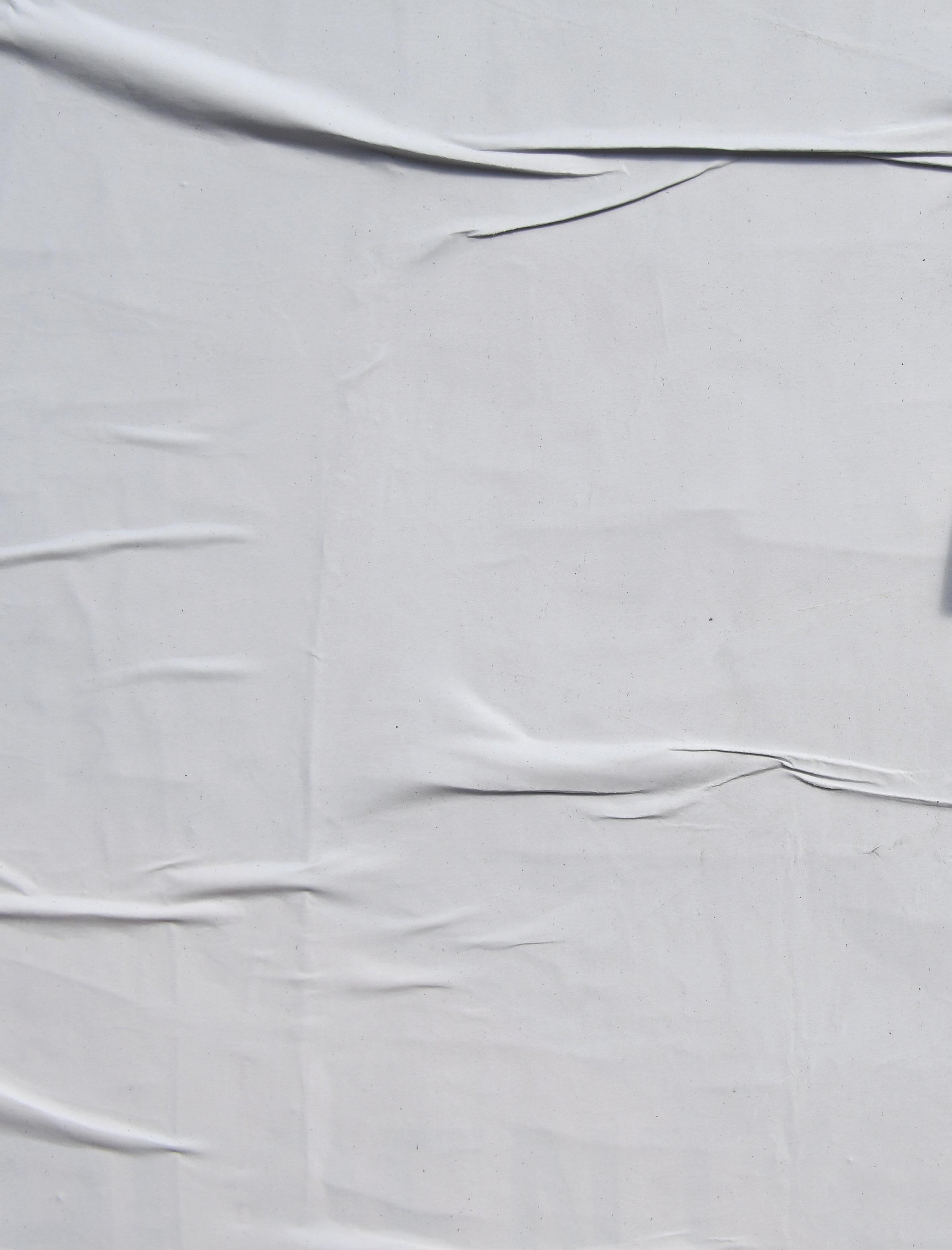
growth
Challenges are an inevitable part of life, and they can be a valuable opportunity for personal growth and development. Overcoming challenges can help us feel more equipped to handle future obstacles. A bit like stretching an elastic band; the more we do it, the more flexible it becomes, the more we are able to do it. It can also build our internal resources, such as our sense of self-efficacy, which can help us respond more effectively to challenges in the future.
This is not to say, however, that all hard things are ‘character building’, and that merely being exposed to challenge will cause growth, perseverance and resilience. Clinical psychologist George Bonanno has pointed out that it’s actually how we respond to challenges that determines the outcome, rather than the challenges themselves. While some people can navigate challenges and learn and grow from them, most of us benefit from a trusted other to help us see where we’ve progressed and how we can transfer our new understanding to a different environment. This speaks to the incredible care, experience and strength that exists within our GGS community.
Cat Lamb Positive Education Collaborator
↓
BUILDING
positive education SECTION 0 2 — SCHOOL LIGHT BLUE - GEELONG GRAMMAR SCHOOL 36
strategies
TO HELP OTHERS BUILD RESILIENCE
Provide careful support during challenging activities and make sure that the way these activities are reflected on enhances a sense of efficacy (such as the beliefs ‘I am capable’, ‘challenge is good’ and ‘it’s ok to struggle’). This is a crucial aspect of building resilience and a growth mindset and encouraging a willingness to take on new and challenging activities in the future.
Role model to young people the way we draw on resources when our seesaw begins to feel a little off-kilter. This can be an excellent strategy for helping them witness the ‘I like challenge’ narrative and hopefully begin to internalise it for themselves.
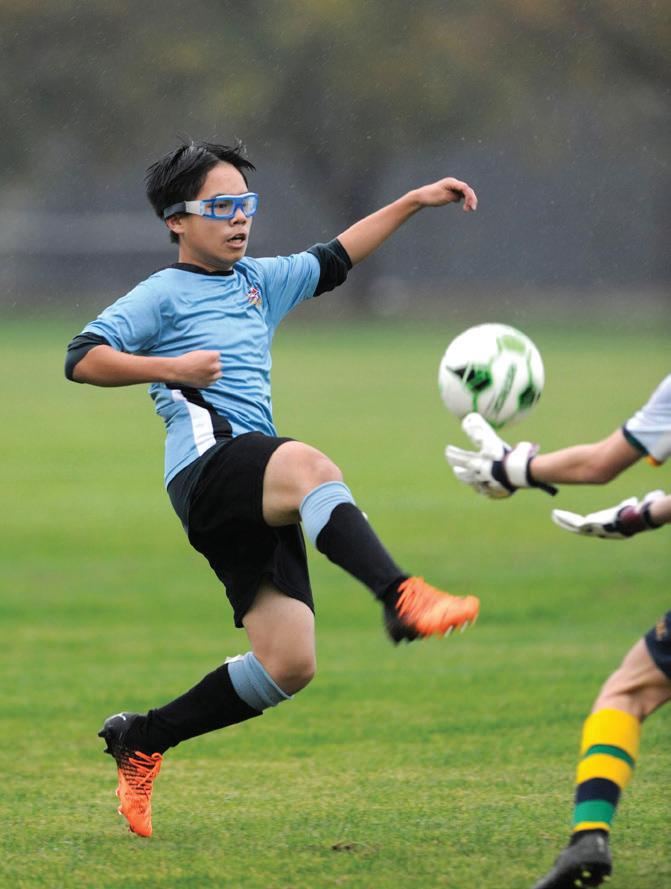

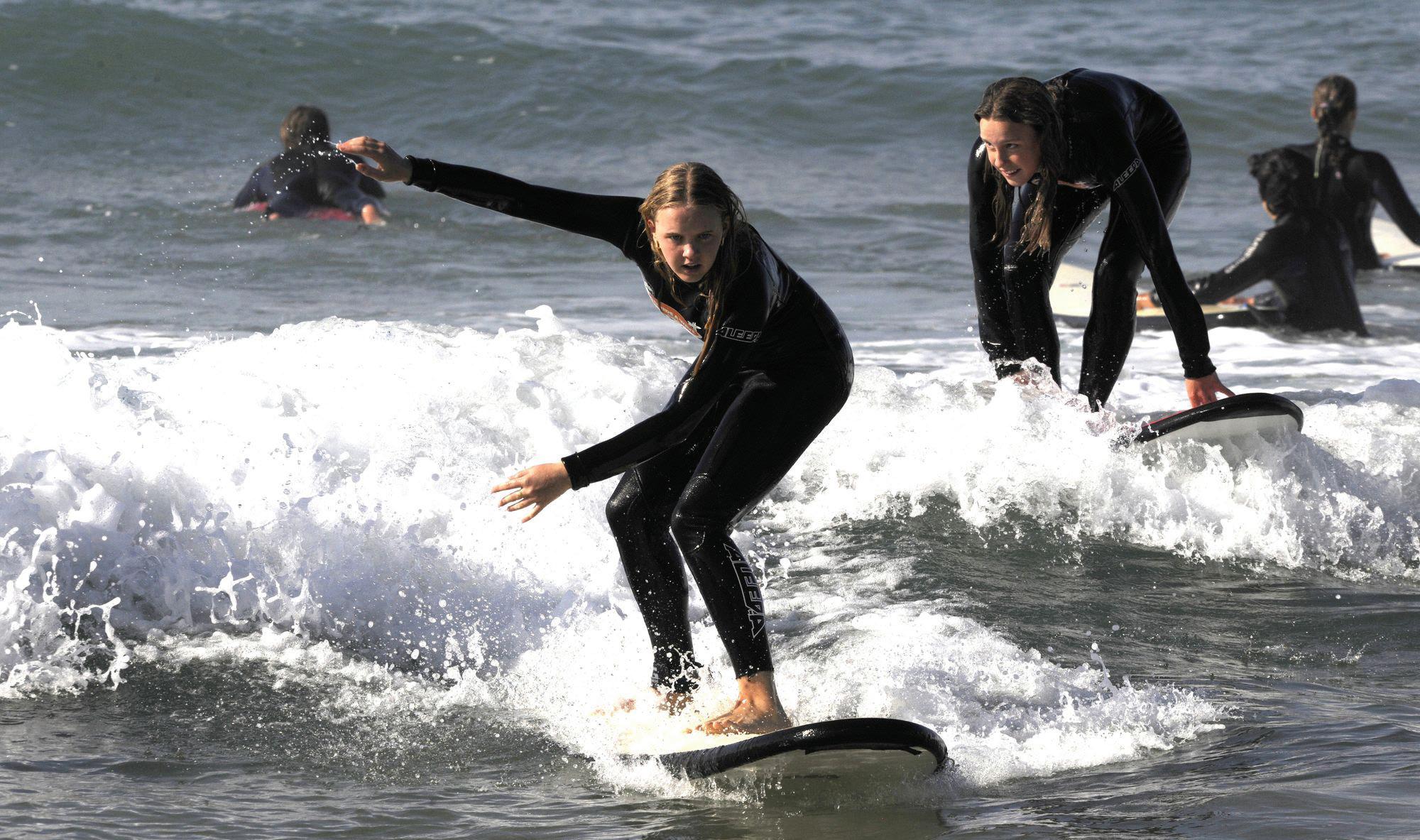
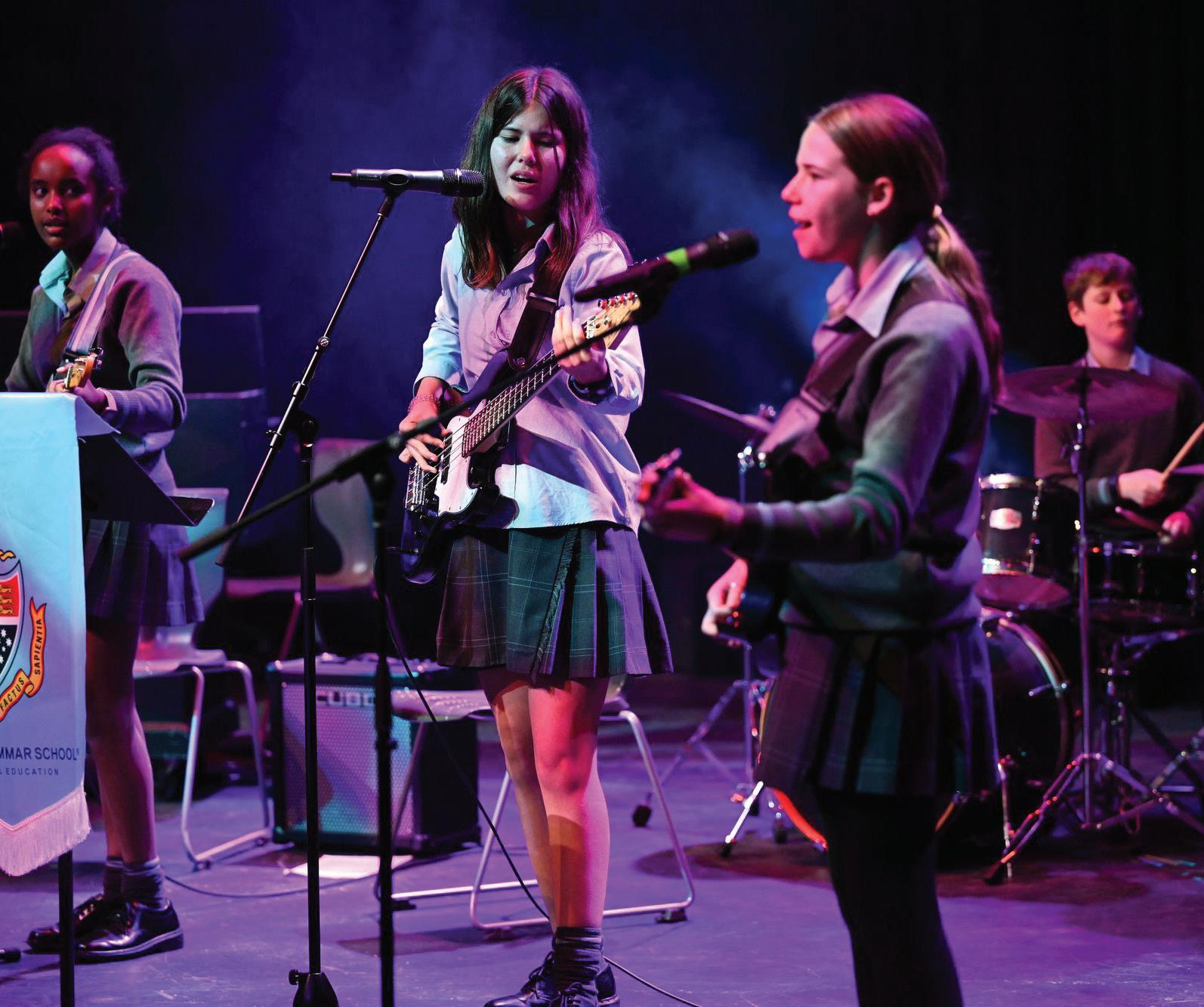
Ensure appropriate support and facilitation rather than assuming a challenging activity will be ‘character building’ in and of itself, or that challenging behaviour in a friendship group will ultimately benefit young people and make them more resilient.
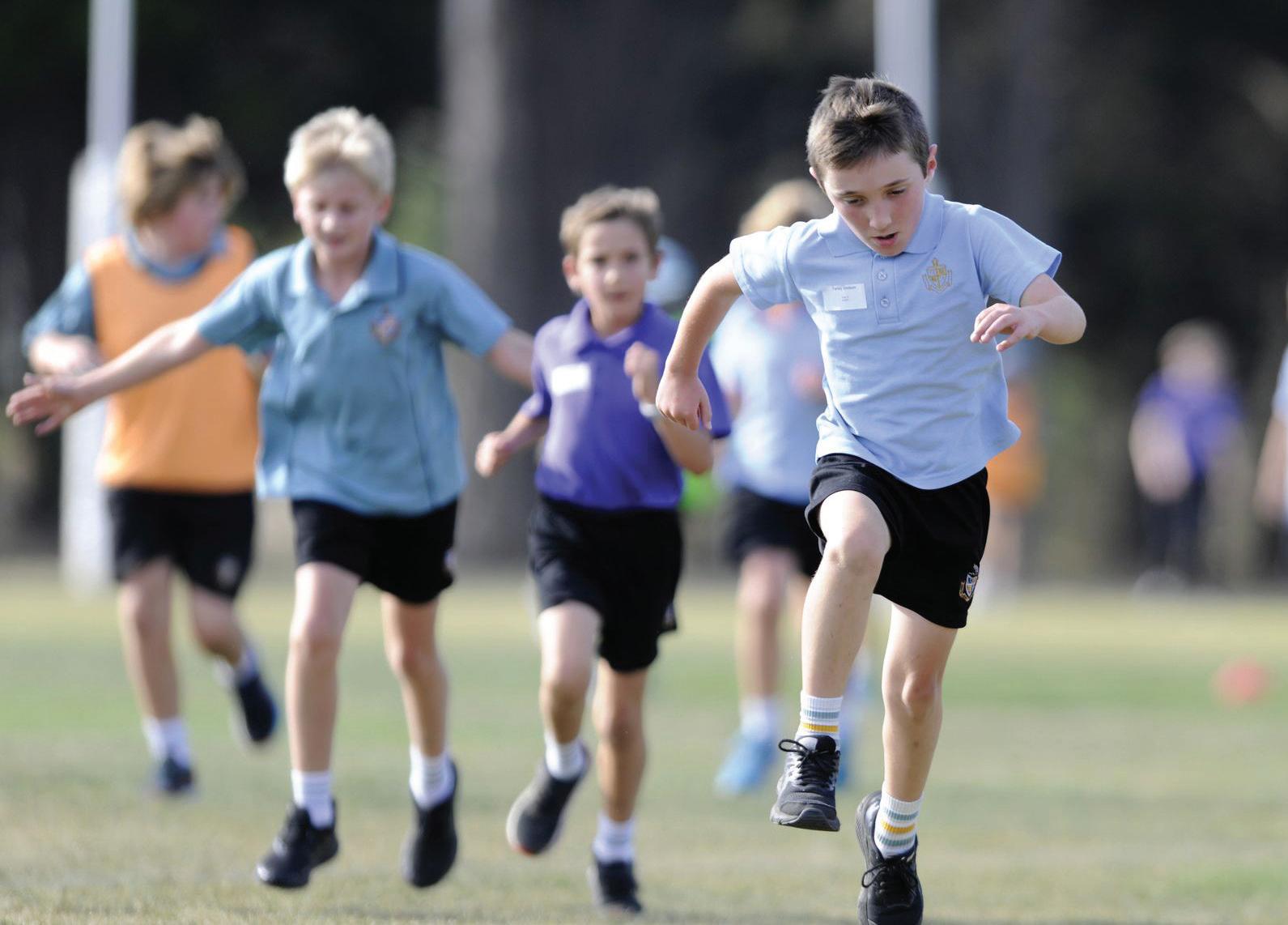
Resist the notion that a massive workload is somehow making you stronger!
Ask to hear stories about challenges. In sharing, our young people are able to reflect and add to their internal resources. As John Dewey said: “we do not learn from experience, we learn from reflecting on experience.”
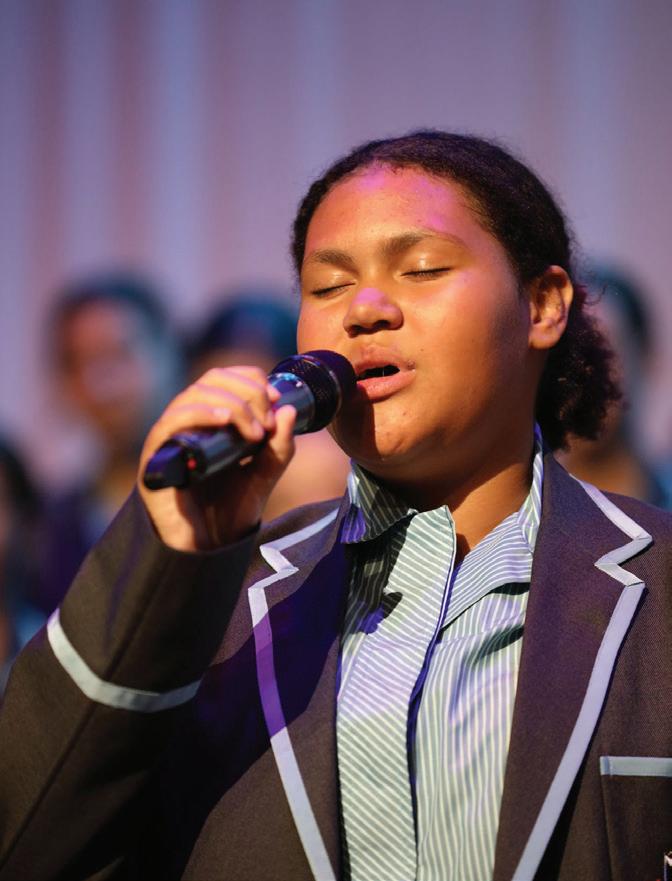
Reflect on the Character Strengths you draw on when you need to be resilient.
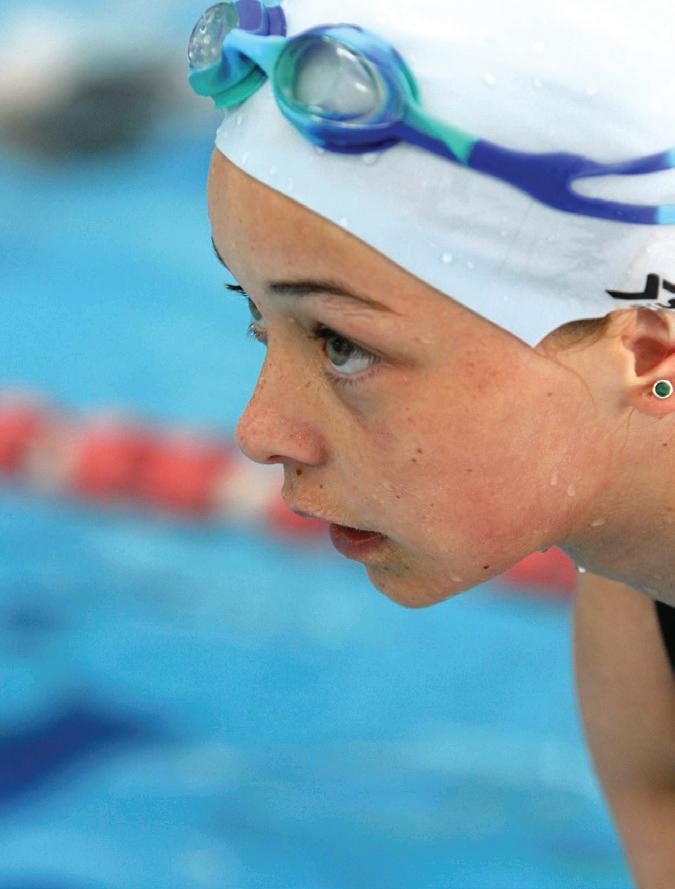
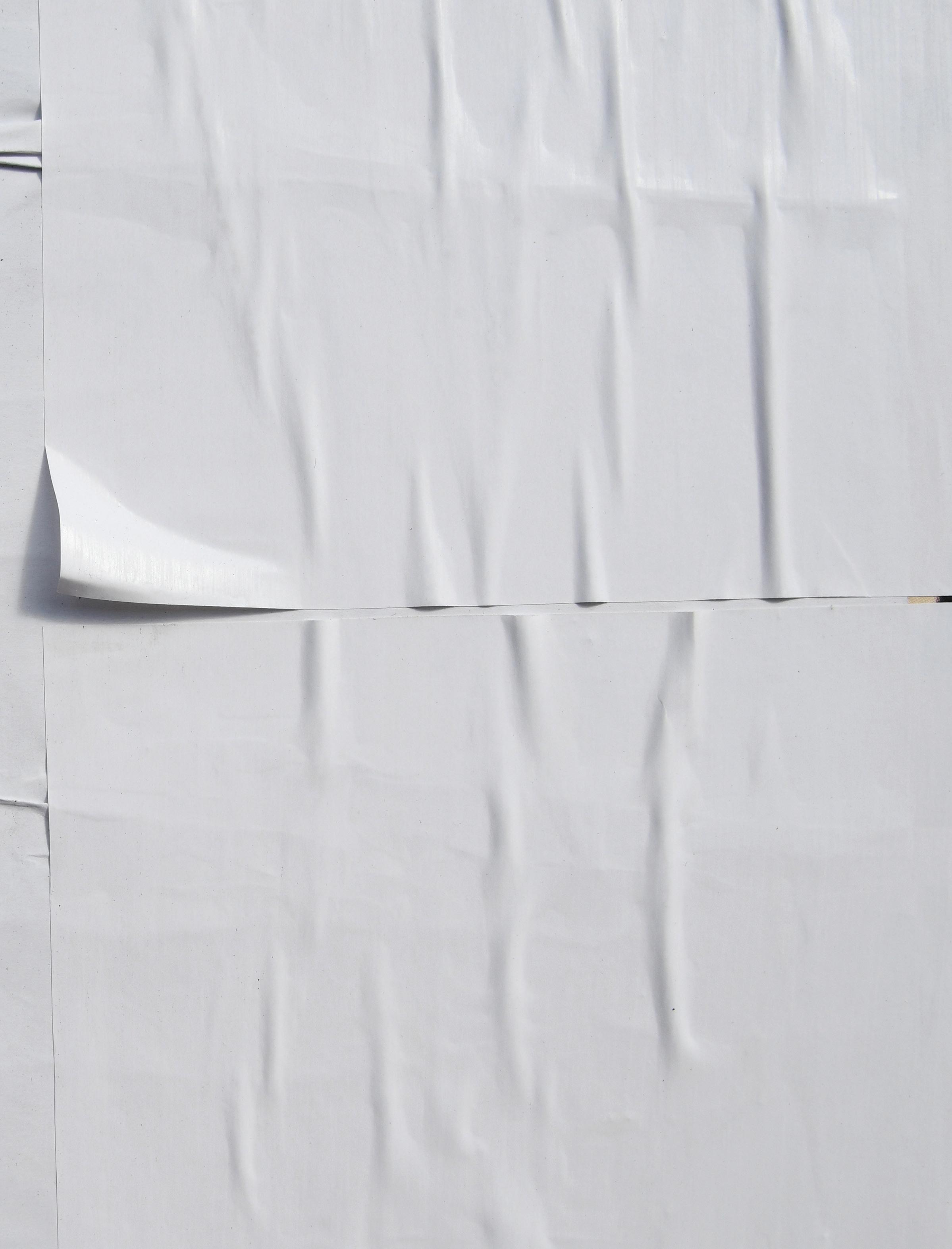
↓
positive education
BOSTOCK HOUSE
Reconciliation
‘Be a Voice for Generations’ was the theme of National Reconciliation Week (NRW), encouraging each Australian to “act today for a more just, equitable and reconciled country for all.” NRW was marked across our four campuses with an assortment of assemblies, guest speakers and performers, as well the annual APS Sport Reconciliation Round which featured football jumpers designed by Coco Jeffrey (Fr’21), Jaycee Sellings (Ga’20) and Zoe Walters (Ga’20). At Bostock House, NRW was marked with a handful of workshops and learning opportunities that left a lasting impact for our youngest students.
On National Sorry Day, Nikki McKenzie and Norm Stanley performed a Welcome to Country and smoking ceremony at Bostock House, educating our youngest students on the significance of these ceremonies. Tim Stares ran three sessions on the same day with Bostock House students, introducing them to a variety of Aboriginal artefacts. Our students had been learning about Indigenous cultures in the lead-up to NRW, and these visits provided invaluable opportunities for them to ask questions and further their understanding.
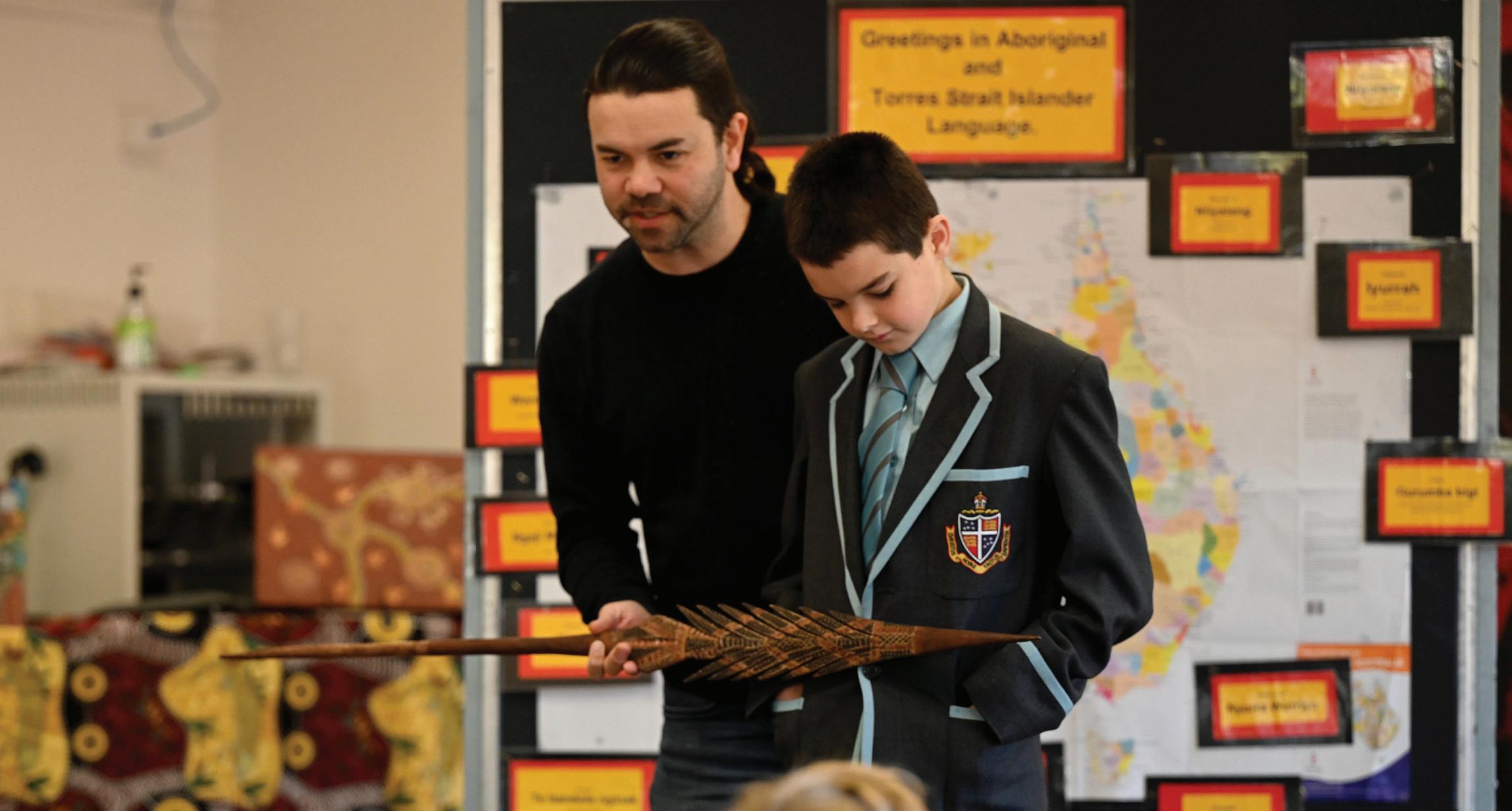
On the last day of NRW, Aunty Naomi Surtees held a workshop on knitting, weaving, beading and storytelling for our Bostock House students. Aunty Naomi was generous in sharing her time and expertise with our students; the engagement and attentiveness to the project amongst our youngest learners was a joy to see.
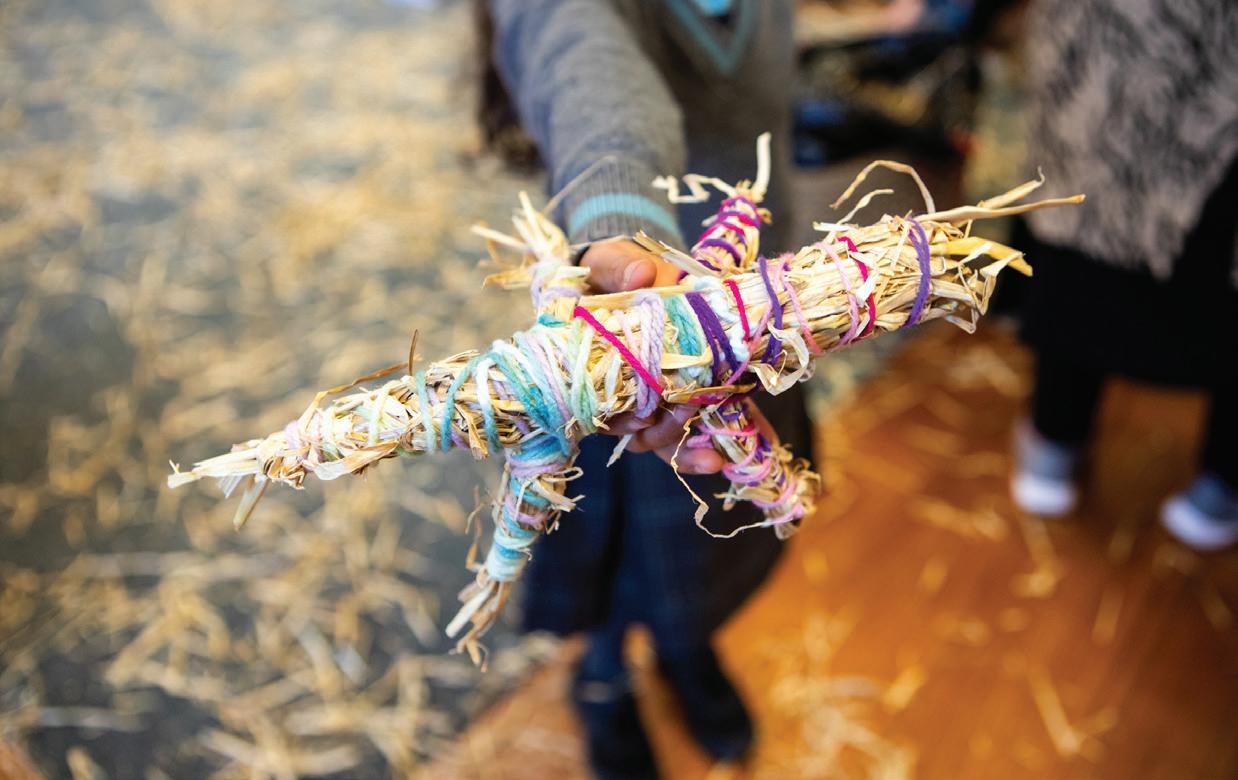
SECTION 0 2 — SCHOOL ↓
Week




TEN YEARS ON
In 2012, after half a decade as Senior Chaplain of Geelong Grammar School, the Archbishop of Melbourne appointed me to serve as Vicar of the historic Anglo-Catholic parish of St Peter's Eastern Hill. Five years later, I was asked to join the GGS School Council and had the great privilege of reconnecting with the light blue once again in this way. Then in 2022, I took a working sabbatical at Melbourne Grammar School, dipping my toes back into teaching, and loved it. This just happened to coincide with the conclusion of Fr Howard Parkinson’s remarkable 22 years of ministry at GGS, and the resultant opening of a position at this great school. My return to GGS this year has been primarily in a teaching role, as Head of Philosophy and Religious Studies, and as a member of the Humanities faculty and English department. It is such a joy once again to be working alongside some of the most talented teachers in Australia, together shaping the lives of students in the classroom, through extracurricular activities such as the newly formed Philosophy Club, and by means of the pastoral relationships that this unique boarding environment affords.
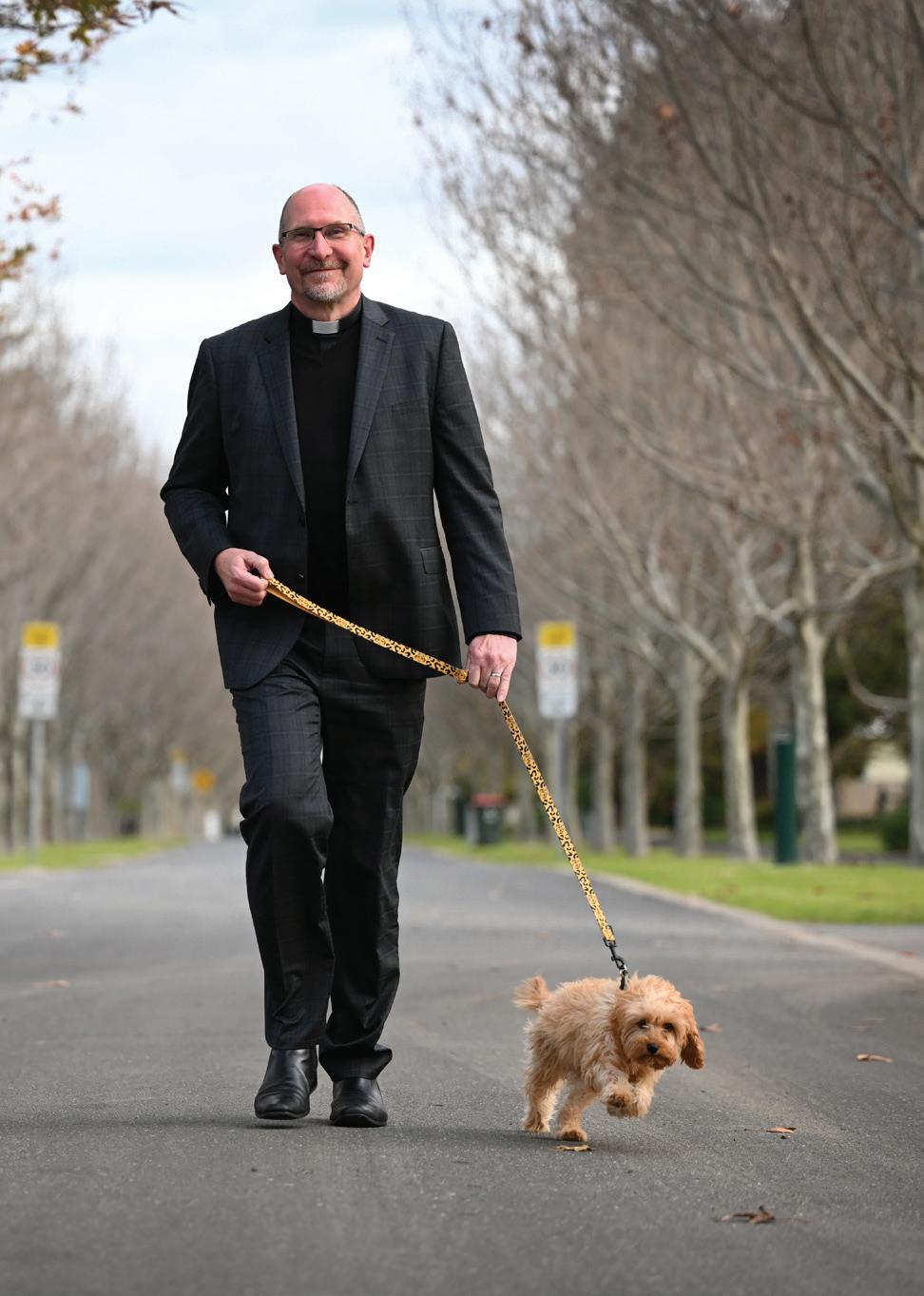
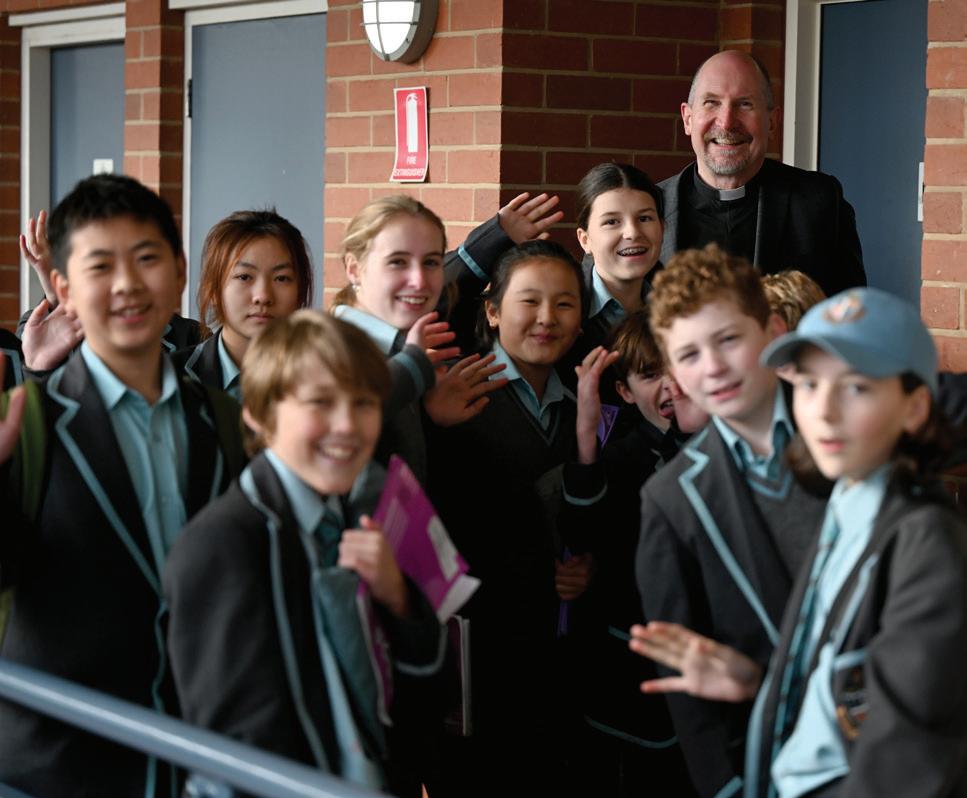
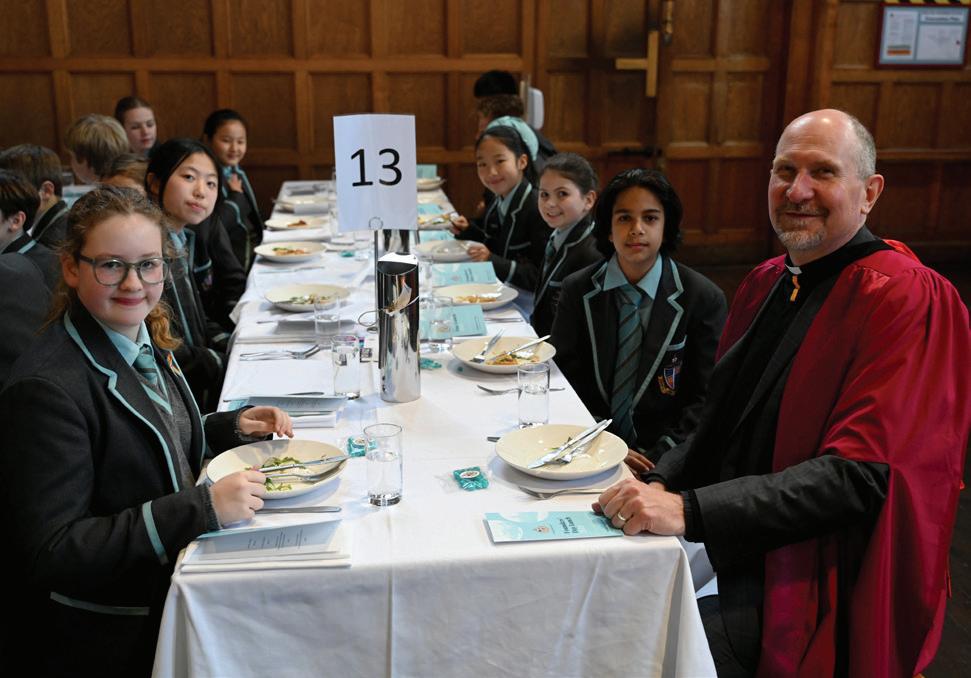 The Rev’d Dr J. Hugh Kempster Head of Philosophy and Religious Studies
The Rev’d Dr J. Hugh Kempster Head of Philosophy and Religious Studies
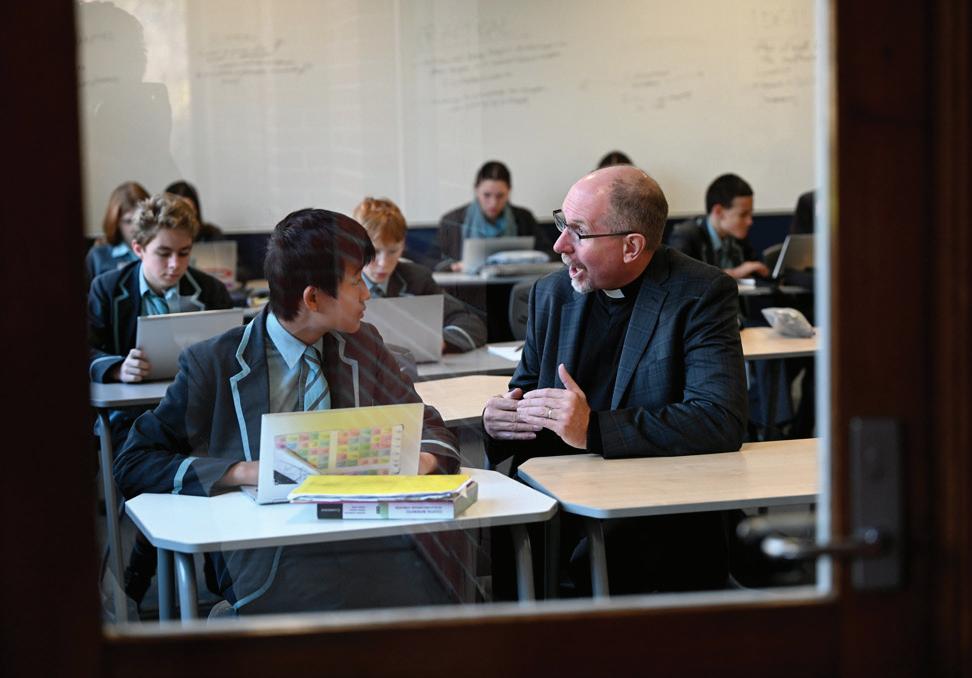

40 ↓
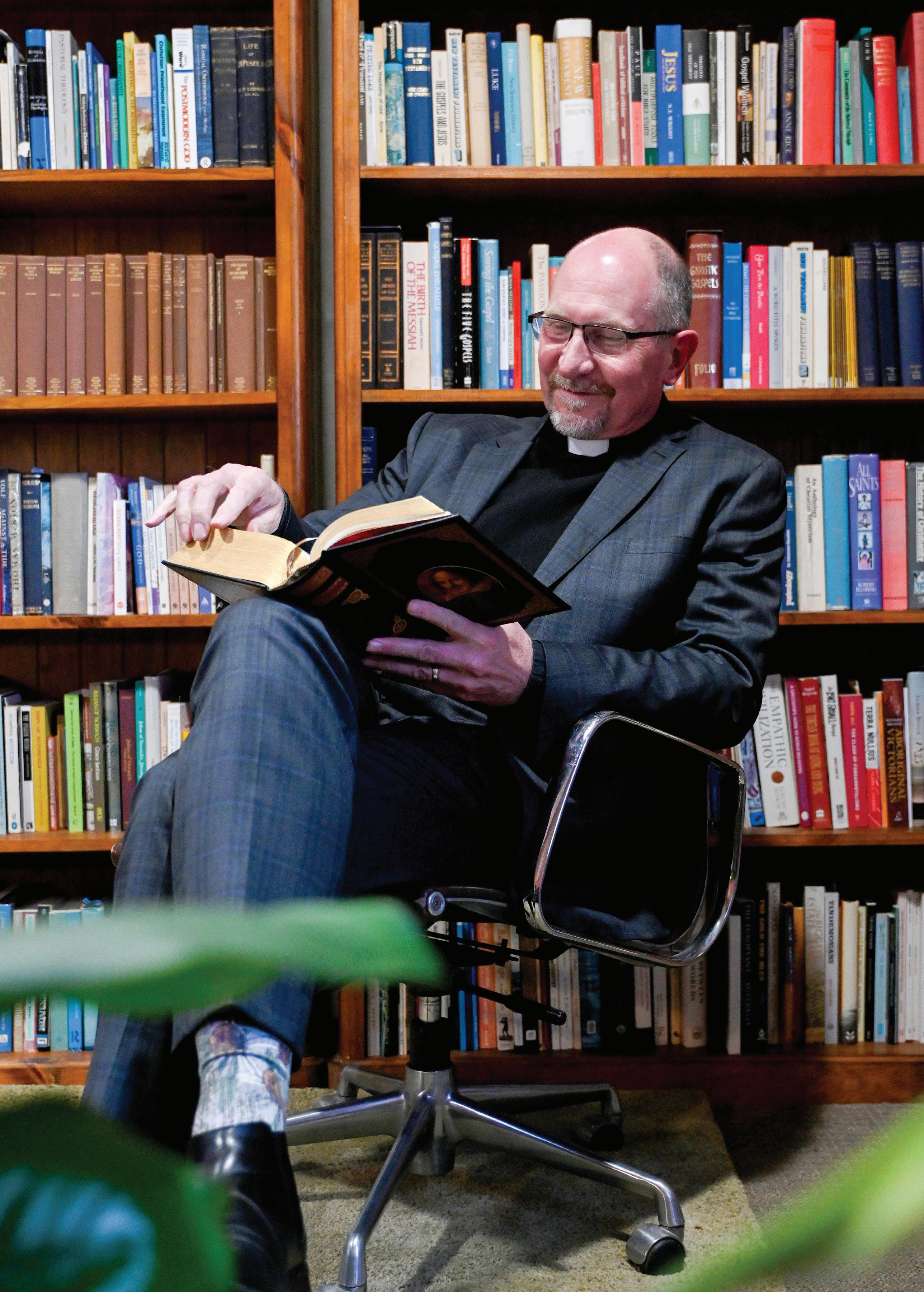
I am once again overcome with gratitude by the generosity and support of our Geelong Grammar School community. In the final weeks of Semester 1, we held our biennial Giving Day to support our ongoing provision of scholarships for students who would otherwise be unable to access a Geelong Grammar School (GGS) education. Once again, our community responded enthusiastically and generously.
Thursday 15 June was our official Giving Day. On that day (and in the weeks preceding and following June 15), we were supported by more than 500 members of our community who gave more than $1.5 million to support future generations of GGS students. This marks an historic milestone for our School as our most successful Giving Day ever, far exceeding our target of $1 million and enabling truly life-changing opportunities for so many young people.
We could not have achieved this momentous outcome without the support of our matching and leading donors, who enabled gifts on the day to be doubled until we reached our target. Thank you for your continued kindness and leadership. Thank you too to all those who made a Giving Day gift and helped us on our path to ensure access to a GGS education for all deserving students.
I would like to particularly recognise the exceptional contributions of two members of our community this year. The first of these noteworthy gifts came from a Clyde School old girl who generously augmented the Clyde School Scholarship with a $1 million gift in February 2023 – an inspiring individual contribution. This gift, combined with ongoing support from the Clyde community across many years, has enabled the endowment for this life changing scholarship to reach nearly $2 million. We are humbled by this gift and by the ongoing support of the Clyde community.
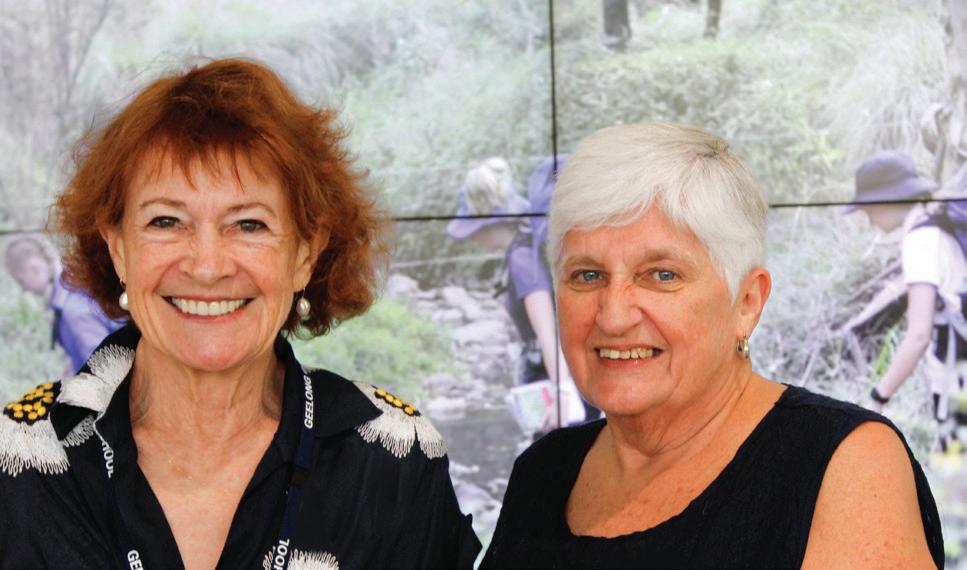
I also acknowledge the immense generosity of Anthony (Tony) Poolman (FB’60) and his wife Jennifer. For some years now Tony has been supporting the Anthony Poolman Scholarships which have offered students who would otherwise be unable to attend the School the chance to experience a GGS education. In addition to seeing through his commitment to the two current recipients of the Anthony Poolman Scholarship, Tony and Jennifer have made a further significant gift this year to create the new Anthony Poolman Sports Scholarship. This new scholarship will become a perpetual offering for students demonstrating exceptional sporting talent.
On behalf of the Geelong Grammar Foundation, our School and the many, many students who will benefit from these gifts well into the future, I express my sincere thanks to our Clyde old girl and to Tony and Jennifer Poolman, for their leadership and munificence.
This year’s Biddlecombe Society Bellarine Luncheon, held at Barwon Heads Golf Club on Thursday 23 March, was yet another wonderful celebration of the generosity of our community. In this, the 70th year of Timbertop, we celebrated with guest speaker Ross Hopkins, Head of Timbertop, along with four OGGs from the original 1953 Timbertop cohort. The tales and tributes to our magnificent Timbertop campus inspired and amused our record 108 Biddlecombe Society members and guests in attendance.
The support of our community through bequests remains as important as ever to the work of the Geelong Grammar Foundation. We are grateful to all 245 current members of the Biddlecombe Society and to all those who have committed a gift in their Will to support our School. Thank you for your thoughtful benefaction.

Our ongoing commitment to stewardship saw the return of our annual Scholarship Luncheon in Term 1, celebrating both the inspirational giving of our scholarship donors and the deserving recipients of this support. Our nearly 100 guests, including donors, students and families, were treated to the oratorical talents of our guest speaker, Rohan Byrne (Fr’09), who was himself a scholarship recipient. Rohan implored the students in the room to take pride in their achievements and hold their heads high as scholars. He shared his deep gratitude to those who made his time at GGS possible, and who continue to make this possible for others through their support of scholarships.
I would like to acknowledge the important work of all those in our community who give their time to help realise the philanthropic ambitions of the Foundation. On Giving Day, our call room at Corio was full of volunteers; current parents, OGGs, past parents and staff, along with remote callers in Sydney and Brisbane, who gave of their time to join the fundraising effort. The gift of volunteering is invaluable in achieving the best outcomes for our students and our School.

I am so very proud to be involved in leading the work of the Geelong Grammar Foundation in support of our School in 2023. My sincere gratitude to the members of our community who so generously continue to make possible the hundreds of scholarships, building projects, library resources and other initiatives of the School through the Foundation. Thank you.
Penelope McBain Chair, Geelong Grammar Foundation
42 LIGHT BLUE - GEELONG GRAMMAR SCHOOL
Foundation Chair
1. COGA Treasurer Peta Gillespie (Clyde ’69) chats with Penelope McBain at the 2023 Scholarship Recipient Luncheon.
1
2. Vanessa Mahon, Foundation Co-Deputy Chair, in the call room on Giving Day

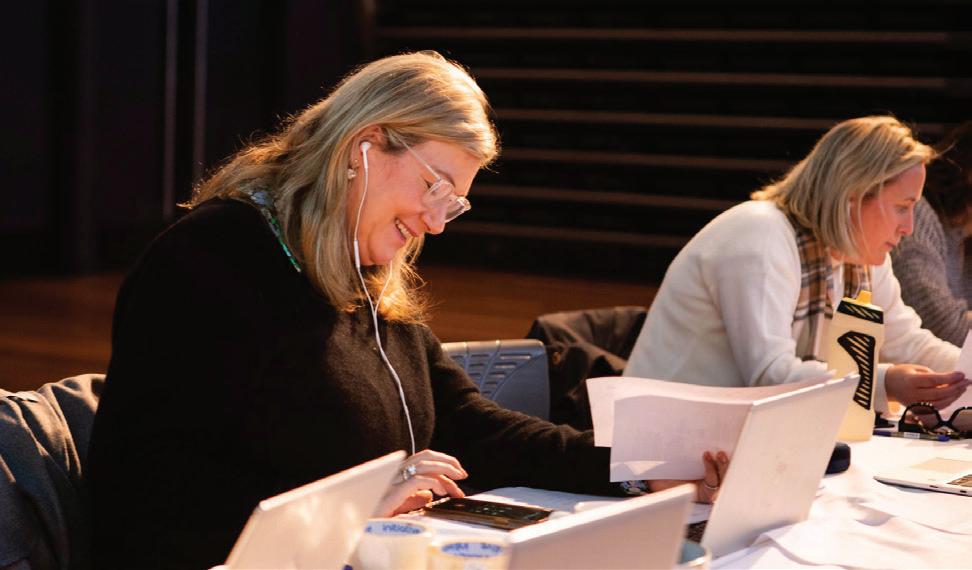

43 LIGHT BLUE - GEELONG GRAMMAR SCHOOL Annual Giving Clyde School Michael Collins Persse Boz Parsons Other Named Scholarships GGS Football Indigenous Tommy Garnett Hartley Mitchell J R Darling Memorial Australian Rural and Regional Hermitage Old Girls’ Association Jonathon K Breadmore 445 20 53 5 26 2 11 15 10 Western AustraliA REST OF THE WORLD
TERRITORY QUEENSLAND NEW SOUTH WALES ACT VICTORIA
SOUTH AUSTRALIA 49% 17% 3% 3% 1% 1% 10% 5% 2% 2% 3% 2% 2% % S
Donor Breakdowns by State/ Territory Total Income $1,586,018
donors
Average Gift (before matcing) $1,695 LARGEST GIFT $112,439 SMALLEST GIFT
2
NORTHERN
TASMANIA
colarshipsSUPPORTED
Total
= 587
$5 Giving Day 2023
Living Creatively
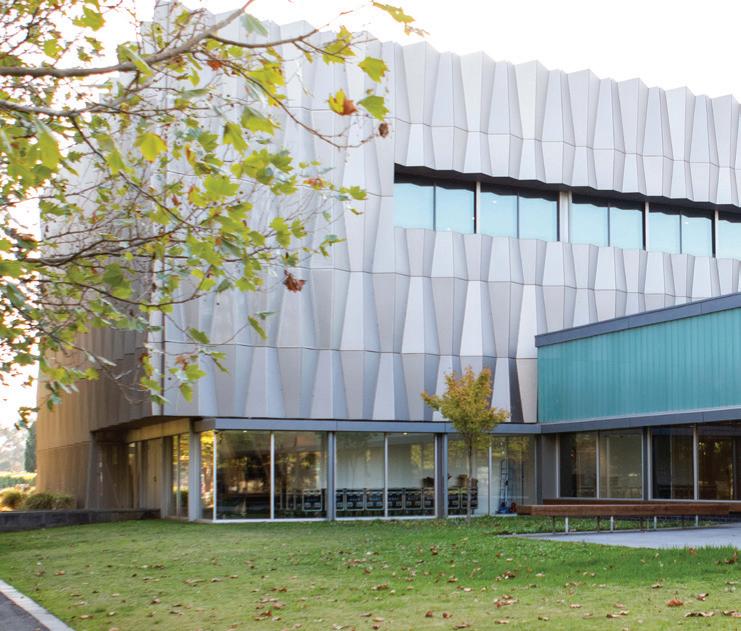
 Zoe Naylor (Yr12 Cl) and Charlie Doggett (Yr11 FB) in the Year 12 VCE Theatre Studies performance of Orpheus Back in The Bracebridge Wilson Studio in Term 1.
Zoe Naylor (Yr12 Cl) and Charlie Doggett (Yr11 FB) in the Year 12 VCE Theatre Studies performance of Orpheus Back in The Bracebridge Wilson Studio in Term 1.
It is no surprise that Ian Darling AO (P’79) has a neat answer to the question ‘What is creativity?’ Being creative is not something that he does, but rather something that he is. And that goes all the way back to his primary school days at Geelong Grammar School’s Toorak campus, known then as Glamorgan. “I was introduced to creative thinking there,” explained Ian. “Glamorgan introduced open plan learning, which involved far less structured schooling but rather focused on doing projects on things we were interested in, with lots of general knowledge quizzes and a big emphasis on drama and debating. My structured maths and English perhaps didn’t benefit as much, but I learnt the importance of time management and creative thinking from a very young age. When I think back to Glamorgan, it has almost been a blueprint for what I’ve been able to do in the 40 years since I left school.”
Ian has had two careers in that time, both founded in creative thinking. The first of these was running a funds management business, something that might be more typically associated with financial acumen than a creative mind. Ian’s approach was different, applying the Warren Buffett investment approach, which was counter to modern portfolio management theory taught at business schools at the time. This was a creative approach to an age-old industry. His second career as a documentary filmmaker was an inherently creative option, but Ian’s approach was to create a shift in thinking around what documentaries can do. He set up Shark Island Productions to create social impact documentaries, with extensive education programs.
He then set up Documentary Australia, a foundation that enables philanthropic funding to come into the documentary space. “Documentaries can be a major force for social change by working with organisations to highlight important issues and shift policies and community behaviour by raising awareness.” The Final Quarter, the unflinching documentary about the racial vilification of AFL player Adam Goodes, which was produced and directed by Ian, is a case in point. Viewed by an estimated four million people so far, including the players and staff of all AFL clubs and in thousands of classrooms across Australia, it is not overreaching to say the film has the potential to ignite a generational change in attitude.
Ian is living proof that it is essential to be able to think independently and creatively, and the best place for those skills to be learned is at school. “We need to do everything we can to prepare young minds to think creatively – not by questioning the education system but by seeing what we can do to broaden it at every instance. Schools are well positioned for creative risk-taking.”
At Geelong Grammar School, Creative Education is one of three Strategic Pillars on which the School’s programmes and curricula are built. Not only did Ian lay the foundation stone for the pillar of Creative Education, as the largest private donor to the SPACE, but for the past five years, he and his wife Min have propped it up. Over this period, they have donated an additional $1 million towards the implementation and progression of Creative Education – an incredibly generous act of philanthropy, though the label “philanthropist” is one that sits uncomfortably with Ian. Watching the film version of his play The Twins, in which he co-stars with his school friend Greg Fleet (A’79), is the best and most entertaining way to find out why Ian would prefer not to be known as a philanthropist. In a nutshell, it is because he does not want to be seen as someone who just puts his hand in his pocket. To Ian, monetary giving is an opportunity to create lasting change by combining funding with action. “Engaged philanthropy is really important – that means a group of like-minded donors aligning with sector partners, generating leverage by pooling resources, finding the right partners, and sticking with it for many years. It’s an investment.”
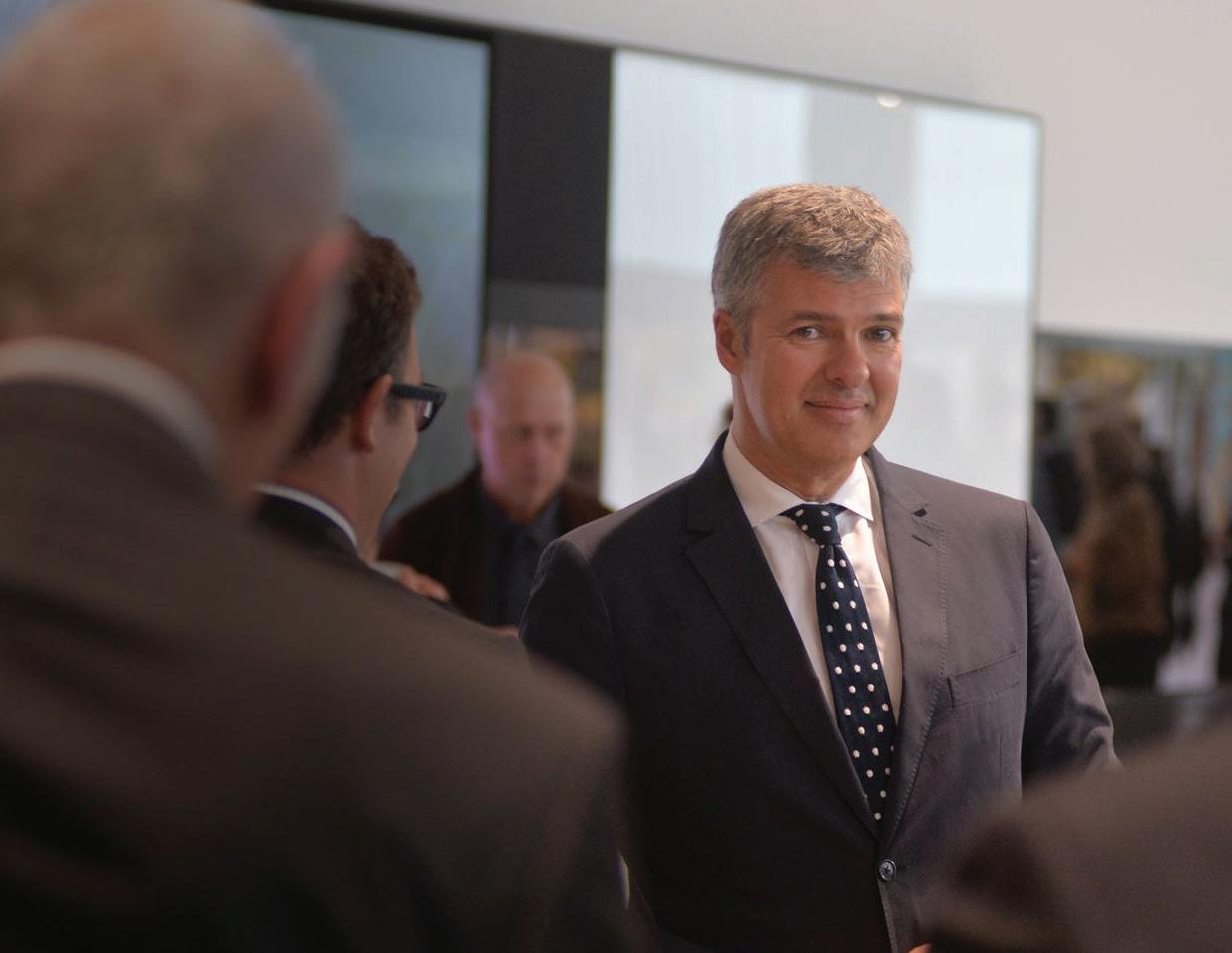
Ian’s decision to invest in Geelong Grammar School began with a tap on the shoulder by his friend Jeremy Kirkwood (FB’79), then chair of School Council. “He asked me if I would help with the building of a new theatre, which was desperately needed to replace the old Bracebridge Wilson theatre. I was the chair of the Sydney Theatre Company and on the board of NIDA, and so in a practical sense I understood the benefits of establishing a world class creative space.” Crucially, Ian was not interested in simply funding a building.
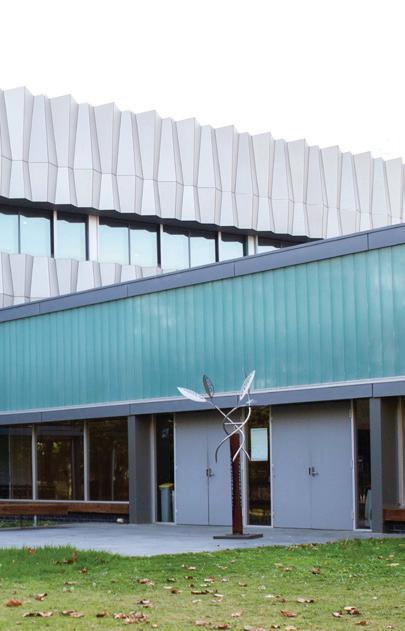
45
“L
ife is not a series of multiplechoice questions; it isn’t an essay. It’s a daily set of tasks and challenges that require judgement, innovation and risk assessment. This is, in my mind, creativity.”
Ian Darling AO (P’79) at the opening of the School of Performing Arts and Creative Education in 2015.
“So often the creation of a new building can be a catalyst for a shift in thinking or learning”, explained Ian. Geelong Grammar School had form here, with the opening of the School’s Handbury Centre for Wellbeing in 2008 being the catalyst for the introduction of Positive Education. Similarly, Ian knew that a new performing arts venue must be the catalyst for introducing Creative Education to the School.
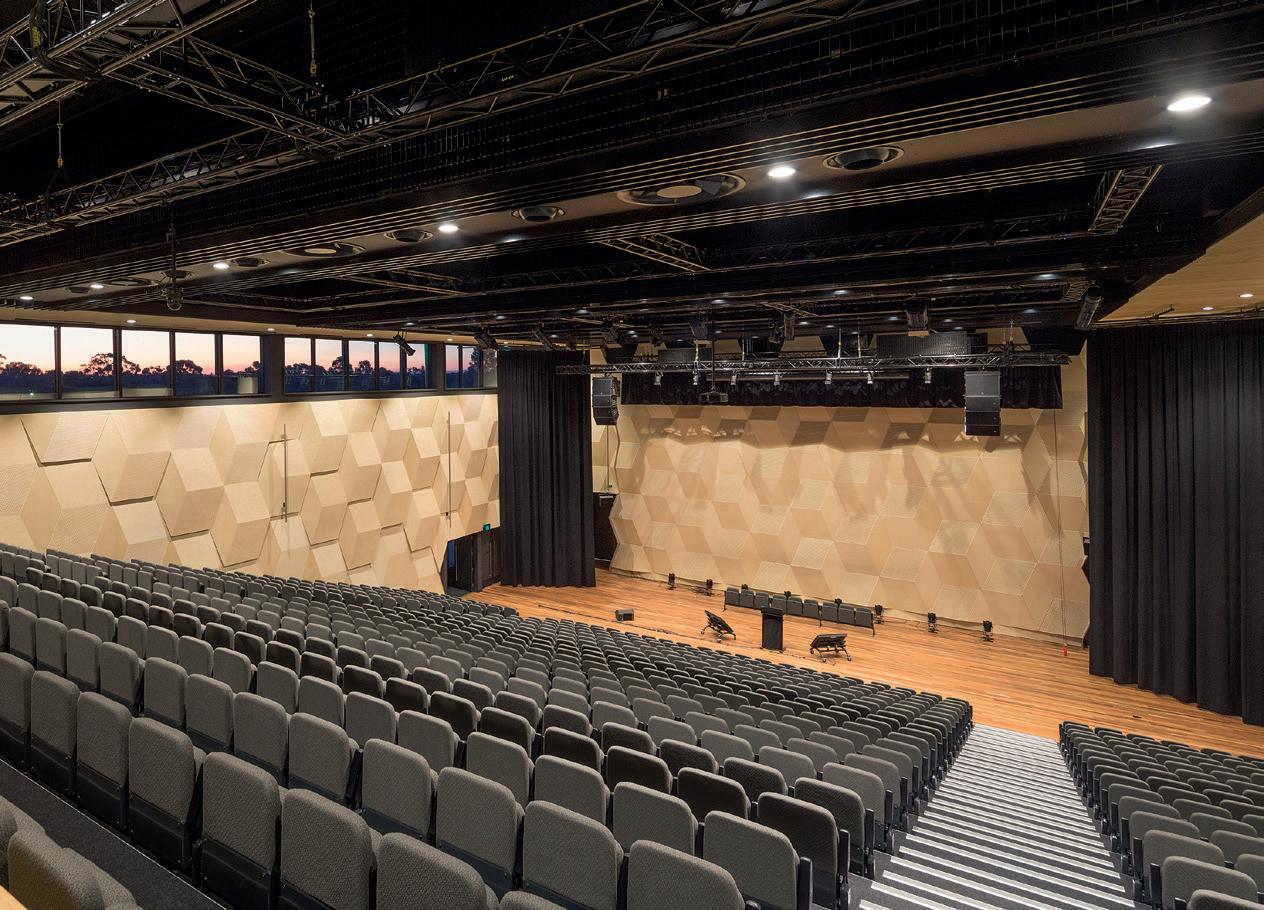
Ian refers to this model as the “hardware/software” approach. “From a fundraising point of view, there was a very positive reaction from donors because they knew that their money was not just going into bricks and mortar but also towards bringing Creative Education into the School. It was vitally important that creativity was at the heart of the building, including its name.” The resulting School for Performing Arts and Creative Education, known and loved as the SPACE, is a building that brings people together as well as having the infrastructure to promote excellence in the arts. “We thought hard about how to design a building that was flexible and served as a hub of the School, which could be used in many different creative ways – a place of community that would strengthen the role of the arts.” Opened in 2015, the SPACE has become such an integral part of the School, serving so many different needs, that it is hard to imagine life without it. Overwhelmingly, it has met its brief of bringing people together. It is a building in which possibilities stir, and memories are made.
Significantly, the building of the SPACE resulted in the leverage that is always Ian’s philanthropic goal. When he and Min offered to donate an additional $1 million towards the implementation of Creative Education, it was very important to Ian that the School was prepared to match their donation. Then, to his delight, the Foundation made the same pledge, and their $1 million became a $3 million investment. “It showed not only how much the School believed in Creative Education but also those who were guiding the allocation of resources for the future benefit of the School were prepared to back it too. It was a powerful three-way initiative that enabled the School to honour the commitment of donors who put up the $20 million for the SPACE. It was vital that we followed through and fulfilled our pledge.”

Investing, like creativity, does not happen without taking risks, but Ian was comfortable donating “risk capital” because Creative Education was new and therefore any measure of its success needed to be flexible. “Five years on, Creative Education is still being pursued, the School has a model of applying it, and funding has increased. Those are the rewards at this stage. The real proof will be over the next 20 years as a whole generation go through, and past students will be able to talk about how their education affected their thinking when they got into the real world. Philanthropy has a long tail. I had a very positive experience at Geelong Grammar School, and I was very much a beneficiary of the generosity of many philanthropists in generations before. Time is an enormously valuable commodity in terms of philanthropy.”
While he waits to see what the students of the Creative Education generation will bring to the world, Ian is content to enjoy the return on social capital from his investment and to encourage others to adopt his model of purposeful and strategic philanthropy. “Many of my peers, the students and families of the 1970s, have been very generous in recent years, and the major supporters of Positive Education, Creative Education and scholarships. It’s time now for more students and families of the 1980s and 1990s to join us by getting more involved. The opportunity for philanthropic support at Geelong Grammar is enormous because it’s such a large community and there are so many people with incredible expertise and goodwill. If you’re able to assist with the provision of buildings or programmes at the School you’ll be affecting future generations, and that feels pretty good.”
To read more stories from our Impact of Giving donor report about our School’s spirit of philanthropy, please visit the Geelong Grammar Foundation website: www.ggs.vic.edu.au/GGS-Giving/impact-of-giving
↓ SECTION 0 4 — FOUNDATION 46
“S
o often the creation of a new building can be a catalyst for a shift in thinking or learning”
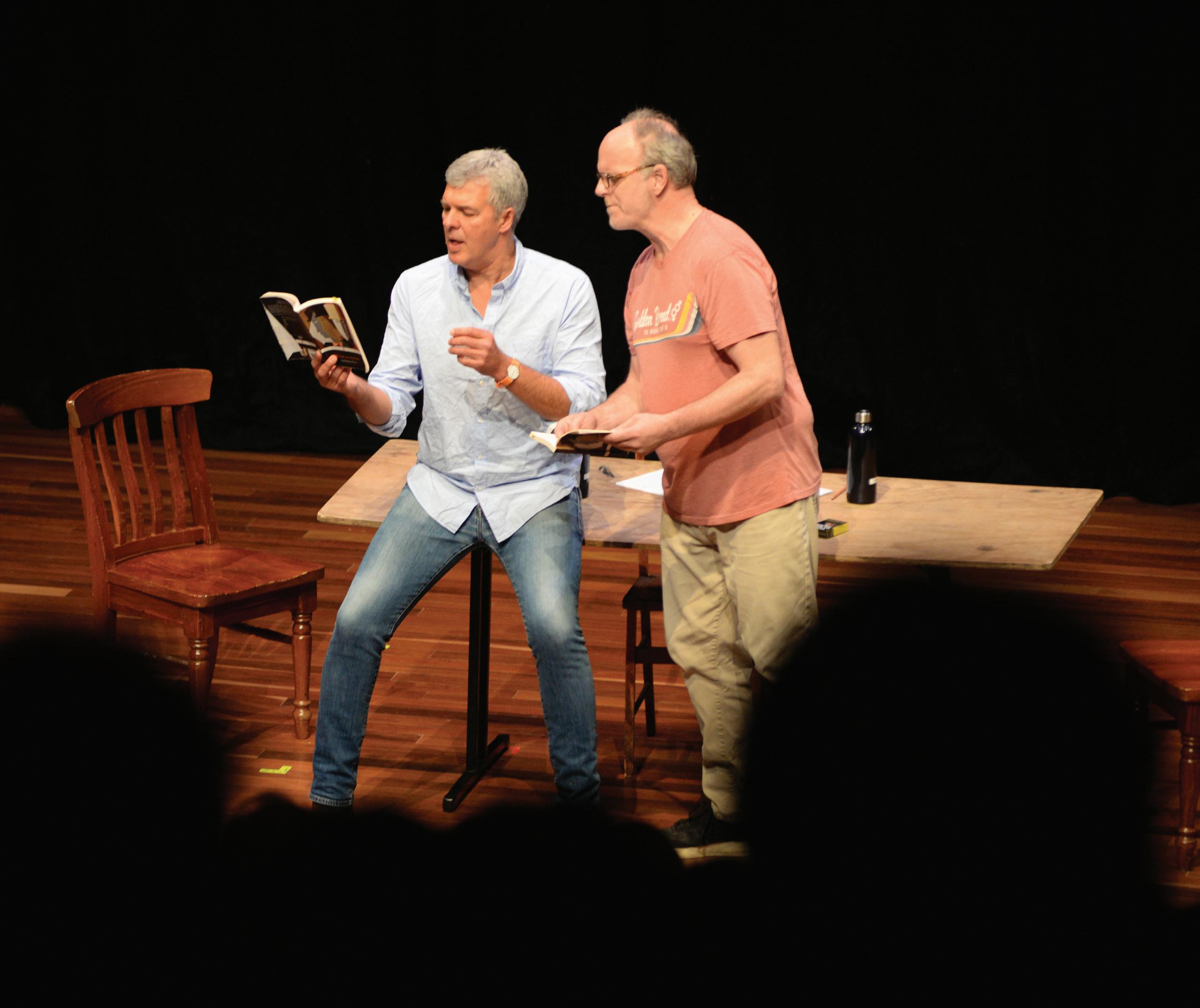
LIGHT BLUE - GEELONG GRAMMAR SCHOOL 47 ↓ SECTION 0 4 — FOUNDATION
“W e thought hard about how to design a building that was flexible and served as a hub of the School, which could be used in many different creative ways – a place of community that would strengthen the role of the arts.”
Ian Darling AO (P’79)
Ian Darling and Greg Fleet (A’79) performing
The Twins in The David Darling Play House in 2018
A SORE LOSS


The tragic story of the Geelong Grammar School 1913 First VIII






The crew that rowed for Geelong Grammar School in the Head of the River in May 1913 put up quite a fight. Light in weight, they started the season as one of the weaker crews in recent memory, “but they soon demonstrated that they were lively, and they possessed considerable pace”. On race day, drawn in the third heat against Melbourne Grammar School, GGS forged ahead to lead by a length-and-a-half at halfway. MGS came from behind when GGS got into slack water, a tremendous struggle ensued, and MGS won by less than a canvas. The crowd roared and both crews were completely rowed out.



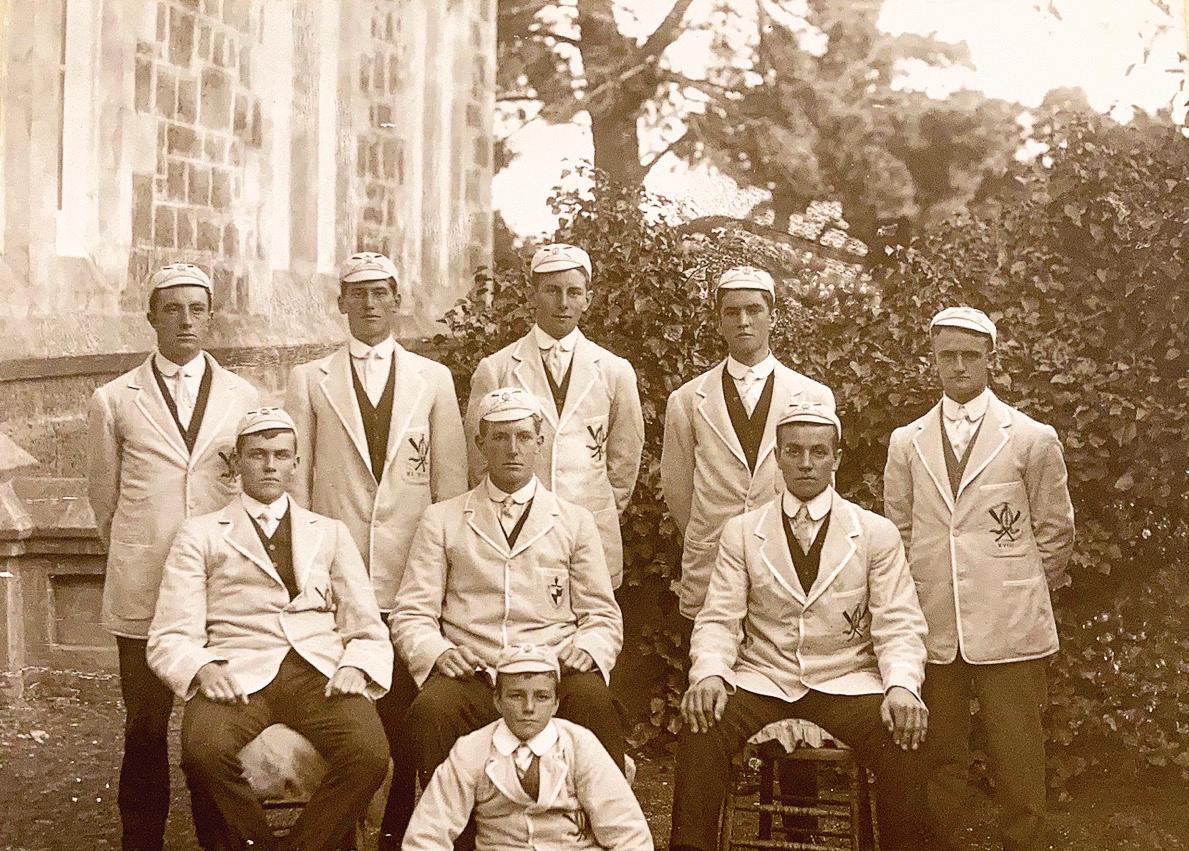
LIGHT BLUE - GEELONG GRAMMAR SCHOOL ↓ 48
In GGS’s boat were some of the School’s finest pupils: school prefects Charles Hawker, Ken Ronald and Reg Whitteron, and in stroke seat, senior prefect and captain of boats Allan Davenport. Alan MacLeod, in bow seat, was in his final days of school –the land was calling, and days later he went west to become a jackeroo. John Webster, Cliff Hunt and George Douglass were in the year below. In 1914, the thrill of victory in the Head of the River would be theirs, along with young John FitzNead, the coxswain, who was not yet 13 years old.
The crew was captured in a photograph, wearing their rowing caps and light blue blazers, standing in front of the old school, the last of their tribe to inhabit it. Just weeks before the big race, before a crowd of over a thousand people, Allan Davenport and Charles Hawker helped to lay the foundation stone of the new school at Corio. There is a sense of expectation, confidence, and perhaps a dash of insouciance about the young men in the photograph. It is shocking to look at them, so many decades later, with the knowledge that most would live but a few years more, and only one of their number would reach old age. When the youngest crew member, John FitzNead, died of meningitis aged 17 on 12 July 1918 – with an engineering cadetship in the offing and an ambition to join the Australian Flying Corps – he had already outlived four of his oarsmen. Standing in chapel with bowed head, John heard their names read aloud among the fallen of World War One.

Five of the 1913 crew – Charles Hawker, Ken Ronald, Reg Whitteron, George Douglass and John Webster – enlisted almost immediately following the declaration of war on 4 August 1914. Their education had inculcated that public service was an expectation, not a choice. Duty came before self. Already in England, and studying at Cambridge, Charles enlisted in the 6th Battalion, Somerset Light Infantry and received his commission. Ken enlisted together with his older brother Bob, and their own horses, in the 6th Light Horse, and Reg enlisted as a stretcher bearer with the 14th Battalion, 4th Brigade. John Webster and George left school early to enlist, George into the 5th Battalion AIF, and John into the British Expeditionary Force. He was commissioned a second lieutenant with the West Yorkshire Regiment.
By December, Ken and Reg were on a ship heading for Egypt, and from there to the Dardanelles. On the afternoon of 25 April 1915, hours after the fateful dawn landing on the Gallipoli Peninsula, Reg landed with the 4th Brigade on the same beaches. On 6 May, he was wounded in both thighs and repatriated to Cairo, thereby not present to witness the heroic actions of his comrade in the 14th Battalion, Corporal Albert Jacka, who on 19 May claimed the AIF’s first Victoria Cross. But Reg was back on the peninsula by July, along with Ken who was helping to secure a sector on the far right of the Anzac line. They died weeks apart, Ken heroically on 12 July while taking part in a feint to support reinforcements coming up the line, and Reg on 8 August during the Battle for Lone Pine. John Webster landed on the peninsula a week later, but after just two days was wounded in the chest and shoulder, and evacuated to England. George made it to Egypt, but not to Gallipoli. He had a serious attack of rheumatism, was declared unfit for service, discharged, and sent back to Australia.
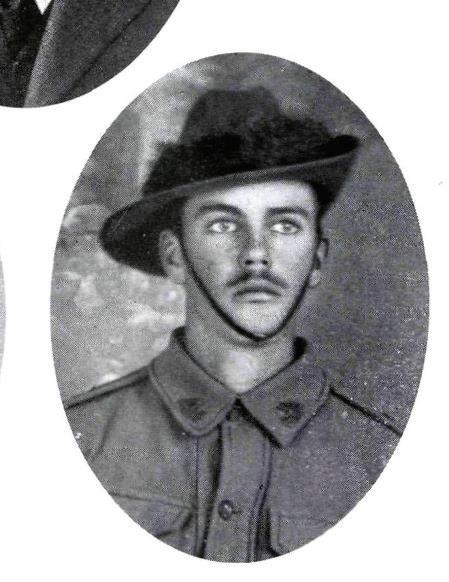

LIGHT BLUE - GEELONG GRAMMAR SCHOOL ↓ SECTION 0 4 — MAILROOM 49
Allan Davenport arrived on the Gallipoli Peninsula in time to be part of the evacuation, the campaign having failed following the August offensive. Allan had enlisted from Britain in May 1915 in Kitchener’s Army, and was commissioned in the 3rd Battalion, 2nd East Lancashire Regiment. He spent 1916 in Egypt and the Sinai. Charles Hawker, meanwhile, convalesced for the duration of 1916, having been badly wounded at the Battle of Loos the previous September. His left eye was removed, and 14 operations performed, but somehow while recuperating Charles managed to cram a year’s study at Cambridge into one term and pass his exams.
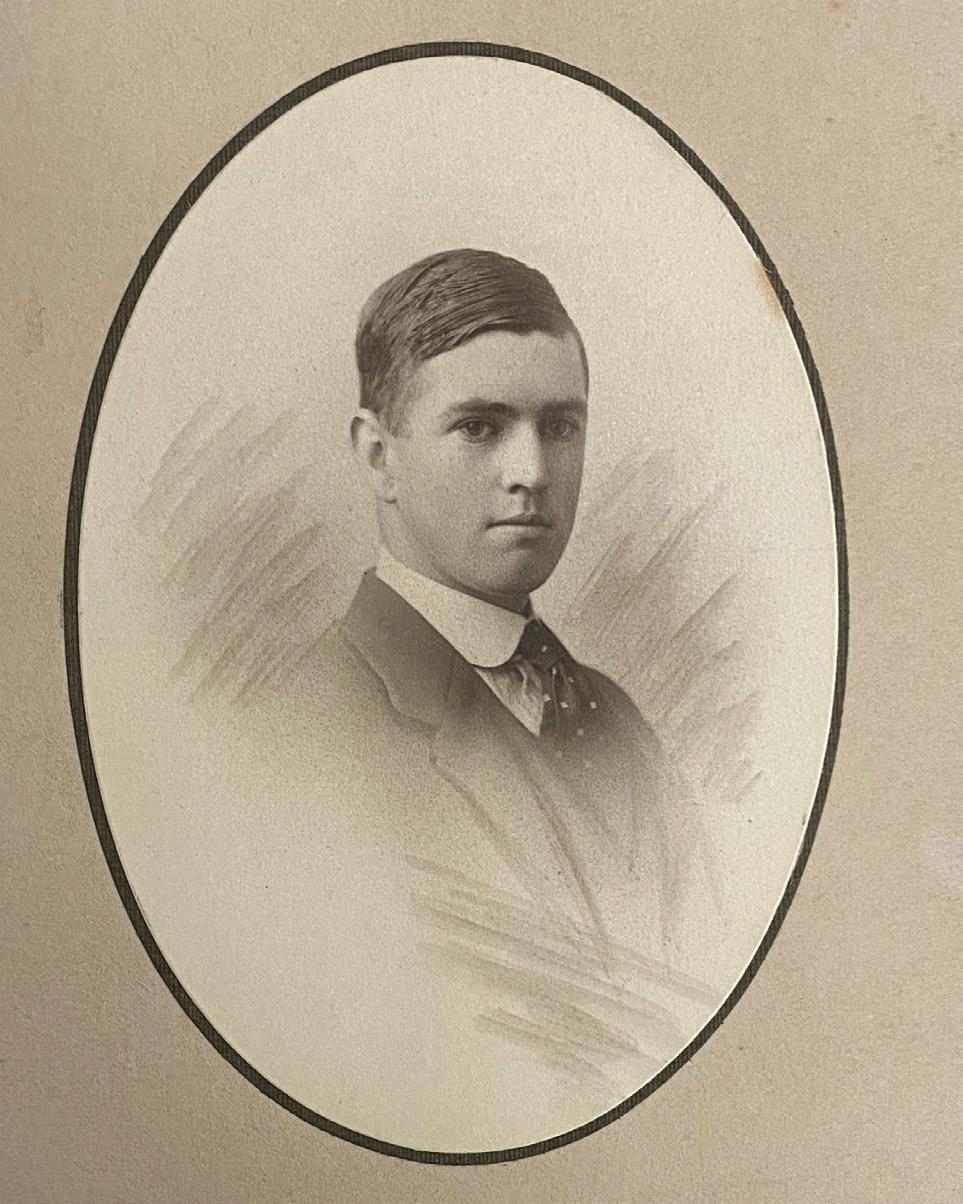
Cliff Hunt enlisted in the 53rd Battery, 14th Field Artillery early in 1916, and had an eventful journey over: “It was very rough in the Bay of Biscay, and an officer was thrown overboard by an extra heavy roll. Here my knowledge of rowing was put to use; I was one of the crew picked to man the lifeboat. After battling nearly an hour in the heavy seas, we picked him up. The Captain was afterwards courtmartialled for stopping, as it was against orders.” Alan MacLeod enlisted around the same time as Cliff. He was tossed into the horror of the Somme and Fromelles, which he survived.
John Webster recovered from his Gallipoli wounds only to be seriously wounded twice more on the Western Front in 1916, the second time at Contalmaison on 25 August where his efforts leading a counterattack earned him a Military Cross. George Douglass was also on the Western Front by the end of 1916, having taken a boat to England almost immediately after being discharged from the AIF. Chronic health conditions were more readily overlooked when life expectancy on the Western Front was a matter of months. He was accepted for training immediately, and commissioned a second lieutenant in the 157th Brigade, Royal Field Artillery in July 1916.
Charles Hawker was equally determined to return to the front, despite his considerable physical disabilities. He petitioned the War Office repeatedly, and in early 1917 was promoted captain and permitted to rejoin his regiment. His war came to an end on 4 October amid the quagmire of Broodseinde during the Third Battle of Ypres. While leading an attack on some German pillboxes his spine was pierced by shrapnel, paralysing him from the waist down. Left for dead, he lay in the mud for 12 hours before being removed to a casualty clearing station. In hospital in London, he was told he would never walk again. But he was luckier than Alan MacLeod, who died on 19 October, the day after receiving severe wounds at Westhoek Ridge. The inscription his parents later chose for his headstone was ‘Peace perfect peace’.
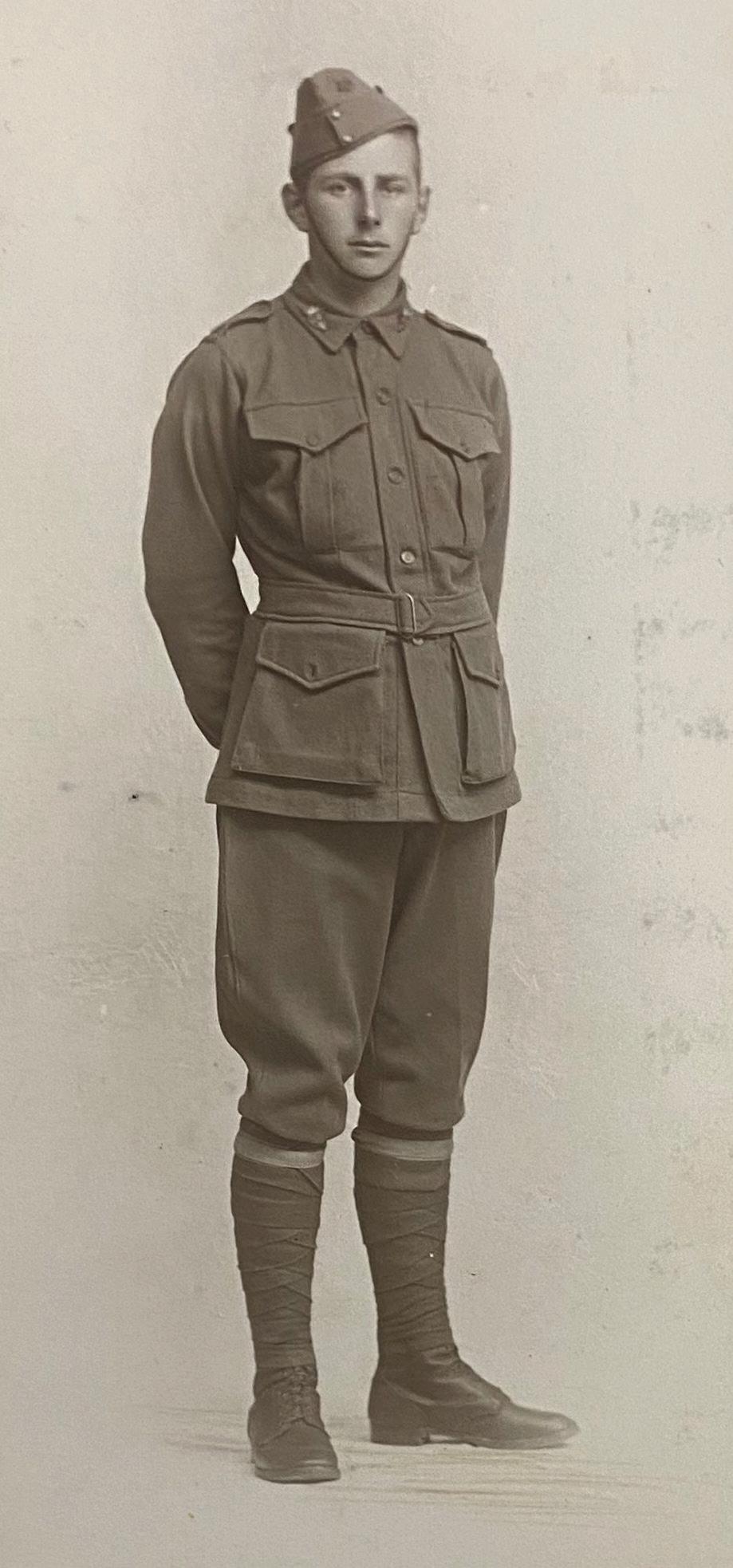

LIGHT BLUE - GEELONG GRAMMAR SCHOOL ↓ SECTION 0 4 — MAILROOM 50
John Webster
George Douglass
Allan Davenport was also badly wounded in 1917, shot through the chest and thigh while leading an attack near Arras in May. He was mentioned in dispatches for ‘general good leadership and gallantry’ and later awarded a Military Cross. In January 1918, he farewelled his fiancée and returned to the front in time for the big German spring offensive. He was killed on 24 March in an action near Péronne in which his battalion was annihilated. By this time, only three members of the 1913 First VIII remained on active service. Two would not see out the year. George Douglass was awarded the Military Cross on 1 May, and was looking forward to a month’s leave when he was severely wounded on
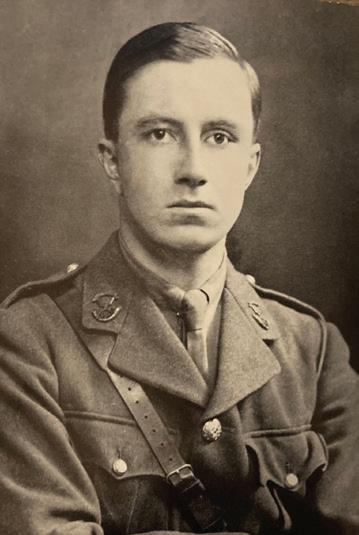
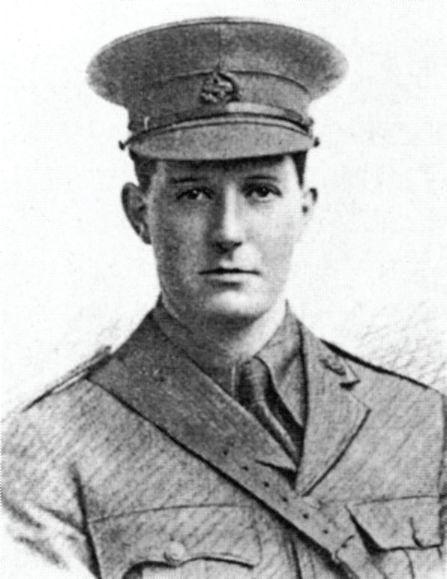
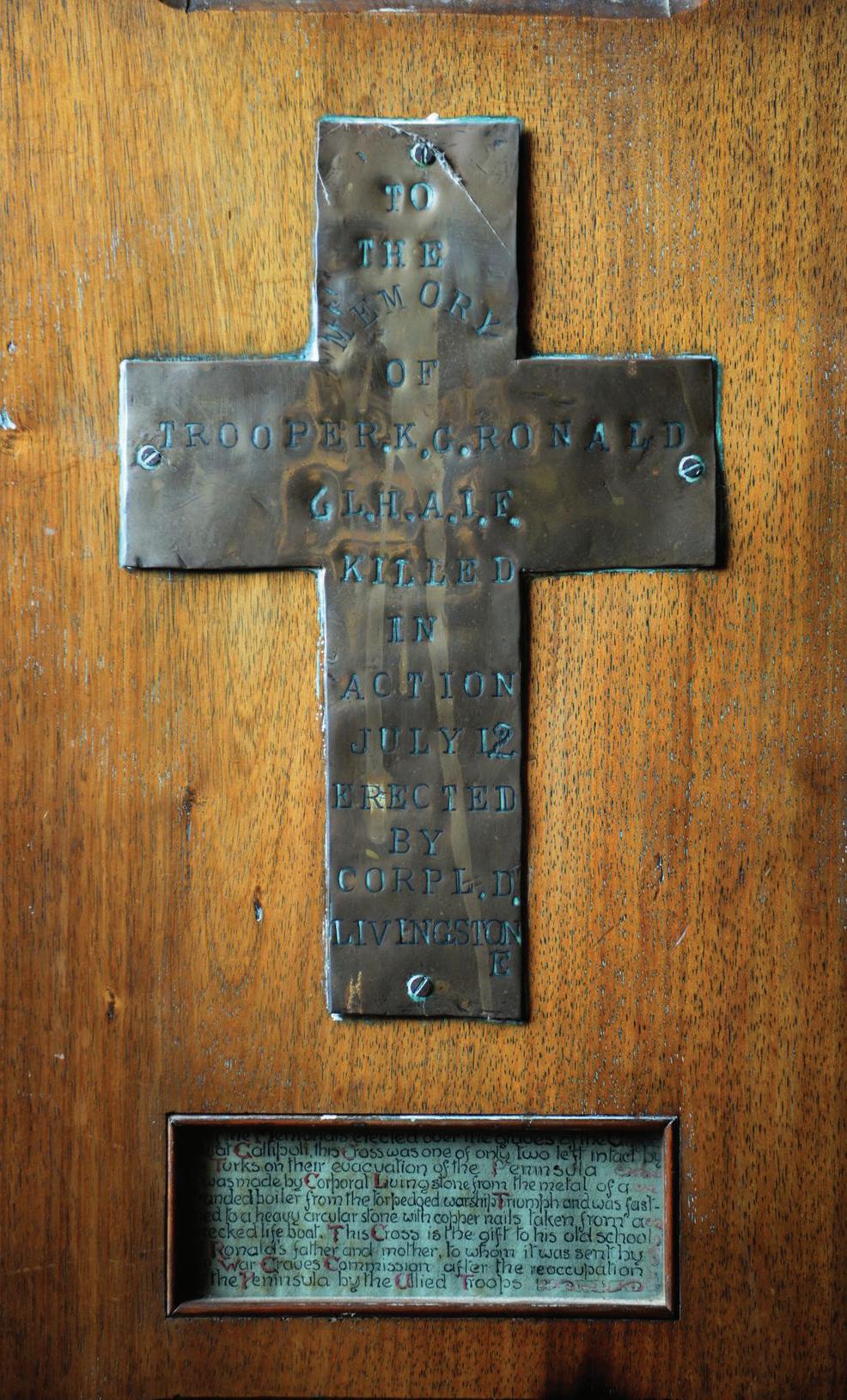
24 August while attending to a wounded gunner. George died the following day. ‘Thy will be done’ are the words on his headstone. John Webster had by now transferred to the Royal Flying Corps and was serving in Palestine. He was killed on 21 September when his plane was shot down. Cliff Hunt was wounded twice in France, and invalided home to Australia in January 1919. He died in 1975, aged 80, having been badly injured in a car crash a few years earlier.
Charles Hawker defied the doctors and, after spending seven months lying on a waterbed to ease his excruciating pain, learned to walk again wearing iron leg splints. He returned to Cambridge to finish his degree and passed with the highest honours of 1919. Back in Australia, he dedicated himself to promoting rural affairs and industry, becoming the Liberal member for Wakefield in 1929. Over the next decade, he travelled extensively promoting Australian interests overseas and negotiating trade treaties on behalf of the government. He earned wide respect from his parliamentary colleagues for his physical and moral courage, and patrician politics. Tragically, on the eve of another world war, Charles was killed in an air accident in October 1938, depriving Australia of a likely prime minister.
‘Let your soul go down upon its knees, and with bowed head and heart abased, strive hard to grasp the future gain in this sore loss!’ John Oxenham’s words on the Newfoundland memorial on the Western Front are apt in pondering the tragic fate of the 1913 First VIII. More than a century on, what, if any, is the ‘future gain’? Sacrifice has no expiry date. Through the act of remembrance, by names inscribed on cloister walls, their memory is carried forward by unending generations. John Webster, George Douglass and Ken Ronald are commemorated in chapel windows, and the rudimentary cross that once marked Ken’s burial place at Gallipoli is now mounted on the chapel wall – remarkably, one of only two burial markers to survive the evacuation and given by loving parents into the school’s care. Victorious rowers receive the George Douglass Oar for representing the School in the Head of the River, school captains receive the Allan Davenport Prize, and a portrait of Charles Hawker keeps watch over the library that bears his name. Today’s students are the future they never had – and that is the gain.
Sophie Church School Historian
LIGHT BLUE - GEELONG GRAMMAR SCHOOL ↓ SECTION 0 4 — MAILROOM 51
Allan Davenport
1939
Geoffrey Dutton AO (Cu’39) is the subject of a new film, The Many Loves of Geoffrey Dutton, which premiered at South Australia’s History Festival in May. Dutton has variously been described as a renaissance man of letters, one of the most talented writers in Australian history, and a literary catalyst. The author of over 40 publications, including nine collections of poetry, eight novels, several biographies and an autobiography, Out in the Open (UQP, 1994), Dutton also founded some of Australia’s best-known literary journals, was founding editor of Penguin Australia and later co-founded publishing company Sun Books. He wrote hundreds of essays and critical reviews, and played a key role in establishing the Adelaide Festival.
Dutton grew up in a pioneering South Australian family whose forebear, Frederick Dutton, founded the State’s first sheep station at Anlaby, north of Adelaide, in the 1830s. He joined Geelong Grammar School in 1932 at age nine. His mother visited him only once in the nine years he spent at Corio, and the letters he wrote to his family while at school are among the trove of archival material deposited at the State Library of South Australia, including four hours of home movie footage, in addition to 16 metres of files in the National Library of Australia in Canberra. This material was the source for filmmaker Rob George, who made the 75-minute documentary exploring Dutton’s “many loves”, namely “his two wives, a fiancée, a string of mistresses, his children, fast cars, travel, flying, literature and art”. Dutton’s wife of 40 years, Ninette, is a central figure in the film. Their children Francis, Tisi and Sam also feature in the documentary, with Francis, an artist, the main interviewee. Dutton left both Ninette and Adelaide in the early 1980s – a decision which many found difficult to forgive – and married his second wife, Robin Lucas, in 1985 after moving to Sydney. Dutton’s later years brought tragedy and controversy, fuelled by his frank autobiography. This new film, presented by Prospect Productions, provides new insight and previously unseen footage of a giant of Australian literature.
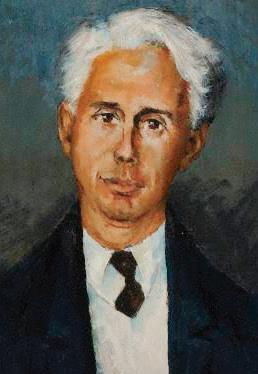
a diplomatic cadet in Canberra in 1950 and moved to London to pursue further studies in Russian. While there he met his Danish-born wife Birgit Christensen, and in 1952 they moved to Moscow for Richard to take up his first diplomatic posting. He and other diplomatic staff were expelled from the Soviet Union two years later in retaliation for the defection to Australia of Soviet diplomat Vladimir Petrov, but Richard returned for a second stint from 1959–61. The challenges of living in Cold War-era Russia were numerous.
After subsequent postings to South Africa, Malaya (Malaysia) and Singapore, Richard returned to Canberra in the mid-1960s to take up a position with the Department of External Affairs as a public information officer. In 1965, he accompanied prime minister Robert Menzies to London for a Commonwealth heads of government meeting and then to Washington to discuss the Vietnam War with president Lyndon B. Johnson. He later joined prime minister Harold Holt on a tour of South-East Asia, and notably drafted Holt’s famous speech that described Australia as geographically part of Asia. From 1967-70 he was the high commissioner to Ghana, and then back in Australia he worked closely with prime ministers William McMahon and Gough Whitlam, navigating the transition from Liberal to Labor governments as well as the end of Australia’s involvement in the Vietnam War.
From 1975–78, Richard was Australia’s ambassador to Indonesia, during which time Indonesia invaded East Timor. ‘Simple moral solutions are rarely available’, he later wrote of this time. ‘It is important to face the realities of the world as it is, rather than as it should be.’ His next appointment was as ambassador to the Philippines, and then in 1982 he became Australia’s ambassador to the United Nations, including a period as chairman of the United Nations Security Council in 1985. In 1988, he was appointed head of the Department of Foreign Affairs, successfully overseeing its merger with the Department of Trade and playing an important role in the formation of the AsiaPacific Economic Cooperation (APEC) forum.
1945
Richard (Dick) Arthur Woolcott AC (Cu’45), who was born on 11 June 1927 and died on 2 February 2023, was described as ‘one of the most significant Australian diplomats of the post war world’ (Allan Gyngell, head of the Australian Institute of International Affairs).
The son of a naval surgeon, Dr Arthur Woolcott and his wife Anne, Richard entered Geelong Grammar School in 1938 as a boarder in Connewarre and later Cuthbertson House. His schooldays almost entirely encompassed the duration of World War Two and were by his own admission ‘harsh’ but ‘endured in an atmosphere of intellectual stimulation, school spirit and purpose about the future … my mind was opened and stimulated in the search for knowledge, my body was toughened and my horizons were widened’ (Corian, 1992). He was president of the Historical and Philosophical Society, a middleweight boxer and a member of the First XVIII. He continued playing football at Trinity College as a member of the University Blacks.
Having studied Russian at school in his final year, he continued his studies at The University of Melbourne, which was then the only Australian university offering Russian. He was selected as
Upon his retirement in 1992, Richard was appointed chairman of the Australia-Indonesia Institute. He also served as John Howard’s special envoy to Malaysia in 1996, and in 1997 became a founding director of the Asia Society AustralAsia Centre. In 2000, he was awarded the Bintang Mahaputra Utama, the highest Indonesian decoration that can be given to non-Indonesians, for his services to Australian-Indonesian co-operation in the Asian region. A supporter of the Australian Republican Movement, Richard gave the inaugural National Republican Lecture in 2003. His memoirs, titled The Hot Seat: reflections on diplomacy from Stalin’s death to the Bali bombings, were published in 2003, and a second book, Undiplomatic Activities, was published in 2007.
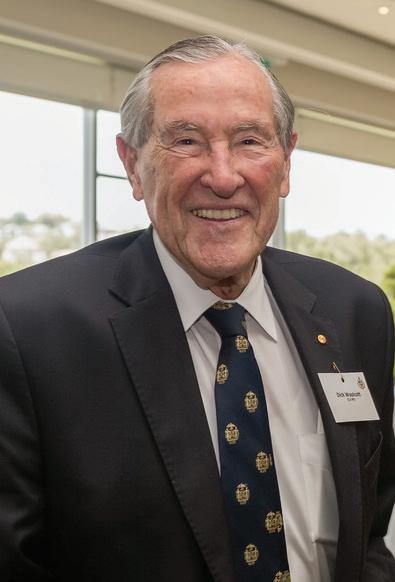
A member of the Biddlecombe Society, Richard was the guest speaker at Speech Day in 1992. He is survived by his sons Peter and Robert, 10 grandchildren and three great-grandchildren. His wife Birgit and their daughter, Anna, predeceased him.
1949Margaret Joanne Jackson OAM (Jamieson, Clyde ’49), who was born 8 October 1931 and died on 4 December 2021, was a shining example of passionate community service. The daughter of Robert (M’21) and Betty Jamieson (Anderson, Clyde ’24), Joanne followed in the family tradition of farming in the Western District and volunteering in the local communities of Darlington

LIGHT BLUE - GEELONG GRAMMAR SCHOOL ↓ SECTION 0 4 — MAILROOM 52
and Mortlake. She served as a committee member and branch president of the Country Women’s Association (CWA) for over 70 years, was secretary of the Darlington Cemetery Trust and a dedicated member of the Mortlake and District Historical Society. She was a driving force behind the establishment of the Abbeyfield aged care facility in Mortlake, where she was also a long-serving volunteer. In 1983, Joanne became the first female and fourth generation Jamieson to serve on the Mortlake Shire Council, following in the footsteps of her father, grandfather and great-grandfather (on the day of her funeral, Moyne Shire Council lowered the flags at its Mortlake-based office to half-mast). She was a strong supporter of the Mortlake Art Show and a long-serving member of the Darlington Art Group. Joanne received the Medal of the Order of Australia (OAM) in 2003 for her service to her local community. Joanne’s brother Robert Jamieson (M’53) attended GGS as did her children, Simon (M’71), Kim (M’73) and Andrew Jackson (M’79). She was remembered for her rare energy and warmth that transformed the lives of those around her.
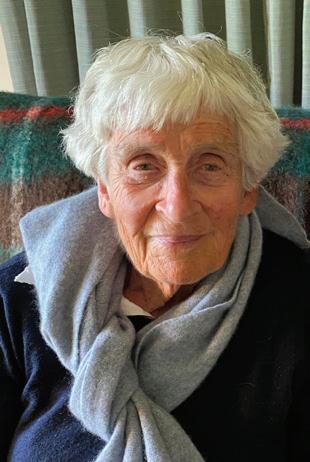
1951
Dr
Alistair Ian Kingswell
Lloyd AO RFD ED FPS
(Ge’51) who was born on 28 October 1933 and died on 3 February 2023, was a distinguished pharmacist and a member of the Army Reserve of the Australian Intelligence Corps.
The son of a respected Geelong pharmacist, Alistair entered Geelong Grammar School in 1947. In 1951, he was captain of Geelong House, a school prefect and a cadetlieutenant in the Cadet Corps. He was awarded colours for football and the William Elliot Military Prize. After leaving school, Alistair completed a year’s national service with the Citizens Military Force (CMF). He remained in the CMF (now the Australian Army Reserve) for the next 30 years, rising to the rank of lieutenant colonel and receiving the Efficiency Decoration and Reserve Force Decoration.
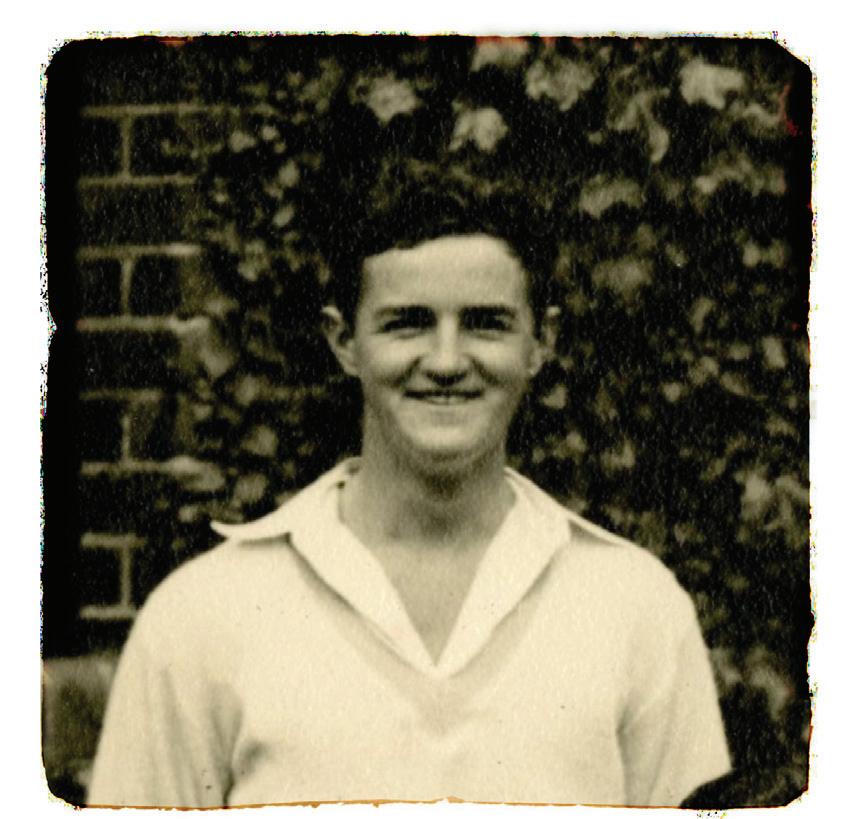
In 1953, Alistair entered the Victorian College of Pharmacy where he was awarded a Scott McGibbony Scholarship and a Gold Medal. He graduated in 1956, and in 1957 won a highly competitive Kodak Travelling Scholarship to enable him to study the role of pharmacy in civil defence in the US, Canada and Britain. In 1967, he was elected president of the Pharmaceutical Society of Victoria, and in 1972 he became president of the Pharmaceutical Association of Australia and New Zealand. His contributions to the profession were recognised in 1978 with the award of the highest honour of the Pharmaceutical Society of Victoria, Fellow Honoris Causa. From 1982 to 1998, Alistair was executive officer of the Victorian College of Pharmacy, in which he played a key role in modernising pharmacy education in Victoria, including transitioning the Victorian College of Pharmacy into a faculty of Monash University.
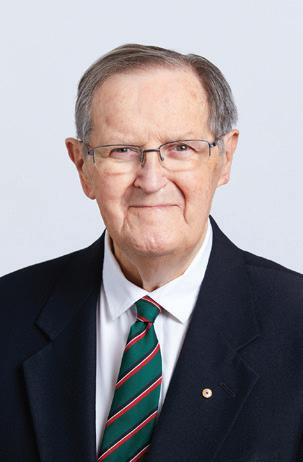
In 1996, Alistair was the first person to be awarded Pharmacist of the Year by the Pharmacy Board of Victoria. He was made an Officer of the Order of Australia in 2001, and in 2008 received a Monash Distinguished Alumni award. He became the inaugural chair of the Victorian College of Pharmacy Foundation in 2001 and served in that role until 2013, during which time more than $10 million was raised to support the faculty and to provide scholarships. His contribution was acknowledged in 2013 with the establishment of a major endowment, the Alistair Lloyd Scholarship for Excellence and Leadership. He was awarded an Honorary Doctorate in 2022.
Characterised by an inspiring intellect and sense of humour, and known for his gentlemanly manner and professionalism, Alistair will be remembered as a giant in the field of pharmacy. He is survived by his wife Shirley, their five children, nine grandchildren and 10 great-grandchildren.
1952 Anne Kantor AO (Murdoch, Clyde ’52), who was born on 20 September 1935 and died on 14 September 2022, was a social worker, psychoanalytic psychotherapist and lifelong philanthropist, whose life was ‘a study of distinguished service to the community’ (Australia Institute).
The third of four children born to Sir Keith Murdoch and Dame Elisabeth Murdoch AC DBE (Greene, Clyde ’26), Anne enjoyed an idyllic childhood at the family’s Cruden Farm near Langwarrin. She entered Clyde School at Woodend in 1947 where she played in the Hockey XI, was a member of the Debating Club, Camera, Cluthan and Clyde Social Service committees, and a prefect in her final year. She graduated with an arts degree in 1956, and the following year married a Czech refugee, law student Milan Kantor, who had migrated to Australia in 1949. The couple had six children together.
With deeply held concerns about social justice and wealth inequality, for the duration of her life Anne committed herself to social service, advocacy, environmental activism and philanthropic activities. She worked closely with families of prisoners in Pentridge prison, with Creating a Safe Supportive Environment (CASSE) Australia on Indigenous issues, actively supported and funded the Australian Conservation Foundation (ACF), and was instrumental in the creation of the International Campaign to Abolish Nuclear Weapons (ICAN), which won the Nobel Peace Prize in 2017. She was a key supporter of the Australia Institute, a public policy think-tank, which offers two fellowships in her name. A lover of classical music, she and Milan, who trained as a concert pianist, were also committed and generous supporters of Musica Viva, Short Black Opera and the Melbourne Recital Centre, which presents the Anne Kantor Encouragement Award in her honour.
In 2016, Anne was made an Officer of the Order of Australia ‘for distinguished service to the community through philanthropic support for a range of environmental, social welfare, arts and educational organisations, and to psychotherapy’.
Anne is survived by four of her children, Julie, Eve, Kate and Michael, and 11 grandchildren. Her husband, Milan, and two sons, Martin and Tom, predeceased her.
↓ SECTION 0 4 — MAILROOM 53
1952Susan Woods (Horne, Clyde ’52), who was born on 20 August 1934 and died on 4 June 2021, was a co-founder of the Nursing Mothers’ Association of Australia (now known as the Australian Breastfeeding Association). Susie was sports captain at Clyde before earning a Blue for athletics while studying at Melbourne University in 1954-55. She taught Physical Education at Clyde and at Presbyterian Ladies’ College. As young mothers during the 1960s, Susie and school friend Mary Paton AM (Beecham, Clyde ’51) formed a group to encourage and assist mothers in Australia with nursing and breastfeeding their babies – censorship rules at the time meant they could not use the word breast, so they settled on Nursing Mothers’ Association, with an extra A added for Australia in 1969 as the association spread across the country. Susie researched lactation to ensure that information provided about breastfeeding was backed by scientific evidence. She read health professional journals, books, media resources and established the NMAA’s Research Department and Library. In 1967, she formed a committee to reorganise the collection and collate the information as a valuable resource for NMAA group leaders and volunteers, as well as medical and allied health professionals. The NMAA was renamed the Australian Breastfeeding Association in 2001 and has since enrolled over 300,000 members and counselled several million breastfeeding mothers with a team of volunteer nurses, educators and medical advisors (including Susie’s husband, Dr John Woods). Susie was a member of the steering committee which established Braemar College on the site of Clyde School at Mount Macedon. Her eldest daughter Deborah Woods (Clyde ’75) attended Clyde in its last year, before attending Braemar College with her younger sisters, Sal and Anna.
Policy, Building and House, and became the club’s first female vice president in 2015. As a memorial, Sheila’s locker now bears a plaque inscribed with her name and positions within the club. The redevelopment of Royal Sydney (to begin in early 2024) and the mentorship of its young members will serve as her legacy. She is remembered as a people person with a great sense of fun, who listened and gave her undivided attention to those around her. Sheila is survived by her husband Roger, daughters Chloe and Skye, and five grandchildren.
STAFF
Richard (Dick) Weigall OAM (staff 1955–56 and 1960–93), who was born on 27 February 1937 and died on 5 May 2023, was a dedicated teacher, especially of adults and children with learning disabilities.
The third of four children born to Melbourne GP, Dr Gerald Weigall, and his wife Betty, a talented pianist, Dick grew up in St Kilda in a sprawling home that also housed Gerald’s surgery. He entered Melbourne Grammar in 1944 and completed school in 1954. After six months national service, he worked in various jobs before studying teaching at Mercer House. He took up his first teaching role, as a student teacher, at Glamorgan in 1955. His father had been Glamorgan’s medical officer since the school was acquired by GGS in 1947, and remained in that role until his death in 1962.
1963
Sheila Frances Little (Vincent, Clyde ’63), who was born on 10 May 1946 and died on 19 February 2023, was Head of Junior School at Presbyterian Ladies’ College, Sydney (PLC Sydney) and a long-serving volunteer at the Royal Sydney Golf Club (RSGC). Sheila was the youngest child of Leslie Vincent (M’27) and his wife Joan. Along with her brother Michael Vincent (M’57) and sister Lesley Griffin (Vincent, Clyde ’60), Sheila spent her early years on the family grazing property, Wombeena, on the South Australian-Victorian border. She received her early schooling by correspondence before joining Lesley at Clyde in 1954, aged seven. She was captain of hockey and golf, was a school prefect in 1962 and school captain in 1963, receiving the Oakley Rhodes Award in both years. She completed a teaching diploma at Mercer House (Associated Teachers’ Training Institution) in Malvern and finished her teaching career as Head of Junior School at PLC Sydney in Croydon.
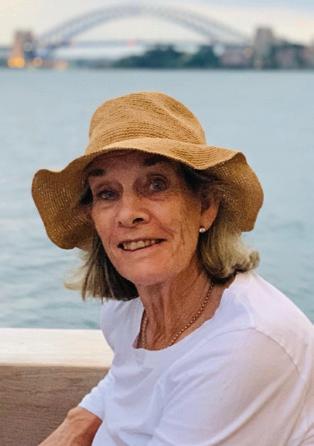
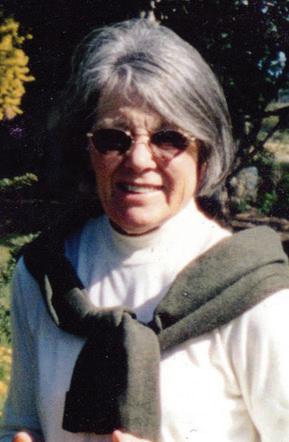
Sheila married Roger Little in 1968 and they had three daughters, Chloe, Kate and Skye. Roger’s work took the family to Melbourne, Adelaide, Sydney and the UK. Between teaching, Sheila helped launch Birds Country Mill Bread Mix, studied French and counselling, and pursued her passion for tennis and golf. She was lady captain at Royal Sydney Golf Club (RSGC) from 2003-07, served on or chaired several sub-committees, including Women’s Golf, Women’s Membership, Membership
Dick resigned from Glamorgan at the end of 1956, having completed his teacher training, and dabbled with farming and mining before returning to Glamorgan to teach in 1960. In May of that year, he married Glamorgan’s matron, Jan Faithorn. They moved with their three young boys to Timbertop in 1968, where Dick was able to indulge his love of the great outdoors, and especially trout fishing. In 1972, Dick became the housemaster at Bostock House, in which role he devoted enormous energy to caring for the boarders, coaching cricket and football, and writing plays about Australia’s early history and exploration. He remained at the Highton Campus until his retirement in 1993.
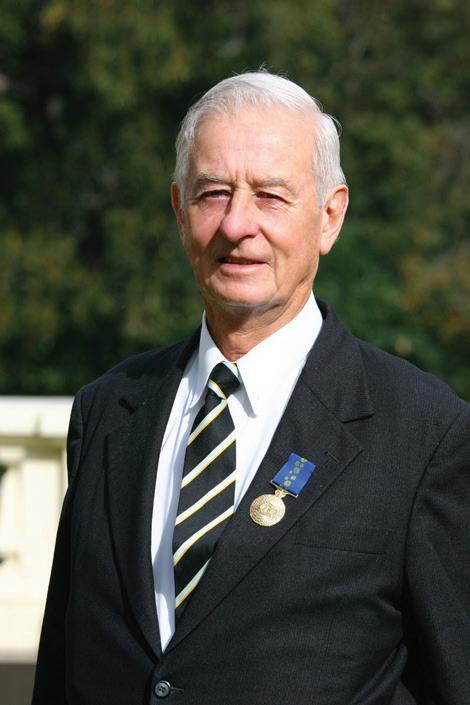
In parallel with his teaching career at GGS, Dick gave much of his time to assisting adults and children with learning difficulties. In 1968, he began volunteering for the charity People Experiencing Learning Difficulties, and was a regular contributor to and assistant editor of The Australian Journal of Dyslexia and other Learning Disabilities. His more than 40-year commitment to this cause was recognised in 2010 with the award of a Medal of the Order of Australia ‘for service to children and adults with disabilities, particularly through the development of special education programmes, techniques and materials’.
Remembered for his kindness, sense of curiosity and especially dedication to his family, Dick is survived by his wife of 63 years, Jan (staff 1960–61 and 1972–81), sons Philip (Fr’79), Derek (Fr’81) and Mark (Fr/L’85), and six grandchildren.
LIGHT BLUE - GEELONG GRAMMAR SCHOOL ↓ SECTION 0 4 — MAILROOM 54
1973 50 Year Timbertop Reunion

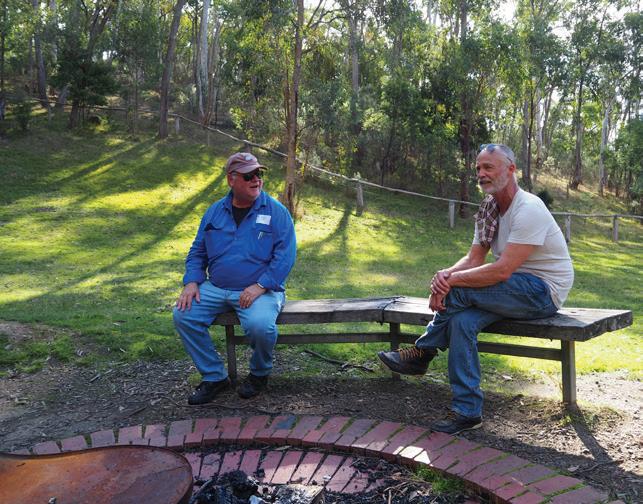
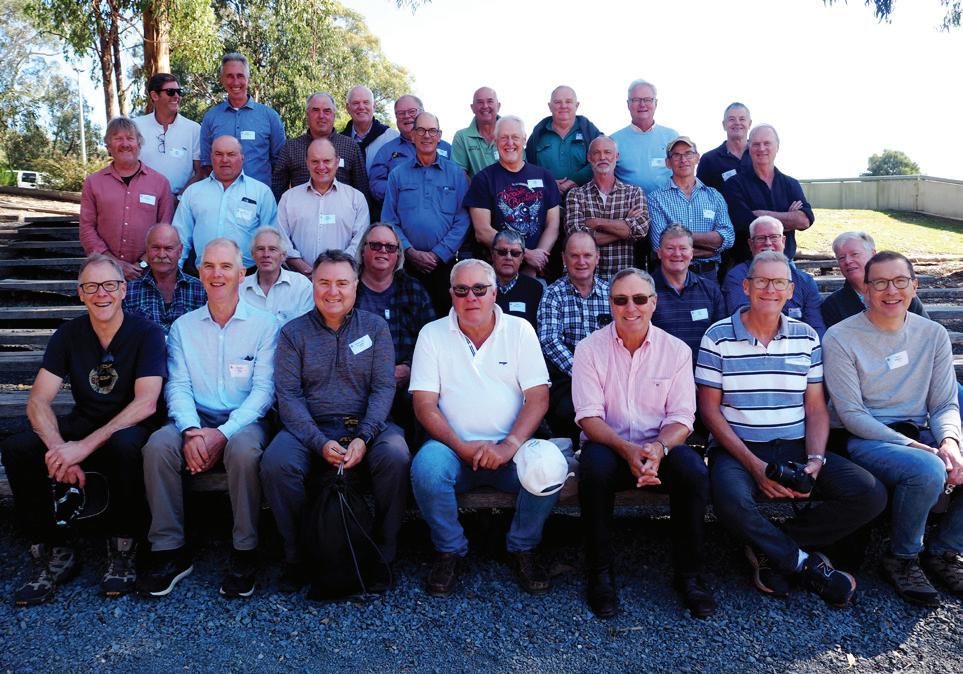

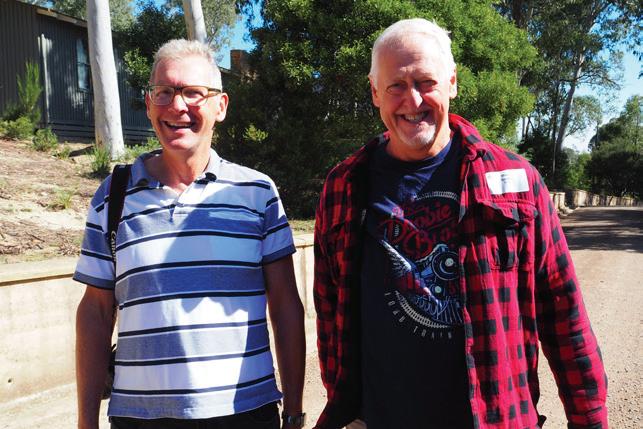

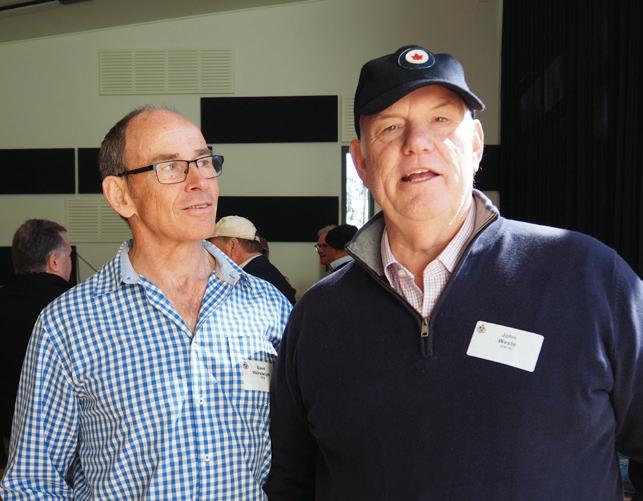
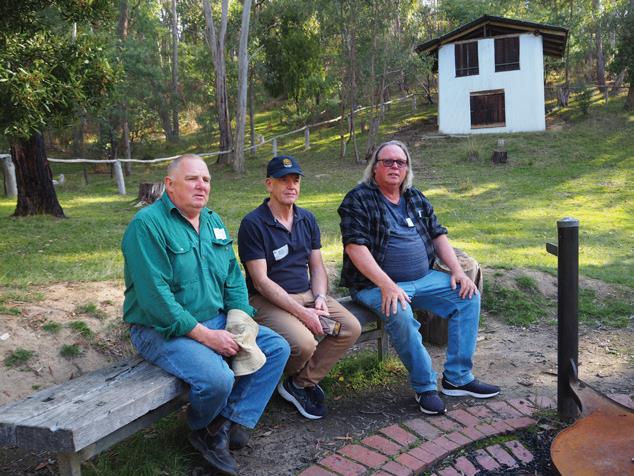
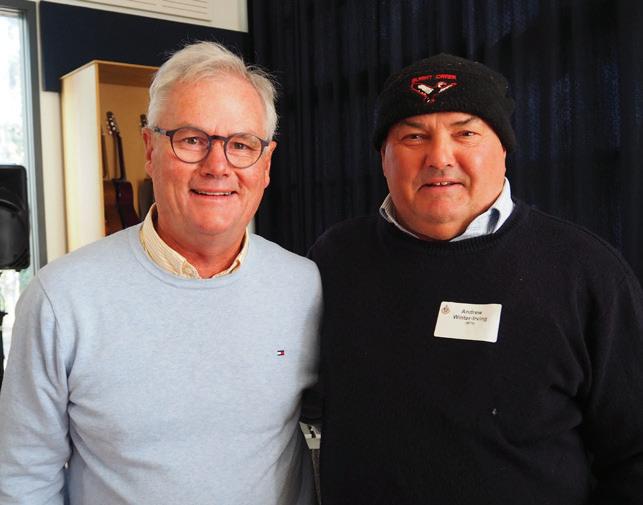

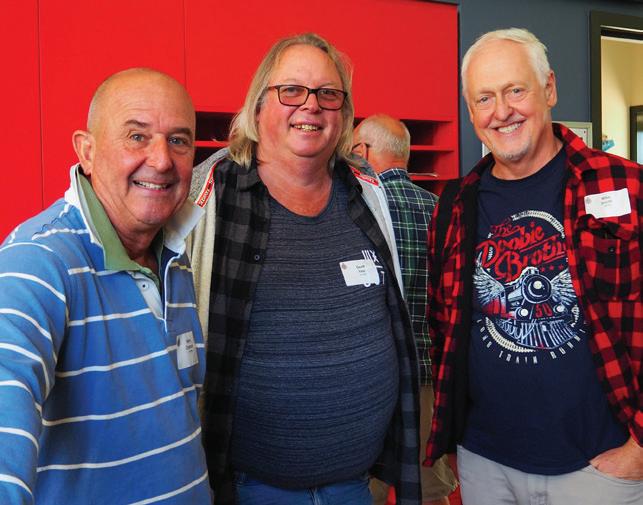

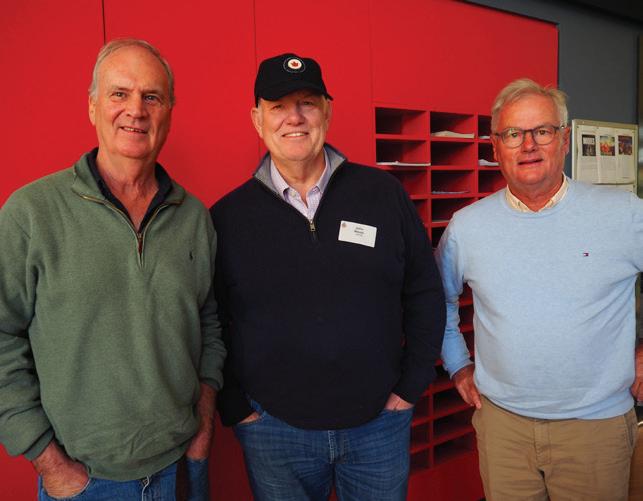
LIGHT BLUE - GEELONG GRAMMAR SCHOOL ↓ SECTION 0 4 — MAILROOM 55
2 1 5 8 3 6 9 4 7
1. 1973 Timbertop Year Group
2. Pat Levy (P’75) and Matthew Dalziel (FB’75)
3. Nick Noall (FB’75) and Richard Lie (FB’75)
4. Pat Levy (P’75), John Weste (FB’75) and David Morrell (P’75)
5. David Morrell (P’75) and Andrew Winter-Irving (M’75)
6. Alastair Kemp (FB’75), Mark Thompson (M’75) and Fredrick Hughan (FB’75)
7. David Wainewright (A’75) and John Weste (FB’75)
8. Matthew Dalziel (FB’75), Michael Ramsay (M’75) and Geoff Vale (Cu’75)
9. Harry Chisholm (Cu’75), Geoff Vale (Cu’75) and Mike Smith (A’75)
10. Simon Haigh (Cu’75) and Richard Lie (FB’75)
11. David Williams (FB’75) and Nick Ames (FB’75)
12. William Buckingham (Cu’75) and Mike Smith (A’75)
1982
Marina Batliwalla (Je’82) has tapped into “a huge thirst for knowledge” about financial literacy for girls and young women through her popular podcast, Banking on Girls. Launched in September 2022, Marina’s podcast has a five-star rating on Apple Podcasts and a growing international audience. Marina explained that many women find the thought of money stressful, but also know that it is the key to freedom. Her podcast aims to address “an unmet need for basic information for parents on how to teach kids about money in the context of today’s world”. “It is never too early to learn about money,” she said. “You don’t have to be a financial expert or a mathematician or a Wall Street whiz kid.” Whilst the purpose of the podcast is to teach girls practical financial skills, Marina’s guests have ranged from authors, aeronautical engineers and high-performance coaches to historians, academics and successful businesswomen, including the CFO of HP (Hewlett Packard), Marie Myers, and the CEO of Hello Sunshine, Sarah Harden (VickersWillis, A’89). Marina has herself been a successful financial professional for more than 20 years. She is Principal and Senior Investment Consultant at Mercer in Los Angeles having previously managed the Financial Analysis department at GIO in Sydney. The mother of three has also been a mentor at the Cherie Blair Foundation for Women and served as a Director of the American Australian Association, including five years as Chair of the California Committee.


Mark Ritchie (P’82) is at the forefront of the Australian red meat industry’s ambition to be carbon neutral by 2030. Mark and his wife Fenella have been managing their 2,600-hectare family property, Delatite Station near Mansfield, since 1990, running Merino sheep and Angus cows. Mark holds a Bachelor of Applied Science in Computing and brings a focus on improving productivity through the adoption of new technology and reducing emissions through better herd performance and tree planting. Having supplied beef to Coles for a decade, Delatite became an early supplier for the supermarket chain’s carbon neutral beef range when it was launched in Victoria in 2022. Speaking to ABC’s Landline program in February, Mark explained that 75 per cent of Delatite’s carbon emissions came from methane, and “until we crack the nut of reducing (those) emissions, it’s going to be reasonably hard work” for red meat to be carbon neutral. Whilst CSIRO scientists collaborating with Meat & Livestock Australia and James Cook University are developing seaweed feed ingredients for cattle, Coles have supplemented Delatite’s efforts to reduce carbon emissions by purchasing carbon credits from a regeneration project in south-west Queensland. Consequently, they are able to market their product range as carbon neutral as Mark and other beef cattle farmers work to “crack the nut” of methane emissions.
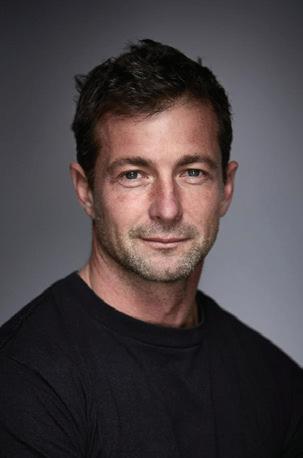

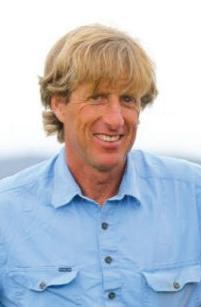
1982
1989
Jeremy Cox (Cu’89) has stepped down after six years as Registrar General of New South Wales, having been awarded a Public Sector Medal (PSM) in the 2022 Queen’s Birthday Honours for his outstanding public service. Jeremy was also a finalist at the NSW Premier’s Awards, recognised for his work in reforming the State’s land titles system; establishing a new regulatory body to oversee the land titles system, implementing a world-first legislative framework, and partnering with industry to transition conveyancing into the digital age. Jeremy’s career has spanned managing economic programs promoting biodiversity conservation in Papua New Guinea for the Department of Foreign Affairs and Trade (DFAT), reviewing the Gateway Review project assurance process for the Victorian Government, managing a State budget and fiscal strategy as Director of Tasmania’s Department of Treasury and Finance, and co-authoring the Australian Infrastructure Plan for the Department of the Prime Minister and Cabinet, where he worked with First Nations communities to further a more inclusive and representative system of land management. Jeremy has completed a Master of Commerce (specialisation in Economics) at Melbourne University and is a specialist in land property rights and environmental economics and at the highest levels of government.
1994
John Teague (Cu’94) will premiere his documentary, Belly of the Beast: A Torquay Story, at Cinema Nova in Carlton in July as part of the Melbourne Documentary Film Festival (MDFF). The feature-length documentary tells the story of how the small coastal town of Torquay spawned a global surf industry, driven by the growth of surf companies Rip Curl and Quiksilver. John spent six years interviewing local surfers, using first-hand accounts to trace the history of Torquay and the evolution of surf culture; from the impact of Californian surfers demonstrating wave-riding on Malibu-style surfboards at an international surf lifesaving event that coincided with the Melbourne Olympics in 1956, to the beginnings of the local surfboard industry, the progression of the world’s longest running surfing competition at Bells Beach, and the global surf boom of the 1980s, which turned a cottage industry into one of Australia’s biggest commercial exports. From appearances on Blue Heelers two decades ago, John acted in and produced films in the United States, before returning to Australia a few years ago. “I needed a new project when I got back,” John told the Surf Coast Times. “There are so many differing views to what Torquay is and has become; this film is just a timestamp of some of the chain of events that have shaped it to what it is today.” John used his local knowledge to gain access to some of the seminal figures in Torquay’s story, including Rip Curl co-founder Brian Singer and 10-time winner of the Bells Beach competition, Gail Couper. “The generations before us have so many amazing stories and knowledge, and this film helps to bring some of that to life. Watching a film like this is like a modern campfire story.”
LIGHT BLUE - GEELONG GRAMMAR SCHOOL ↓ SECTION 0 4 — MAILROOM 56
1995 Zoe Young (Ga’95) was a finalist in this year’s Archibald Prize Exhibition for her portrait of South Sydney rugby league player Latrell Mitchell. Zoe’s entry ‘Latrell and Winmarra’ came as a result of asking her 10-year-old son Wilbur to choose the subject. He chose Mitchell, a proud Biripi and Wiradjuri man, father, farmer and rugby league player. A two-time Archibald Prize and Portia Geach finalist, Zoe found herself sketching at the home of the Rabbitohs, Redfern Oval, which resulted in a diptych exploring the tension between our public and private selves; in this instance Mitchell’s public life as a sporting superstar and his personal world, connecting to his family, ancestors and country (Mitchell’s family farm is named after his ancestors, known as the Winmarra, or mountain people). “I never expected Wilbur’s wish would take me on such a profound journey, which I hope is reflected in this painting,” Zoe said. A graduate of the National Art School, Zoe was an Archibald finalist in 2014 for her portrait of Olympic snowboarder, Torah Bright, and again in 2016 for her portrait of Indigenous Australian model, Sam Harris. She received the 2013 John Briscoe Memorial Prize and was runner-up for the 2014 Yen Young Female Artist of the Year Award.

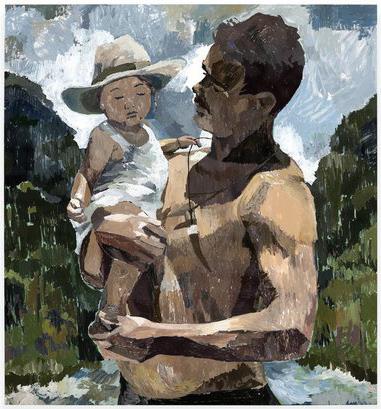
2002

Sophia Hewson (A’02) was a finalist in this year’s Archibald Prize Exhibition for a joint entry portrait of South Sudanese artist and writer, Atong Atem. Sophia partnered with Indigenous lawyer and artist Shevaun Wright, to explore the formation of identity and the ongoing costs of colonialism. “The painting suggests the cognitive dissonance of growing up in a place where you are both invisible and hyper-visible; where the colonial project renders certain bodies good or beautiful, and others ugly or threatening,” the artists explained.
A clinical psychotherapist, Sophia has been an Archibald finalist on three previous occasions. She was also a Ramsay Art Prize finalist in 2019, completed a six-month residency at Residency Unlimited in New York, and was selected by Art Collector magazine as one of Australia’s 50 most collectible artists. Since graduating with First Class Honours from The Victoria College of the Arts in 2007, Sophia has completed numerous solo exhibitions and research projects, including her most recent exhibition, ‘Death Drive’, at Mars Gallery Melbourne from May 25-June 25.
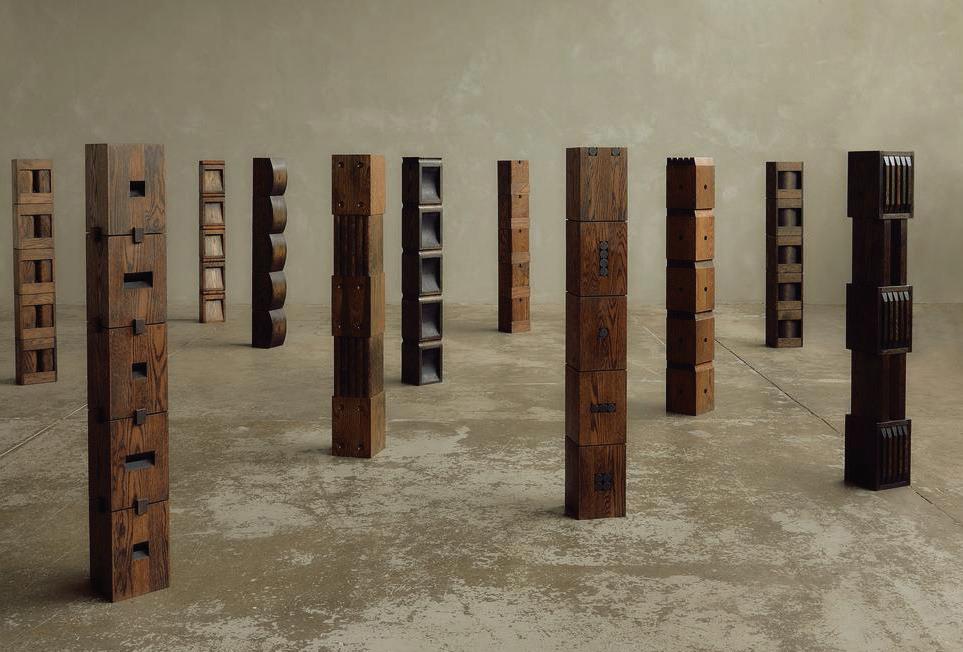



2000
Hugh McCarthy (Cu’00) was included in Vogue Living’s top 50 interior designer, architects, product designers and artists in Australia. Hugh makes and designs furniture and sculptures. He was selected by Vogue Living for “showcasing distinctive style, out-of-the-box thinking and creative commitment in furthering Australian design not just in our nation but on the global stage... A furniture maker and designer who honed his craft both in Melbourne and Japan, Hugh McCarthy’s made-to-order tables, chairs and storage units demonstrate the inherent and timeless value, beauty and joy of handcrafted pieces.” Hugh graduated with a Bachelor of Design (Landscape Architecture) and worked with several local firms, before joining an Italian-run furniture company Arteveneta in Prahran. He launched his own brand, H.McC., in 2013. Every H.McC. piece is handmade in Hugh’s Melbourne studio, utilising traditional wood joints with natural oils and waxes. “I have always had a huge respect for anyone who makes things from scratch for a living, whether they be chefs, artists, carpenters,” Hugh told The Design Files. “I suppose after all this time, I’ve just wanted to be that kind of person.” While his furniture features in some of the nation’s best residential work, Hugh has also turned his artful approach to sculpture with his debut exhibition of irregularly shaped oak units, Sequence, at M Contemporary in 2022.
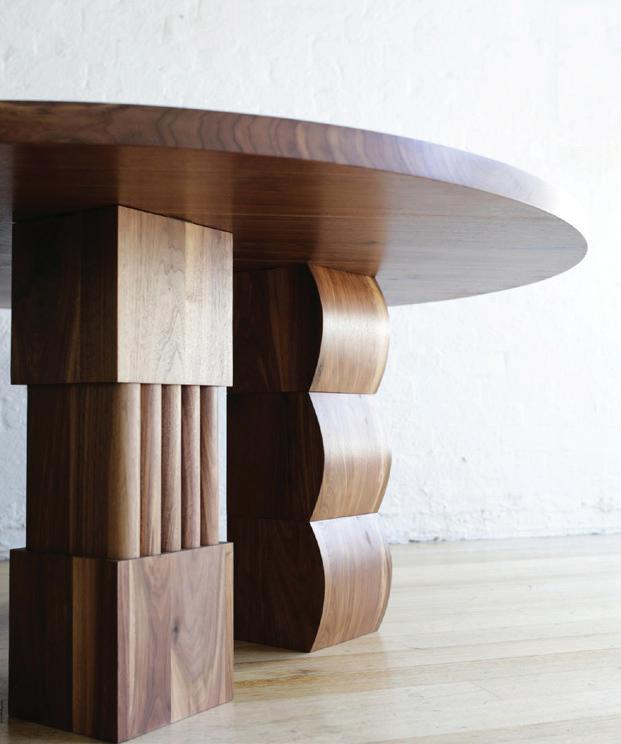

LIGHT BLUE - GEELONG GRAMMAR SCHOOL ↓ SECTION 0 4 — MAILROOM
2000 20 Year Reunion
1. Owen Ou Yang (P’00), Kalaya Bruton (Cl’00), Tatsani Tungka (Ga’00), Hugh Whitehead (M’00), Inneke Nathan (Cl’00) and James Dixon (FB’00)
2. Mark Wheal (FB’00), Michael Wong (Fr’00), Stacy Gillett (Fr’00), Chris Mowat (Timbertop ‘97) and Crundy Staughton (P’00)

3. Class of 2000
4. James Williams (A’00), Samantha Wilson (He’00), Georgie van Beek (Apted, A’00) and Rudolf Schmidt (A’00)
5. Alex Johnson (A’00), Sarah Whinney (Paterson, Cl’00) and Clare Bennetts (Cl’00)

6. Sophia Callaghan (Staughton, Cl’00), Chloe Woodley (Delany, He’01), Alice Kempton (Redwood, Cl’00), Louise Ellis (Cl’00), Victoria Gatacre (Calder, Cl’00), Deb Lyons (Handbury, Fr’00) and Clementine Hay (Cl’00)
7. The 2000 20 Year Reunion was held at the Prahran Hotel






8 Catherine Krause (Parkinson, Fr’00), Emily Scarlett (Manifold, He’00), Pia Smillie (Davies, Fr’00), Rod Matthews (Fr’00) and Catherine Coulter (O’Brien Ga’00)
9. Rudolf Schmidt (A’00), James Williams (A’00), May Jasper (He’00), Samantha Wilson (He’00), Georgie van Beek (Apted, A’00), Loren Gold (A’00), Nicholas Harrison (FB’00) and Paddy Myer (FB’00)

LIGHT BLUE - GEELONG GRAMMAR SCHOOL ↓ SECTION 0 4 — MAILROOM 58
2009
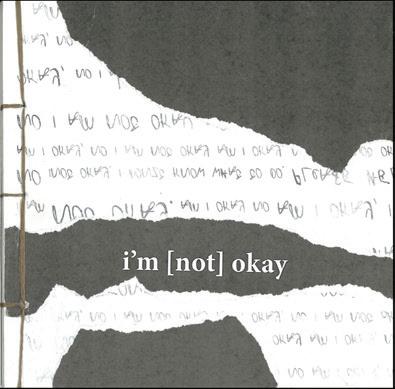
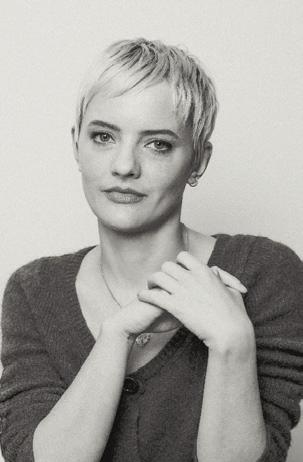
Lucy McKendrick’s (He’09) most recent short film, F*ck Me, Richard, premiered at the prestigious South by Southwest (SXSW) Festival in Austin, Texas, in March, and was subsequently selected to screen at the Seattle International Film Festival (SIFF) in May. Lucy wrote, codirected and starred in the psychological thriller about a long-distance love affair, which was shot in New York and edited in Melbourne. F*ck Me, Richard was the only Australian film on the bill at SXSW and one of only 20 short films that screened at the festival from more than 10,000 submissions. It also marked Lucy’s transition from behind to in front of the camera, with a critically acclaimed performance as the film’s protagonist, Sally. “McKendrick does a fantastic job taking us into Sally’s lonely, painkiller-blurred reality,” Toronto Entertainment blogger Will Wong wrote. “The performance is understated, which leaves much to the imagination, yet at once is incredibly brazen and vulnerable.” New York film critic Sheila O’Malley said, “McKendrick is so gifted: her emotions shiver on the outside of her skin”. Lucy studied Film and Television at Swinburne, graduating in 2012 with the university’s Best Director and Best Film awards for her short film, TOOMBAWORTH, which was also recognised with the Young Australian Filmmaker of the Year award at the Byron Bay International Film Festival. She graduated from the prestigious American Film Institute Directing Conservatory in 2016, and her thesis short film, B’Gawk: A Chick Flick, won the Best International Short Film award at the 2017 Oxford International Film Festival. More recently, Lucy wrote and directed My Shepherd (2022), about a religious young couple seeking an abortion, which was selected as Vimeo’s Short of the Week and praised for its “captivating storytelling and nuanced characters”. “McKendrick has unknowingly created a film that is both ahead of its time, timely and timeless all at once,” Vimeo senior programmer Serafima Serafimova enthused. Based in New York, Lucy is developing her first feature, Fangs, a black comedy about a woman who sends her underwear to serial killers.
2014
Ally Kirkwood (Cl’14) was appointed captain of the Casey Demons VFL Women’s football side for season 2023. Ally was vice-captain in 2022, and her leadership qualities and enthusiasm for the team and the club made her an easy appointment as captain by her teammates and coaching staff. She has played for Casey since 2019 and in 2022 was credited with being the crux of Casey’s success by Casey Media: “A key factor behind Casey’s resurgence to finish third on the VFLW ladder in 2022 has been Kirkwood herself. The Demons vicecaptain has been a reliable member of the red and blue since 2019 and has only grown as a leader of the emerging side. Not many have done more for Casey’s VFLW program in recent times.”
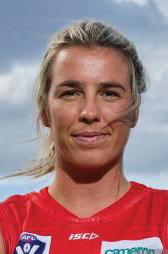
Jam Sheahan (P’15) was selected by the Winnipeg Blue Bombers with the eighth overall pick in the 2023 Canadian Football League Global Draft in May. Jam made the move to the University of California, Berkeley (Cal) in 2020 and spent three years as the punter of the Golden Bears –Cal’s Football (gridiron) team. Jam saved his best season for his final year in 2022, ranking second in the PAC-12 conference and 15th nationally for average punt distance. He nominated for this year’s NFL draft, but only a few punters get their chance through the draft each season – just three were taken this year. While Jam’s name wasn’t called in the NFL draft, his selection to play the sport professionally in the Canadian Football League is an incredible achievement for a boy from Bendigo who only took up American Football (gridiron) a handful of years ago. During his time at GGS, Jam represented the School’s 1st XVIII Football and was a member of the APS-premiership winning 1st XI Cricket team in 2014.

2015
2022 Emily Widjaja (EM’22), pictured above with Media Studies teacher, Jen Nicholls, and Head of Visual Arts, Dr Peter Bajer, was selected in the Top Designs 2023 exhibition at the Melbourne Museum. Emily’s i’m [not] ok mixed media zine was among 69 works selected in the exhibition, which celebrates the innovation of Victoria’s VCE design students, across Media, Product Design and Technology, Systems Engineering, Theatre Studies and Visual Communication Design (VCD). Emily’s zine was featured in the Media/Print section. “i’m [not] okay is a mixed media zine that discusses the suppression of emotions,” Emily explained. “Focusing on young women’s experiences with this topic, the zine includes a collection of five individual reflections. These are presented through texts describing the models’ personal thoughts and emotions. The portraits included use mixed media techniques, such as image transfers and torn paper collage. With the use of tracing paper in my final product, I intended to create a layered narrative for my audience. As they flick through each model’s individual section, the viewer comes closer to unravelling the model’s pure emotional state that might otherwise be disguised.”

Star Rose Miller (He’21), Sophie Ward (Cl’20) and Jane Perrignon (EM’17) represented the University of California Berkeley (Cal) in the Women’s 1st Varsity 8 at the NCAA Championship regatta on the Cooper River in Pennsauken, New Jersey, in May. The crew reached the semi-finals, finishing sixth. The pipeline between GGS and Cal rowing has been strong in recent decades, with Fred Roper (M’17) the latest OGG to graduate from Cal earlier this year. Fred was a member of Cal’s Men’s 2nd Varsity 8 this season, and departs with a double degree in Political Economy and Society & Environment. Fred is set to complete a Masters in Engineering Science (MSc) and Energy Systems at Oxford.
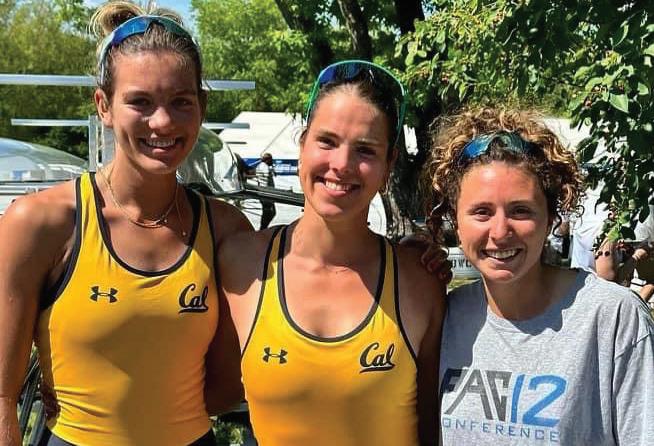
↓ SECTION 0 4 — MAILROOM 59
President
Incredibly, it is 70 years since the first students arrived at Timbertop in 1953. Two regular Timbertop reunions (40th and 50th) and an OGG Timbertop Morning will be held at Timbertop this year. The OGG Timbertop Morning will be held on Saturday 16 September and all Old Geelong Grammarians and their families are welcome to attend this annual event (which had been discontinued during COVID). Those year groups wishing to gather outside of the formal 40 and 50-year reunions are encouraged to organise their own activities in conjunction with the OGG Timbertop Morning so they can access the campus on this day. The “original” Timbertop year groups, who each attended Timbertop for half the year in 1953, will attend a reunion that will be held in Mansfield and at Timbertop on Saturday 7 October. The Head of Timbertop, Ross Hopkins, is arranging for them to attend the campus while students are present so they can enjoy a Chapel Service, lunch in the Dining Hall, and a Q&A session with students. This promises to be a very special occasion.
REUNIONS & EVENTS
Catch-up on the COVID backlog of reunions continues in 2023, with 10 reunions scheduled for the year. There remains a small number of reunions that were cancelled during the pandemic that need to be re-scheduled, which will be part of our 2024 reunion planning. The OGG Association continues to explore additional opportunities to unite our alumni. Many Melbourne based OGGs joined us for our first in-person informal Business Networking event since COVID, held at the Garden State Hotel in Flinders Lane on Wednesday 24 May. It was also wonderful to celebrate the return of our OGG London Dinner, which was held at The Oval (the historic home of Surrey County Cricket Club) on Thursday 29 June, with James Sutherland (P’82) as guest speaker. Similarly, our calendar of interstate and overseas branch gatherings has been revived, with recent events in Sydney, Hong Kong and Japan, and upcoming events in Brisbane and Tasmania, as well as our annual Connect in Hamilton event to coincide with Sheepvention in August and our Riverina & NE Victoria branch gathering (Connect in Albury) to coincide with the Henty Field Days in September. We particularly look forward to the very popular Tower Lunch at Corio on Saturday 4 November.
GGS IMAGE LIBRARY
The long-anticipated launch of the GGS Image Library took place in May. This is an incredible archival depository of images and great resource for the School and OGGs. And we’ve barely scratched the surface. Many more images are in the process of being digitised and will be available through the GGS Image Library in coming months. Images from as far back as 1855 will be available, as well as past editions of the Corian, Light Blue and other GGS, COGA and HOGA publications. OGG reunion and event photographs are also available on the Image Library. Log into the OGG website (ogg.org.au), find the Photos and Archives menu tab to access the GGS Image Library link. If you need help to find photos and publications, there are short instructional videos to watch.
The OGG website is a great resource for our alumni community. The website allows the OGG Association to offer a lot more in the way of connection between OGGs, including mentoring, a business directory, the ability to search for classmates and send them an email if they have an email address recorded on the School’s database.

LIGHT BLUE - GEELONG GRAMMAR SCHOOL ↓ 60
OGG
OGG AGM
The OGG Annual General Meeting was held in the Hawker Library on Tuesday 2 May. Co-Vice President, Bill Ferguson (P’72), awarded long-serving Bostock House staff member, Tracey Brown, an Honorary Life Membership of the OGG Association in recognition of her outstanding service to GGS over 25 years. Congratulations Tracey! We were also delighted that the 2022 Dux of the School, Zach Margis (P’22), joined us to receive his $1,500 OGG Prize to be formally acknowledged by the OGG Association. Congratulations to Zach.
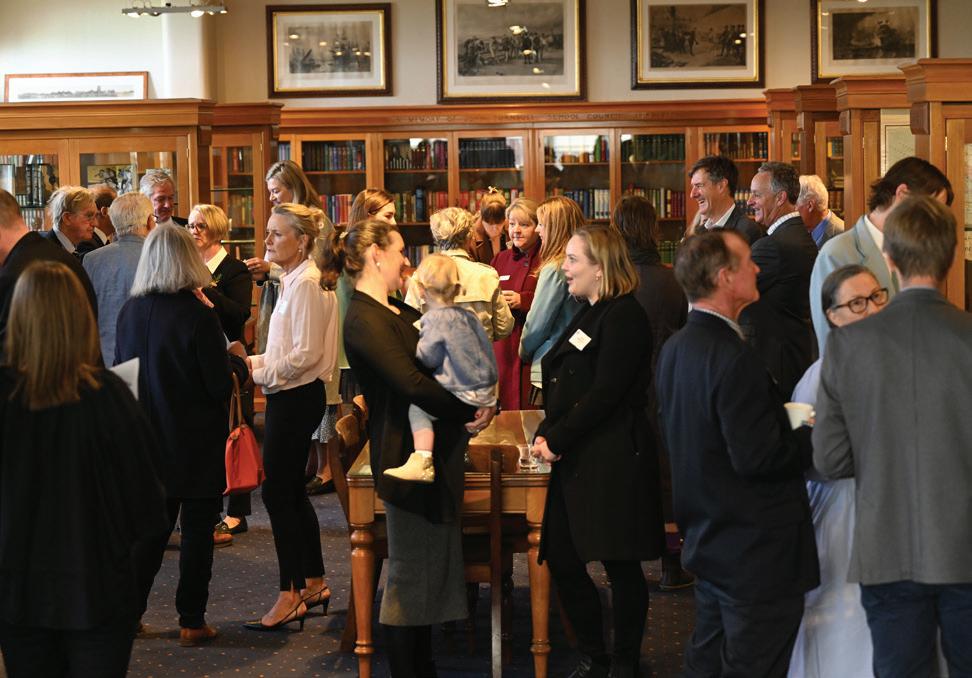

The AGM is also an opportunity to reflect and thank Committee members for their support and contributions during the year. I’d also like to thank those involved in the various OGG Branches and their committees (throughout Australia and overseas) and those who have contributed their time to organise and assist with various OGG reunions, events and initiatives.
FAREWELL KATIE RAFFERTY
Finally, it is with great sadness that I report that Katie Rafferty (Spry, Ga’84) has resigned from her position as Alumni Manager and Honorary Secretary of the OGG Association after 18 years of magnificent service. Katie is much loved within our OGG community and has been the backbone and point of contact for so many OGGs for so long. I will miss Katie, who has been a joy to work with and so supportive since I joined the OGG Committee and particularly during my time as OGG President. However, it’s not all about us… I’m also very excited and happy for Katie, who has shown courage to embrace change and embark on new experiences and new challenges. We all wish her the very best and thank her for all the hard work, professionalism, and dedication she has brought to the role.
Andrew Burgess (FB’81) OGG President
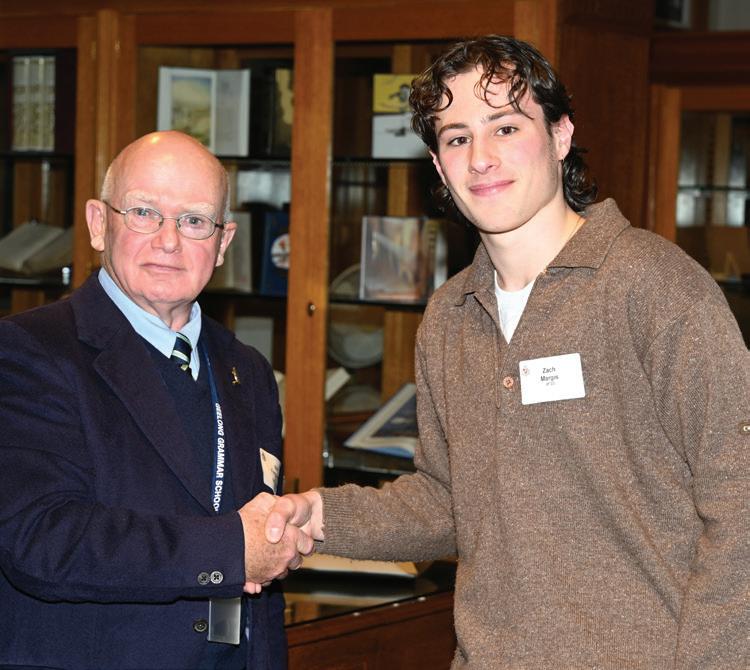
OGG CALENDAR
Connect in Hamilton
Sunday 6 August 2023
Connect in South Australia
Sunday 13 August 2023
2003 20 Year Reunion
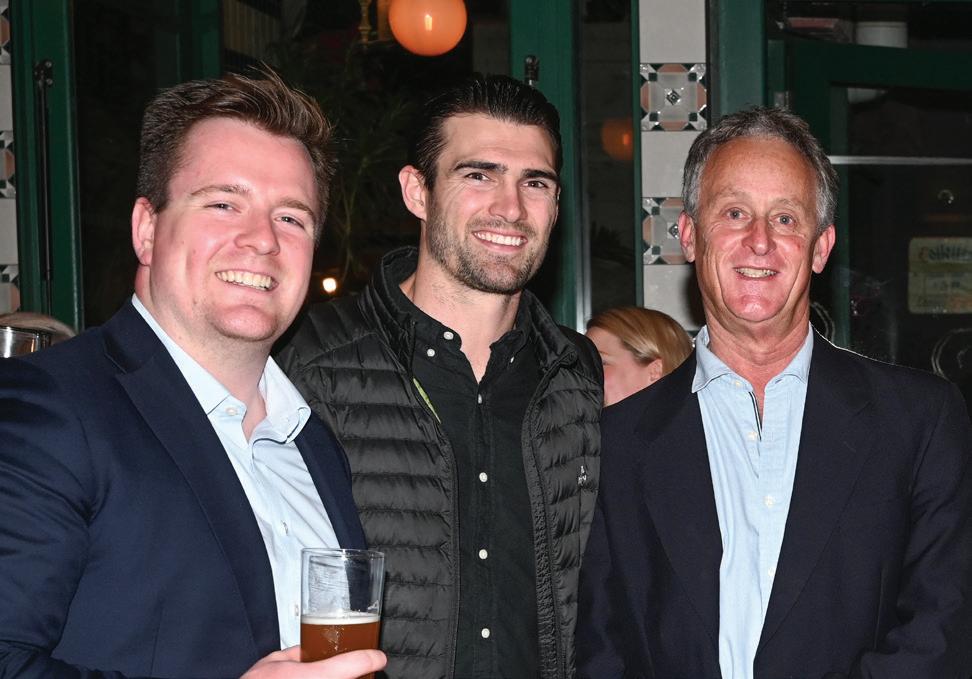
Saturday 2 September 2023
1983 40th Timbertop Reunion
Saturday 16 September 2023
OGG Timbertop Morning
Saturday 16 September 2023
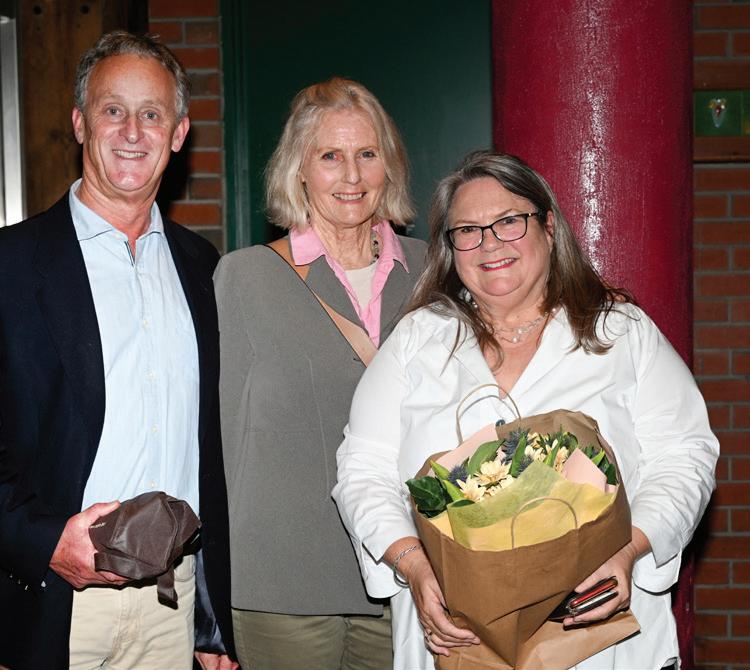
Timbertop Staff Reunion
Sunday 17 September 2023
Connect in Albury
Tuesday 19 September 2023
2013 10 Year Reunion
Saturday 7 October 2023
1953 70th Timbertop Reunion
Saturday 7 October 2023
1980 40 Year Reunion
Saturday 14 October 2023
1993 30 Year Reunion
Saturday 21 October 2023
1983 40 Year Reunion
Saturday 28 October 2023
Tower Lunch
Saturday 4 November 2023
OGG Motoring Event
Sunday 5 November 2023
For more information please visit www.ogg.org.au or email: oggs@ggs.vic.edu.au
LIGHT BLUE - GEELONG GRAMMAR SCHOOL ↓ SECTION 0 4 — MAILROOM 61
1 3 4 5 2
1. Joseph Gibney (P’14), Easton Wood (Cu’07) and OGG President, Andrew Burgess (FB’81), at the informal Business Networking event in Melbourne
2. Anzac Day Morning Tea in the Hawker Library
3. OGG Co-Vice President, Bill Ferguson (P’72), awarded Tracey Brown with an Honorary Life Membership at the OGG AGM
4. Bill Ferguson (P’72) presented Zach Margis (P’22) with the OGG Prize for Dux of the School at the OGG AGM
5. Andrew Burgess (FB’81) and Margie Gillett (Cordner, Clyde ’71) with outgoing Alumni Manager, Katie Rafferty (Spry, Ga’84)
At the Melbourne OGG Gathering:
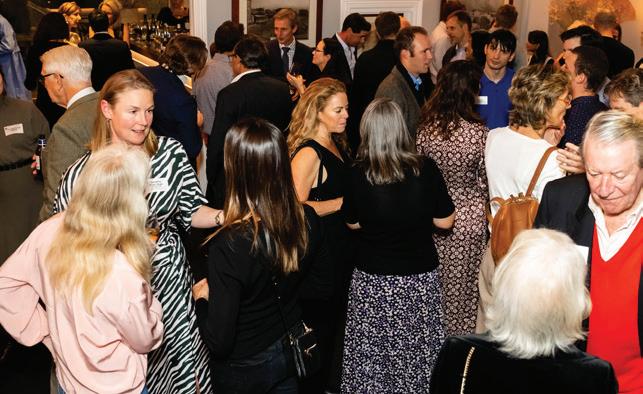


1. Harry Stephens (Glamorgan ‘03), Margie Gillett (Cordner, Clyde ‘71), Cathie Kemp and Jackie Mackinnon (Kelly, Clyde ‘69)
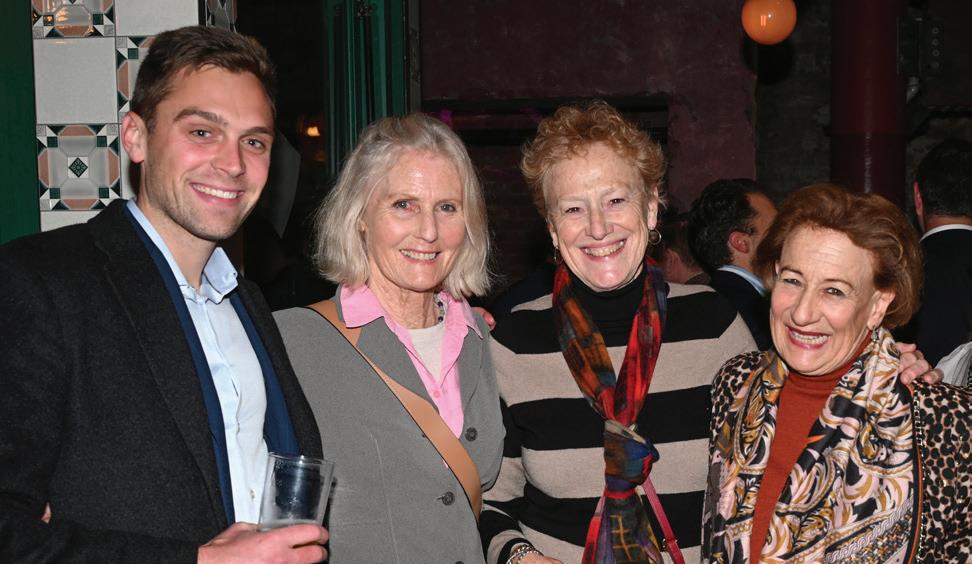
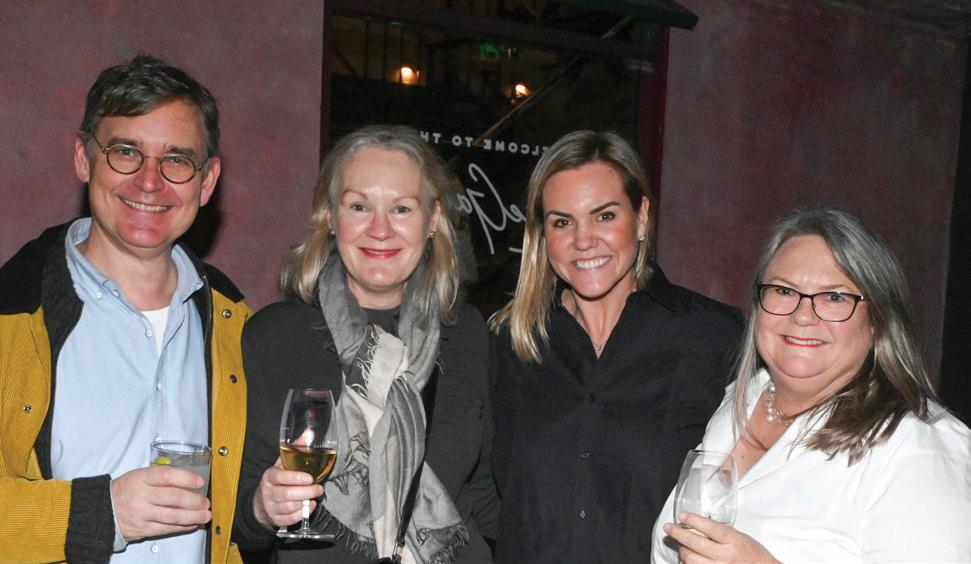
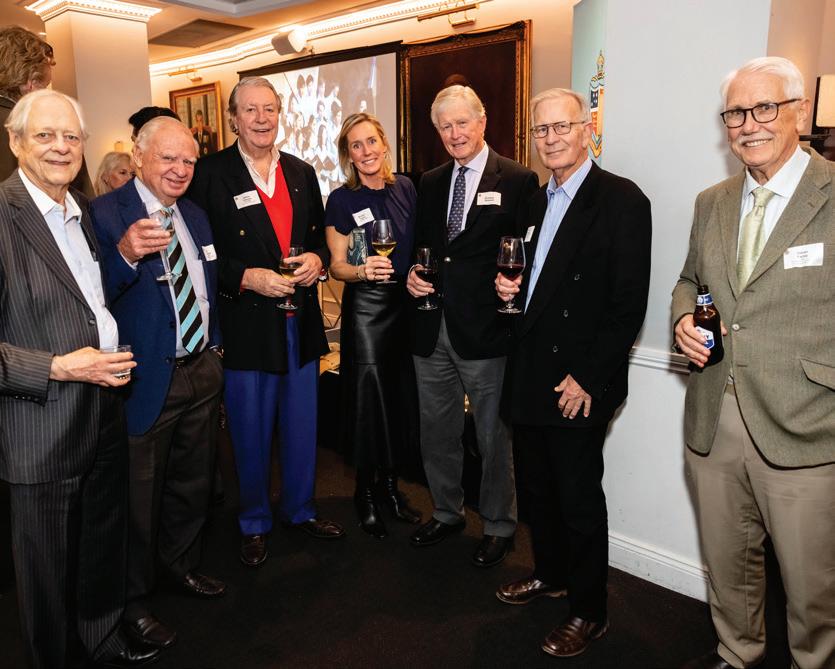
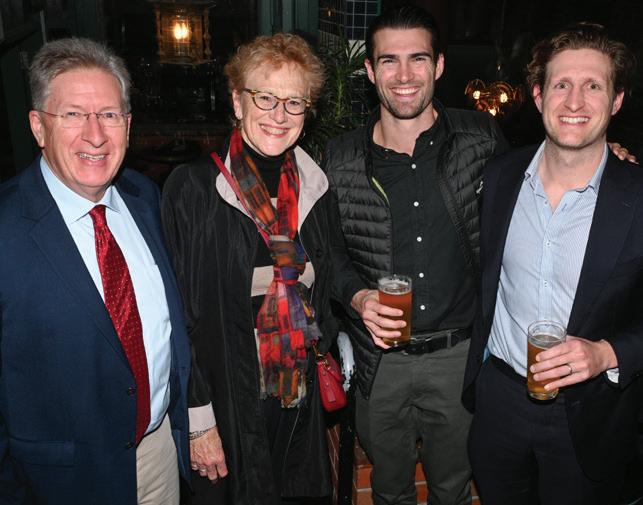
2. Danne Rasmussen (FB’85), Harriet Bainbridge (Seaman, Ga’84), Whitney McLaren (Hammond, He’04) and Katie Rafferty (Spry, Ga’84)
3. Peter Chomley (Ge’63), Shin Takemitsu (FB’05), Jason Kuang (Cu’21) and Jake Jupp (P’21)
4. Simon Kemp (Cu’70), Cathie Kemp, Easton Wood (Cu’07) and Nick O’Hare (Fr’07)

5. James Gibney (P’08), Emily Gibney (Cl’10), Julie-Anne Gibney (Ross, Cl’82), Rob Perry (A’83) and Kate Parsons (Hon. OGG)

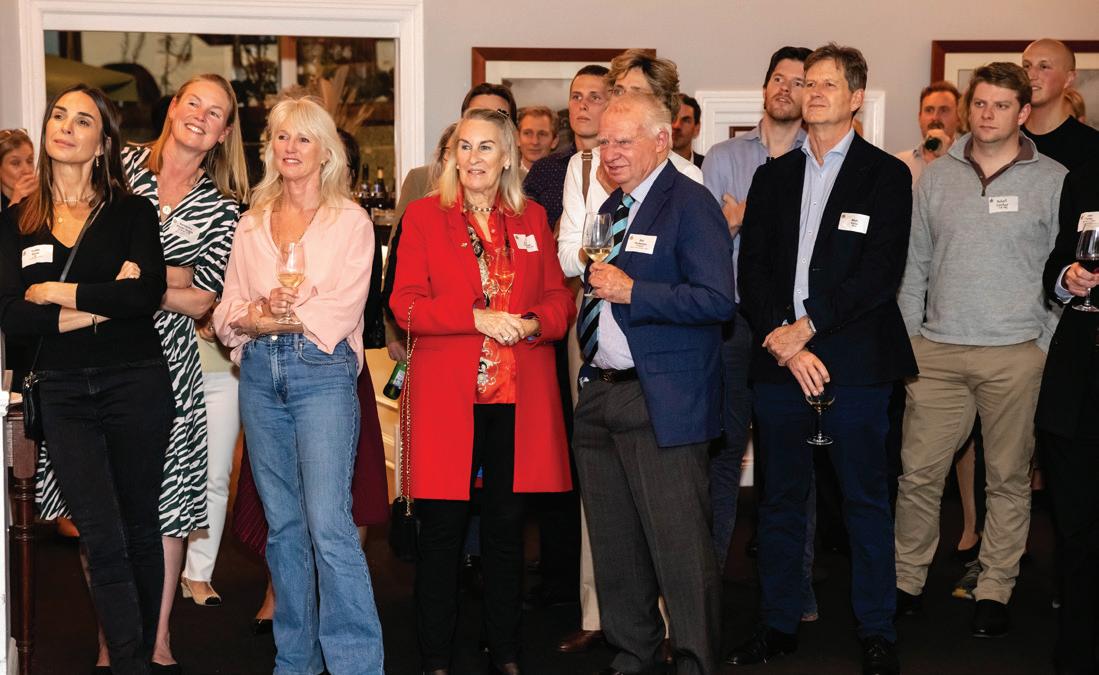
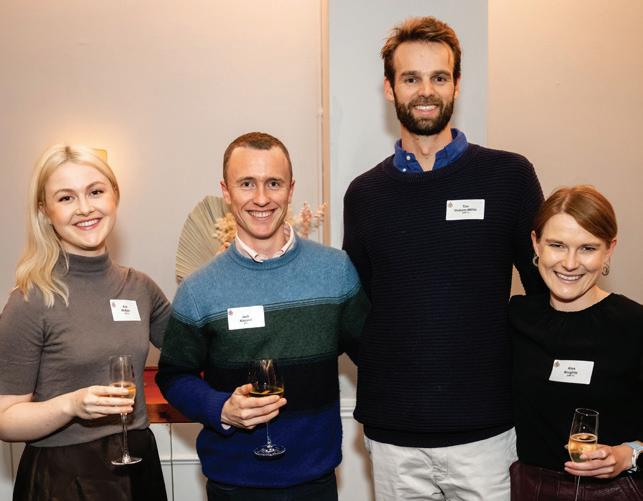
6. Zach Margis (P’22), Campbell Frazer (P’20) and Bill Nixon (P’22)
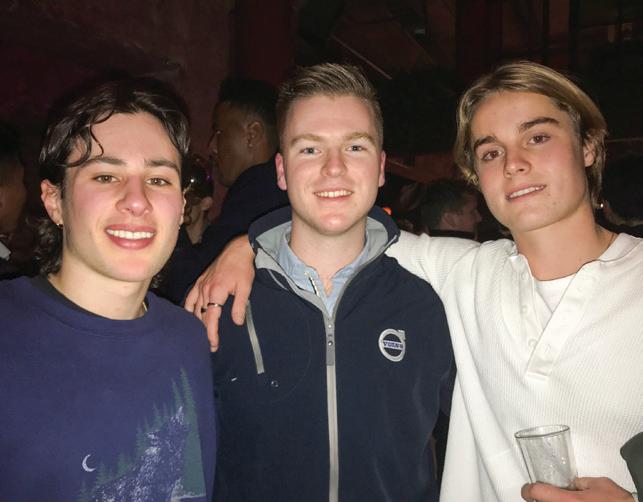
LIGHT BLUE - GEELONG GRAMMAR SCHOOL 62 OGG EVENTS
At the Connect in Sydney function:
7. John Fairfax (M’60) and Rebecca Cody, Principal
8. Kate Hayward (Je’79), Andrew Cochrane and Fiona Ratcliffe (Archer, Je’77)
9. Ane McBain (Ga’13), Jack Kincaid (P’11), Tim Vickers-Willis (FB’11) and Alex Knights (EM’11)
10. Connect in Sydney Function – Guests listening to Rebecca Cody, Principal
1 3 4 5 2 6 7 9 8 11 10
11. John Gregory-Roberts (M’59), Bill Anderson (M’59), Arthur Charles (M’59), Brooke Taylor (Charles, Je’89), Geoffrey Newman, John Fairfax (M’60) and Gavan Farley
At the Connect in Hong Kong function:


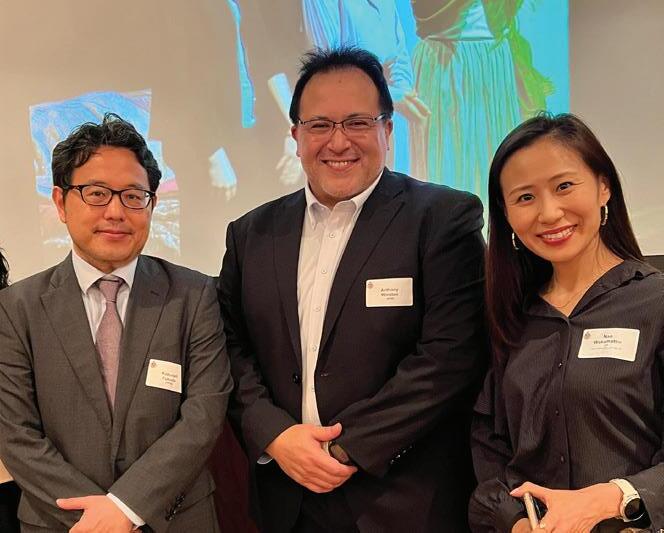
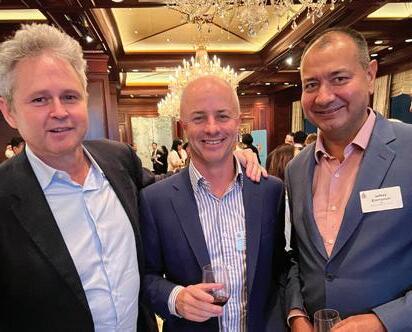


1. Jeffry Ho (M’97), Achilles Lai (Cu’97), Jacky Shi (FB’97), Emi Sekiguchi, Elissa Gale, Roland Wu (P’93), Chris Lui (FB’97) and Jacky Wong (M’99)
2. Emma Bradshaw, Miles Dickinson, Thomas Royds and Katarina Royds
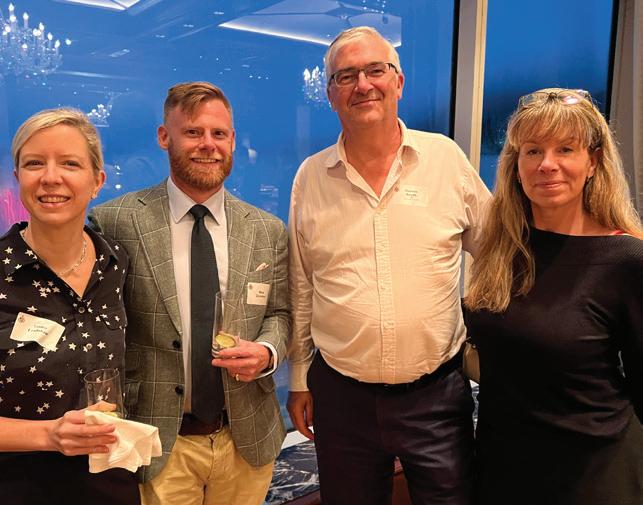
3. Rico King Yin Liu and Pui Ying Patty Ho
4. Julian Scott, Michael Stapleton (P’91) and Jeffrey Emmanuel
5. Teki Roberts, Chavaune Francis, Adrienne Lam and Derek Chow
6. David Leung, Aris Cheung, Roland Wu (P’93), Ito Etsuko and Paul Ng (FB’88)
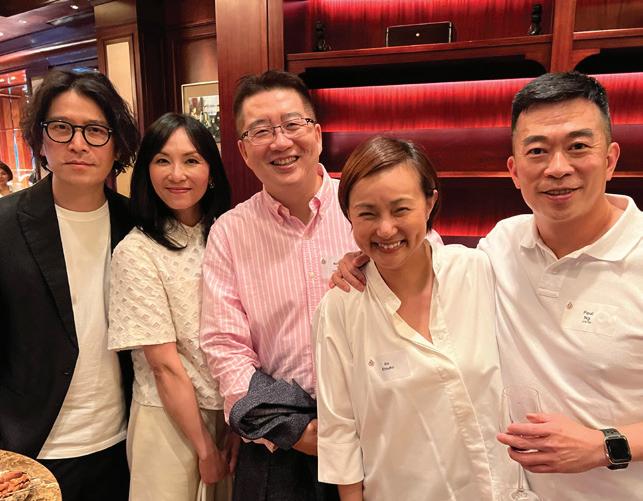
7. Minjoung Ju, John Kwon (Cu’83) and Rebecca Cody, Principal
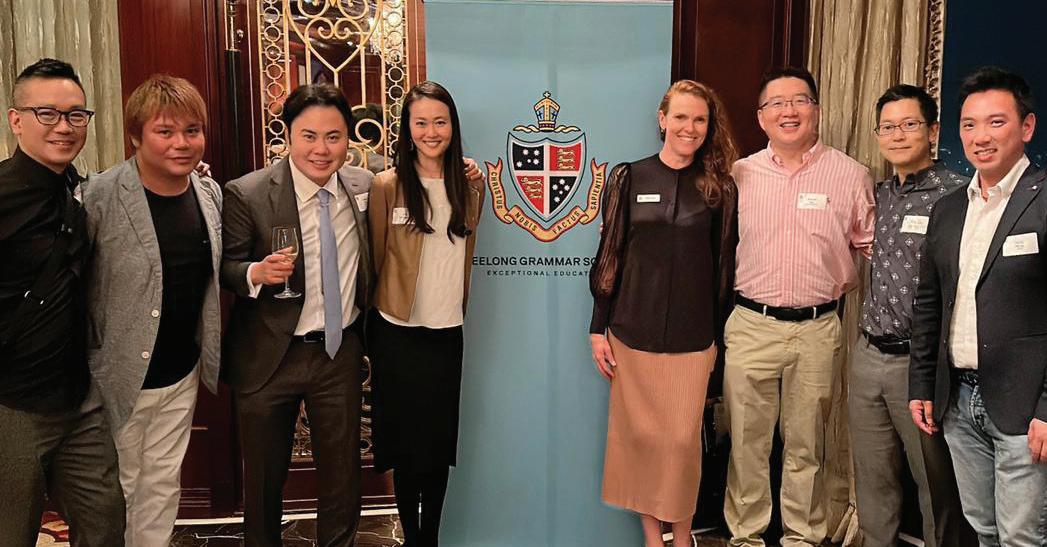
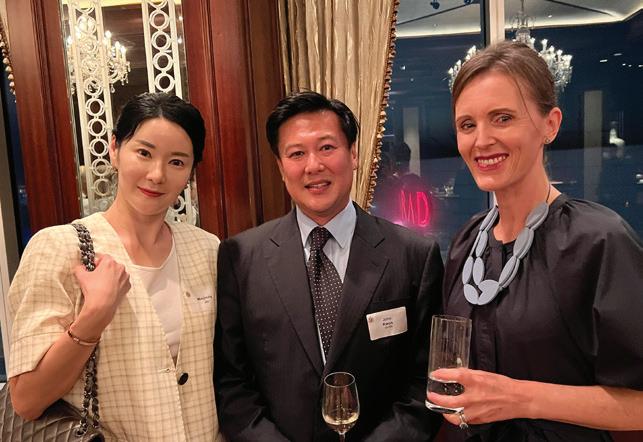


At the Connect in Japan function:
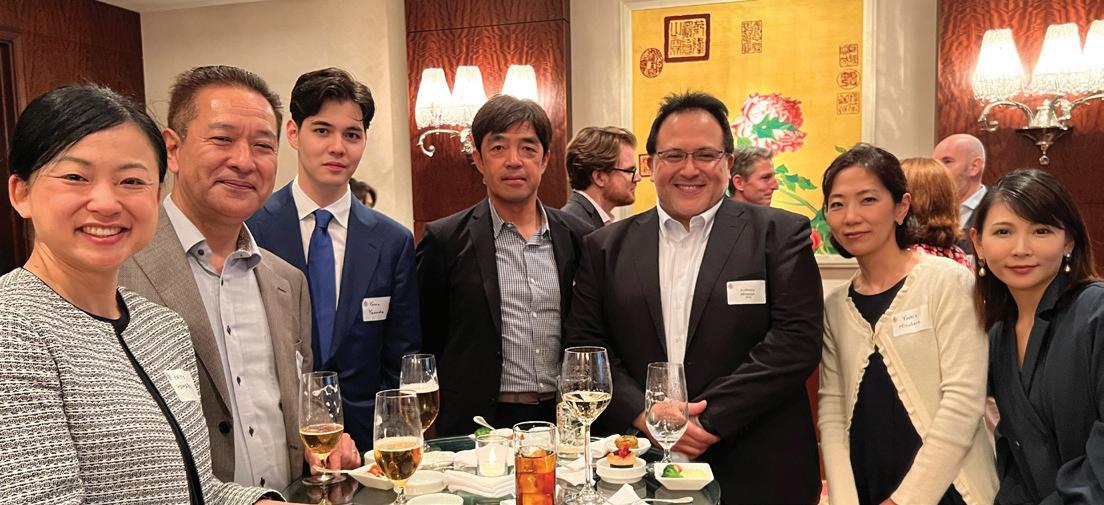

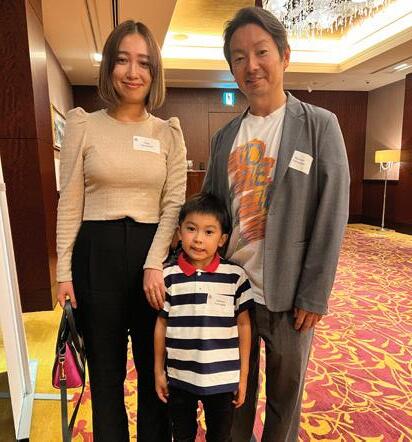
8. Anthony Winston (M’86)
9. Chris McNamara, Vice Principal, and Anthony Winston (M’86)
10. Yuki Yamagata, Shimon Yamagata and Bumpei Yamagata
11. Yukari Ohara and Tsugumu Suematsu
12. Louis Lee (Cu’98), Kate Ishizuka (Ga’99) and Erika Yamauchi (He’99)
13. Kazunari Fukuda (FB’95), Anthony Winston (M’86) and Nae Wakamatsu
14. Tekeshi Asano, Sho Yamada, Yoshinori Ohara and Kentaro Matsui
LIGHT BLUE - GEELONG GRAMMAR SCHOOL 63 OGG EVENTS
10 9 6 2 1 4 3 18 5 7 8 13 12 11 14
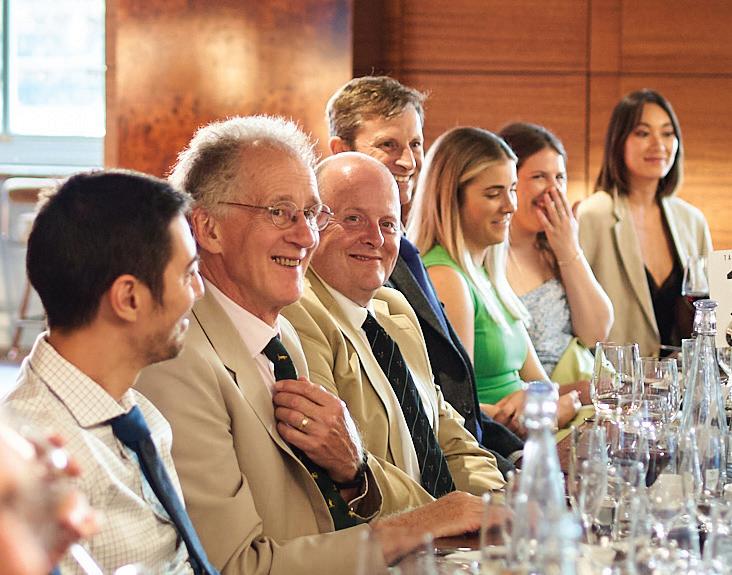
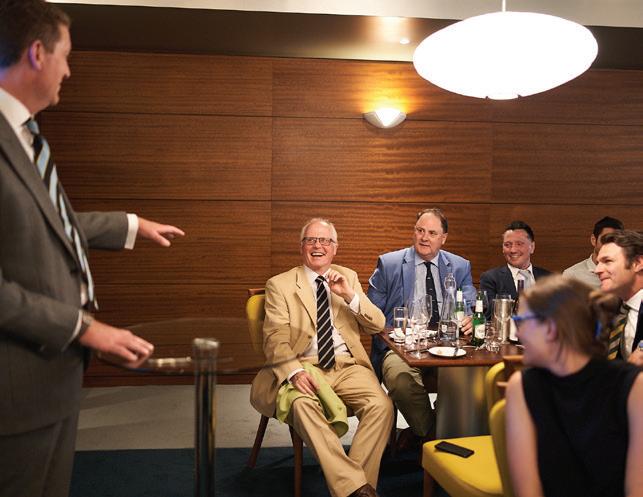
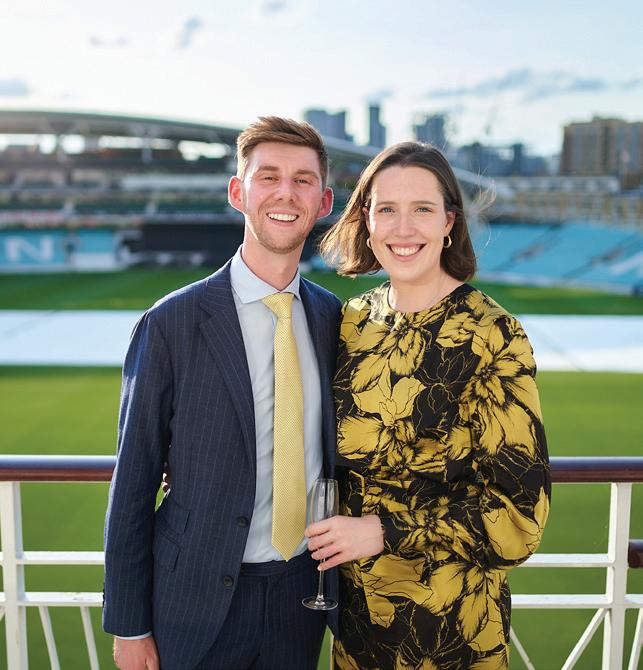
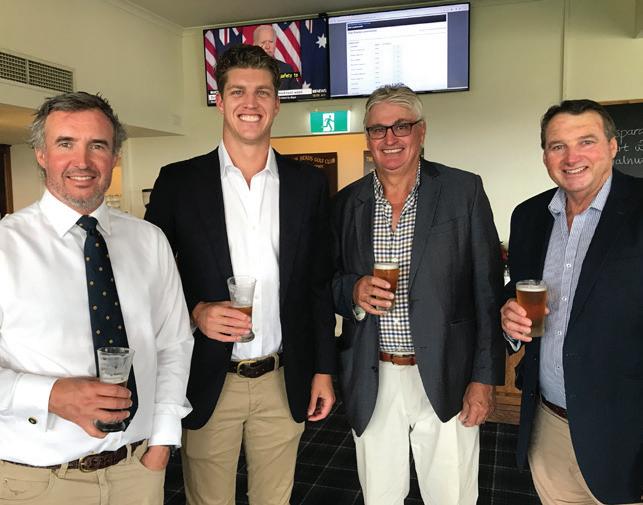
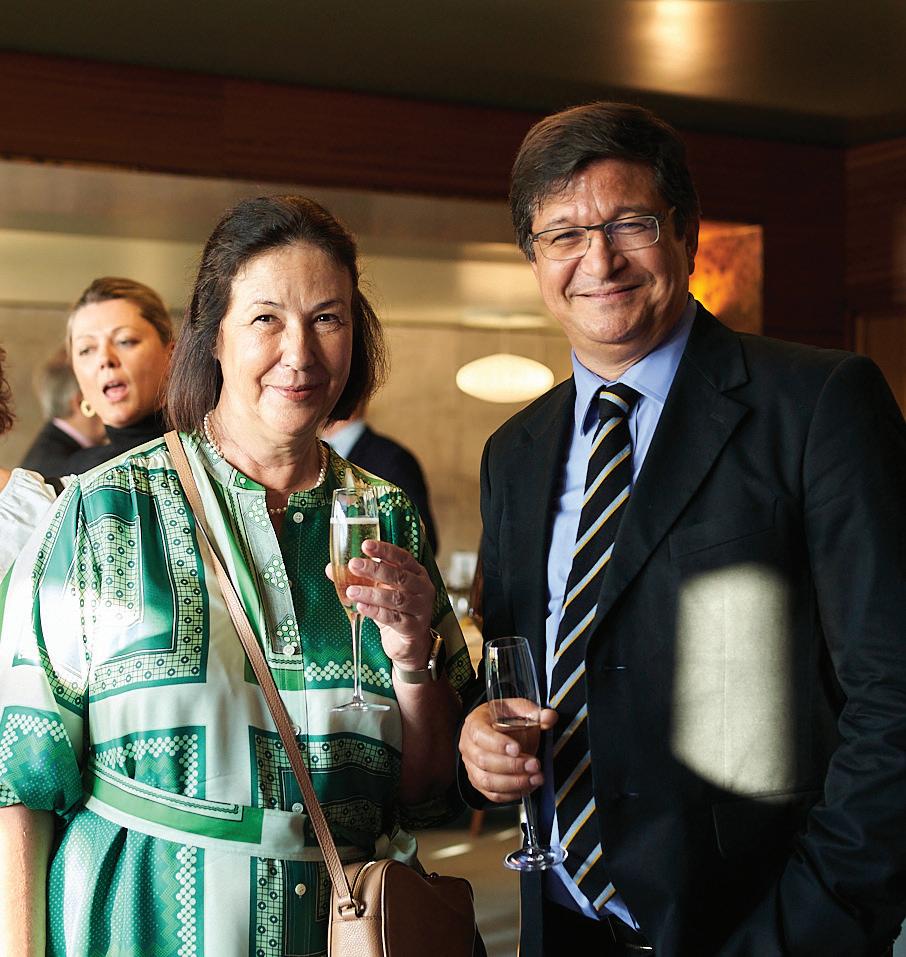
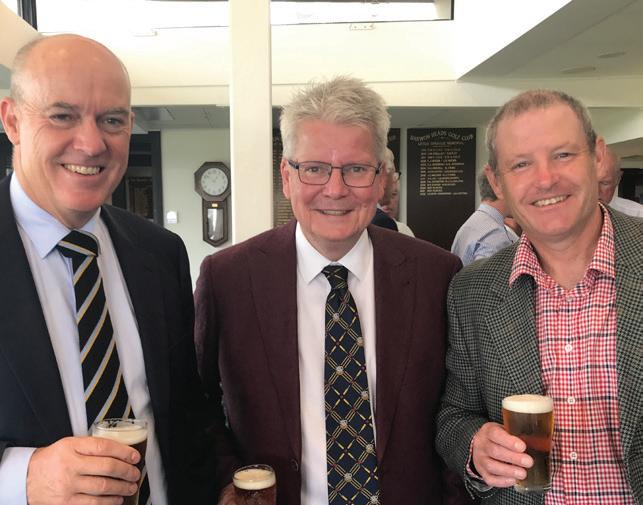



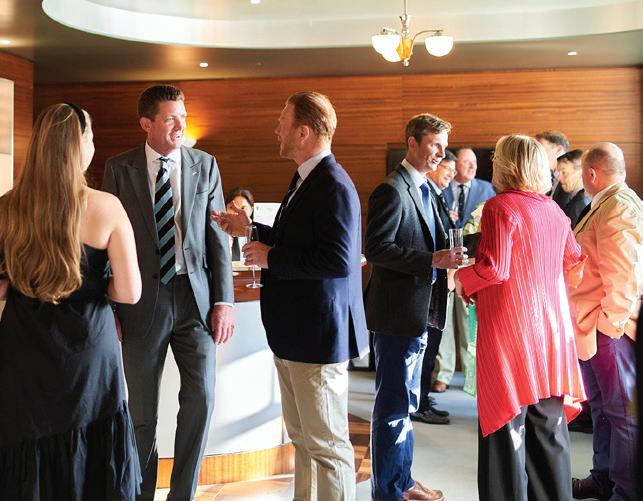
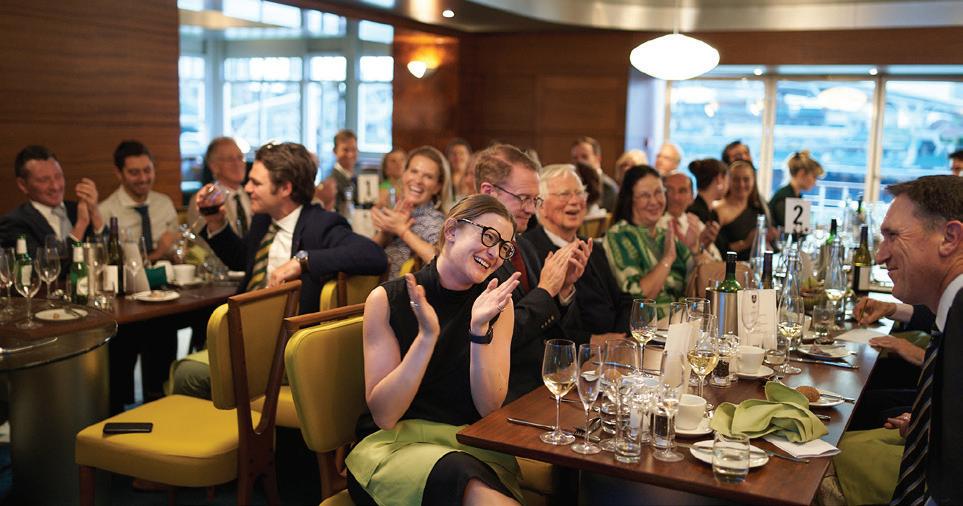

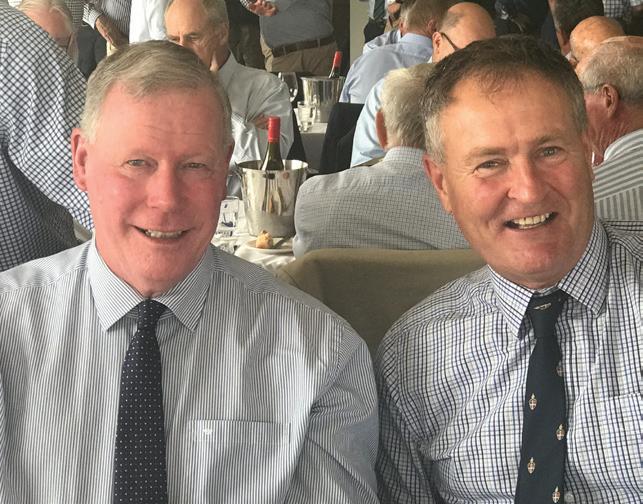

LIGHT BLUE - GEELONG GRAMMAR SCHOOL 64 1 2 3 4 5 7 6 10 9 8 11 12
At the OGG London Dinner:
1. James Sutherland (P’82) and James Earl (M’96)
2. David Hudson (Ge’68), Michael Voss (FB’78) and Jun Tazawa (Cu’96)
3. Andrew Brown (B’57) and Chris Wade (Fr’87)
4. Petille von Bibra (Je’82) and Nik Yeo (P’81)
5. Lachlan MacDonald (M’14) and Clare Steele
6. Natalie Kaye (He’16) and Ben Hebbard (EM’16)
7. Cath Stewart (Cl’00) and Will Mawby (Cu’97)
At the OGG vs OGC Golf Day:
8. Lachlan Stevens (M’96), Angus Macdonald (FB’07), Hugh Macdonald (FB’77) and Ian J Whiting (OGC)
9. Jonathan Goh (M’94) and Jason Stringer (A’94)
10. Duncan Scudamore (P’84), Rob Perry (A’83) and Patrick Stock (Cu’84)
11. Sam Carty (Cu’65), John Simson (Cu’73), John Embling (Cu’63) and Tony Carty (Cu’60)
OGG EVENTS
12. Boyd Carter (Cu’72) and Sam Hayward (FB’76)
2018 5 Year Reunion

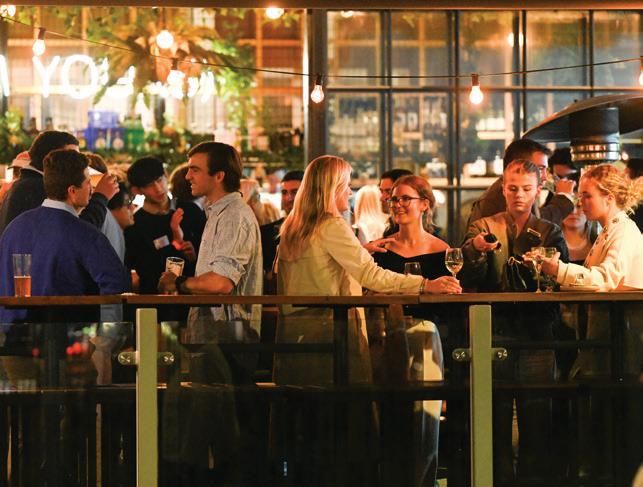
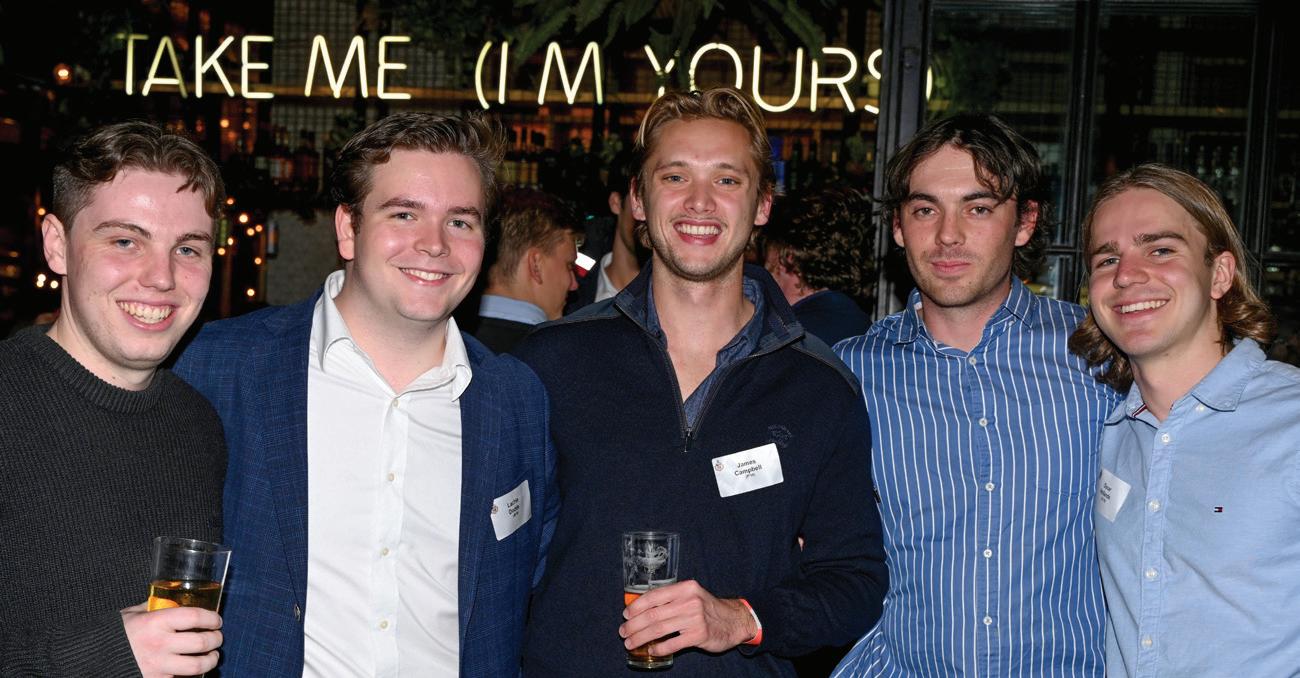

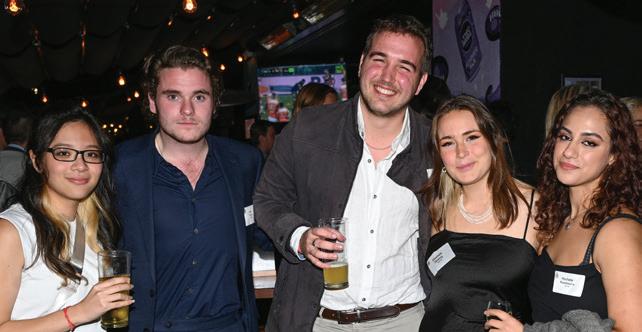
1. William Tang (FB’18), Tae Yeong Kim (A’18), Charles McGrath (Timbertop ‘15), Cecilia Nie (Cl’18), Andrew Zhang (FB’18) and Georgia O’Brien (He’18)
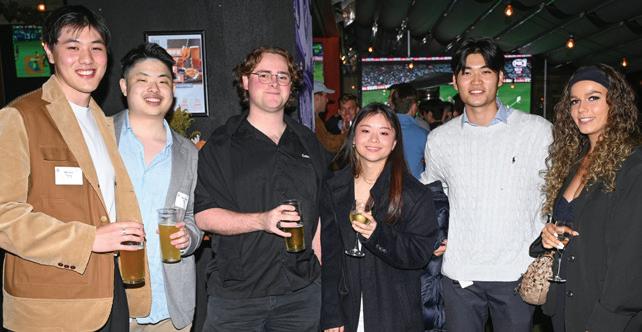
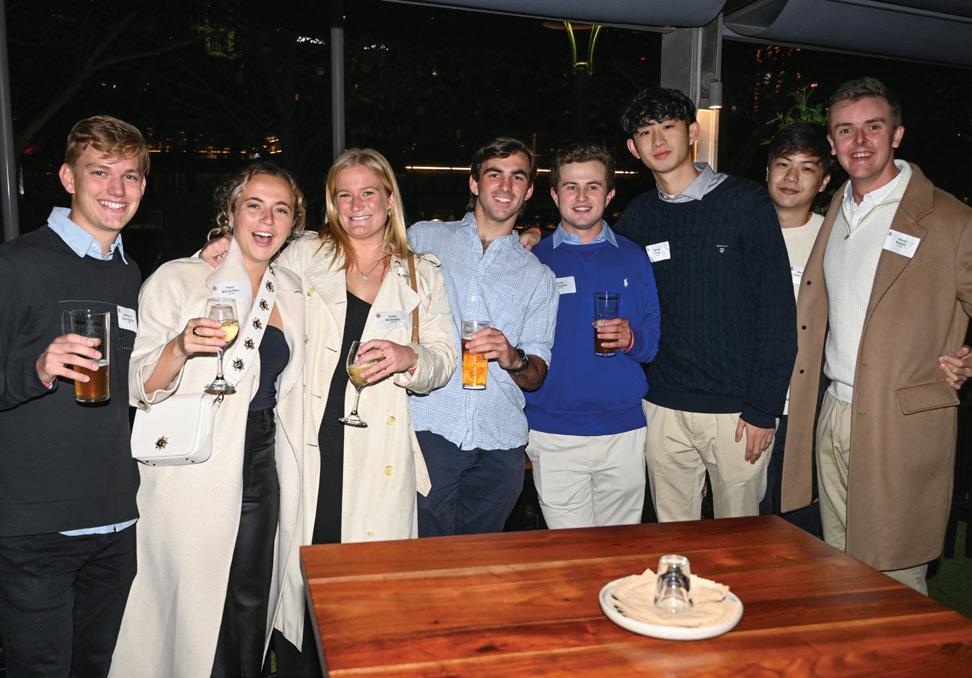
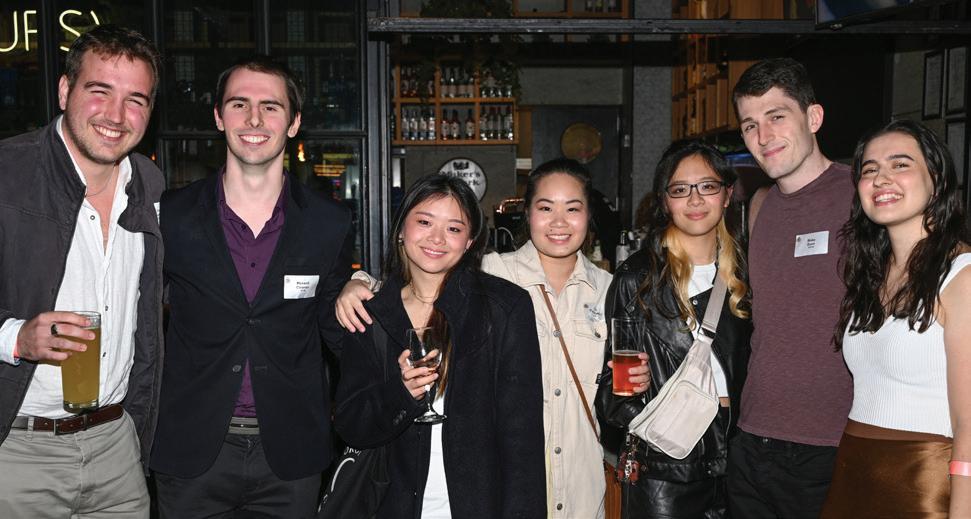
2. Daisy Stewart (Ga’18), Jae Glover (M’18), Zane Al Obedy (FB’18) and Willa Porges (Timbertop ‘15)
3. Hei Kam (EM’18), Huw Talbot (FB’18), Isaac Masterman (Timbertop ‘15), Elizabeth Dewing (Ga’18) and Rachelle Koumouris (Fr’18)
4. Jeffrey Zhou (Cu’18), Anson Ni (P’18), Harry Jiang (Cu’18) and Alex Zhang (FB’18)
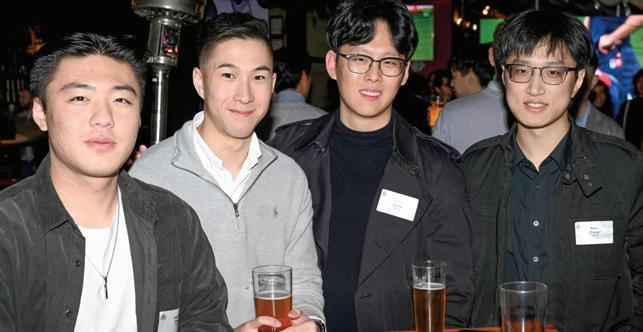
5. Laurence Andrews (Fr’18), Lachie Dodds (M’18), James Campbell (P’18), Charlie Luxton (Cu’18), and Oscar Hollands (Cu’18)
6. Francesca Blundell (Ga’18), Olivia Job (Ga’18), Helena Karytinos (Ga’18), Charlotte Ritter (Ga’18) and Jock Mitchell (FB’18)
7. Harrison Cunningham (P’18), Fleur McLachlan (Cl’18), Chloe McGregor (Cl’18), Bailey Austin (M’18), Hector Mackenzie (P’18), Daniel Cheng (M’18), Kaowton Laoprapassorn (P’18) and Henry Waters (P’18)

8. Indi Kebbell (Cl’18), Tom Kebbell (Cu’18), Ned Hellier (M’18), Lauren Jensen (EM’18), Tori Arter (He’18), Hugh Burleigh (Cu’18), Tex MacIntosh (M’18) and Harry Walker (Cu’18)
9. Charlotte Brady (Ga’18), Lauren Jensen (EM’18), Tori Arter (He’18), Oscar Hollands (Cu’18) and Theo Ong (Cu’18)
10. Isaac Masterman (Timbertop ‘15), Maxwell Cloonan (A’18), Cecilia Nie (Cl’18), Bambi Thatphithakkul (Cl’18), Hei Kam (EM’18), Blake Dunn (FB’18) and Ally Routley (A’18)

LIGHT BLUE - GEELONG GRAMMAR SCHOOL ↓ SECTION 0 4 — MAILROOM 65
4
HOGA
1. From left: Belinda Blake (The Hermitage ‘68), Jen Stewart (Speirs, The Hermitage ‘68), Felicity Hocking (Waterman, The Hermitage ‘67), Sally Horne (Jaques, The Hermitage ‘68), Judy Delalande (Bent, The Hermitage ‘68), Merryn Pane (Harrod, The Hermitage ‘67), Diane Wolff (The Hermitage ‘68), Pauline Greaves (Harvey, The Hermitage ‘68), Prue Rees (Hortin, The Hermitage ‘67), Nova Urquhart (Ince, The Hermitage ‘67), Gillian Spittle (Culhane, The Hermitage ‘67), Di Ross-Harris (Harris, The Hermitage ‘68) and Naida Hutton (Glen, The Hermitage ‘68)

2. From left: Jen Stewart (Speirs, The Hermitage ‘68), Jill Nicholls (Holmes, The Hermitage ‘68), Di Ross-Harris (Harris, The Hermitage ‘68), Belinda Blake (The Hermitage ‘68), Rosemary Brennan (The Hermitage ‘68) and Deidre Griffiths (The Hermitage ‘68)
3. From left: Valerie Anderson (McQualter, The Hermitage ‘47), Lyn Mulligan OAM (Bleakley, The Hermitage ‘49), Jane Caldwell (Newman, The Hermitage ‘52), Beverley Foster (Smith, The Hermitage ‘52), Irma Macauley (Skelton, The Hermitage ‘46) and Nancy Cole (The Hermitage ‘47)
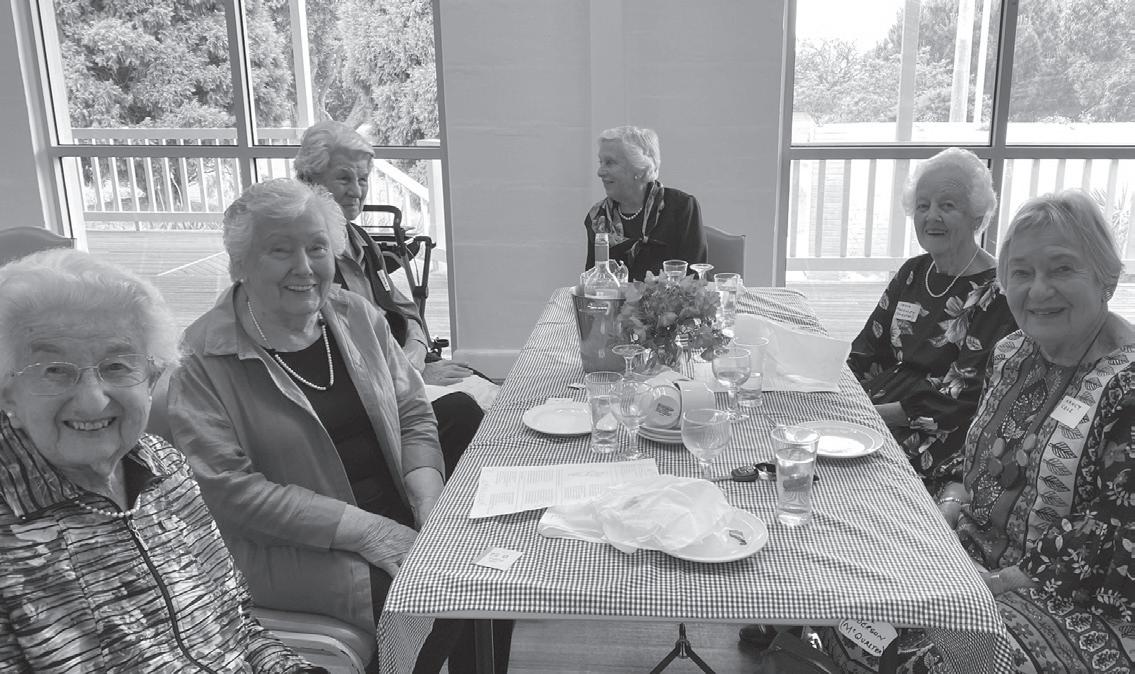
CHRISTMAS LUNCH
HOGA once again held a very enjoyable Christmas Lunch at All Saints Hall in Newtown. Unfortunately, this year we didn’t have Bostock House students to entertain us. All was not lost as we had our very own Pauline Greaves (Harvey, The Hermitage ’68) playing the ukulele, ably assisted by Faye MacLean (Balharrie, The Hermitage ’63) as the choir master! We had fun singing a number of lovely carols. As usual the food supplied by Susie Donald (The Hermitage ’75) was delicious and so with a wonderful buzz of friendship, a very enjoyable day was had by all.
UPCOMING EVENTS
Unfortunately, we were unable to hold our usual Autumn Lunch in Melbourne this year, but we are hopeful we may be able to hold it again in 2024. After the success of last year’s Casual Lunch at the Grovedale Hotel, we are planning to hold this event once again. We are also looking forward to seeing many ladies at our Annual General Meeting (AGM) and Luncheon at Geelong Grammar School on 2 September. The HOGA Golf Day will be held at the Barwon Heads Golf Club on Monday 25 September. We are also organising a walking tour of the Geelong Botanical Gardens on October 12, starting at 11.00am, followed by lunch. Invitations for these events will be sent out shortly.
REUNIONS
We are thrilled that several ladies have been proactive and started organizing their peer year reunions for next year. The 1964 Reunion has been scheduled for Saturday 16 November 2024, so please keep this date free. If you know of any changes of names or addresses of ladies from the 1964 year group, please notify Marie Jordan (Hill, The Hermitage ’63) on 0408 553 927 or Sue Rickarby (Parramore, The Hermitage ’63) on 0421 998 425.
The 1965 ladies are already making plans for their 60-year reunion in 2025. The date has been set for Wednesday 19 March 2025, so there is no excuse not to be free for this reunion with so much notice. Once again, if you know of anyone from the 1965 year group who may have changed name or address, please contact Ann Andrew (Gooch, The Hermitage ’65) via email at ann@ froggully.com.au or on 0439 369 057 or Prue Taylor (Thomson, The Hermitage ’65) on 0417 036 255.
On the subject of reunions, it would be greatly appreciated if anyone from 1953, 1963, 1973 or the 1980s who is willing to organise a reunion for their year group could please contact Jill Nicholls via email at hermitagegirls@gmail.com. Year lists with contact details can be sent to you. We look forward to hearing from you.
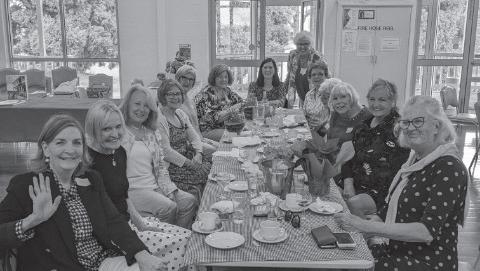
HOGA ARCHIVES
You may remember Margaret Daly (Bland, The Hermitage ’45), who was a student from 1939-45 and then came back to The Hermitage as a P.E. Teacher. Margaret has very kindly donated her diary to the HOGA Archives. While visiting Adelaide recently, Jill Nicholls (Holmes, The Hermitage ’68) caught up with her for afternoon tea. Margaret, who celebrated her 95th birthday in February, had gone to a lot of trouble and had her table filled with memorabilia, including a cup she had won at school. She has always kept scrap books and diaries, something we could all learn from, as it really tells the story of a person’s life.
THANKS TO KATIE RAFFERTY
We recently said goodbye to the School’s Alumni Manager, Katie Rafferty (Spry, Ga’84), who has been an absolutely amazing source of knowledge, guidance and support for our HOGA Committee through the past 18 years. We will certainly miss Katie’s professionalism and her wonderful personality.
LIGHT BLUE - GEELONG GRAMMAR SCHOOL ↓ SECTION 0 4 — MAILROOM 66
3 2 1
COGA
1. Roo Rawlins (Hornabrook, Clyde ’59), Mandy Snaddon (White, Clyde ’67), Kate Robinson (Richardson, Clyde ’75) and Sandy Taylor (Dalrymple, Cl’76) at the Women’s Inter-School Golf Challenge Cup
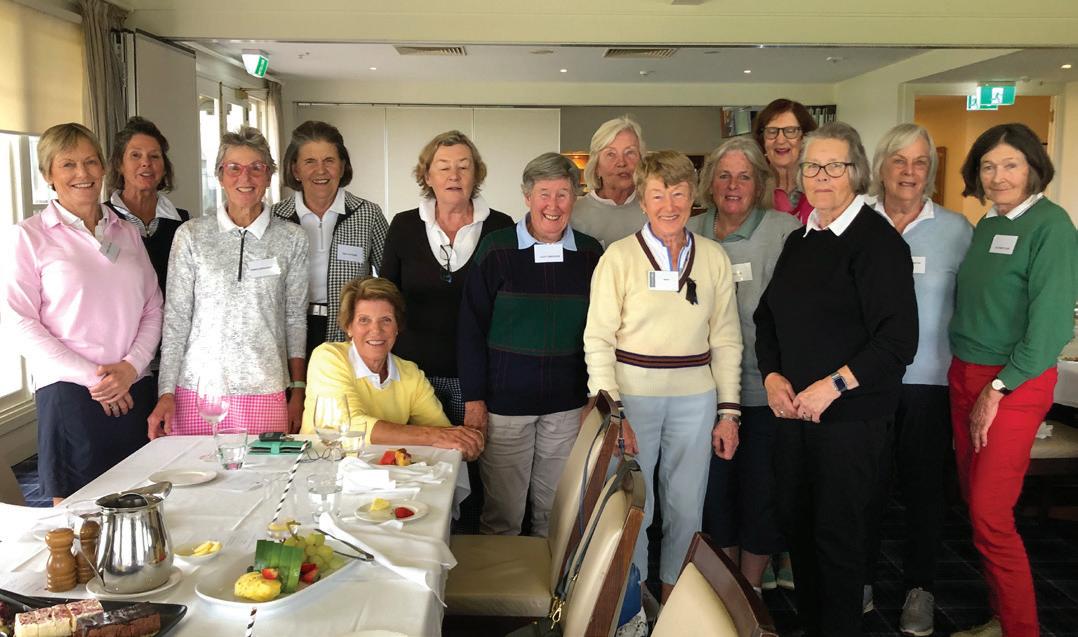
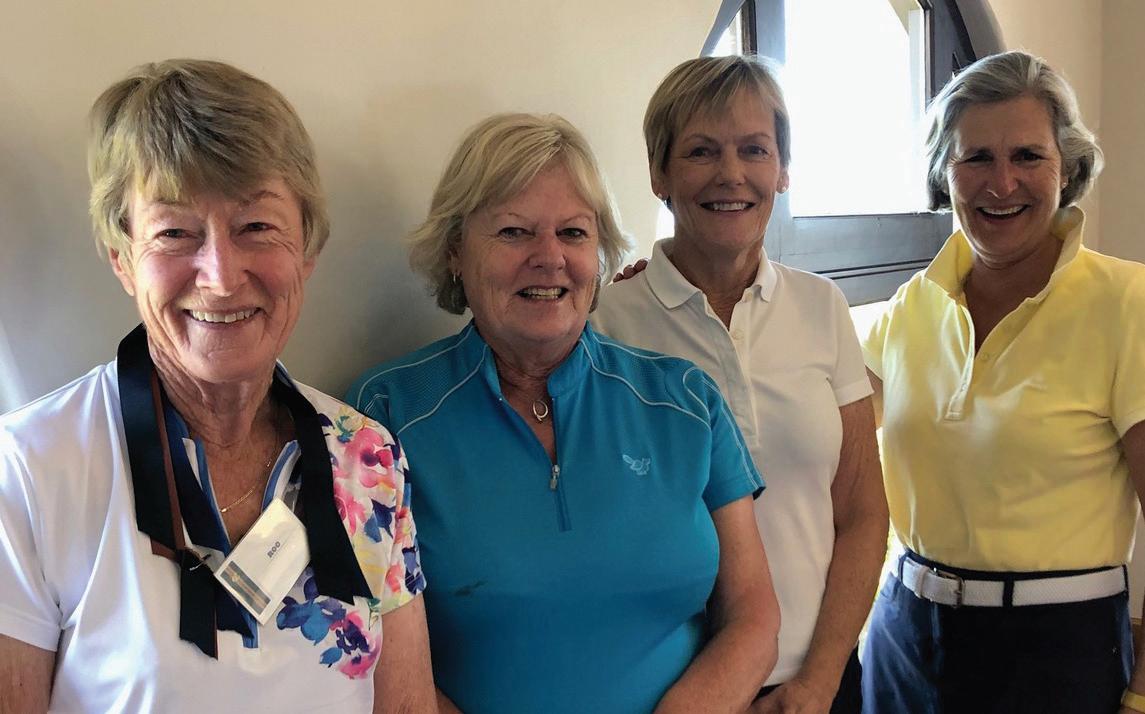
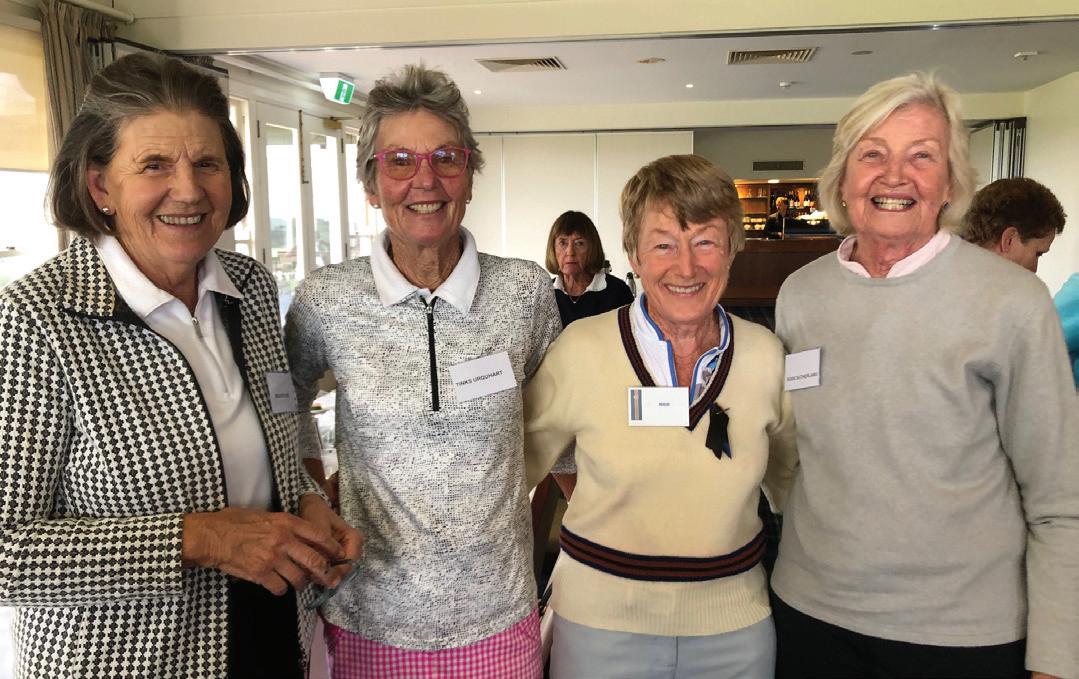
2. Sandy Taylor (Dalrymple, Cl’76), Deb Middleton (Noall, Clyde ’71), Tinks Urquhart (Austin, Clyde ’71), Eda Ritchie (Beggs, Clyde ’59), Gillie Holyman (Clyde ’71), Judy Emerson (Shaw, Clyde ’57), Susie Sutherland (Finlay, Clyde ’59), Roo Rawlins (Hornabrook, Clyde ’59), Anna Tucker (Kimpton, Clyde ’71), Rachel Hawker (Clyde ’69), Ros Bromell (Gardner, Clyde ’59), Lesley Griffin (Vincent, Clyde ’60), Jo Armytage (Barr Smith, Clyde ’69) and Janet Coombes (Dalrymple, Clyde ’67) at the Fun Cup at Barwon Heads
3. Eda Ritchie (Beggs, Clyde ’59), Tinks Urquhart (Austin, Clyde ’71), Roo Rawlins (Hornabrook, Clyde ’59) and Susie Sutherland (Finlay, Clyde ’59) recorded Clyde’s four best scores at the Fun Cup
REUNIONS
A group of 1959 leavers met for a birthday lunch in South Melbourne in May, organised by Annie Hamilton (Coy, Clyde ’59). The class of 1963 enjoyed a 60-year reunion lunch at the home of Sue Richardson’s (Hawkes, Clyde ’63) son Hamish and daughterin-law Kirsty Tostevin in East Malvern. Organised by Sue and Di Whittakers (Moore, Clyde ’63), thirteen classmates (of an original 26) gathered for delicious sandwiches, pastries, cakes and plenty of news exchanged. They were delighted to welcome Bronwyn Willis (Kirton, Clyde’63) who was visiting Australia from Albuquerque, New Mexico, but saddened to miss Sue Smith (Irving, Clyde ’63) and their 1963 school captain Sheila Little (Vincent, Clyde ’63) who died recently (see obituary on page 54). Sheila’s daughter Skye wrote a touching letter saying how much her mother would have loved to be there. Prue Plowman (Manifold, Clyde ’63) handed out aprons printed with an image of the Clyde School tower, and all attending agreed that they should not wait 10 years for their next happy reunion.
GOLF
Clyde finished in fifth place at the 94th annual Women’s Inter-School Golf Challenge Cup at Yarra Yarra Golf Club in March. 120 players from 30 schools teed off in a shotgun stableford event. Roo Rawlins (Hornabrook, Clyde ’59), Mandy Snaddon (White, Clyde ’67), Kate Robinson (Richardson, Clyde ’75) and Sandy Taylor (Dalrymple, Cl’76) represented Clyde. Genazzano were runaway winners with 137 points, ahead of Toorak College on 123, Korowa and St Leonards tied on 122, and Clyde on 121.
Clyde finished in third place at the Fun Cup at Barwon Heads Golf Club in April. More than 50 players from Clyde, St Catherine’s and Toorak College participated in the annual event, which began with a meal the night before at the BeachHouse in Barwon Heads to help settle the nerves. The top four scores from each school were counted in a shotgun stableford format, with Toorak College winning with 147 points, ahead of St Catherine’s on 138 and Clyde on 135. Our four best scores belonged to Roo Rawlins, Tinks Urquhart (Austin, Clyde ’71), Eda Ritchie (Beggs, Clyde ’59) and Susie Sutherland (Finlay, Clyde ’59).
COGA AGM AND OLD GIRLS’ LUNCH
The COGA AGM and annual Old Girls’ Lunch will be held at Royal South Yarra Lawn Tennis Club on Sunday 22 October. An invitation and reply form will be posted out with The Cluthan in early September. Our guest speaker is Julia Ponder (Clyde ’69), who has finally realised her dream of living and working in Paris. There will also be a brief presentation by Healing and Hope representatives, Tanya Bishop (Hegarty, A’79) and Kate Parsons (GGS Staff 1988-2020). Tanya and Kate will explain the purpose and services of this important initiative, which is part of the School’s response to the impacts of the Royal Commission, in recognition of the trauma suffered by some members of the wider GGS community, including Clyde families.
THANKS TO KATIE RAFFERTY
On behalf of all Clyde Old Girls, the COGA Committee extends sincere thanks to Katie Rafferty (Spry, Ga’84), who recently retired as Alumni Manager and Honorary OGG Secretary. Katie has been a pillar of support and dedication to the OGGs, including COGA, HOGA and former Glamorgan students, for nearly two decades. Her compassion, efficiency, wisdom and warm friendship have been an important part of our relationship with GGS, ensuring that COGA has been included in the life of the School and alumni community.
LIGHT BLUE - GEELONG GRAMMAR SCHOOL ↓ SECTION 0 4 — MAILROOM 67
2 1 3
CORIO BOOK CLUB

transport us from the Tsar’s Russia to every corner of the world.”
The Yencken family is extensively connected to Geelong Grammar School, beginning with Walter Yencken (M’16), who was admitted as a boarder in 1912. His nephew, David Yencken (P’58) grew up in Mansfield and was an early Timbertop student, attending in 1955. David later served on the School Council for 12 years and chaired the Timbertop Advisory Committee, making a significant contribution to the upgrading of facilities during this time. He officially opened the new Dining Hall in 1994. Numerous other Yenckens have attended GGS, most recently Oscar Yencken (Cu’17).
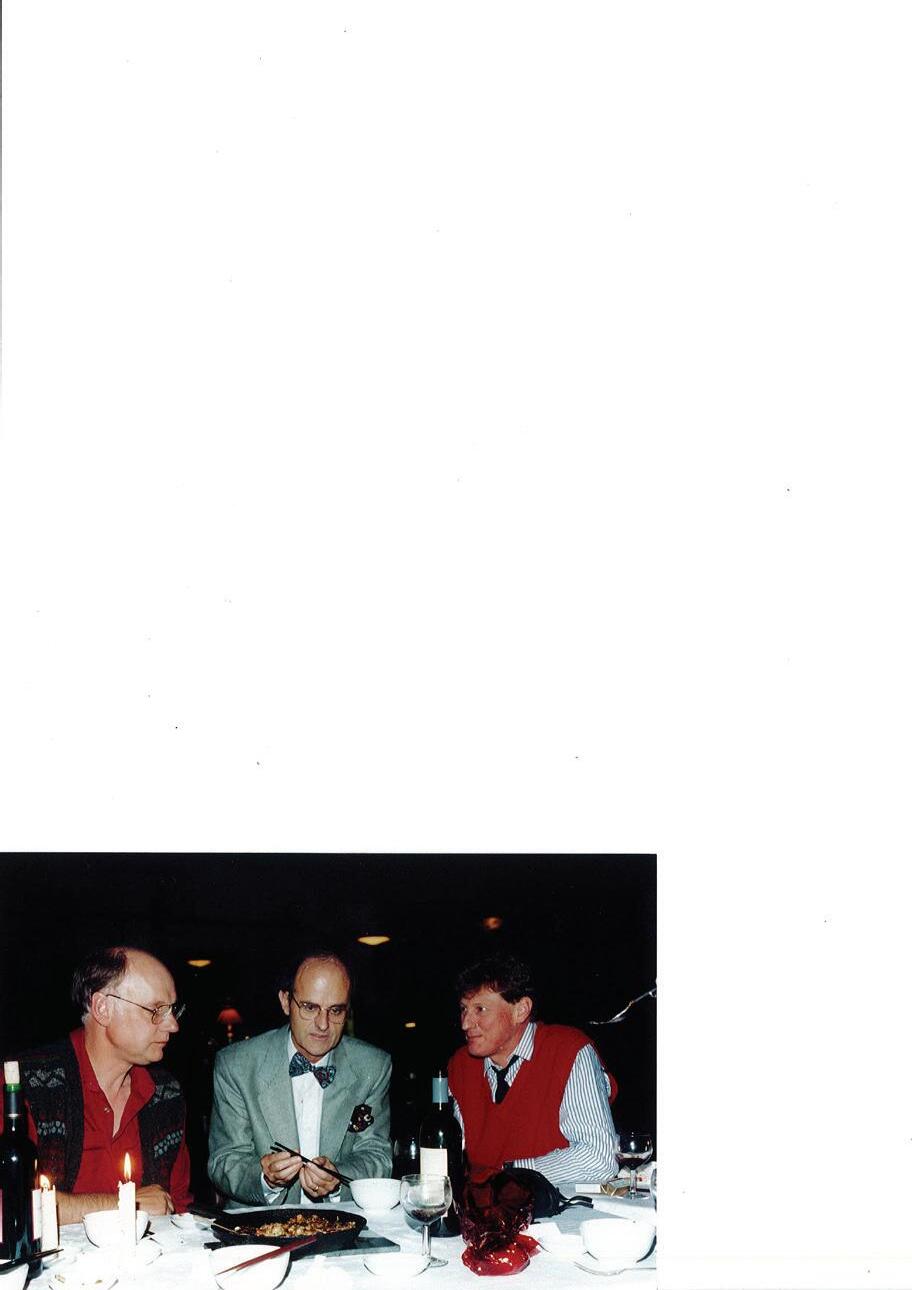
Academic and former Director of Flinders University’s Asia Centre Anton Lucas (FB’64) and anthropologist Dr Graeme McCrae have edited a “splendid collection of essays” titled John Darling: An Australian filmmaker in Bali (Monash University Publishing, 2022). John Darling (P’64) discovered Indonesia in 1969 and fell in love with the culture and spirituality of Bali, where he lived most of his life, creating films that established John as the leading foreign filmmaker depicting the culture and life of Indonesia. “This book provides colourful reading as a vivid portrayal of one who was educated at Corio and embarked on an unusual journey as a poet and filmmaker,” Rev Ron Browning OAM (P’63) said.
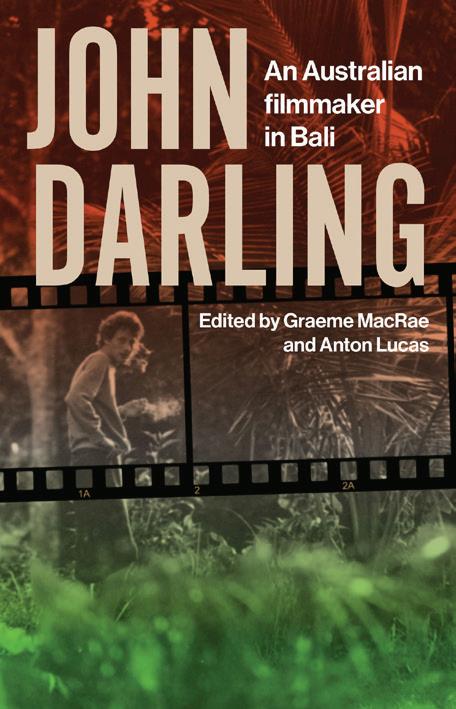
Historian Vicki Steggall (Mendelson, P’74) has spent the past five years, and written 200,000 words in the process, working on a two-volume history of the Yencken family titled The Banolians (Hardie Grant, 2023). This is an extraordinary saga of the Yenckens’ progression from nineteenth century Estonia to London, Calcutta, Sydney, Mainz and eventually Melbourne, where they settled in Prahran in a house named Banole. The family became known as ‘The Banolians’ as a result.

The story starts with the love affair between Estonian baroness, Amalie Christine, and her doctor, Ferdinand Jencken, and follows their subsequent elopement. Through personal diaries, letters and memoirs, Vicki takes the reader on a journey that encompasses the salons of European nobility, the trenches of the Western Front, student days in Cambridge, perilous sea voyages, and the heady days of marvellous Melbourne. Beautiful colour-tinted photographs bring the narrative to life and provide a glimpse into a lost world.
Fellow historian Andrew Lemon AM, FRHSV (FB’67) has commended the book: “I have read many family histories and sagas. The Banolians is unlike any, except War and Peace perhaps. This is a story on a grand scale, by a witty yet scrupulous historian who has immersed herself in the secrets, successes and travails of an exceptionally talented family spanning two centuries. Their lives and adventures
The youngest of four children and only son of Sir James Darling (Headmaster 1930-61) and wife Margaret, John gained an honours degree in History at ANU and studied British prime minister H.H. Asquith at Oxford before he “stumbled” on Bali. “John was attracted to the soft harmony of nature and culture of Bali,” Ron Browning explained. “His short poems, presented at the end of the book both in English and Indonesian, beautifully depict his sensitivity to what was around him, which enabled him to move into a pathway of creativity in filmmaking.” John co-directed his first documentary, Lempad of Bali, in 1978 about the life of a 116-yearold master artist, I Gusti Nyoman Lempad, which won the Documentary Award at the 1980 Asian Film Festival and was screened by PBS in the USA, the BBC and ABC.
John wrote and directed three one-hour films, Path of the Soul, Between the Mountain and the Sea, and Demons and Deities, about Bali’s history, rites and religious practices. His contribution to the six-part series, Slow Boat from Surabaya, explored the influences of different cultures in south-east Asia and was a ratings hit in the UK. John’s “masterpiece” was the documentary, The Healing of Bali, made in the immediate aftermath of the 2002 Bali bombings, which told the story of six people from Hindu, Muslim and Christian backgrounds, who were all traumatised by the explosions. The Age critic Steven Carroll described the unconventional biography about John’s time in Bali as “a vivid collective portrait of the artistic life, the cultural flow between Australia and Bali, and the times (including the Kuta bombing) that Darling lived through”.
LIGHT BLUE - GEELONG GRAMMAR SCHOOL ↓ SECTION 0 4 — MAILROOM 68
Above (from left): David Lewis (P’64), Anton Lucas (FB’64) and John Darling (P’64) in 1995
AUSTRALIA DAY HONOURS
Colin Bell (Glamorgan ’52), renowned stockbroker, was posthumously awarded a Medal of the Order of Australia (OAM) for ‘service to the financial services sector’. Colin was the founder and former managing director and executive chairman of Bell Financial Group, listed on the ASX since 2007. His agricultural investment was extensive. Through the company Australian Food and Agriculture, Colin and his brothers operated one of Australia’s biggest Merino studs, FS Falkiner and Sons, which encompasses the Boonoke, Wanganella and Peppinella stations near Deniliquin.
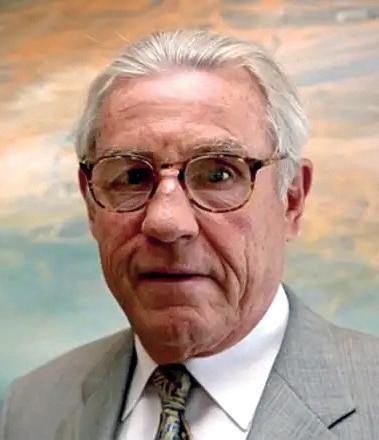
Amanda Elliott (Bayles, Clyde ’69), horse racing ambassador, was made an Officer of the Order or Australia (AO) for ‘distinguished service to the horse racing industry through a range of executive roles, and to the community’. A passionate racehorse owner and breeder, Amanda served on the Victoria Racing Club board for 18 years, including as the first female chairman from 2017–20. During her tenure she oversaw many significant projects, including the building of the world-class Club Stand at Flemington.
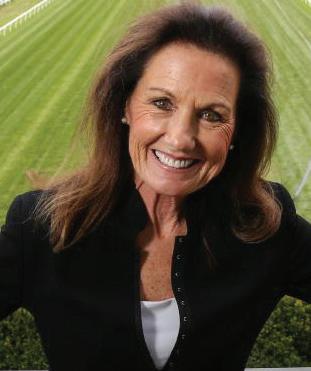
KING’S BIRTHDAY HONOURS
James (Jim) Wilson (Cu’56), cultural historian and environmental activist, was posthumously awarded a Medal of the Order of Australia (OAM) for ‘service to the community through a range of roles’. Jim was the founding member and president of the Camperdown and District Historical Society, a committee member of the Corangamite branch of the National Trust, and a member of more than 30 associated historical societies. Jim was renowned for his eclectic collection of more than 10,000 items of Australiana and rural artefacts, and his advocacy for local environmental issues.
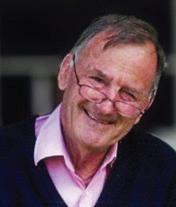
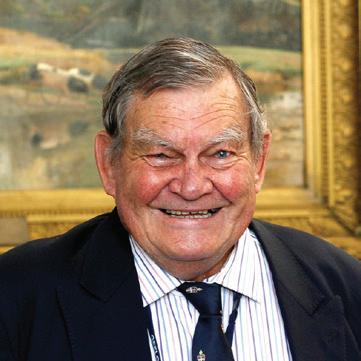
Sandy Mackenzie (FB’59), politician and conservationist, was made a Member of the Order of Australia (AM) for ‘significant service to the people and Parliament of Australia, to education, and to conservation’. After lecturing at Marcus Oldham College, Sandy became founding Principal of Orange Agricultural College in NSW in 1970 before being elected to Federal Parliament as the National Country Party member for Calare in 1975, holding the seat until 1983. He became involved in Landcare at local, State and national level, representing Landcare at the 2018 Prime Minister’s Drought Summit and the 2020 Natural Disasters Royal Commission. He served on the board of the Goulburn Broken Catchment Management Authority (201017), was Executive Director of the Geelong Grammar Foundation (1984-1995) and has been a member of the OGG Committee since 2016, serving as President of the Riverina & NE Victoria Branch.
Professor Glen LiddellMola (P’64), gynaecologist and obstetrician, was made an Officer of the Order of Australia (AO) for ‘distinguished service to obstetrics and gynaecology, to reproductive health research, and to medical education in the Pacific region’. Glen received the GGS Medal for Service to Society in 2018 in recognition of his lifelong dedication to improving women’s reproductive health in Papua New Guinea, which has one of the highest rates of maternal mortality in the world. Glen provides medical care, training, outreach and health clinics across PNG as well as running the busy maternity ward at the Port Moresby General Hospital. He is also the Professor of Obstetrics & Gynaecology and Reproductive Health at the University of Papua New Guinea, where he has trained generations of local doctors, obstetricians, midwives and birth attendants.
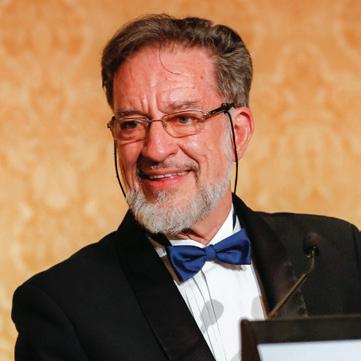
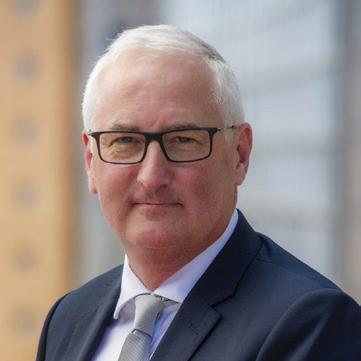
Joanna Horgan (Je’83), entrepreneur, was made a Member of the Order of Australia (AM) for ‘significant service to retail business, and to women in executive roles’. Jo worked in marketing for the world’s largest cosmetics company, L’Oréal, before opening her first Mecca cosmetics store on Toorak Road in 1997 – Mecca now has more than 100 stores across Australia and New Zealand. She was the first woman to be named Australian Entrepreneur of the Year (2018). She has served on the board of the National Gallery of Victoria (NGV) Foundation since 2013 and developed a creative collaboration with the NGV to support women in design. Jo has also collaborated with The Hunger Project and is a governor of the St. George Foundation, which donates to charities that support women and children.
Alan (Jim) Whalley (P’83), air force squadron leader and entrepreneur, was made an Officer of the Order of Australia (AO) for ‘distinguished service to business, particularly the defence capability industry, to the public sector, to aviation history, and to the community’. Jim served in the Royal Australian Air Force from 1984-2012, logging over 4,000 flying hours on more than 40 types of aircraft, from helicopters to F18 fighters. Jim is the co-founder and deputy chair of Nova Systems, one of Australia’s largest privately owned defence professional service providers. He was the inaugural Chief Entrepreneur for South Australia and Chair of the State’s Entrepreneurship Advisory Board (2018-21). He is a former Director of the Adelaide Festival of Arts and has served on the University of South Australia (UniSA) Council since 2018.
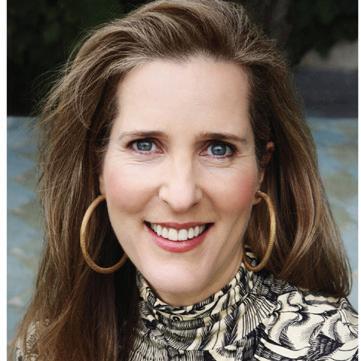
LIGHT BLUE - GEELONG GRAMMAR SCHOOL ↓ SECTION 0 4 — MAILROOM 69
BIRTHS
Celeste Cafra and Rich Austin (M’02), a son, Atlas Domenico, on 4 January 2021.
Emma née Staughton (Cl’05) and Nick Drake, two daughters, Isabella June, on 23 December 2019 and Flora Louise Marian, on 6 March 2022.
Alice and Angus Drysdale (Fr’06), a son, Jack Kenneth, on 1 November 2021
Felicity née Robertson (A’04) and Ned Jeffery, a son, Sebastian Edward, on 23 July 2022.
Daisy Hayward (He’09) and Michael Jordan (Cu’09), a daughter, Lucy Marigold, on 13 November 2022
Alice née Redwood, (Cl’00) and Paul Kempton, a daughter, Matilda Alice, on 7 March 2023
Jasmin Rowe (A’08) and Gareth Lloyd, a daughter, Eve Valerie, and a son, William Roy, on 11 August 2022
Sarah and Jack McPherson (FB’07), a daughter, Edie Jane, on 12 March 2023
Kate née Swan (Fr’03) and Nicholas Morrissey (P’03), a daughter, Alice Cecilia Susan, on 25 June 2022
Olivia née O’Hare (Fr’11) and Tom Rayner, a son, Jones Louis, on 17 June 2023
DEATHS
John Ackroyd (1956-61) on 20 January 2023
Diana Mary Anderson née Pennington (Clyde 1952-55) on 3 November 2021
Colin Geoffrey Armytage Bailey (1939-49) on 28 August 2022
Selwyn John Baker (1938-43) on 26 November 2019
Dennis Alan Belcher (1948-55) on 26 September 2022
Dimity Ann Bellicanta née Bowen (The Hermitage 1965-75, Highton 1976-78) on 23 October 2021
James Graham Benson (1953-58) on 7 May 2023
Patrick Charles Roger Bowling (1953-58) on 8 September 2022
Peter Nevil Ayrey Campbell (1958-66) on 29 April 2022
Heather Cassidy née Harrison (Hermitage 1948-50) on 6 February 2023
Robert Russell Murray Coulton (1998-99) on 27 April 2021
James Hainsworth Dawson (1949-54) on 1 March 2023
Audrey Jane Dickenson (Clyde 1956-60) on 8 May 2020
Maureen Patricia Flint née Chapman (Hermitage 1942-45) on 10 April 2022
Nicholas Austin (Nick) Gatehouse (1954-63) on 18 March 2023
Hugh McLeod (Mac) Gordon (1954-55) on 13 February 2023
Mary Lorne McIntyre Hallam née McBryde (Hermitage 1943-46) on 31 December 2022
Peter John Hardiman (1950-55) on 24 August 2021
Dianne Elizabeth Hume née Higgs (Hermitage 1947-59) on 24 December 2022
Patricia Margaret Hollings née Charlesworth (Hermitage 1939-46) on 14 January 2023
Michael Keith (Mike) Hornabrook (1940-50) on 28 April 2023
Francis George Marland (Frank) Humphreys (1946-48) on 14 June 2021
John A Ince (Staff 1967-1987) on 31 May 2022
John Richard (Richard) Jayasuriya (1969-74) on 29 December 2022
Pamela (Pam) Jelleff née Treyvaud (The Hermitage 1943-46) on 4 December 2022
Michael Thomas Jenkins (1980-82) in November 2020
Peter McKay Keddie (1950-57) on 14 August 2022
Sheila Frances Little née Vincent (Clyde 1954-63) on 19 February 2023
Alistair Ian Kingswell Lloyd AO (1938-51) on 3 February 2023
Peter Marshall Lynch (1950-53) on 26 December 2022
William Bacon (Billy) MacMillan (2000-01) on 10 August 2017
Angus Alan John Macneil (1951-59) on 25 September 2022
Philip John (Phil) Marshall (Staff 1996-2018) on 31 May 2022
Robert Arthur Charles McDonald (1957-62) on 11 March 2023
Margaret Maud McMillan previously Laidlaw née Robinson (Hermitage 1951) on 25 February 2023
Christopher Grant Woodhouse (Chris) Mitchell (1953-64) on 26 November 2022
John Desmond Cuthbertson Carty (Des) Moore (1943-50) on 1 November 2020
Anthony William McKay (Buster) Morse (1951-57) on 23 November 2018
Beresford John Myer (1942-50) on 21 February 2023
Raymond John (Ray) Nelson (1940-47) on 4 April 2023
William Jeffcoat David (David) North (1967-70) on 27 February 2023
Judith Patricia (Judy) O’Brien (Past Staff Highton) on 7 April 2023
Evan John Ould (1971-75) on 21 March 2023
Jennifer Faye (Jenny) Phillips née Harris (Hermitage 1960-62) on 14 April 2023
Lesley Nanette (Nanette) Power née Bartlett (The Hermitage 1934-45) on 26 May 2023
Helen Patricia Reed née Pilbeam (The Hermitage 1946-57) on 13 May 2023
Vera Pauline (Paula) RushbrookeWilliams née Rushbrooke (The Hermitage 1933-45) on 16 March 2023
Janet Viola Race née Russell (Hermitage 1946-50) on 6 December 2022
Helen Virginia (Virginia) Ronaldson née Fisken (Hermitage 1941-43, Clyde 1944-49) on 12 December 2022
Victor Ralph Ruth (1960-62) on 15 December 2022
Jennifer Jane Sellars-Jones née Murch (Hermitage 1945-53) on 17 February 2022
Ian Neville Southey (1936-43) on 12 July 2022
Marcia Elaine Corfield Tanswell née Carroll (Hermitage 1936-41) on 29 July 2022
Richard Henry Tolley (1949-52) on 14 June 2023
Robin John Trinca (1963-75) on 13 April 2021
Richard Gilbert Raleigh (Dick) Weigall (Staff 1955-93) on 5 May 2023
Stuart Damian Wing (1975-77) on 23 July 2021
Richard Arthur (Dick) Woolcott AC (1938-45) on 2 February 2023
MARRIAGES
Annabel Blunden (He’09) married Alex Phillis on 17 December 2022
Rupert Blunden (FB’06) married Joey Hutton on 25 February 2023.
Lawrence Carr (Cu’09) married Katerina Hedgepeth on 6 August 2022
Tom Cohen (M’09) married Georgina O’Halloran on 24 February 2023
Richard McGeachy (A’99, Staff 2000) married Hannah March on 30 September 2022
Emma Staughton (Cl’05) married Nick Drake in March 2023
LIGHT BLUE - GEELONG GRAMMAR SCHOOL ↓ SECTION 0 4 — MAILROOM 70

IN 2023
ENROLMENT EVENTS:
Corio Campus
Discovery Days
- Friday 11 August
- Friday 27 October
OGG EVENTS:


Toorak Campus Open Mornings
- Wednesday 2 August
- Wednesday 6 September
- Wednesday 11 October
OGG Timbertop Morning
Timbertop Campus, Saturday 16 September


































 Paddy Handbury (M’72) Chair of Council
Paddy Handbury (M’72) Chair of Council


















 –
–






 – Rick Wraight (G Unit, 1958)
– Rick Wraight (G Unit, 1958)



























 –
–

























 – Catrina Collins (K Unit, 1982)
– Catrina Collins (K Unit, 1982)


















 – Alisa Nana (J Unit, 1998)
– Alisa Nana (J Unit, 1998)









 – Rachel Dobson (Head of Outdoor Education 2003-05)
– Rachel Dobson (Head of Outdoor Education 2003-05)










 – Coco Hynes (O Unit, 2013)
– Coco Hynes (O Unit, 2013)






























 Est in Nobis.
Rev Gordon Lingard Senior Chaplain
Est in Nobis.
Rev Gordon Lingard Senior Chaplain
























 Henry Melville (captain, Yr12 Cu), Ollie Peake (vice-captain, Yr11 A), Charlie Calvert (Yr11 Cu), Ned Cole (Yr12 P), Felix Guest (Yr11 FB), Jack Headon (Yr11 P), Sam Lalor (Yr11 FB), Josh Lindsay (Yr10 A), George Lithgow (Yr11 M), Marley McCombe (Yr11 A), Wills Moses (Yr12 P), Jake Nichols (Yr12 Cu), Reef Page (Yr12 Fr), Charlie Paton (Yr10 M), Fergus Peddie (Yr11 Cu), Jack Richmond (Yr12 M), Jack Robinson (Yr11 Fr) Coaches: Matt Gunther, Shaun Dean, Charlie McCartin (assistant), Travis Dean (assistant), Jye Hearps (Head of Cricket), Matthew Walsh (team manager)
Henry Melville (captain, Yr12 Cu), Ollie Peake (vice-captain, Yr11 A), Charlie Calvert (Yr11 Cu), Ned Cole (Yr12 P), Felix Guest (Yr11 FB), Jack Headon (Yr11 P), Sam Lalor (Yr11 FB), Josh Lindsay (Yr10 A), George Lithgow (Yr11 M), Marley McCombe (Yr11 A), Wills Moses (Yr12 P), Jake Nichols (Yr12 Cu), Reef Page (Yr12 Fr), Charlie Paton (Yr10 M), Fergus Peddie (Yr11 Cu), Jack Richmond (Yr12 M), Jack Robinson (Yr11 Fr) Coaches: Matt Gunther, Shaun Dean, Charlie McCartin (assistant), Travis Dean (assistant), Jye Hearps (Head of Cricket), Matthew Walsh (team manager)

















 The Rev’d Dr J. Hugh Kempster Head of Philosophy and Religious Studies
The Rev’d Dr J. Hugh Kempster Head of Philosophy and Religious Studies










 Zoe Naylor (Yr12 Cl) and Charlie Doggett (Yr11 FB) in the Year 12 VCE Theatre Studies performance of Orpheus Back in The Bracebridge Wilson Studio in Term 1.
Zoe Naylor (Yr12 Cl) and Charlie Doggett (Yr11 FB) in the Year 12 VCE Theatre Studies performance of Orpheus Back in The Bracebridge Wilson Studio in Term 1.
















































































































































